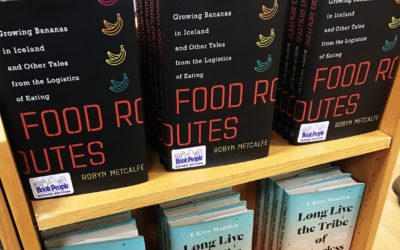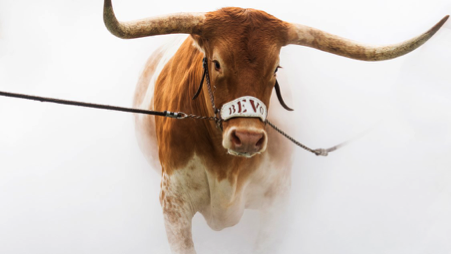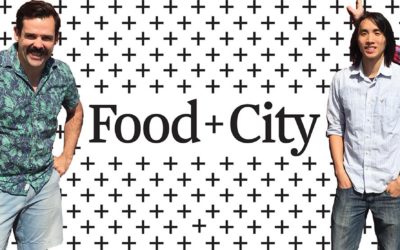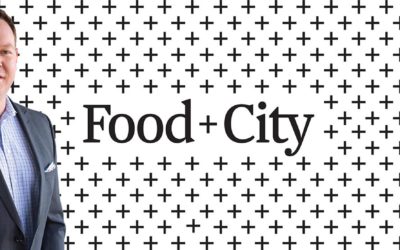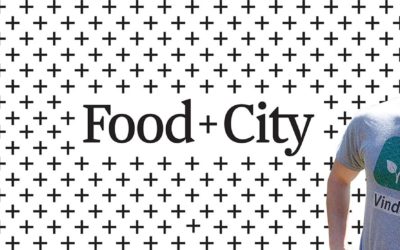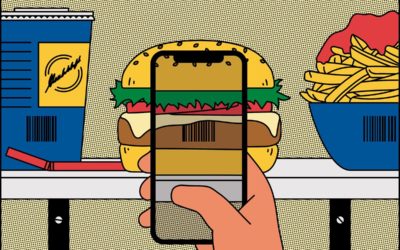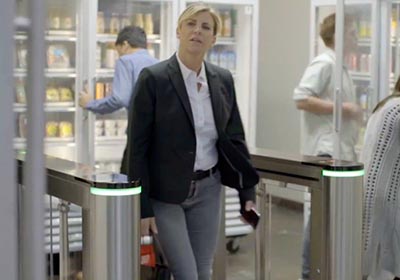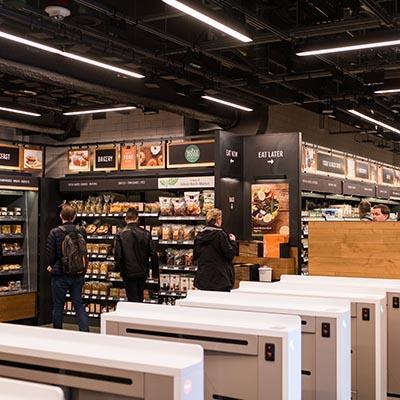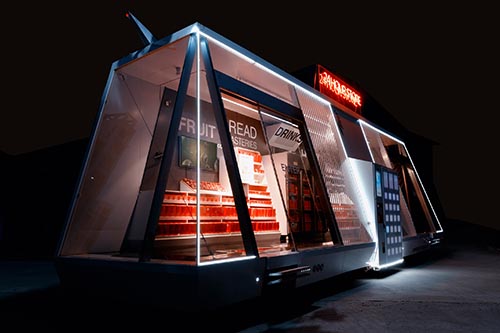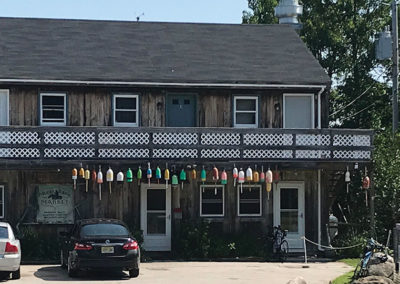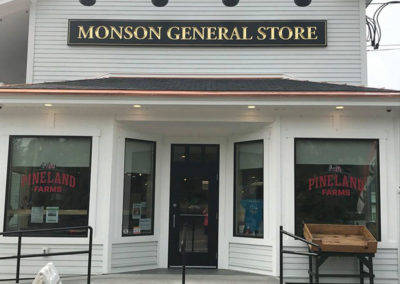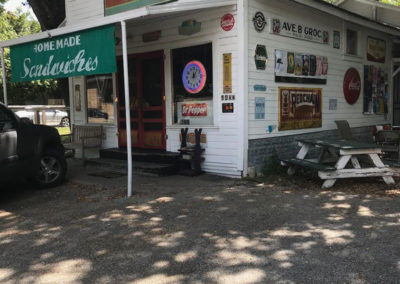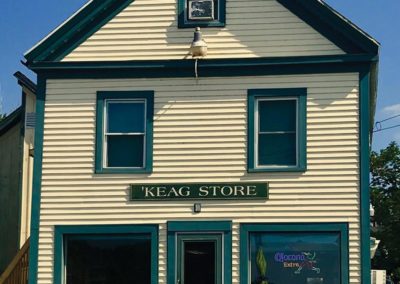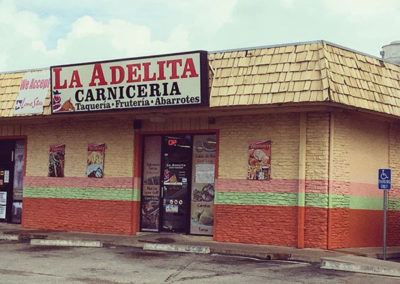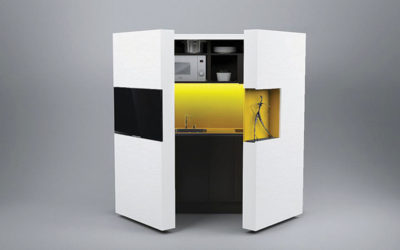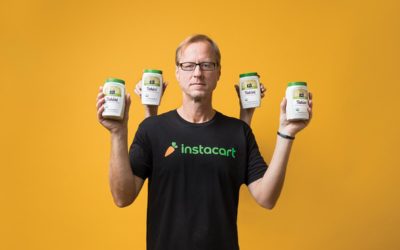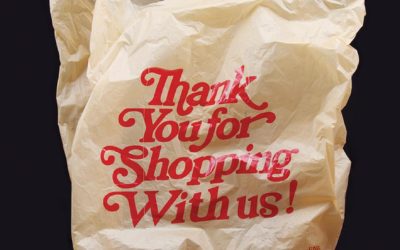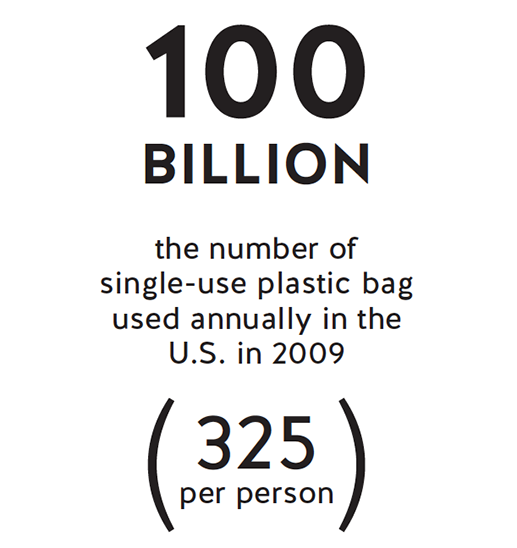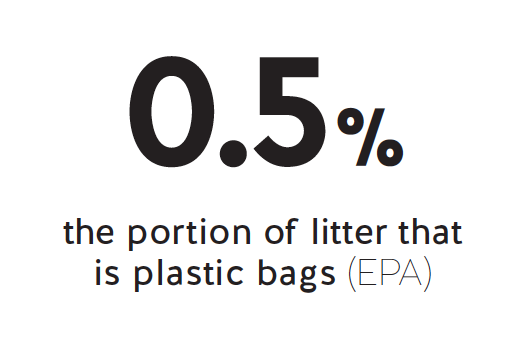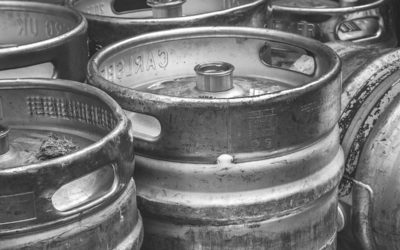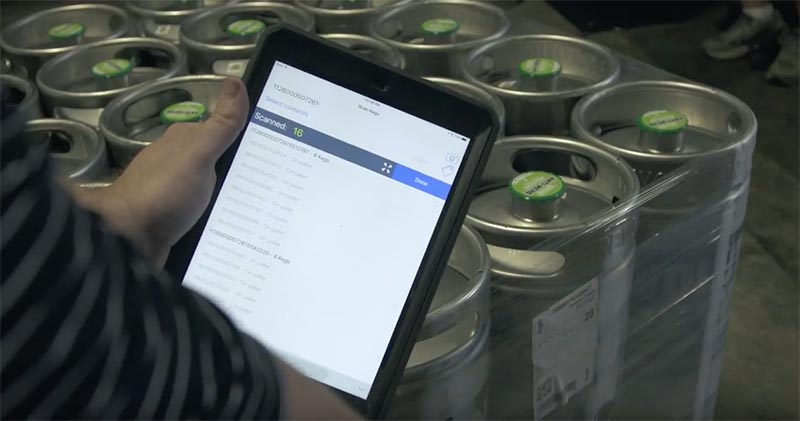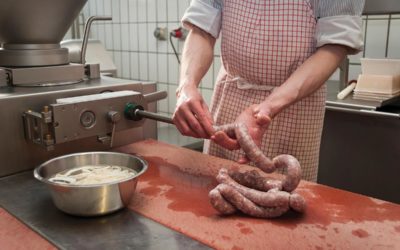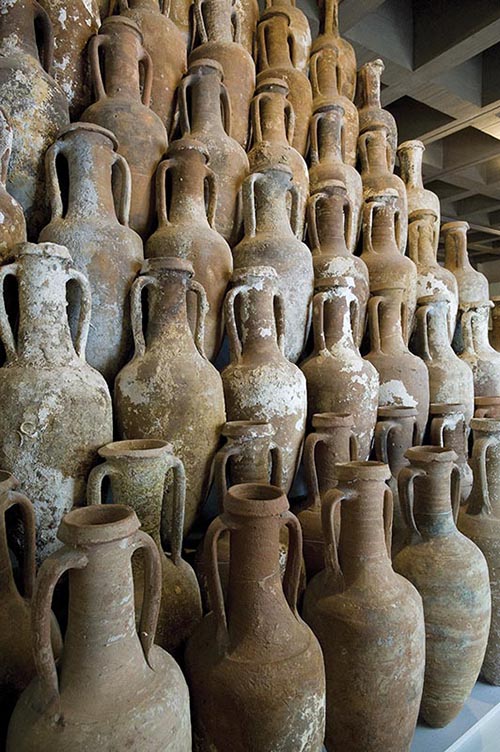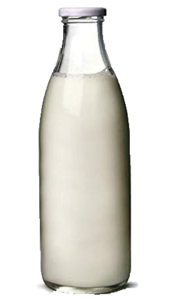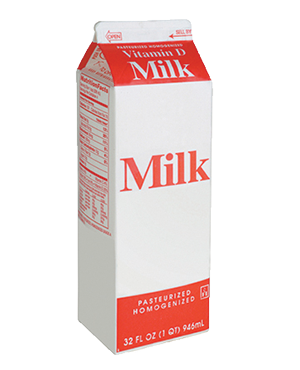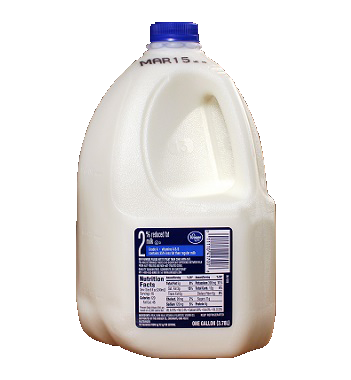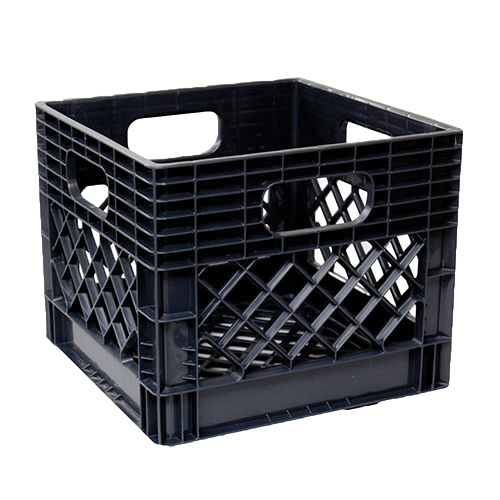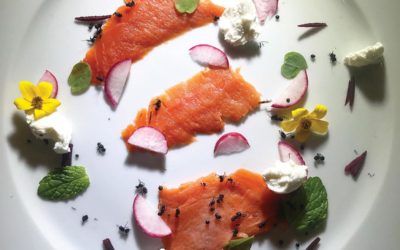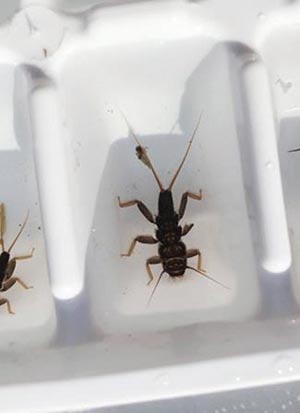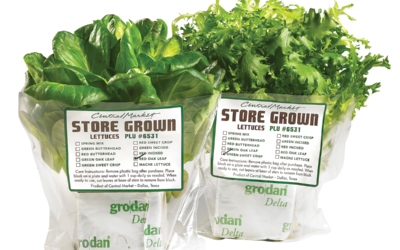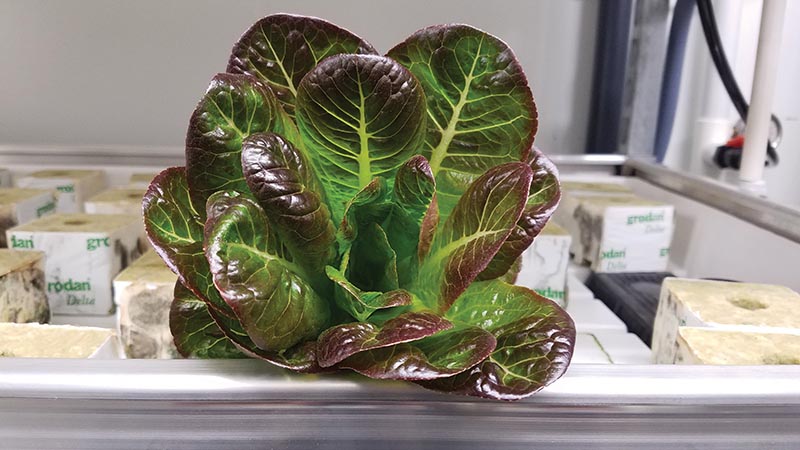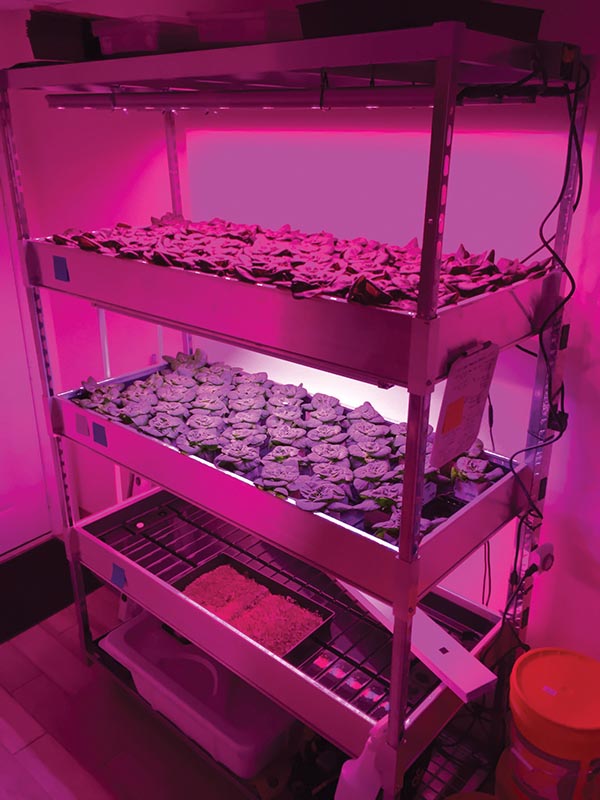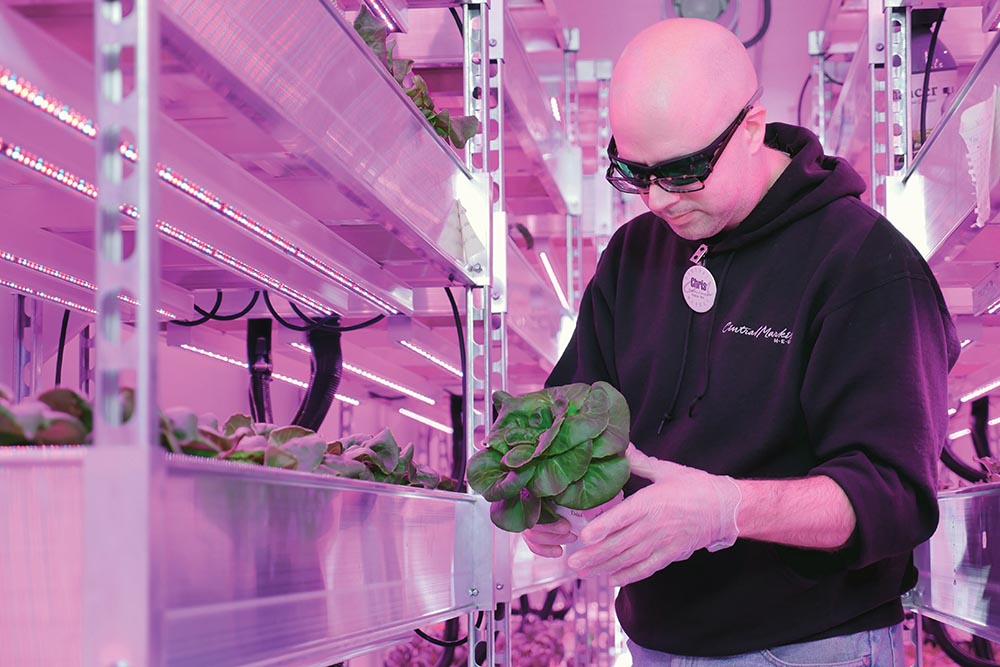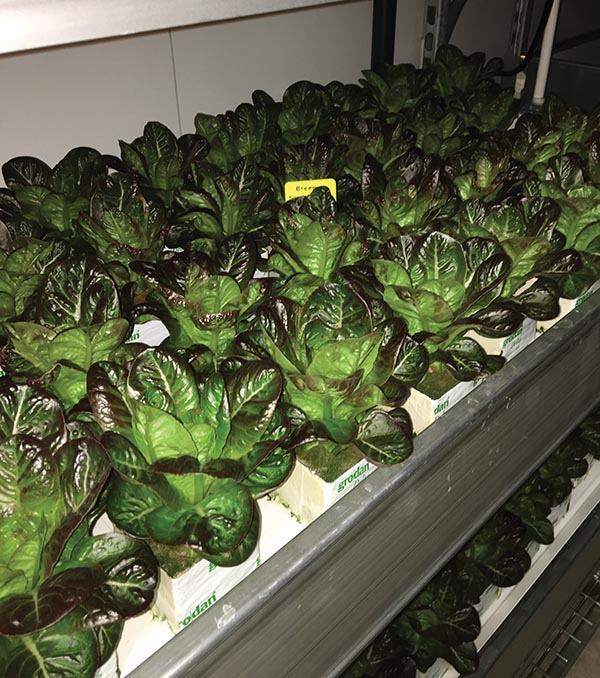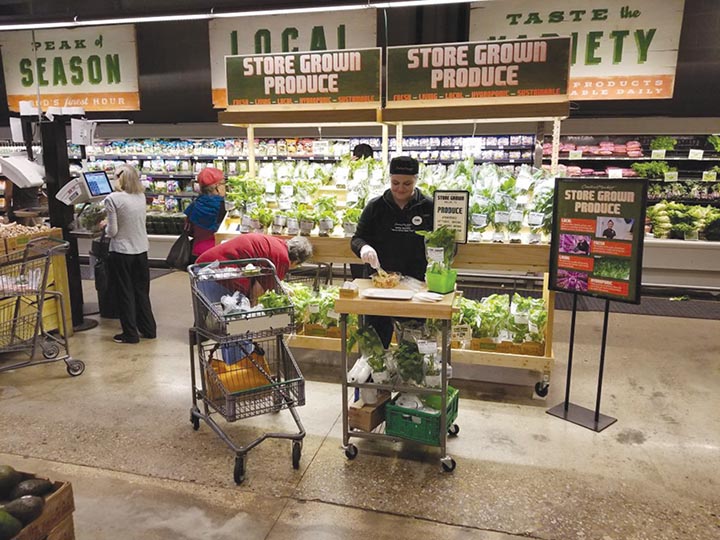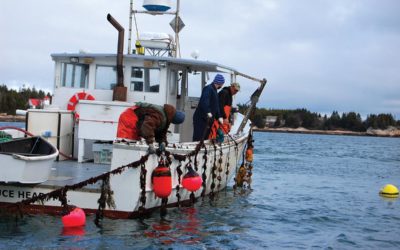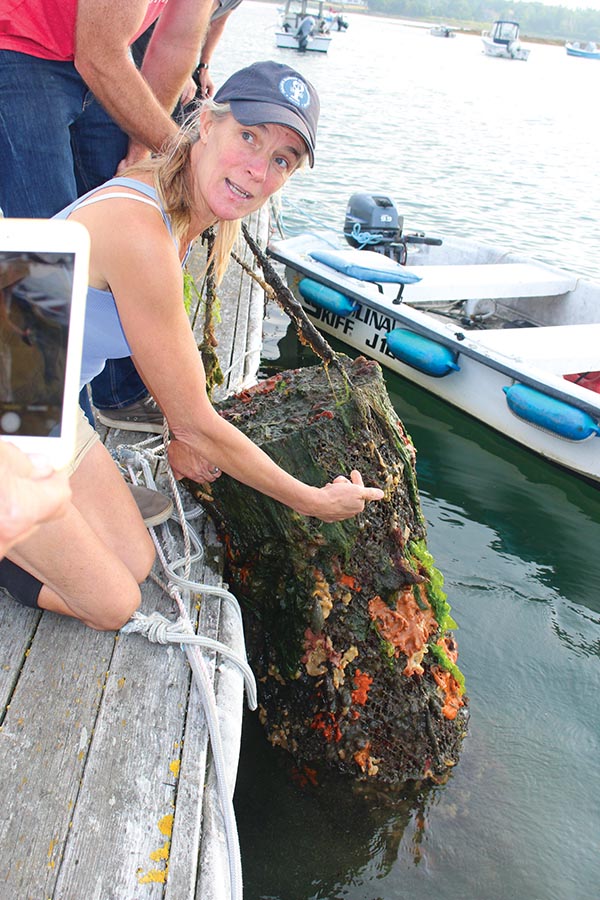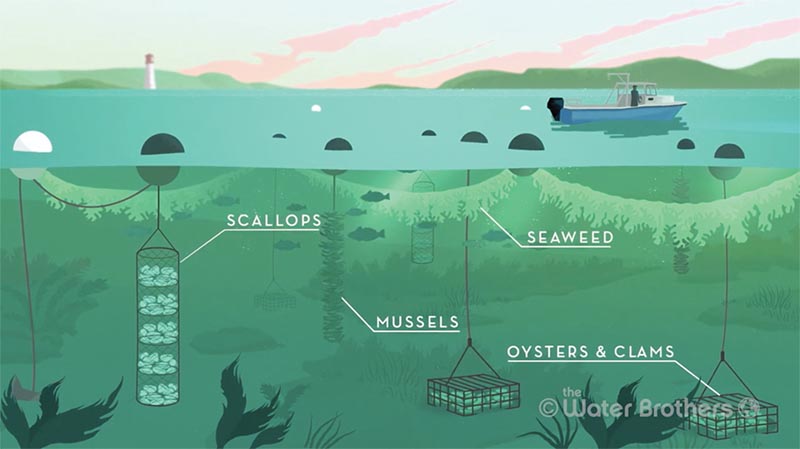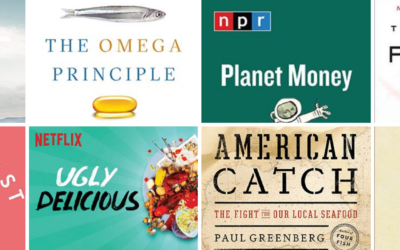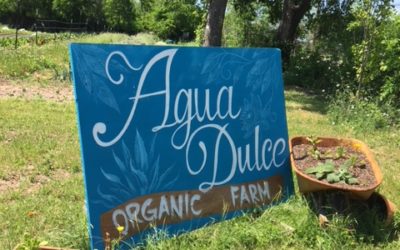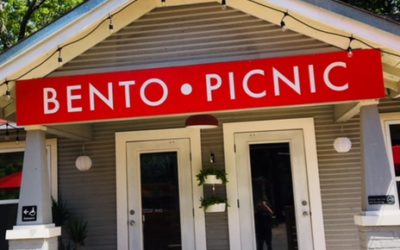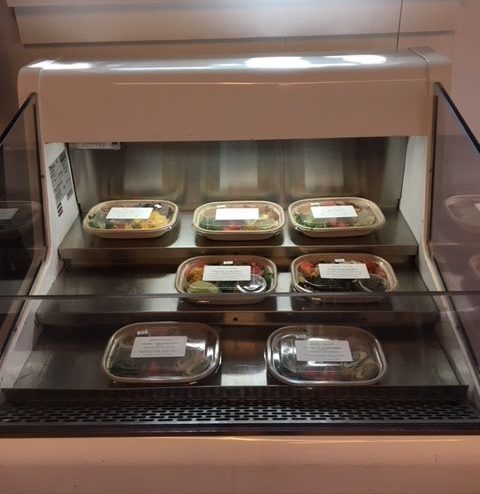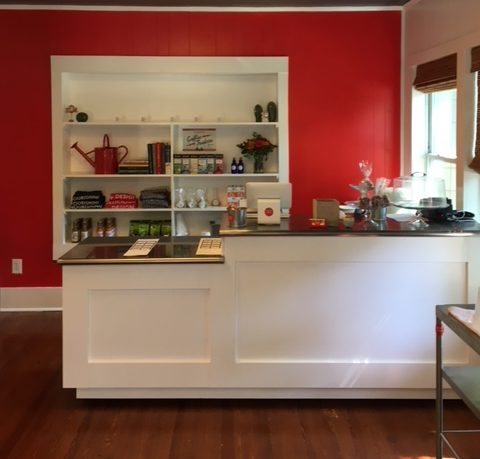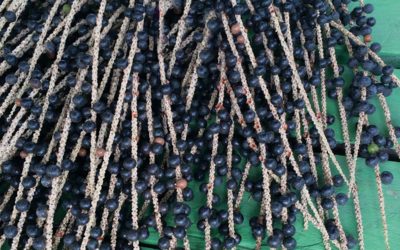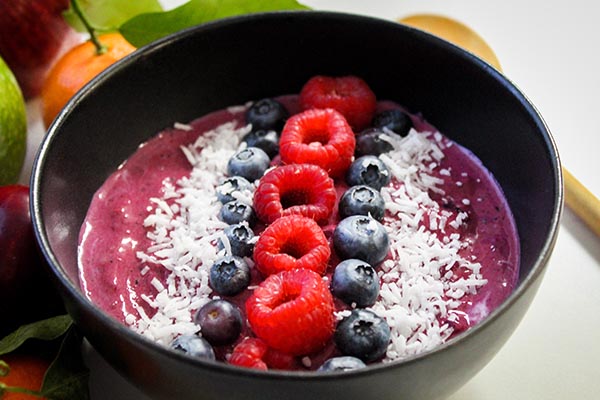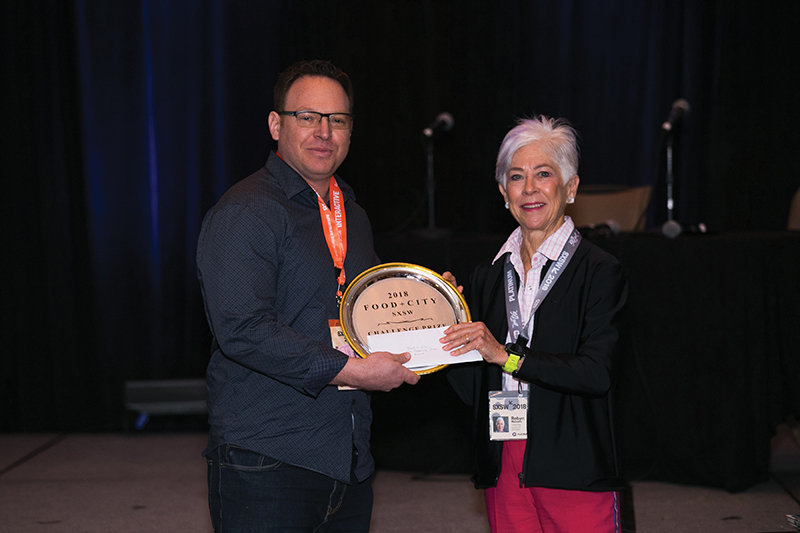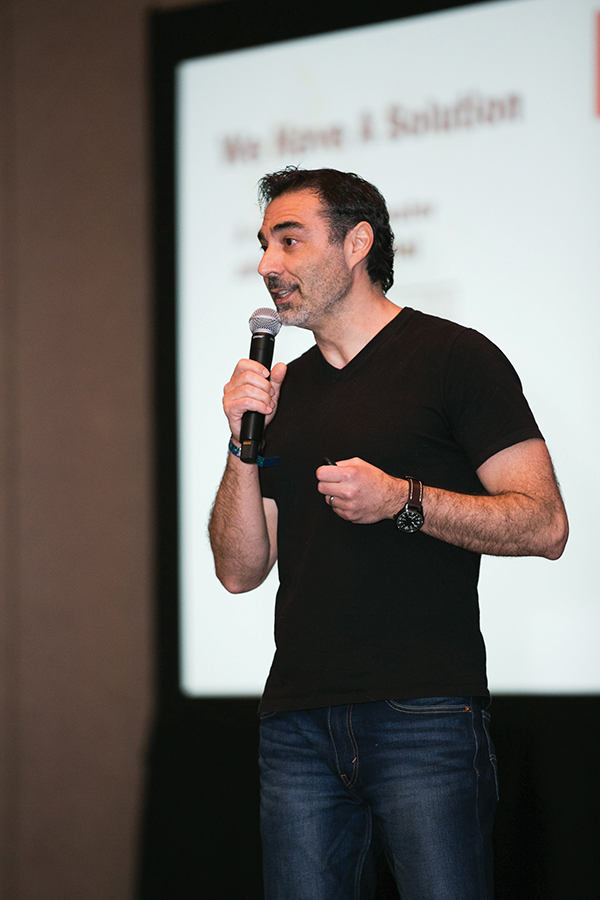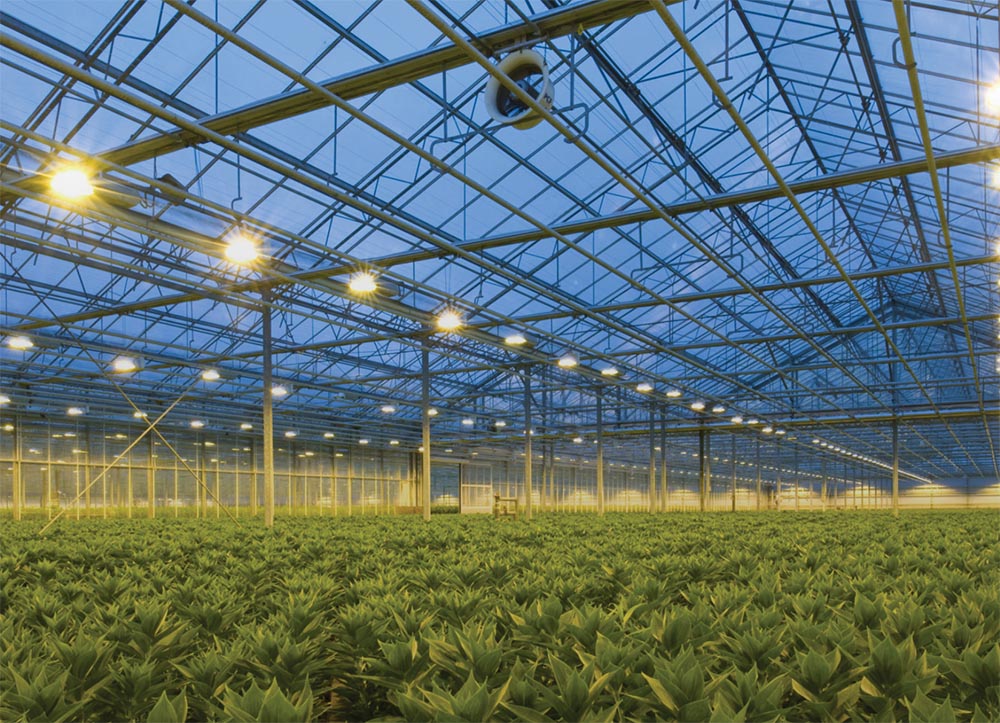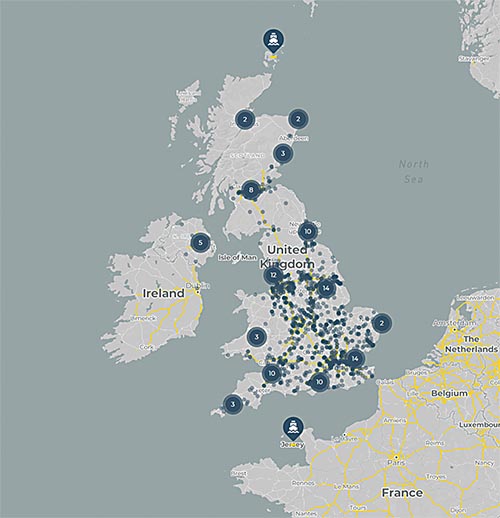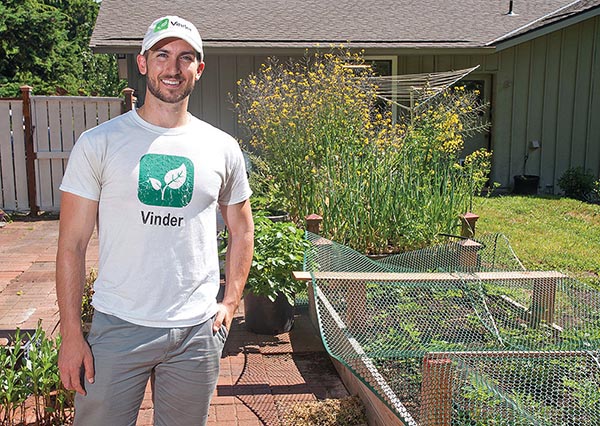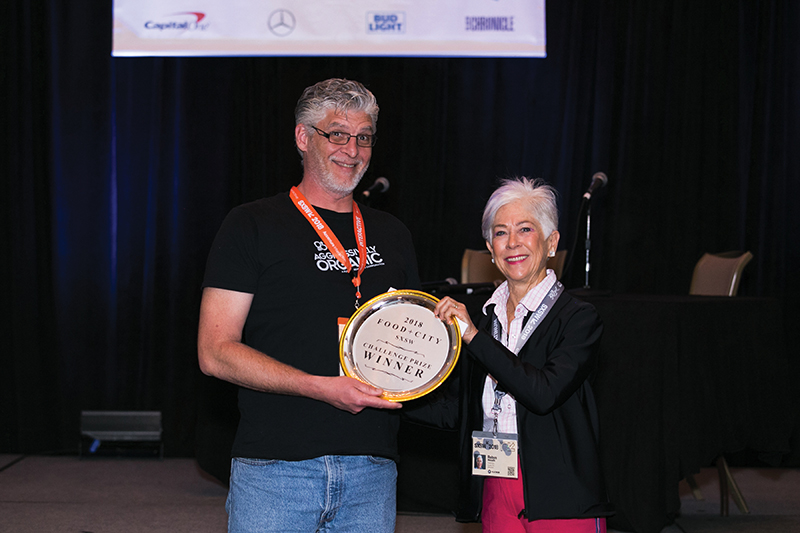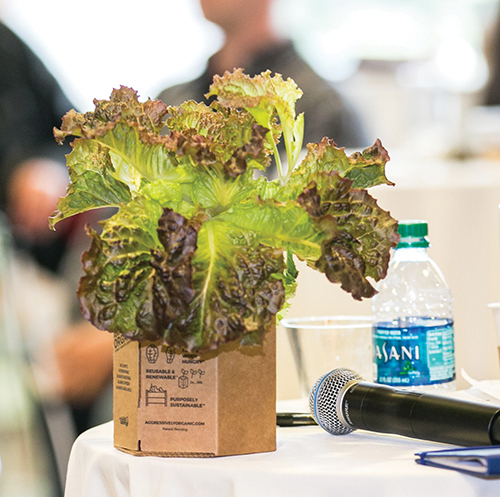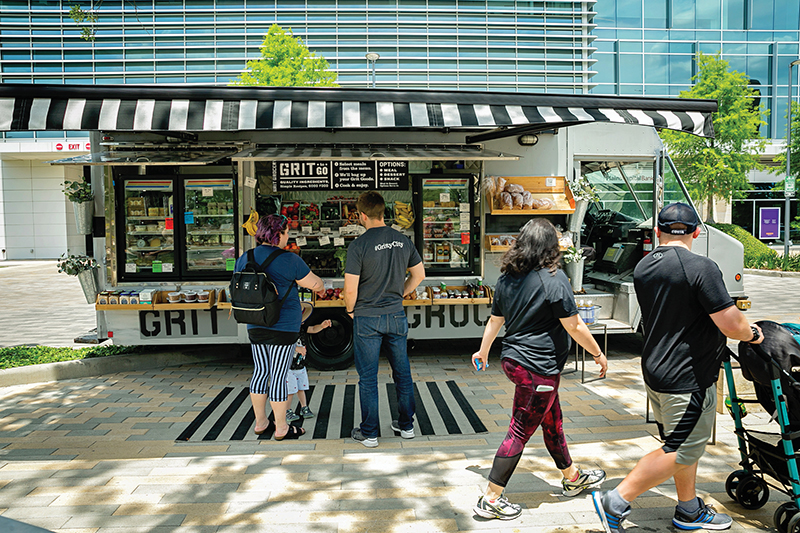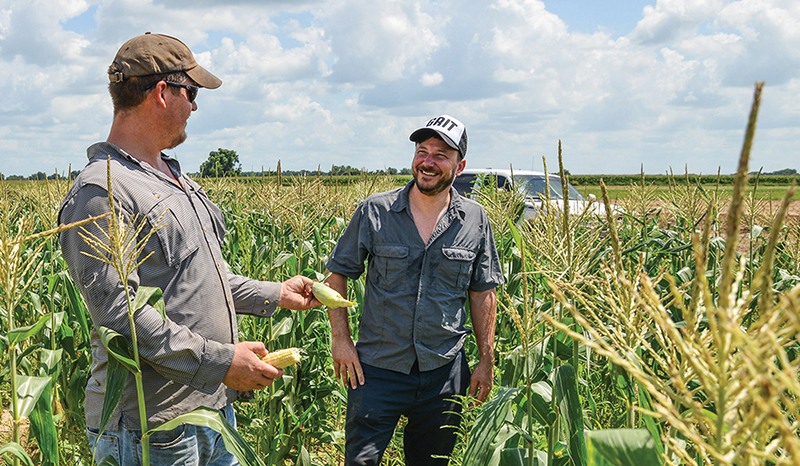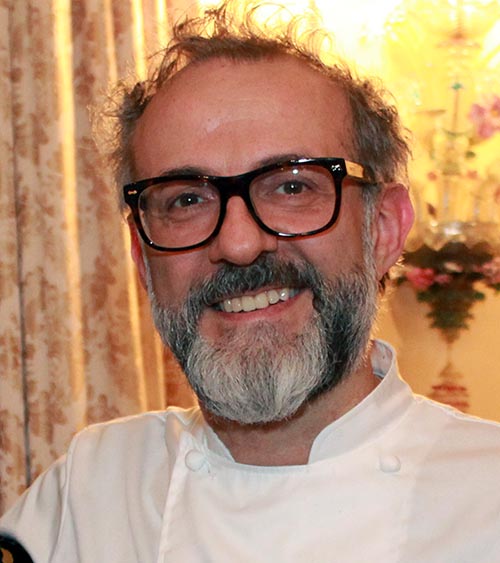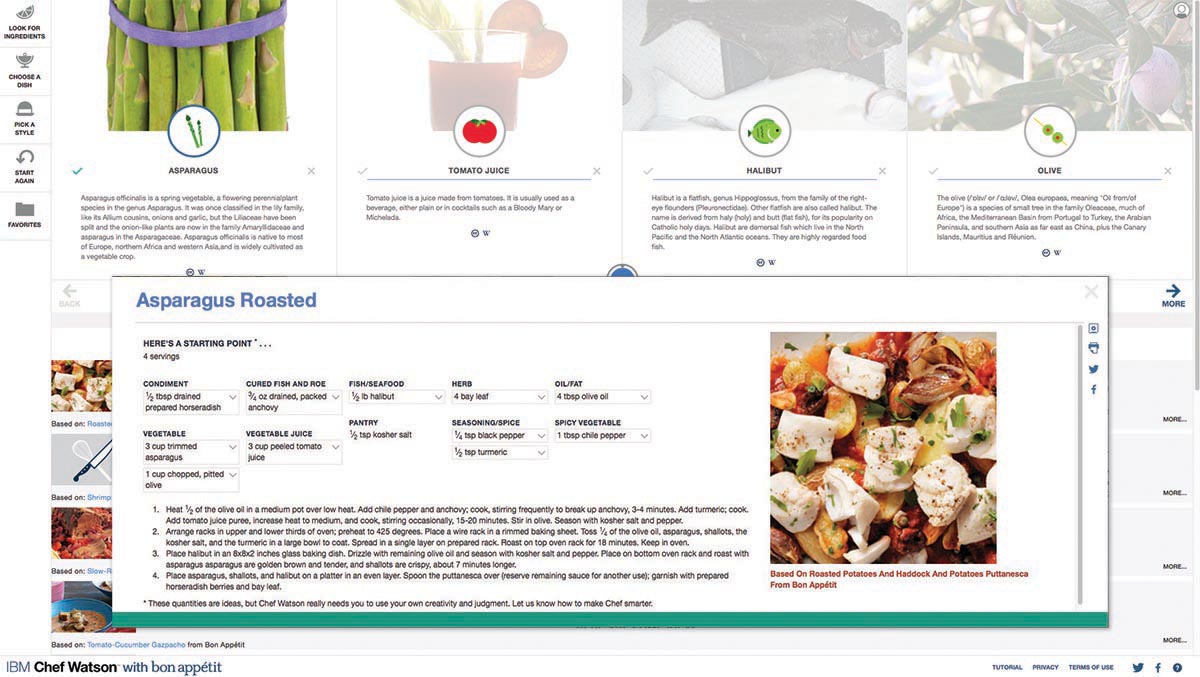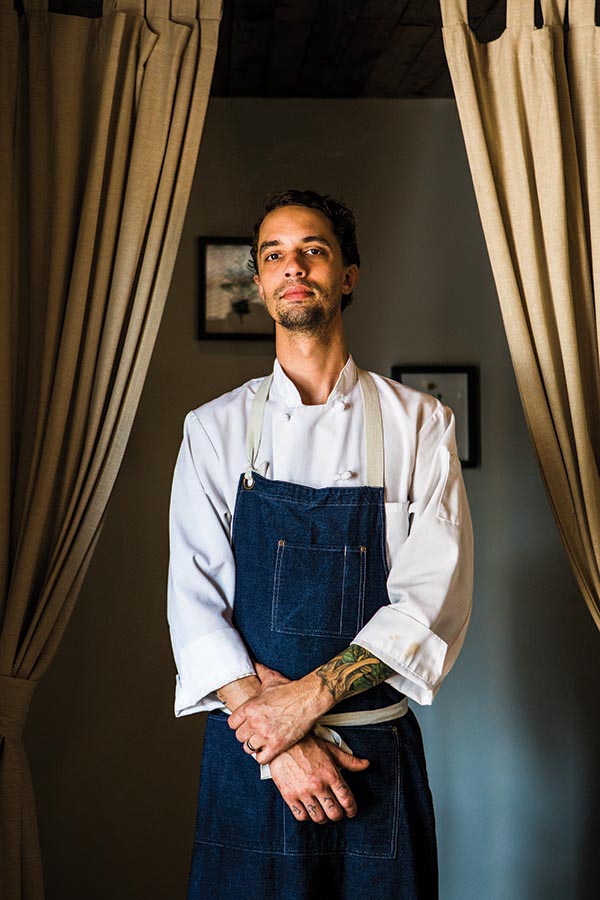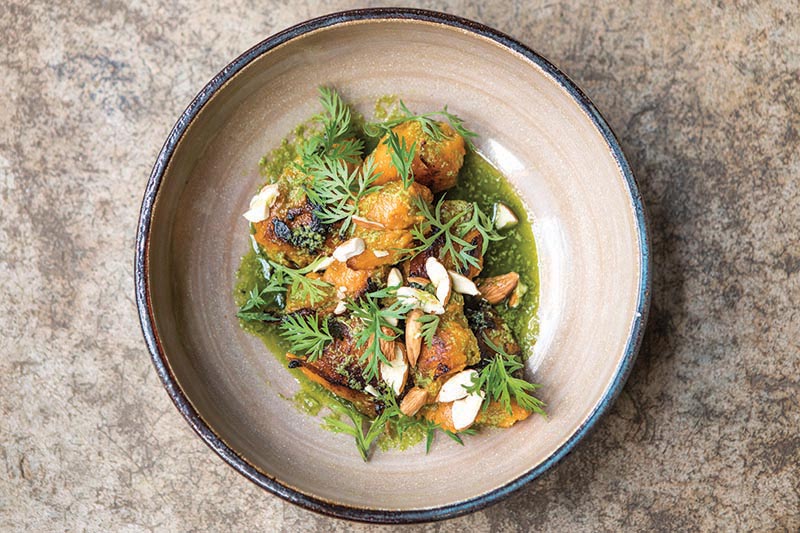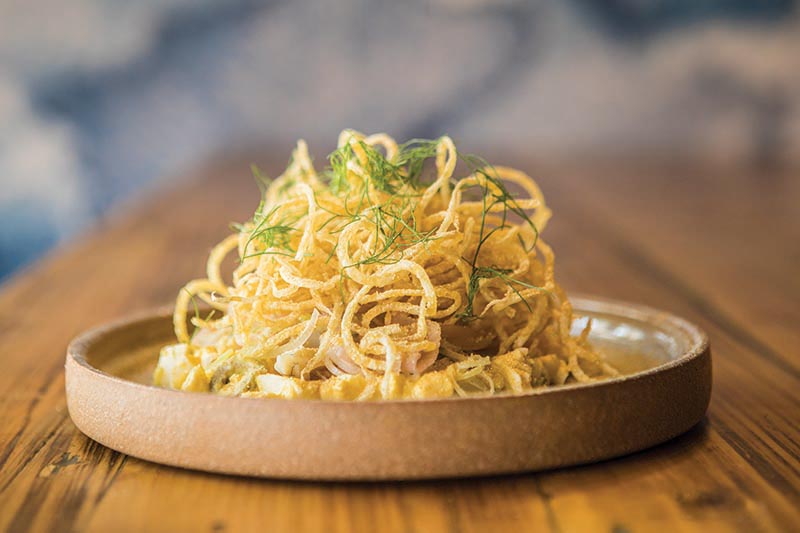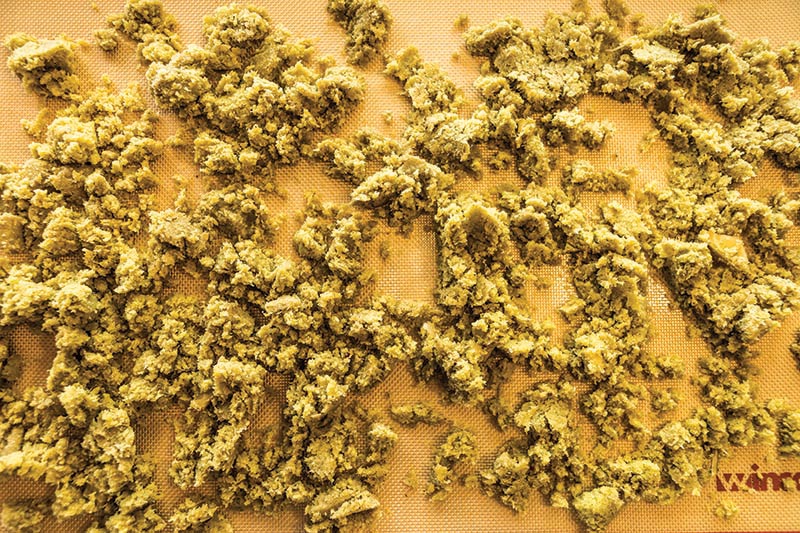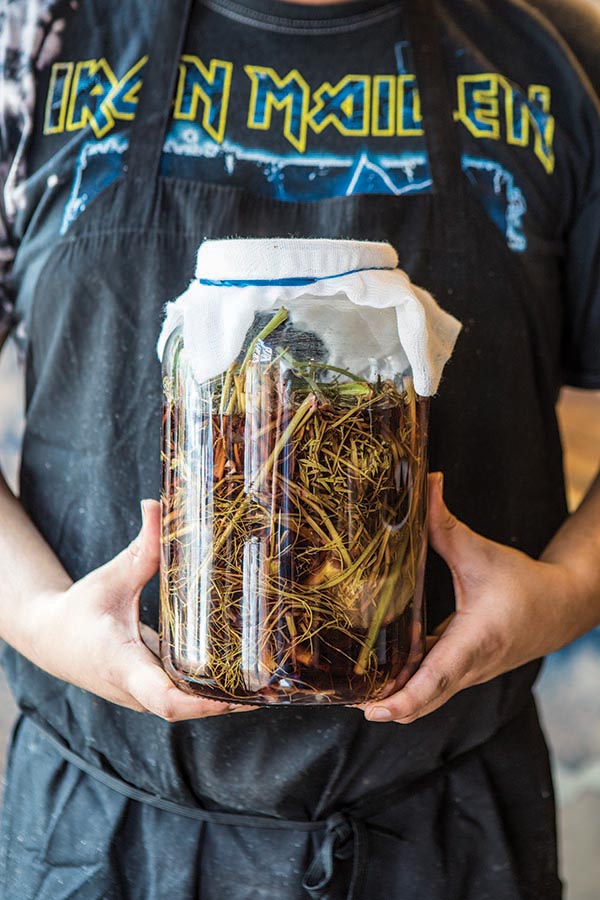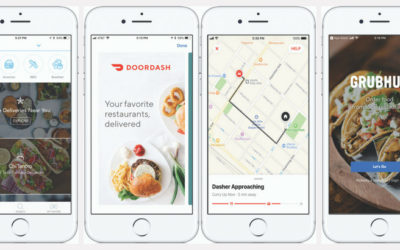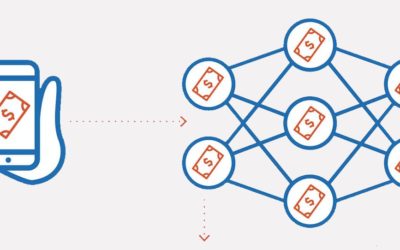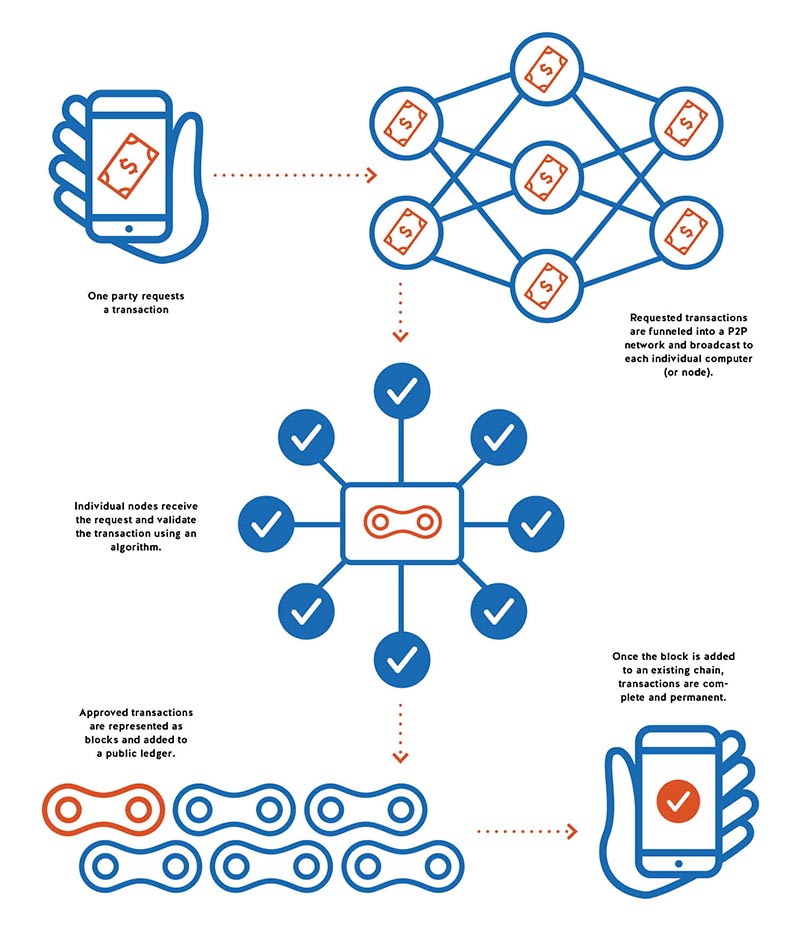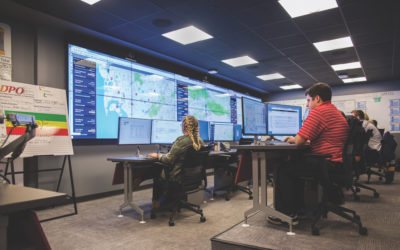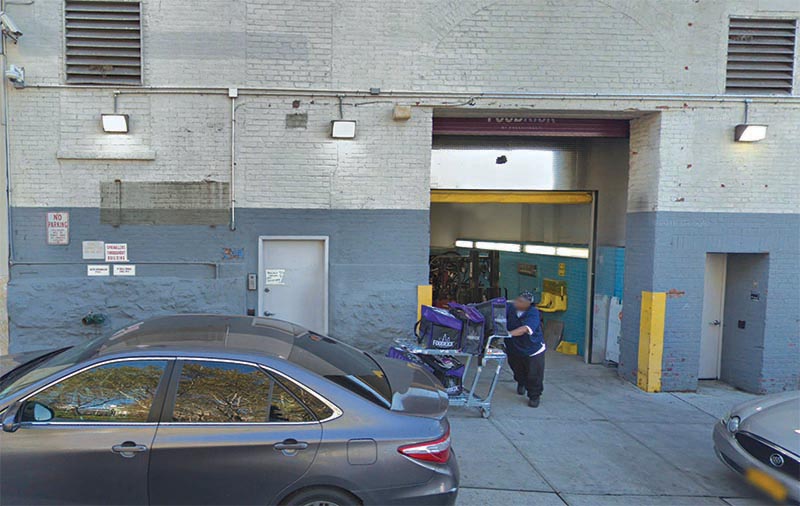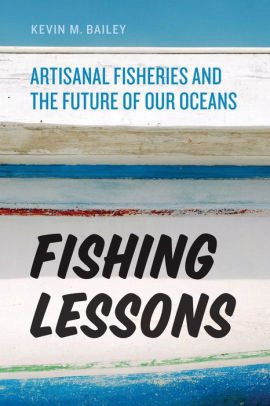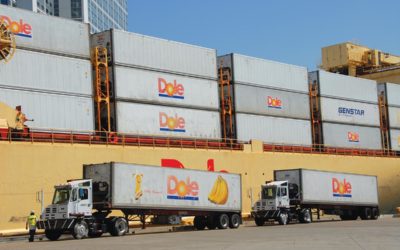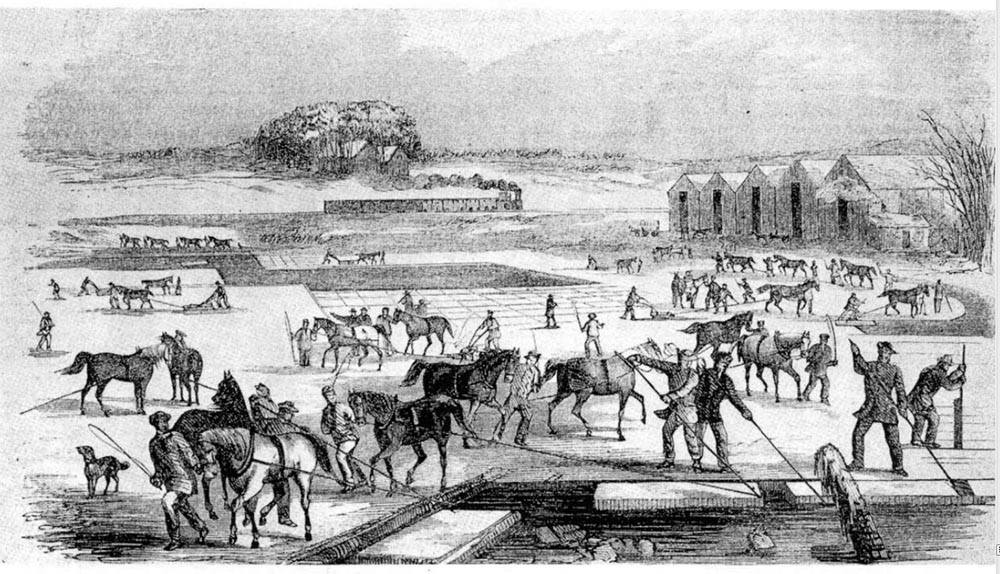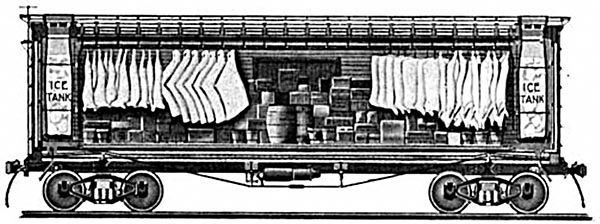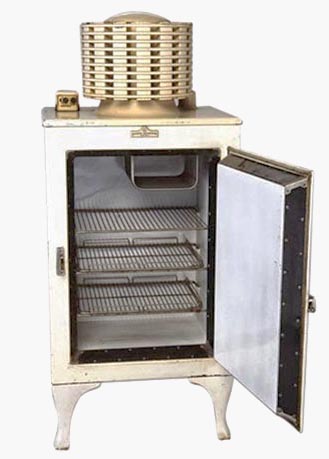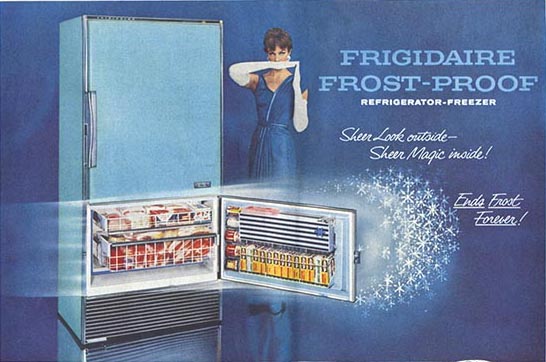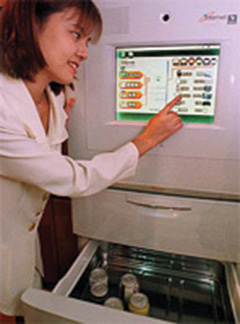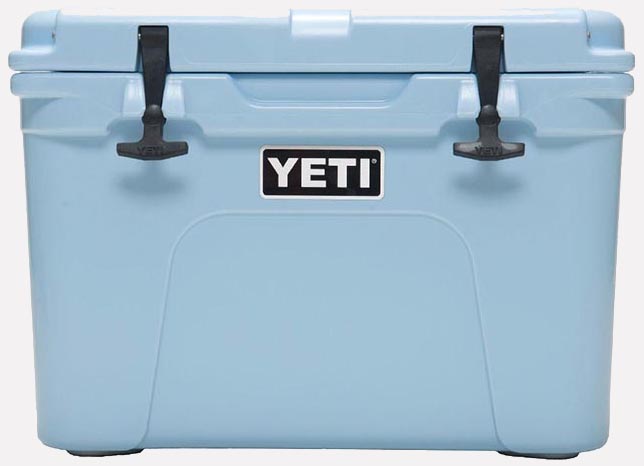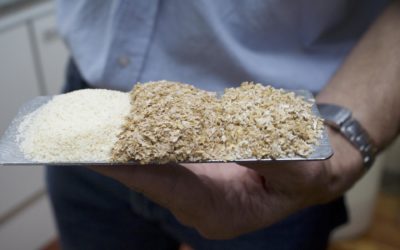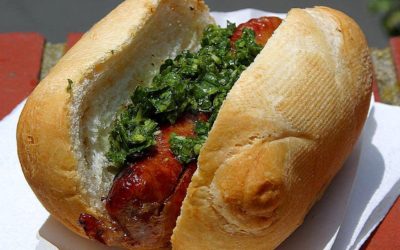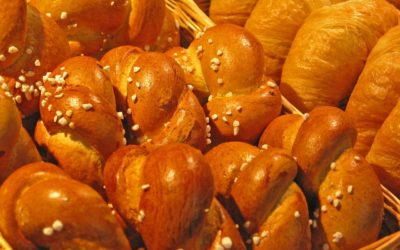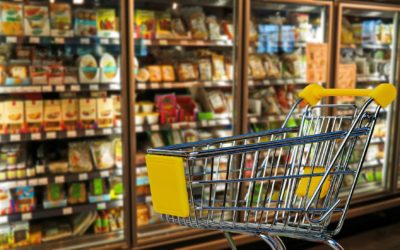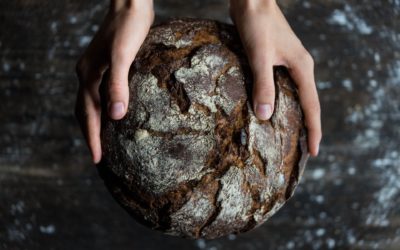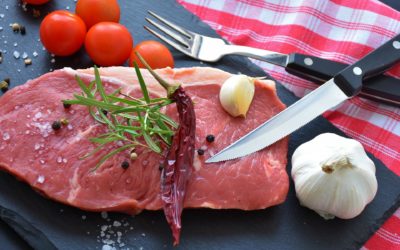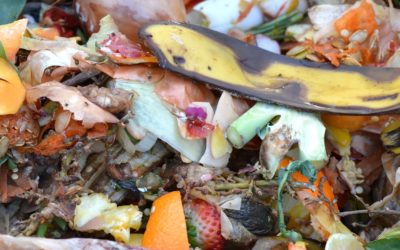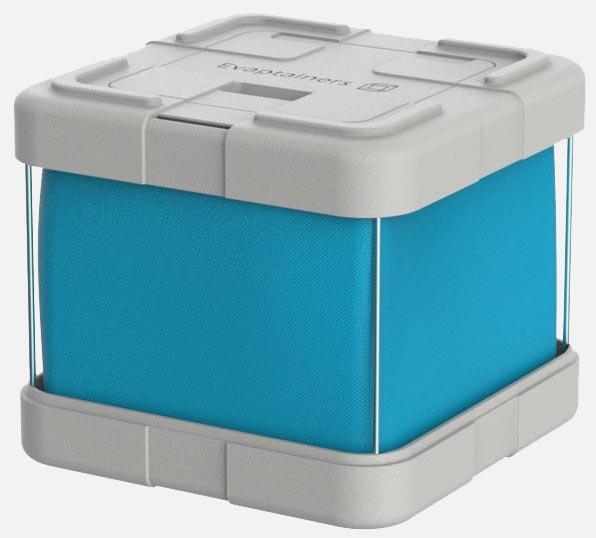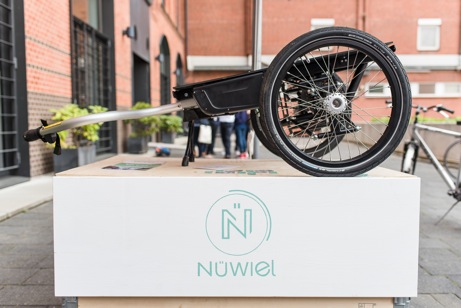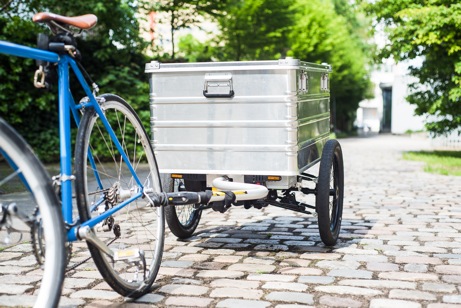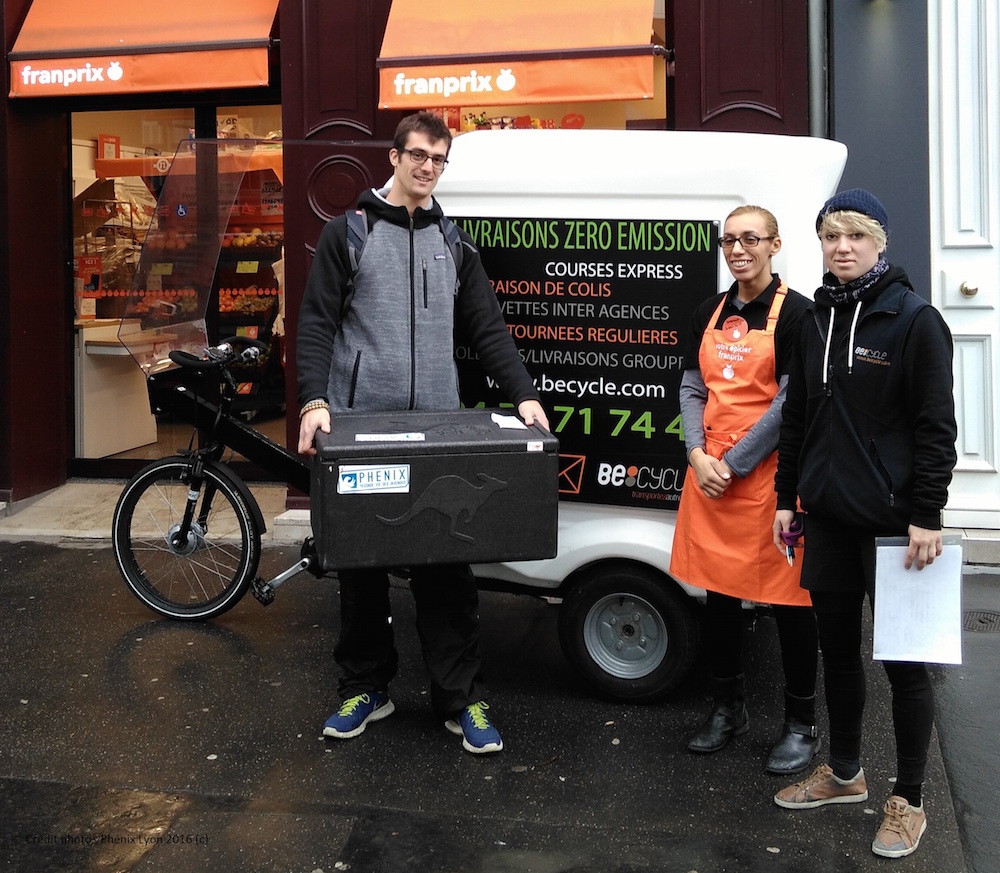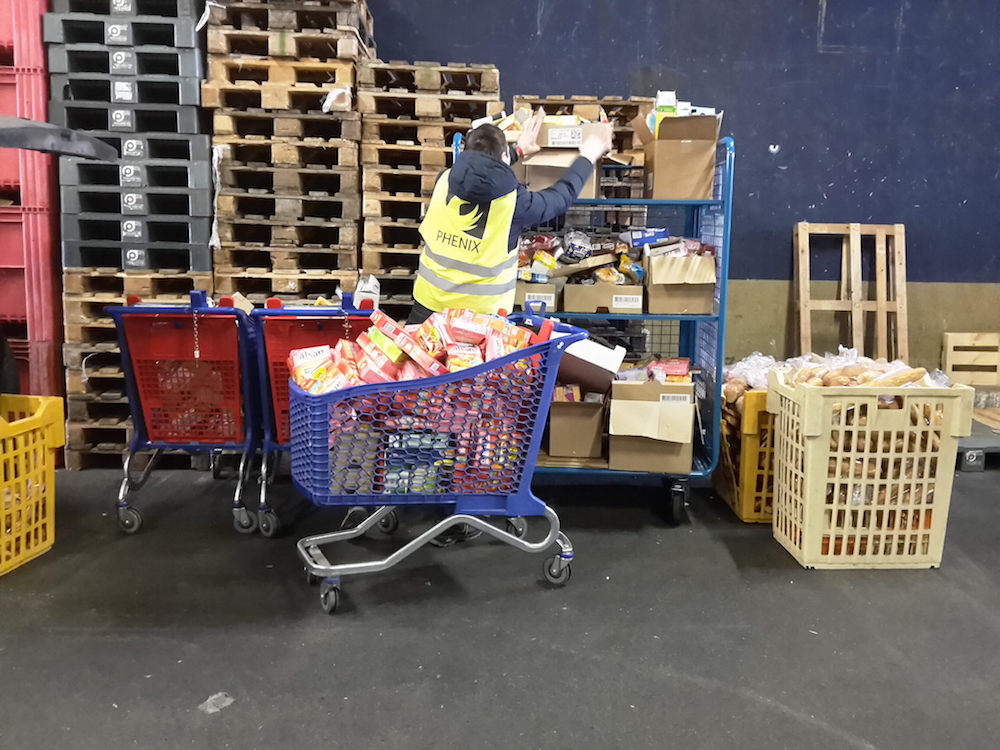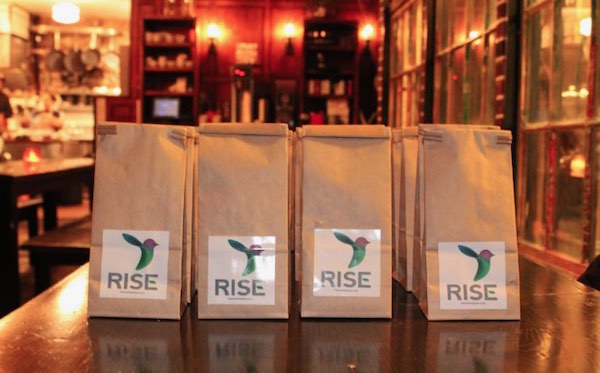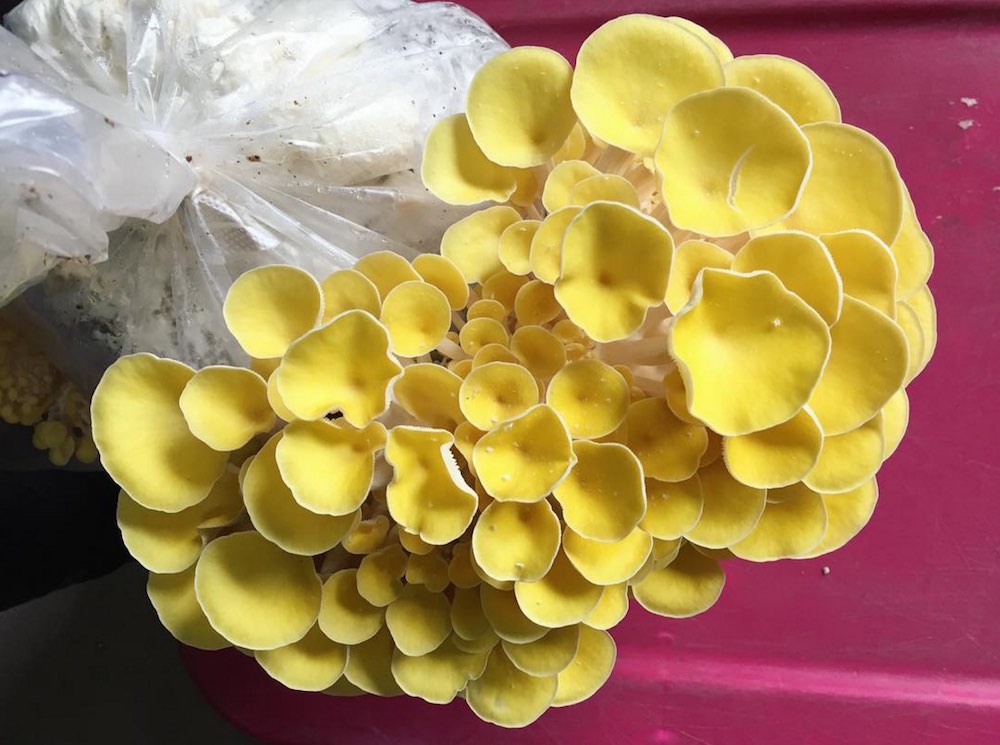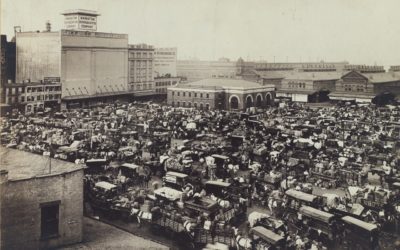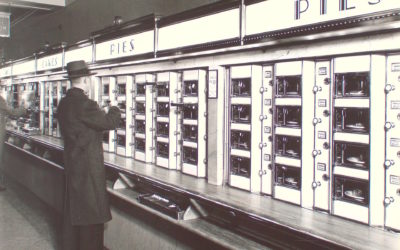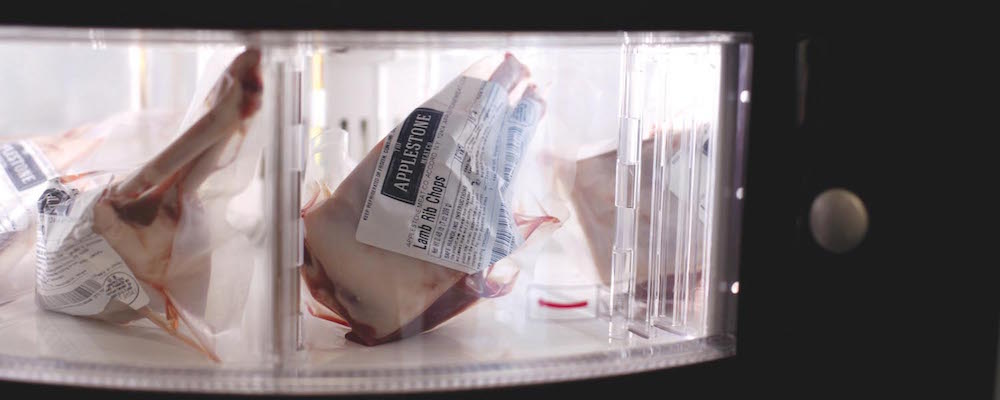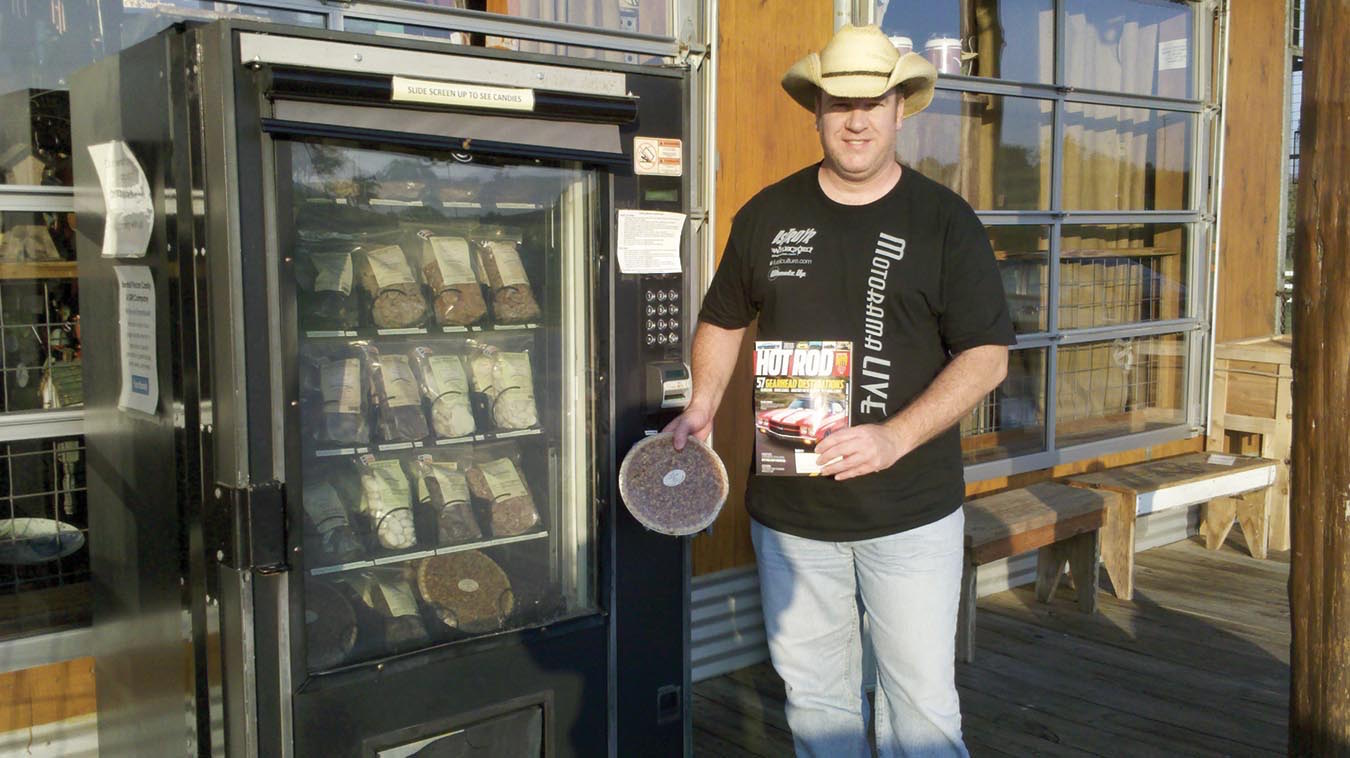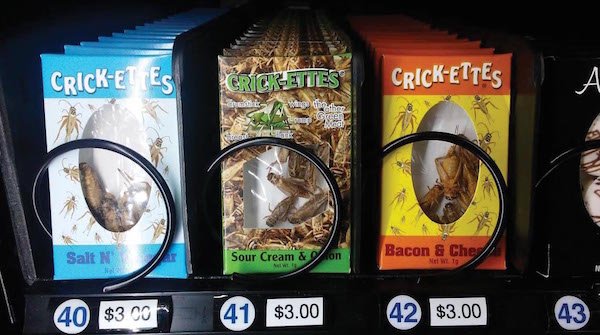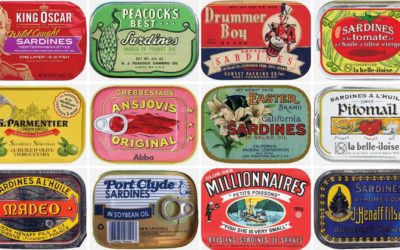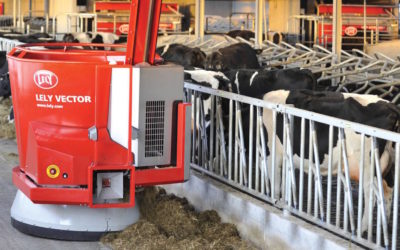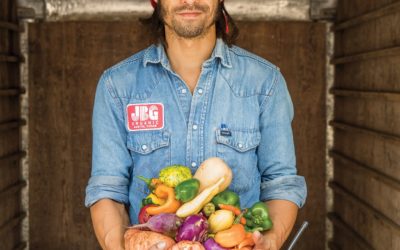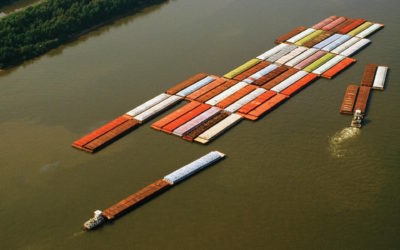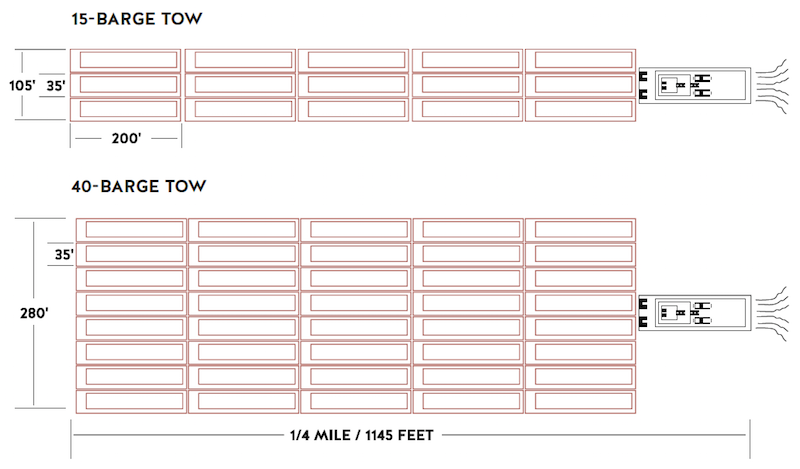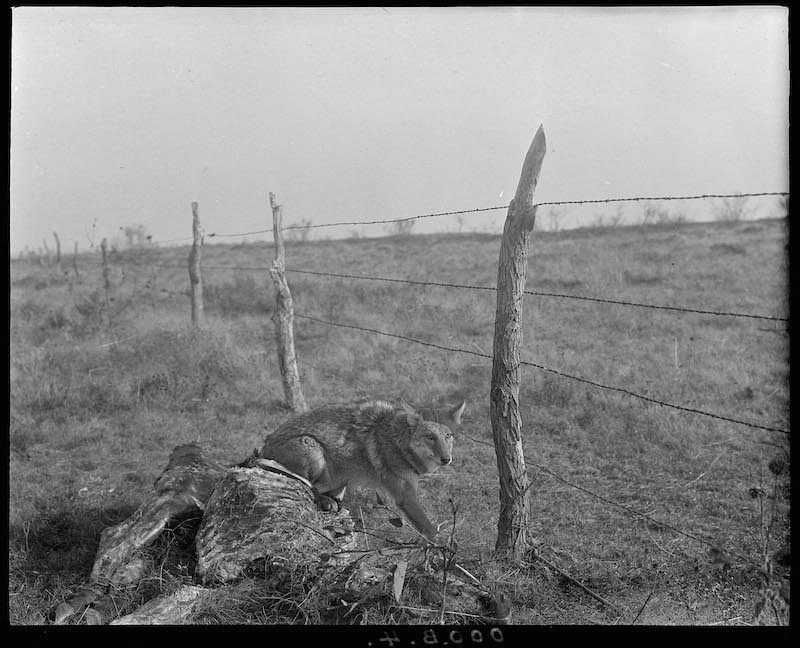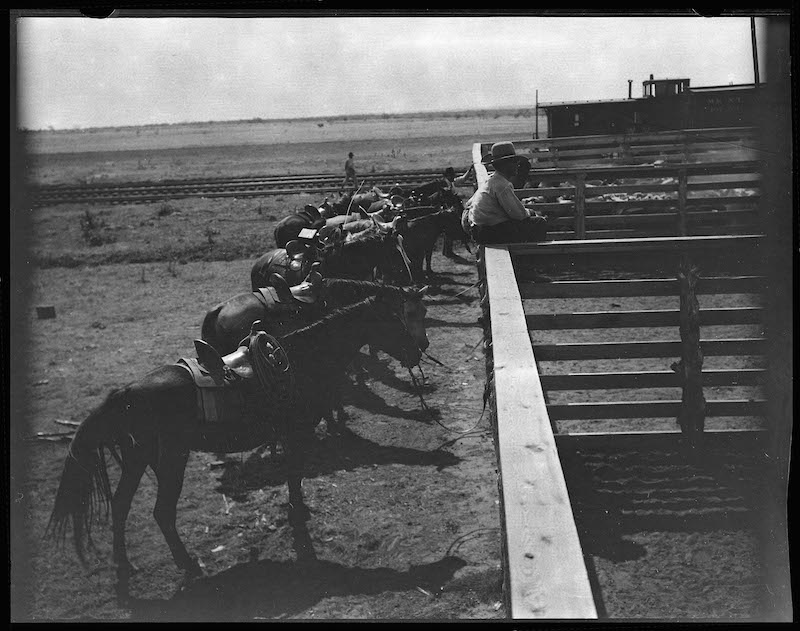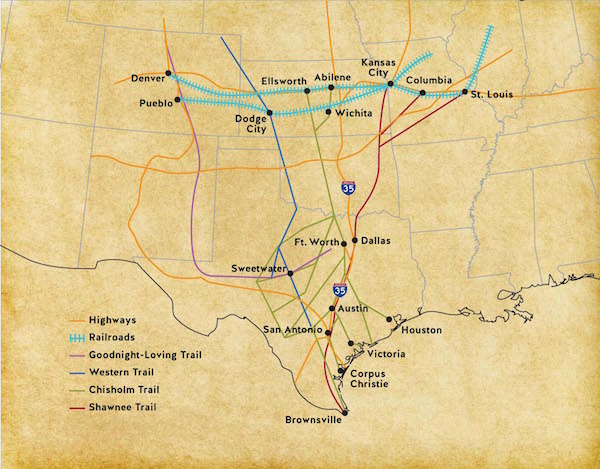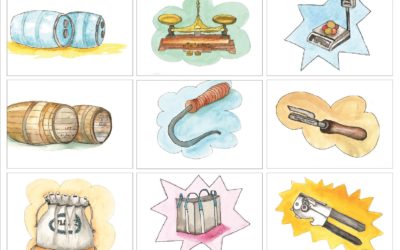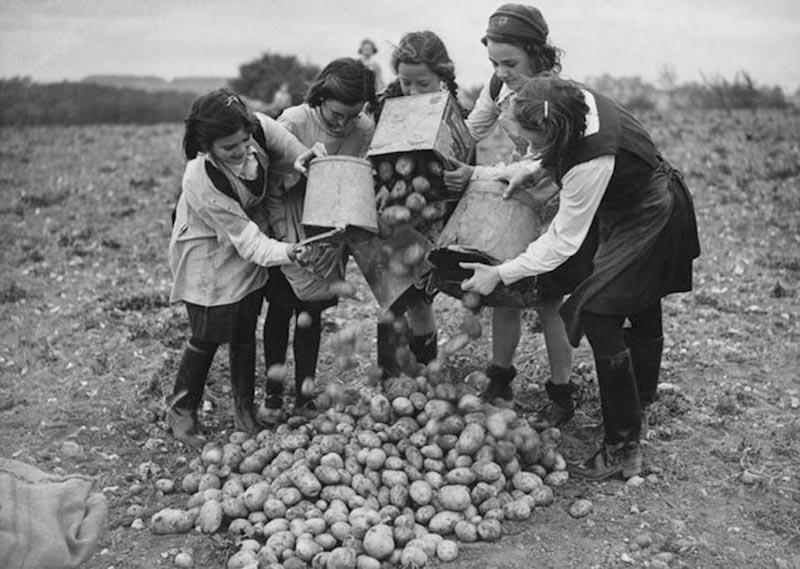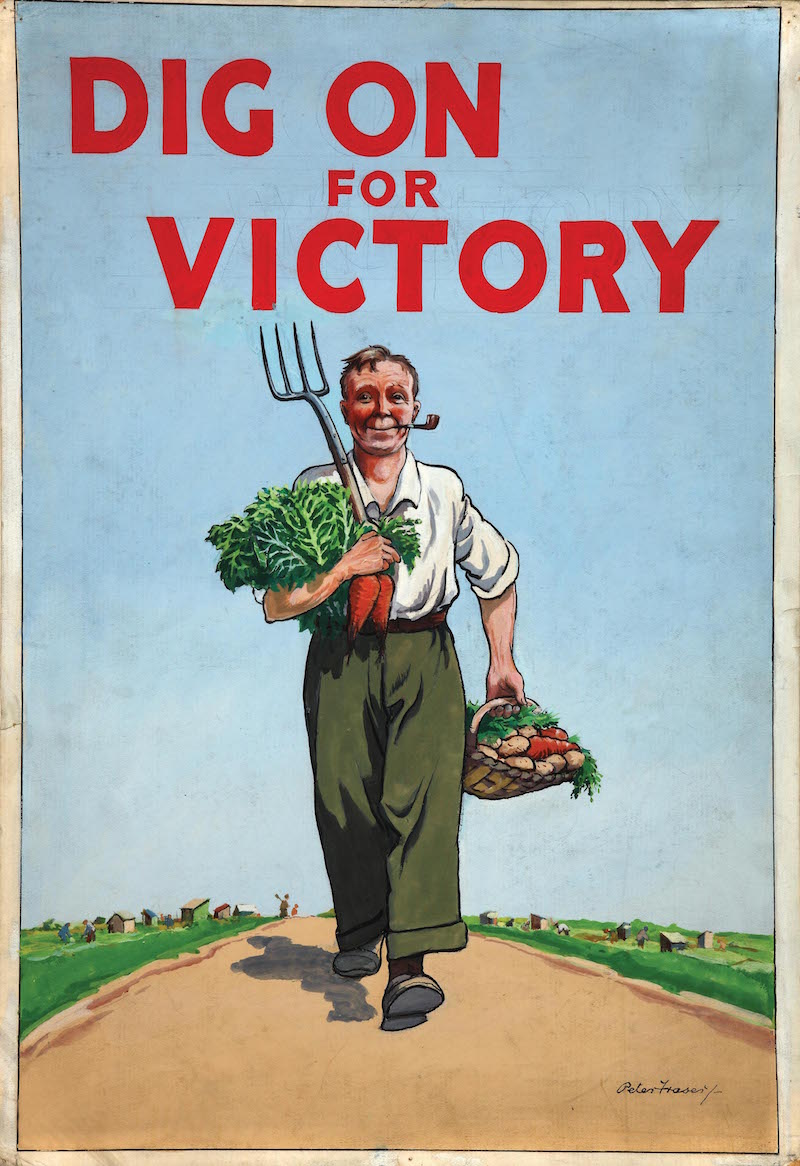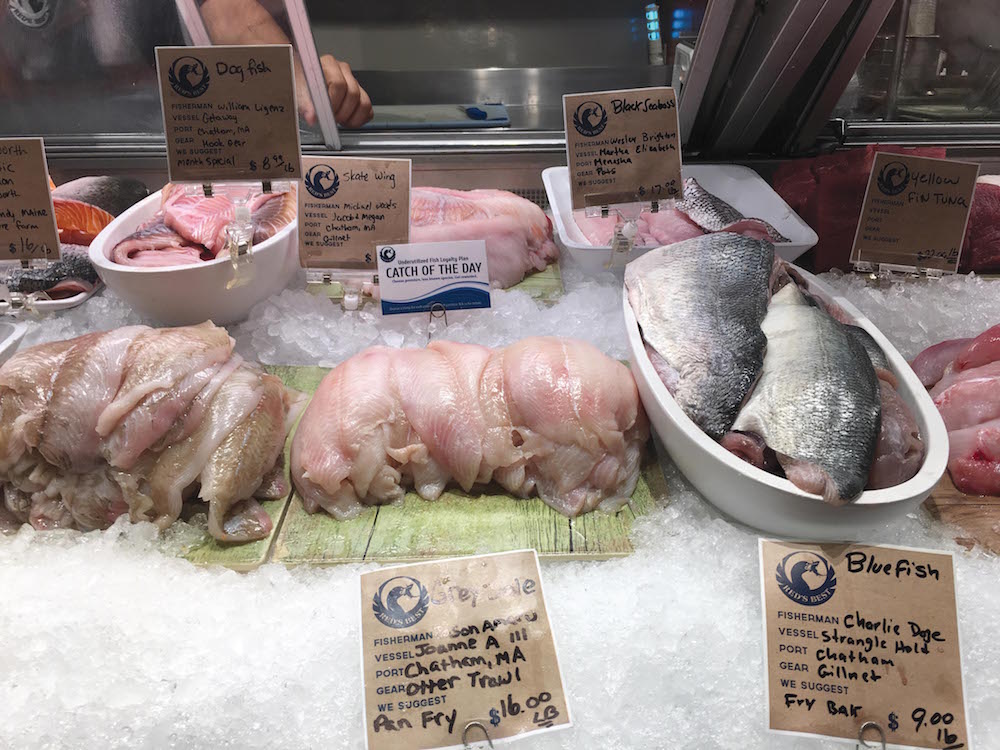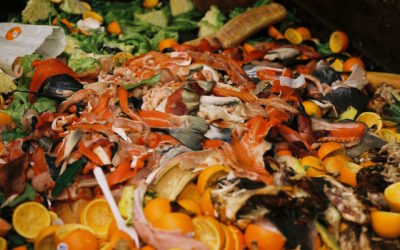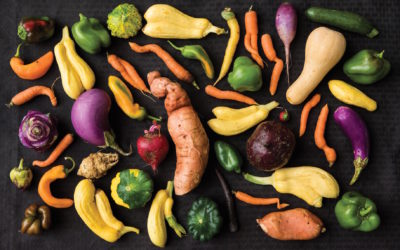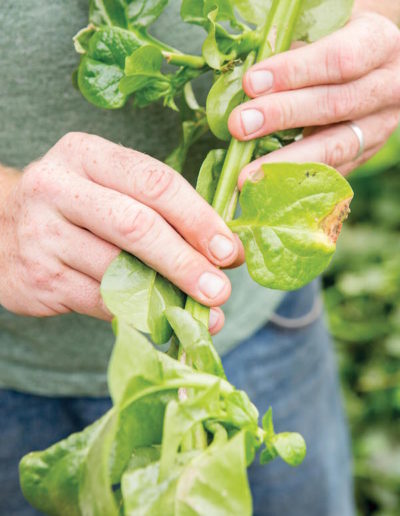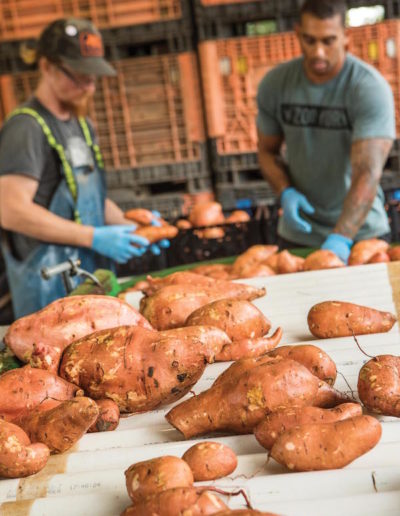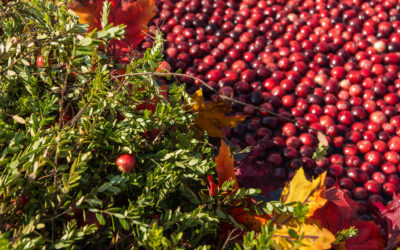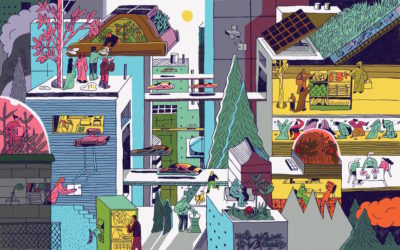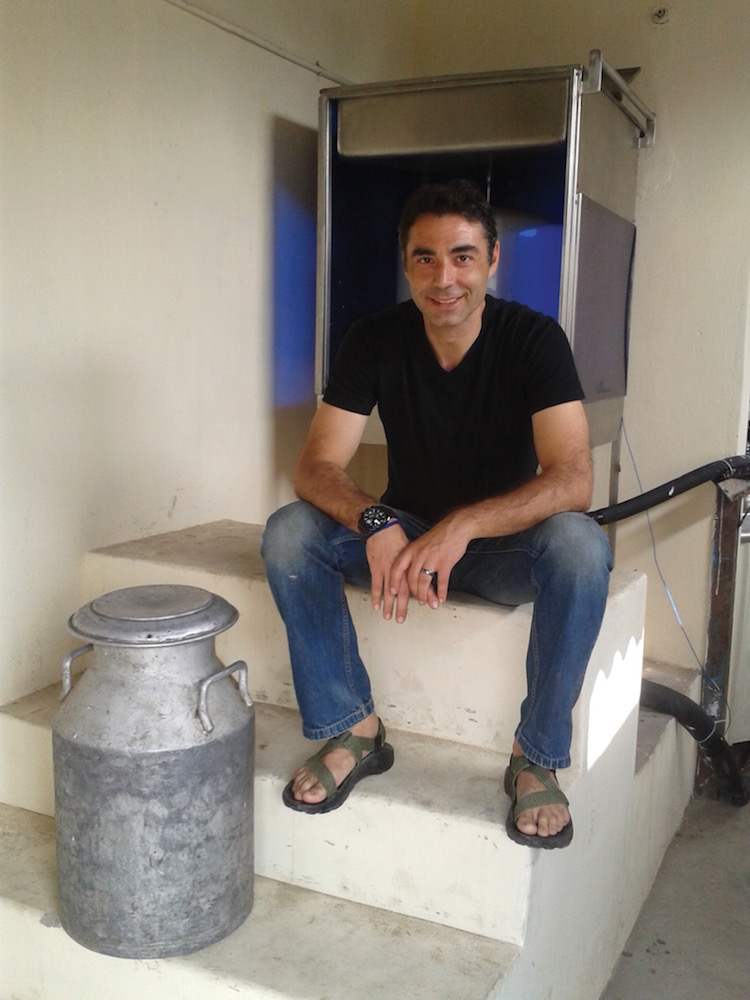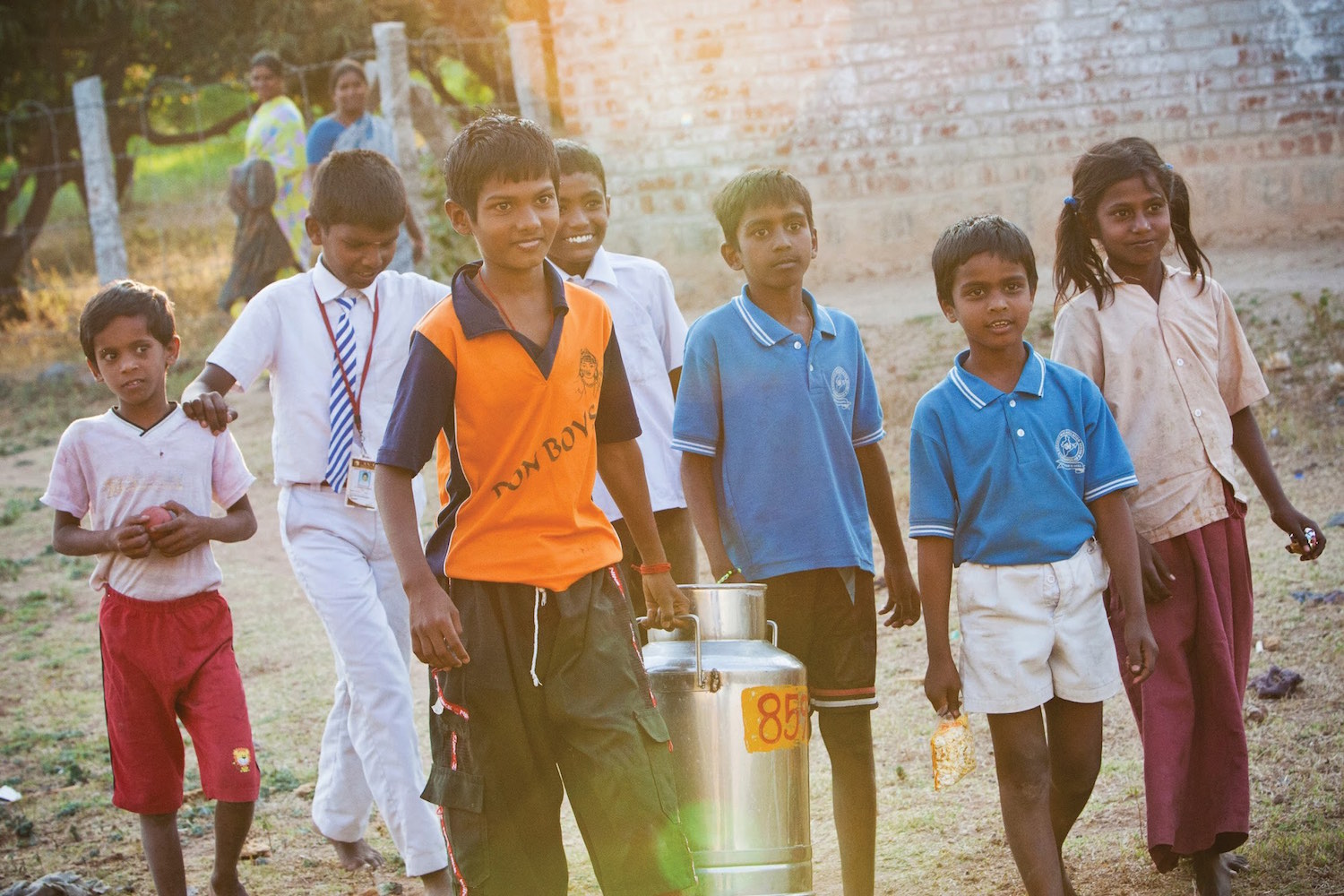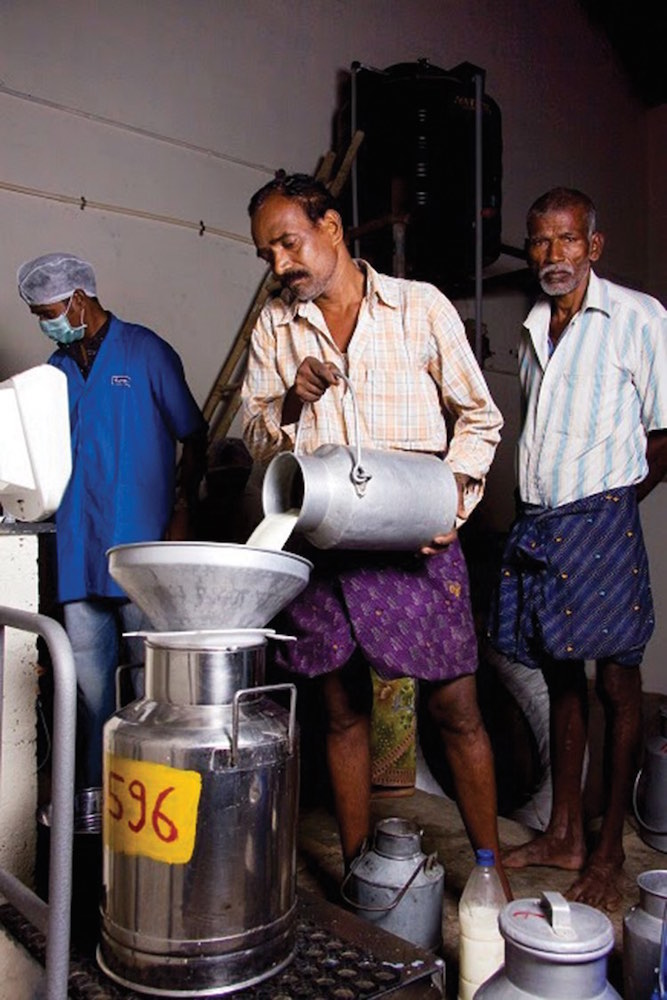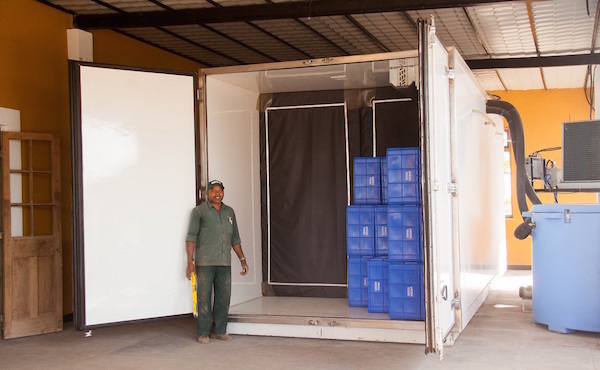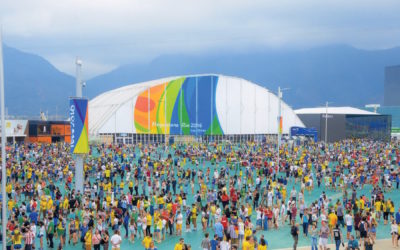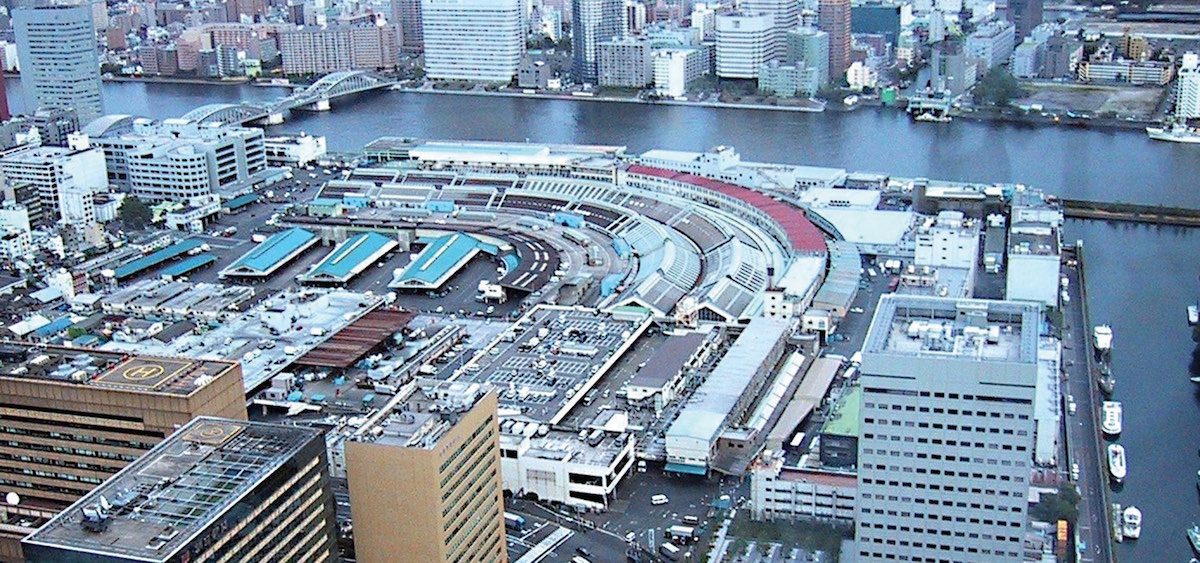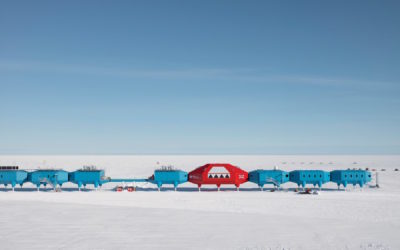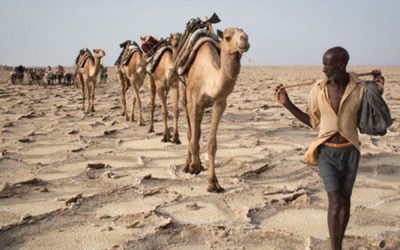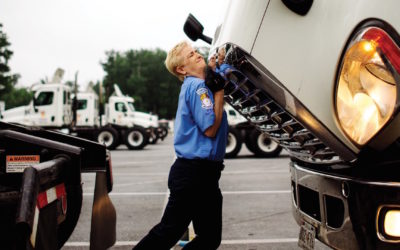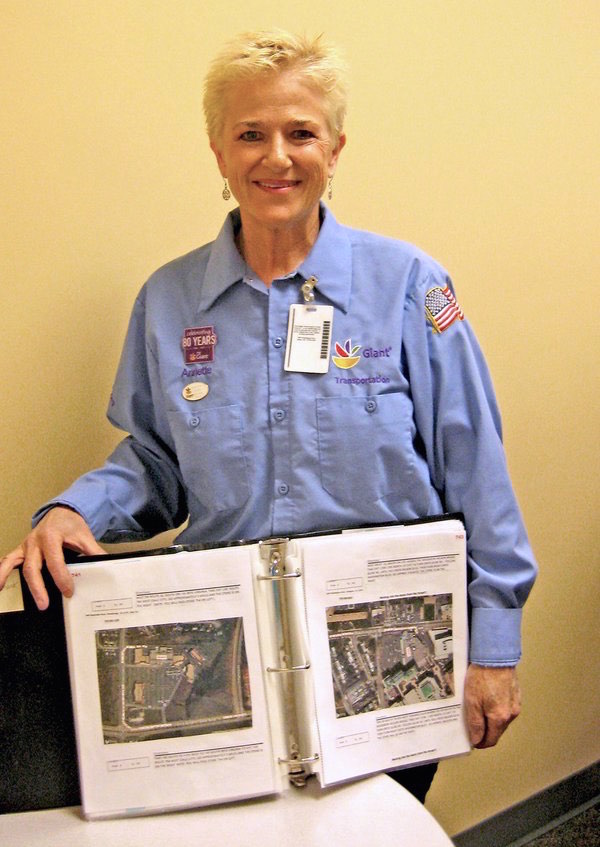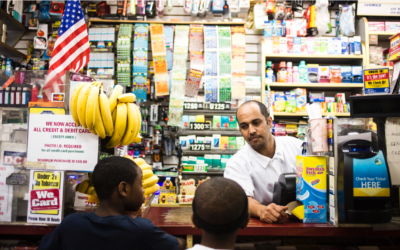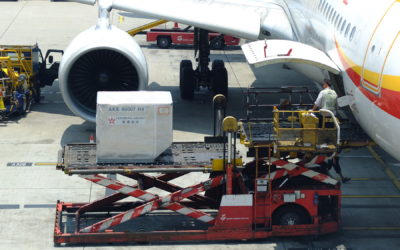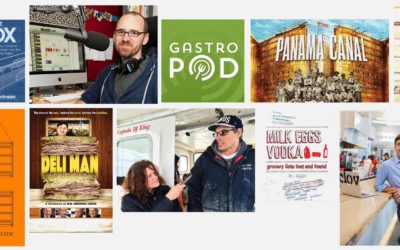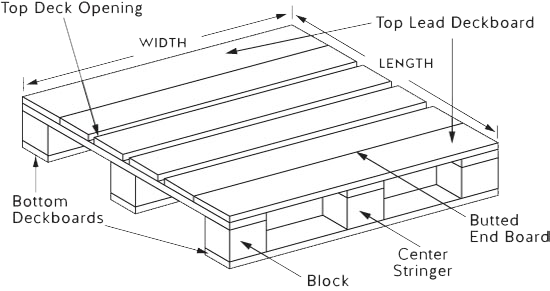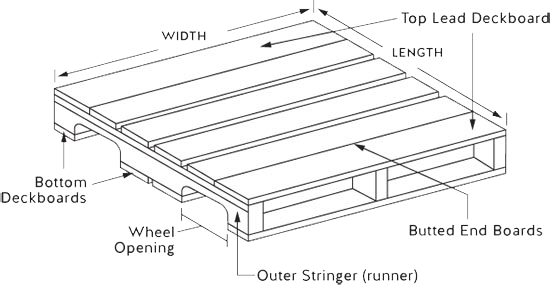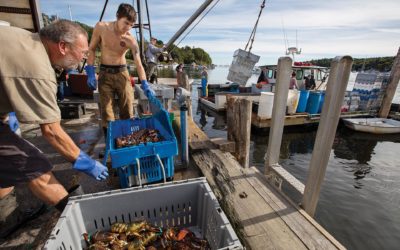Stories
Robyn’s Corner #4
Challenge Updates
Italian with Duolingo:
Still on track for daily practice, but my two kids and a friend are way ahead of me. Am going to experiment with a few YouTube Italian conversation sessions. Just experiment. Am going to Italy this month and still feel confident about mumbling Italian but not really taking on a conversation.
Drawing:
Completed a full month of daily drawing. I loved this challenge. It was always a highpoint of my day, even though sometimes I felt out of ideas for subjects and also rushed on some days when I barely had time for drawing anything. I did learn a lot: new materials such as liquid watercolors, watercolor brush pens, white ink pens, and felt pens. For March, I want to continue with a daily drawing but because of SXSW and travel, I imagine many will be quick pencil sketches done on the run. Aim to get at least 75 percent of my goal this month. That would be 3 not 4 weeks of drawings, I guess.
The Library Book, by Susan Orlean. Being from Los Angeles, this book piqued my interest. Downtown LA appears out of the hazy Southern California sky as a jumble of high-rise concrete buildings. Nested on Hope Street, is the LA County Library, built in 1926 and burnt down by an arsonist in 1986. The building survived but millions of documents were incinerated. Orlean tells the story of the event while shining a light on libraries in general at a time when we download our books. By the time she has wandered through the library and its conflagration, you might find out who the arson was..maybe.
Having met Dan Ariely this past fall at Poptech, I wanted to learn more about his ideas around consumer behavior. This past week, I read Predictably Irrational, and enjoyed his easy to read prose along with his relatable ideas about why we do things that appear irrational. Great insights about why we eat unhealthy food, and pay too much for things we don’t need. This was an unexpected complementary read to the book I read last month about Adam Smith. Ariely puts Smith in a contemporary context, creating some new ways of looking at supply and demand.
Food Routes……My book is out! You can buy it here: …….Would worship you if you bought one and then wrote a stunningly positive review on Amazon. Am grateful to my publicist at the MIT Press; he is doing a great job getting the book out there. Last week, The Wall Street Journal published my article about chicken tracking (J) and then NPR put me on Morning Edition. Then PBS filmed a short segment on pizza as a homage to Pi Day, March 14th. Am writing several pieces for media outlets and hope they run them. It’s all fun, if not intimidating. Enjoyed signing books at SXSW.
This is the month that Austin attracts creatives and technologists from all over the world. Even without an official badge, you can learn about ideas from unexpected places. Will head into the festival this week, starting with our Food+City Challenge, then my panel on The Future of Eating. Psychology professor, Art Markman, Futurist, Max Elder, and Smart City Evangelist Henry Gordon-Smith were rock stars on the stage.
Caught the Oscars (my allegiance to my home town runs deep). I found The Favourite a little strange but the acting and costumes were superb. This article by Amy Froide in The Conversation, a cool and smart website for news, shares her historical perspective on women at the time of Queen Anne. The whole idea that women were shrewd investors then was a surprise to me. I suggest that reading her book about women investors in the 18th century would be full of such insights.
Now Available: Food Routes
Even if we think we know a lot about good and healthy food―even if we buy organic, believe in slow food, and read Eater―we probably don’t know much about how food gets to the table. What happens between the farm and the kitchen? Why are all avocados from Mexico? Why does a restaurant in Maine order lamb from New Zealand?
In Food Routes, Robyn Metcalfe explores an often-overlooked aspect of the global food system: how food moves from producer to consumer. She finds that the food supply chain is adapting to our increasingly complex demands for both personalization and convenience―but, she says, it won’t be an easy ride.
Networked, digital tools will improve the food system but will also challenge our relationship to food in anxiety-provoking ways. It might not be easy to transfer our affections from verdant fields of organic tomatoes to high-rise greenhouses tended by robots. And yet, argues Metcalfe―a cautious technology optimist―technological advances offer opportunities for innovations that can get better food to more people in an increasingly urbanized world.
Metcalfe follows a slice of New York pizza and a club sandwich through the food supply chain; considers local foods, global foods, and food deserts; investigates the processing, packaging, and storage of food; explores the transportation networks that connect farm to plate; and explains how food can be tracked using sensors and the Internet of Things. Future food may be engineered, networked, and nearly independent of crops grown in fields. New technologies can make the food system more efficient―but at what cost to our traditionally close relationship with food?
Food Routes is now available for purchase on Amazon.
Robyn’s Corner #3
Challenge Updates:
February is half gone and I’ve done one sketch a day and kept on Duolingo for Italian. So far, holding steady.
A Most Unlikely Twitter Account:
The Museum of English Rural Living Tweeted what might seem a shocking image on Valentine’s Day. The Tweet is just one of many delivered by a crack social media team that manages to engage its over 100K followers every day. They pull it off with a sense of humor, smartness, and loyalty to the museum’s mission. They dig up images from the archives, find a way to inform while amuse, and sure enough, their followers come back with sometimes long and surprising retorts and comments. There’s much to learn here and it may take more than a month of Tweets before their secret sauce becomes apparent.
WIP (Works in Progress)
- Podcast progress: Just before Christmas, I took the plunge to start a Podcast. Yes, everyone seems to have the same idea, so no credit for originality here. It’s just that blogs have become such a slog for so many. How to share a story without contributing to the noise in the ether? I found three willing subjects for the first three episodes: an expert on GMO salmon, food logistics expert and an professor of international food businesses. I’ve got the recordings, found someone to help with editing and launching, and am now considering what I should call the podcast. For the moment, I’m taking a step back, considering the audience and how the podcast could be interesting to more than one or two listeners. Stay tuned.
- Geocaching: The one that got away: Over the holidays, I fell for geocaching, the odd sport of finding hidden objects using only a few hints and some compass coordinates. The geocaching crowd consists of yet another nerd cult. And now I know why. Finding these small capsules, hidden boxes, and clues, brings out an obsession with detail and stirs it in with the surreal feeling of living in an alternate universe, filled with Mugglers and people wandering in parking lots and gullies. While on holiday in San Diego our family nailed at least five caches in an hour, actually post mid-night on New Year’s Eve. Back in Austin, I found three in and around the parking lot near our home. When you fail to locate a cache, you must log a Did Not Find note on your profile within the Geocaching.com app. Although I am sure no one cares, it feels like a low blow. I’ve returned to the location where the cache is supposed to be now at varying times of the day, wandering around, looking up, down, up into trees, in drain covers, all over the grass dividers ….. while nearby shoppers regard me with mild suspicion and certain curiosity. Am not sure how to recover from this loss, the inability to ever find another cache other than in the post New Year’s Eve haze. Have begun to search for easy caches, those rated on the app as easy finds and see if I can redeem just a modicum of caching confidence.
The Transalpine Run August 31 through Sept 9, 2019
8 days, four countries 275 KM, 170.87 miles) and 16,416 M of positive vertical ascent (about 10 miles).
This is the race I’m doing this year. It’s epic and it will be the second time for me; I ran this 10 years ago. My running partner and I aim to complete this together and as artists, we are a team names “Sketchy Sisters.”
| SKETCHY SISTERS | Metcalfe Robyn w | Austin | Bazany-Taylor Alexandra w | Maidenhead | SENIOR MASTER WOMEN |
We have about 6 months left of training. As of now, we are doing our own training thing, building and maintaining our foundation with lots of cross training. For me this means every week I get in three days of running (a total of 20 miles, broken into three runs of one long, one hills, and one speed. Also 3 days of bike trainer workouts using Zwift. Two days of strength training and one day of boxing. This means double workouts on some days. During the next few months, Sandra and I will work together to do more hills, work on equipment, and work out the logistics for 8 days of runs. Mentally, we are already in the game. We’ll work on what we think we can control and leave the rest to surprises and adventure. You can follow both Sandra and I on Strava, if you are curious about our daily workouts. Other friends and family are joining the run this year, all 8 of us. Very exciting.
Sandra and I had a tough time during the first day of the race when we did this before, so Sandra and I will plan to meet at the race start in June to train over that first day’s route, just to get over it and not have it buffalo us again.
This week, I worked out a way to keep track of my hill repeats. There were 10, as you can see here.
Book Reading:
Read Ryan Holiday’s Conspiracy: Peter Thiel, Hulk Hogan, Gawker, and the Atomy of Intrigue. This is a riveting read as Holiday takes you through the conspiracy of Thiel’s team and Hulk Hogan to attack Gawker. While the lawsuits did achieve their intended goal of bankrupting Gawker, Holiday wonders if conspiracies have lost their role in today’s culture of self interest and a fragmentation of resolve.
In a strange way, another book I’m reading, Bene Brown’s Daring Greatly explores vulnerability and shame in a way that resonates with many of the characters in Holiday’s book. Finding connections between books is always a surprise.
Am also working my way through a biography of Adam Smith called Adam Smith: An Enlightened Life by Nicholas Phillipson. Am only through the first third of the book and it’s a bit slow going as the author lays out Smith’s background and the ways the Scottish Enlightenment informed the basis of his economic philosophy for The Wealth of Nations.
Doodle of the Week: Teacups 8 Ways
Pen, Watercolor
Robyn’s Corner #2
January Challenges:
- Restart Italian Lessons on Duolingo. So far 1458 points, compared to my son’s 5780 points for Portuguese and daughter’s 1201 points for French. But, hey, my son is highly motivated since he married a Brazilian woman and my daughter has only just started. Yeah, we’re competitive.
- Read a book every two weeks. So far, so good, with three read in January (see notes below). One was really short, so is that cheating?
- Get back to sketching. Nope, total fail. Watch for my new February Challenge.
Lost Opportunities?
Did you know that The University of Texas’ mascot, BEVO, is an endangered livestock breed and that there are only 1,200 purebred Texas Longhorn cattle left in the US? This breed is disappearing because most ranchers don’t want to deal with those enormous horns and instead cross them with other less-horny breeds so they can benefit from the Longhorn’s unique genetics while avoiding those hook’ems. I bring this up because the University has an opportunity to make the breed its poster-child for the conservation of agricultural biodiversity. Why not use $1 from each athletic event at UT to fund a conservation program at The Livestock Conservancy? And to engage ag students to find a market need for these creatures so that farmers will add a few of these impressive cattle to their herds? Just wondering. Seems so obvious a win for ag and a creative way to support diversity.
Anniversaries: Memories of Boston’s Great Molasses Flood of 1919
In case you missed this, on January 15th, one hundred years ago, over two million gallons of molasses burst from storage tanks in Boston’s North End. A combination of warming temperatures, ethanol, cold syrup, and decaying storage tanks all contributed to the wave of sticky molasses that rolled through the area, killing 21 people and injuring over 100 people. I noticed this when researching the history of food supply chains. Could this happen again today?
Unexpected and Surprising
While attending the Antigua Forum in Antigua, Guatemala (of all places) I learned about the history of Haas avocados, our current toast obsession. In the 1920s, Wilson Popenoe of The United Fruit Company brought the Antiguan variety to Southern California where it eventually became the Haas variety. A plaque in Antigua presented in 1946 by the California Avocado Society celebrates the connection with Antigua; in the 1950s, I remember three avocado trees growing in our front yard. I’d pile the ripe ones in my red wagon and sell them door-to-door on the street where we lived. An early startup venture. Wonder if they were the new Haas variety? (See my doodle below)
Books Read in January
- In January, I read three books, each entirely different. Edward Dolnick’s Clockwork Universe covers enlightened, scientific thought from Aristotle to Sir Isaac Newton. He explains how scientists began to view the world as a machine, decipherable through an enlarged understanding of mathematics. He moves from Copernicus to Galileo, Kepler, Newton, and finally to Leibniz, showing how each built their theories upon others, some arguing, disputing, and sometimes stealing the ideas of their peers. Looking forward to re-reading the last chapter of Newton’s The Principia, written in 1729, where Newton’s spiritual views come to the surface. “This most elegant system of the sun, planets, and comets,” he says, “could not have arisen without the design and dominion of an intelligent and powerful being.” Another example of how art, science, and spirituality comingle.
- J. Jacobs book, Thanks a Thousand (A Gratitude Journey) is just that. A journey from a field of coffee beans to his morning Joe. He seeks out 1,000 people who brought him his cup of coffee and personally thanks each of them. Not only does it reveal just how many people perform the tasks required to deliver a simple food item, but mostly how important it is to practice gratitude. Not naturally an optimistic, grateful sort, he is honest about how challenging it is for us to stop to thank those who perform simple tasks. Inspiring and a quick read.
- H is for Hawk, by Helen MacDonald is not a quick read. I picked up the book after taking a lesson in falconry over the holidays and remembered that the book also related to the death of the author’s father. My dad passed away in September, so the two touch points pulled me into her story. Don’t even think about trying to skim those pages for you’d miss her exquisite prose, words that pop, stop, and pleasantly ramble. The passing of her father creates a compulsion to return to her hobby of falconry. Her story exposes her pain and the process of finding her place in a new landscape. So much to learn here about falcons, especially Mable, her goshawk. In the end she her new landscape embraces her as she rediscovers love and a balance between humans and the natural world. There’s a quick trip to Maine near the end that reveals Maine’s falconry culture, a far cry from MacDonald’s Cambridge fens.
Manic Color: Pierre Bonnard exhibit at London’s Tate Modern
One of my favorite museums is the Tate Modern in London. This month it opened an exhibit of paintings by Pierre Bonnard from around 1912. His paintings are full of vibrant color, everyday domestic scenes, transparent yet luminous. Rich layerings of texture and color.
What better canvas for Bonnard’s colors than my own hair, noted above over the past year or so.


Sundance Film Festival, just a taste
For our 39th wedding anniversary, my husband and I attended the Sundance Film Festival and saw (among other films) the premiere of The Innovator, a film about Elizabeth Holmes and her company Theranos. Most of you will be familiar with the rapid rise and calamitous downfall of the company. Ms Holmes and her former partner (the COO) are currently awaiting trial for wire fraud … among several other counts of fraud. The company has dissolved. The story is dramatic; woman drops out of Stanford, creates a company built upon the promise of making blood tests accessible and affordable to the public. The problem appears to be a combination of a bold vision, miscalculations of the complexity of the problem, and a total lack of transparency. While the film seems to disparage Silicon Valley startups as being arrogant and irresponsible, perhaps a lesson for us here today is that, like technology for blood testing, technology in our food system can have direct life and death consequences. Food poisoning for example. Perhaps, the lesson one could draw from Theranos is that when it comes to startups with ideas that involve our personal health, we need to be even more diligent about the consequences, on multiple levels. Human privacy, physical integrity, health. While the payoff can be huge, transparency, personal control of our health, less waste, the downsides are also huge….some of Theranos users received test results that falsely indicated they had cancer. Innovation in our food system will deliver positive results, but requires extra due diligence not apparent in the Theranos story.
Other films of note that we saw: (star-ratings, totally my own)
Monos: (3 out of 5 stars) Lord of the Flies meets Apocalypse Now
Share: (5 out of 5 stars) Moving story about a young girl who survives the fallout after images from a night she can’t remember appear on social media.
Sea of Shadows: (4 out of 5 stars) Panoramic, action-filled account of the Mexican Mafia, Chinese traders, and the loss of sea life in the Sea of Cortez. The main character is an endangered whale, the vaquita, the world’s smallest whale. Only 10-15 remain, threatened by sea nets used to catch totoaba; the Chinese falsely claim the totoaba bladders are a remedy for various diseases. Intense film, a grim view of how multiple levels of corruption cooperate.
Robyn’s Corner
1.)Food+City has done its share of conferences and events, so why wouldn’t you do one for fun, real fun. Our family (Metcalfe’s) is crazy about running, food, maps, travel, and prime numbers, it seems. But it is always up for dry, sarcastic humor. Even dark, sometimes. This Christmas, my family held its sporadic Metcon conference. Sporadic because it last took place in 2015. We copy normal conference formats, including pre-registration, registration, an icebreaker, presentations, badges, and breakout sessions. A full house is all five of us. If you want a full debrief of the conference this year, email me at info@foodandcity.org.
2.)Am in the process of launching a podcast, something I’ve been curious about for years. In December I recorded three podcasts and am now working on packaging them for a soft launch to come. The first person I interviewed was Mark Walton. The podcast aims to explore what’s happens when technology affects everything we eat. Thanks to the enthusiasm and support from Laura Lorek who showed me the ropes.
3.)At Food+City, we publish a magazine as a way to introduce our readers to the art and science of feeding cities. After 4 issues, we discovered that our beautiful and carefully researched and written magazine wasn’t getting read. Well, it was, by our dozen or so friends and family. So we’re headed back to the garage to see how best to share our stories. Instagram? Youtube?
4.)Tuesday, my book editor and I headed out to visit Steven and Carey Kraemer, owner of Buena Tierra Farm. We are prototyping a new book project that would include photos and stories about the people who are invisible workers within our industrial food system. While the Kraemers are not of industrial size, they were gracious enough to allow us to test our interview style and photo/recording technology. As it turned out, an unexpected story did emerge from our visit, which you can read.
5.)Am always interested in anyone working on sensors for our personal biometrics. Check out UT’s Division of Textiles and Apparel’s event hosting Dr. Juan Hinestroza from Cornell University, called Fashionable Nanotechnology. Wouldn’t you hope he will show how fibers can be smart?
6.)My forthcoming book, Food Routes: Growing Bananas in Iceland and Other Tales from the Logistics of Eating, will be published by the MIT Press in March. It will be available at SXSW in Austin this year, on Amazon, and in a bunch of independent bookstores. After three years of writing, which included writing two versions of the book, I am almost ready to find a new project that enables me to learn something new. More on that in a later newsletter.
7.)This past weekend, I attended the Antigua Forum, an annual meeting of free-market thinkers who spend the weekend solving problems using a process similar to a hackathon, but better. The ten challenges included finding a way to generate new sources of energy in Lebanon, developing a grass roots project in Senegal to enable entrepreneurs to begin to own and operate their own businesses, developing an integrated health care system that enables individuals to control their own health data. The Forum has some good ground rules, such adding value, not engaging in a critique of ideas, and engaging in the small group format. The process was similar included the design thinking process but included some pretty impressive methods for following the projects after the conference. Congrats to the facilitators; they were impressive.
8.)Books, movies and stuff I’m listening to:
a. I’m reading this month. Just completed The Clockwork Universe, by Edward Dolnick. While you might find the long sections on how to calculate the speed of a falling rock, the book gives you an overview of how we began to use the language of calculus and mathematics instead of relying on empiricism and observation. He begins with Aristotle, Euclid, and ends with Newton and Liebnitz. After seeing the Super Blood Moon last night and hearing the scientists explain the phenomena, it is clear that we’ve come a long way since Galileo looked at the moon.
b. Watched the Netflix movie, Bandersnatch, inspired by Black Mirror. After choosing all the alternative story lines, using a remote for our TV, we finally arrived at and ending that sort of made sense to us. Being in the story feels almost like losing the serendipity of discovering the story rather than shaping it. Almost too much control. If that’s possible….
c. During training runs and bike workouts, I’ve been enjoying Tim Ferris (Interview of Greg McKeown, the author of Essentialism. I read his book a couple of years ago and now he’s gotten even better describing how to say “no” to all those projects that distract you from what’s important. Freakonomics continues to inform, now about sports with its series “The Hidden Side of Sports.” Lots there to learn about mental discipline.
This week’s doodle: “The Tower” – Buena Tierra Farm

Startup Spotlight: FENIK
Originally known as Evaptainers, Fenik started out as a student project at MIT. The team’s goal was to develop a low-cost method for preserving fruits and vegetables in remote areas. Five years and many prototypes later, Fenik recently wrapped up a successful Kickstarter campaign and launched production of its Yuma No-Ice Cooler.
While the new product will keep your camping supplies nice and cool, Fenik’s mission is to provide an inexpensive food-preservation solution for people in developing countries who lack access to electricity and refrigeration. We caught up with co-founder Spencer Taylor to hear Fenik’s latest news.
What’s your founding date?
September 2013.
How big is your team?
Five people.
What problem are you solving?
Last-mile food insecurity in arid developing nations.
What’s been the biggest surprise about running your business?
How few true-impact investors actually exist. They are often talked about, but you rarely meet one.
What was the big idea that got you started?
In an MIT class called Development Ventures, on the first day the professor said, “I want you to come up with a good or service that will change the lives of one billion people.”
Whom are you competing with?
Primitive evaporative coolers, such as the Zeer Pot, or draping wet cloth over food to help to preserve it.
The coolest food system innovation I’ve heard of is…
the sheer amount of innovation going on in the food space these days.
The scariest thing about today’s food system is…
the amount of waste that is endemic throughout the cold chain in both developed and developing markets.
What’s your latest big news?
We’re taking delivery of our first production units of the Yuma in January 2019.
Best advice you’ve received?
Hardware is hard.
What advice do you give to potential startup founders?
Start with a problem you have experienced, or one that you deeply understand through others. Assume nothing and validate your approach compulsively as you progress with your client base. Constant course corrections are not the product of inexperience; they are critical to success.
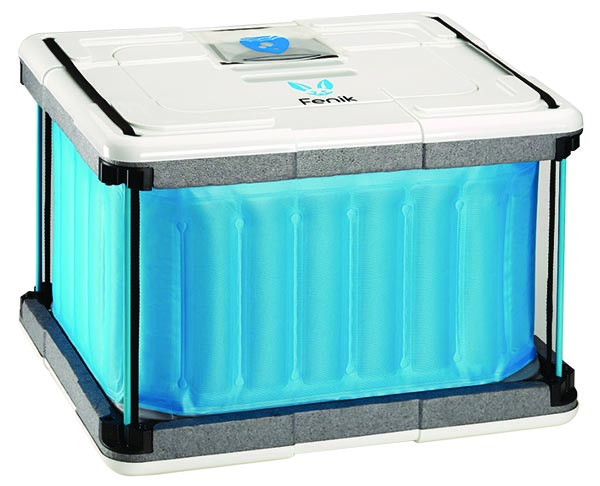
The Yuma No-Ice Cooler assembles easily and needs only water for evaporative cooling. The water is stored in the cooler’s walls and lowers the internal temperature 10-20 degrees — or more in drier environments.
Startup Spotlight: UAV-IQ
Using military-developed technology, UAV-IQ combines high-tech field surveillance, environmental sensors and specialized software to help farmers keep a close eye on their crops. Pinpoint imagery allows farmers to focus on problem areas — locating issues such as water puddling or the beginning of a disease outbreak — and address them before they spread. Information sensed by the drone, including images that show detail down to individual leaves, can be transmitted to tablets or other tools used by farm staff anywhere in the field. We caught up with Andreas Neuman, co-founder and CEO of the Food+City Challenge Prize 2018 winner, to get its latest news.
What’s your founding date?
April 2016.
How big is your team?
Five people.
What problem are you solving?
Precision agriculture has proven to be highly effective for growers who practice it, but many growers perceive pricing or lack of training as barriers to adoption. Starting with drone-based remote sensing (which tells growers where their crops are healthy and where they’re stressed), UAV-IQ makes precision agriculture technology accessible and implementable within existing workflows to growers of any size and sophistication.
What’s been the biggest surprise about running your business?
That there are so many people genuinely interested in helping young companies get started.
What part of the food system are you in?
We focus on helping growers.
What was the big idea that got you started?
That one of the most fundamental problems for farmers — identifying where their crops are struggling and targeting their treatments precisely where they’re needed — was a solvable problem by using properly equipped to drones to rapidly scout fields.
Who are you competing with?
Inertia — sticking with an inefficient status quo — is our largest competitor. We also compete with satellites and other imagery providers.
The coolest food system innovation I’ve heard of is…
The use of hyperspectral sensors to identify specific disease, ripeness levels and other qualities while the crops are growing.
The scariest thing about today’s food system is…
Lack of diversity.
What’s your latest big news?
We are starting to provide a new service that utilizes drones to drop biological control agents (beneficial insects) to suppress pest populations in California.
What’s the best advice you’ve received?
If it’s not a “hell yes,” it’s a “no” when contemplating early employees and partners.
What advice do you give to potential startup founders?
Focus on building the best team before focusing on building the best product or service.
Startup Spotlight: Vinder
Founded in Port Townsend, Washington, by Sam Lillie, Vinder connects home veggie gardeners with folks who want to buy that fresh produce. The app brings together community members who are interested in ultra-local food and reducing food waste. It also boosts the local economy by opening up a revenue stream for green thumbs who connect with their neighbors to share their garden’s bounty. We recently reached out to the 2018 Food+City Challenge Prize contestant to find out how things are going at Vinder.
What’s your founding date?
January 21, 2018.
How big is your team?
Four full time.
What problem are you solving?
Food waste, cost and food insecurity.
What’s been the biggest surprise about running your business?
As much as I heard and read about it, the investor “run-around” has been my biggest surprise. Most professional investors I’ve had the privilege to speak with don’t give a solid “no.” They give advice and information, which is great because it helps hone the pitch and business plan/strategy. But it may not be the right type of advice that works for your company or be useful when approaching other investors. It ends up being a massive time/energy zap.
What part of the food system are you in?
Vinder is situated in the distribution of hyper-local produce — neighbor to neighbor. Yet, we do not own any delivery vehicles or own any inventory.
What was the big idea that got you started?
My community, Port Townsend, Washington, had a big problem accessing local organic produce for a reasonable price. Vinder was created not to be some massive, disruptive company, but to solve a problem in my community.
Whom are you competing with?
For convenience, we compete with HEB or Whole Foods. For freshness and locality, we compete with farmers’ markets. However, we see ourselves as a tool to help those small vendors reach more customers and increase sales direct-to-consumer.
The coolest food system innovation I’ve heard of is…
a company called Vinder that allows you to buy, sell or trade homegrown produce and neighbor-made goods directly from your neighbors. It’s free to sign up and free to sell or trade.
The scariest thing about today’s food system is…
we have normalized an absence of connection to our food system. We have no idea what is actually going into the soil in which our food is being grown (or what chemicals are being sprayed on them), who is growing it or where exactly it is being grown.
What’s your latest big news?
We are now a user-owned and -operated company. After successfully closing an Equity Crowdfunding round of more than $85,000 via WeFunder and receiving matching angel investments, Vinder issued preferred shares to users who are taking a stand against our current food system and are opting to create the neighbor-made food system of the future. Vinder is also now available for iOS and Android.
Best advice you’ve received?
In the words of entrepreneur and venture capitalist Paul Graham, “Focus on getting 100 people to love you rather than 1,000 people to kind of like you.”
What advice do you give to potential startup founders?
You don’t need a lot of money to start a company. First, come up with the lowest-budget minimum viable product and validate that the market needs your solution. Then build out manually, followed by tech. Let tech be a solution to make a process more efficient rather than the primary focus.
Startup Spotlight: Grit Grocery
Grit Grocery has put a gourmet grocery into a food truck. Working directly with farmers and other local producers, Grit Grocery launched a fleet of grocery trucks to bring fresh ingredients and meal-kit bundles into urban areas — starting in Houston — underserved by traditional grocery options. We visited with cofounders Michael Powell and Dustin Windham to find out how they’re doing after competing in the Food+City Challenge Prize in 2018.
What’s your founding date?
Founded in 2015, pilot in 2016-2017, full-scale launch in April 2018.
How big is your team?
Five co-founders, plus a team of seven who drive trucks, sell food, work in the kitchen and organize the warehouse.
What problem are you solving?
Grit Grocery trucks bring fresh local food products to urban locations that don’t have food retailers or that have stores that carry mainly processed nonperishable food. We’ve designed a shopping experience that provides ideas and inspirations for healthy, easy, fresh, local-food meal solutions, tonight.
What’s been the biggest surprise about running your business?
A lot of local brands are producing and growing great food, but they don’t have access to customers through a retail outlet. We get a lot of these groups asking to get their products on the truck. We also hear from apartment complexes and developers requesting that Grit be at their residences. We already have a long waiting list of sites.
What part of the food system are you in?
Grit Grocery is a retail destination. We source directly from local farmers and ranchers as much as possible. As a retailer, we are at the front line of customer interaction.
What was the big idea that got you started?
Why is it so difficult to put together all of our meals over the course of the week with fresh, local, healthy food? There’s something wrong with food retail — and with the traditional grocery store model, in particular — that makes it hard for so many people to eat healthy, find local foods and put together meals. While we’ve seen a lot of innovation in how food is grown and produced, retail innovation has been lacking. New online options are promising but lack the flexibility to be a good fit for today’s urban life. This is where Grit Grocery started.
Whom are you competing with?
Traditional grocery stores and other big-box stores are obviously the main source of food retail. Organic and specialty grocers offer food more in line with what Grit offers, but they mainly carry nonlocal food and a lot of processed food. Farmer’s markets are not competitors, but they do overlap with Grit’s offerings — though their shopping experiences are not strategically designed for customers. Online grocers and meal-kit providers are similarly flexible when it comes to delivering food retail access, but they also come up short in responding to a customer’s daily food issues and needs.
The coolest food system innovation I’ve heard of is…
Coolbot. Build a poor man’s walk-in cooler.
The scariest thing about today’s food system is…
Nowadays, food is everywhere you look, from the airport to the hardware store, schools to the office. But most of it seems to be processed junk. Society is busier than ever and we have created more on-the-go occasions to eat food than can possibly be healthy, or that can accommodate real food solutions. The processed food industry likes that and profits enormously.
What’s your latest big news?
We released a Chatbot in October 2018 that allows people to use their smartphone to order a meal for pickup at the truck. They can also use the Chatbot to find the Grit Grocery truck and order a Grit-Together, a unique dinner party event for small groups.
Best advice you’ve received?
Be resilient. That’s what grit is all about. Keep trying new things, putting ideas into action and watching to see what works and what needs further improvement.
What advice do you give to potential startup founders?
Good strategy and technology are not enough. People and their food habits are kind of weird and hard to predict. You need to test and get in front of people, see how they really engage with your food or product in their daily lives.
Grocery Stores: The IoT of Food
Tired of comparisons to the much flashier internet, supermarkets are working hard to ditch their unsexy descriptor: big-box stores. These days you’ll find a Murray’s Cheese outpost in Kroger, a kombucha bar at Whole Foods and poke bowl counter at Albertsons. All these flashy foodie options are good distractions from what’s happening under the hood, which is that grocery stores — the physical four walls — are going digital.
Ready or not, consumer packaged goods (CPGs) — those pre-wrapped items found in so many center aisles — are nudging grocery stores into the future. And so is Amazon. The online retail giant’s entrance into brick-and-mortar supermarkets forced every retailer to innovate or die.
It’s been decades since the internet changed the way we shop, so why are American retailers slow to get on board? The founders of Trax, a retail technology firm based in Singapore, might point to our love for the status quo. The U.S. Census Bureau’s figures (from second-quarter 2018) bear that out, indicating that e-commerce sales account for 9 percent of total sales. That means 91 percent of sales still occur in stores. Maybe U.S. retailers aren’t scared yet?
In contrast, the true retail visionaries are found in Australia, Brazil and China. Yair Adato, Trax’s chief technology officer, says China is five years ahead of the U.S.
“In China, you can go to a store, scan what you want to buy, put it in your cart and they’ll deliver it to your home in 30 minutes,” Adato says.
Soda giants were early pioneers in creating speedy distribution channels. Yet despite raking in billions of dollars in sales, they couldn’t point to exactly how, when or why. Brands were guessing what was on the shelf, how much was left, what was selling at what times of day and even what their competitors had on the shelf. Short of physically walking in to every single store in the world and snapping a photo of the soda aisle, they had no idea what was happening.
In some countries, brand managers might have trusted their employees when they said they went to a store and reported that everything “looked good.” But in China or Brazil, managers wanted visual proof. “It’s a culture thing,” said Adato. “I want to know that I paid the right bonus to my employee.” In Australia, instead of proof, they wanted to improve processes using data analytics.
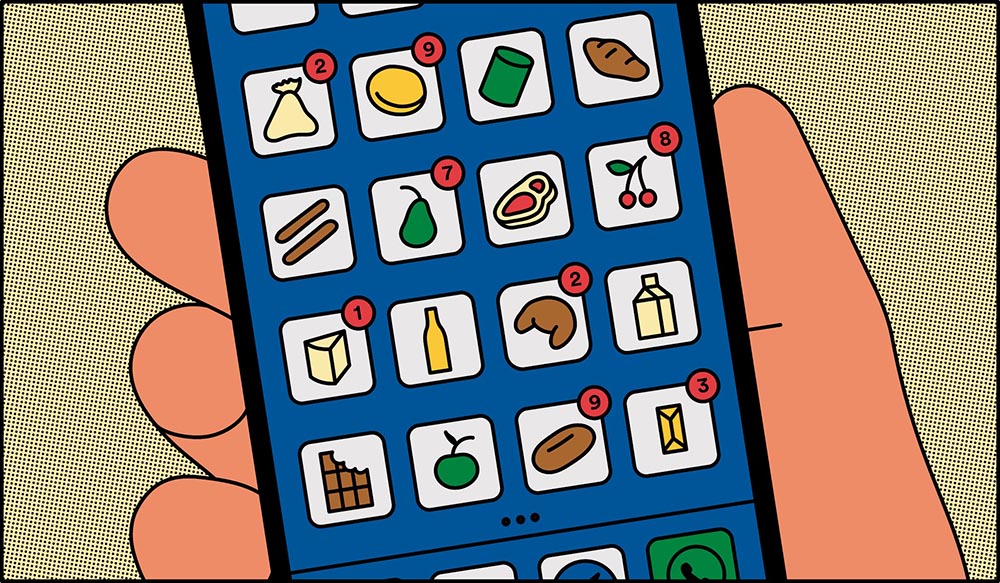
But it was a little bit like the chicken and the egg. Brands wanted to harness data to make better business decisions, and stores wanted to evolve. They saw that online shopping was more engaging for customers than a trip to the store, but it was an expensive undertaking with no clear financial incentive for either party. While a brand like Coke might want to push retailers for improved ways of tracking its sales, the reality is that it has only a few thousand SKUs (aka, inventory items). Target, on the other hand, has hundreds of thousands. But before it could become cost-effective for retailers to adopt new tracking tools, the technology — sensors, beacons, cameras — needed to advance.
In 2010, Trax began offering its image-recognition software, which incorporated physical images (taken by humans) and store data (including store layout and register sales), then stitched them into one actionable gold mine. For the first time, sales teams could have detailed product and category information including out-of-shelf, share-of-shelf, planogram, pricing and promotional compliance delivered to their mobile phones in real time. This was something managers could trust.
“In a grocery store there is so much dynamic movement,” says David Gottlieb, vice president of retail at Trax. “Something like 40 percent of products will change — a new item, or line extensions and new packaging.” Gottlieb deeply understands the in-store problem.
“Manufacturers are using us, even without feet on the street [robust sales teams] to collect information to get true metrics as to what degree their customers are making perfect stores, and that incentivizes the sales team to do a better job,” explains Gottlieb. He joined Trax in 2018 when the company purchased his startup, Quri, which used a crowdsourcing model to leverage large groups of people to perform paid “microtasks,” like taking images of store shelves.
With the acquisition, Trax now has half a million shoppers active in 6,000 U.S. cities with access to 150,000 stores. Despite this, the company is moving beyond human photographers and is beginning to install battery-operated internet-connected cameras underneath the shelves. The cameras take photos every minute of the day.
“It creates opportunity for use cases — like intra-day replacement,” CTO Adato says. “Our customers are looking at how long things last. That’s an indicator of lost sales that wasn’t available.” CPG clients that use Trax report their out-of-stock rates reduced by 10 to 15 percent and category sales (e.g., soda, crackers or condiments) increased by 3 to 5 percent.
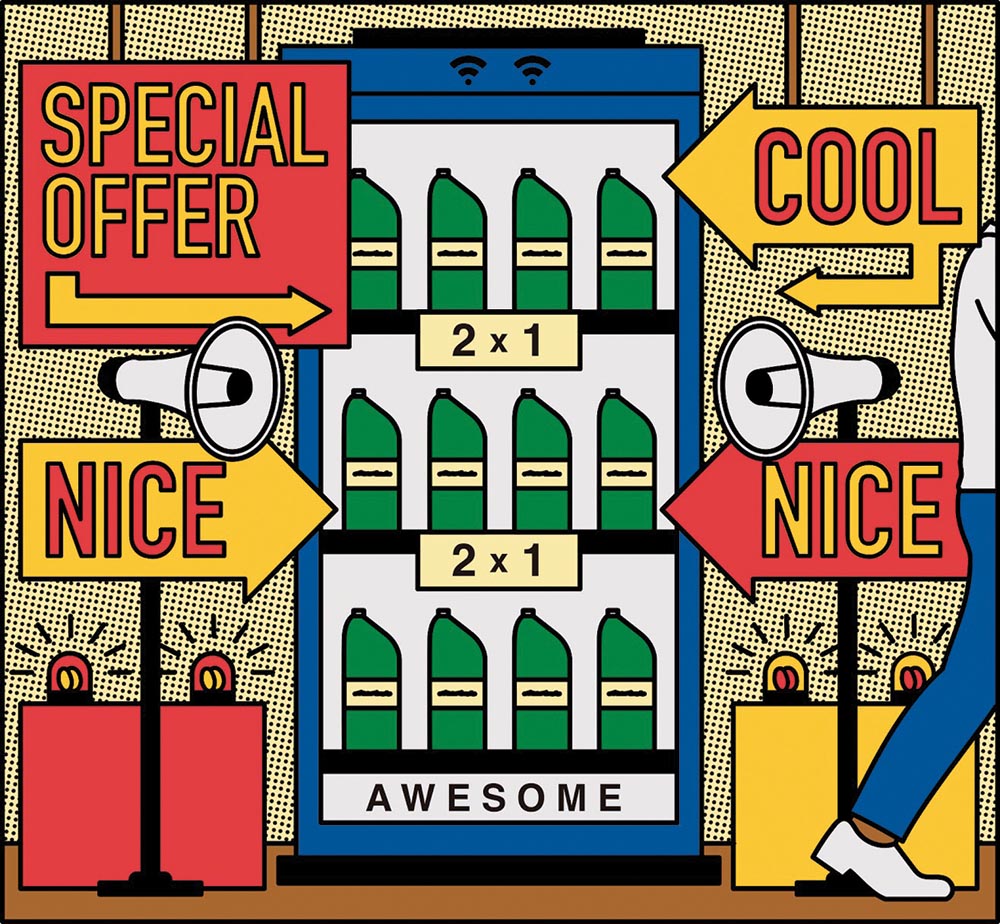
While Trax was homing in on the perfect store, Shelfbucks, an Austin-based technology startup, was grappling with another unknown: marketing. Brands were spending money on in-store product merchandising displays to promote their products, but they had little idea what worked or whether they even made it to the floor. Erik McMillan, the CEO of Shelfbucks, made a fairly compelling argument for his technology: “You spend a $100, and you’re wasting $50.”
Through a fortuitous meeting with two of the biggest display producers in the U.S. — West-Rock and Menasha Packaging Co. — McMillan gained access to an untapped business opportunity that helped brands answer their age-old question: Does my marketing have an ROI?
If it sounds like meta-marketing-speak, that’s because it is. You send a physical piece of signage into your supply chain and on the other end it arrives at a store. It’s supposed to be put up somewhere, on the end cap (those shelves at the end of each aisle often filled with promotional items) or the shelf, but maybe it never makes it out of the back room. With no analytics, you’re left hoping for the best. Given the amount of money spent on merchandise promotion whose effectiveness can’t be tracked — a waste factor of 50 percent, according to McMillan — in-store marketing isn’t much better than shooting in the dark.
In coordination with brands, Shelfbucks puts sensors on displays, and in coordination with retail customers, it places sensors throughout stores. The sensors track the movement of the signage — whether it’s in the back room or out on the floor. When there are problems, Shelfbucks gets an exception report, which is sent to the store manager as an alert in the store’s task management system.
“We are literally generating data about something (store managers have) never seen before,” McMillan says. In 2014, one of Shelfbucks first customers was CVS Pharmacy; today Shelfbucks is in CVS stores nationwide. Fresh food is his next target. “We are focused on the three national chains: Kroger, Albertsons and Ahold USA.”
How these changes benefit consumers is open for debate. Perhaps it’s as simple as knowing our favorite soda — Dr Pepper Vanilla Float, perhaps — will never be out of stock again. And while it may seem as if the CPGs of the world are driving change, McMillan reminds us otherwise.
“Brands can’t force retailers to do anything. Retailers have the power. That’s a really important point,” McMillan says. “The brands have the money, and the customer buys their product, but the retailer owns the shopper.”
 For a deep dive into grocery store technology, read Joseph Turow’s book, “The Aisles Have Eyes.”
For a deep dive into grocery store technology, read Joseph Turow’s book, “The Aisles Have Eyes.”
Related Stories
Markets Go It Alone
The buzzword for today’s brick-and-mortar retailer is “frictionless.” It refers to a shopping experience where customers can come and go with ease. It means not waiting in lines and never having to take cash or a credit card out of your wallet. Sounds dreamy, right? It’s happening now, and here’s where to find it.
Zippin: San Francisco, CA
When Krishna Motukuri’s wife sent him to Trader Joe’s for a bottle of milk, he came back empty-handed. Why? The checkout lines were too long. When he dug into a study from MIT that found 37 billion hours were lost waiting in line every year, he was stunned. Wanting to help solve this problem, Motukuri took his computer science background and co-founded Zippin.
But while most of us think of the physical store as the end goal, Zippin only wants to be the powerful back end. This month, the startup launched a basic concept store in San Francisco to showcase its technology. To get through the slick entry gate, customers scan a QR code on their mobile phones. Once identified, customers can pick up a can of mango La Croix, a bag of sea salt Boomchickapop popcorn or perhaps a deli sandwich. Soon after they pass through the exit gate, an electronic receipt is sent to the Zippin app. And that’s it. Zippin’s AI-based software platform will allow retailers to deploy a “frictionless” shopping experience that wipes out time spent standing in line. According to Motukuri, operators of physical stores would need only minor upgrades — weight sensors on the shelves and overhead cameras — at a cost of about $25 per square foot. These enhancements, along with Zippin’s software (charged on a monthly subscription) will tell a retailer precisely what has been taken off the shelves.
Amazon Go: Seattle, WA
In January, Amazon opened its first cashier-free store on the ground floor of one of its many offices in downtown Seattle. Called Amazon Go, the store is a free-for-all of convenience foods, meal kits; even beer and wine. As reported by Recode, by being first on the scene, Amazon hopes to “carve out a loyal customer base outside of its website and inside a physical store where the vast majority of food and grocery shopping still occurs.”
Shoppers with the Amazon Go mobile app gain access to the store with a QR code, shop for snacks, take whatever they want and then they “Just Walk Out” — the name for Amazon’s technology. This includes overhead cameras, weight sensors and deep learning technology that detects what shoppers take off the shelves or if they change their mind and put something back. When customers leave the store, the “Just Walk Out” technology debits their Amazon account for the items and sends a receipt to the mobile app. In August 2018, Amazon opened a second location in Seattle. Expect subsequent stores to crop up in San Francisco, Los Angeles and Chicago, where Amazon has already signed leases for two locations including one in the famed Willis Tower.
The Moby Mart: Shanghai, China
While Amazon wants to help us eat more snacks, Wheelys, a Stockholm startup, is developing a market on wheels stocked with hip sneakers, fashionable magazines and yes, milk and cookies. In collaboration with Hefei University of Technology and tech firm Himalafy, the team created a roving, train-shaped convenience store on the university campus, 450 miles west of Shanghai, that can be located using an app. Self-driving, drone-equipped, powered by solar and always open, The Moby Mart is a tech nerd’s space-age fantasy come true.
Wheelys’ foray into automation began with modular-bike cafes. The easy-to-schlepp coffee carts could be moved around Stockholm for anyone not ready to commit to a lease. It was so popular that by 2016 Wheelys had sold 550 bikes. Looking beyond their Nordic country for their next innovation, the founders settled on China because of its large population and the country’s near-ubiquitous adoption of phone payments. While The Moby Mart is still running in beta, Wheelys is moving ahead with what co-founder Tomas Mazetti is calling “magic tech,” or hidden tech.
“At the moment, we believe that hidden technology is the next revolution, not just in retail but in many industries,” Mazetti says. “Imagine walking in through an open door, seeing a beautiful pair of sneakers, trying them on and then leaving the store with them, without ever having talked to anyone or seen any security.”
Farmhouse Market: New Prague, MN
Thankfully, not every automated market is so hands-off. In Minnesota, married couple Kendra and Paul Rasmusson opened Farmhouse Market in 2015. The Rasmusson’s wanted to open a store that offered delicious goods from local farmers, but they knew that staffing a store (and raising their three small children) would be a big challenge. Undaunted, the pair came up with some ingenious ways to run a mostly automated farm store that has some human touches.
First, there’s a membership base — $99 to join and then $20 annually. Members (now in the hundreds) can drop by 24-7 and receive a 5 percent discount on all purchases. Nonmembers can get in on the action at specific hours during the day when there is an actual person behind the counter. And it’s not all that high-tech: Members and farmers use a keycard entry system, and motion-activated lights and tablets enable self-checkout. (There’s a one-theft-and-you’re-banned-forever policy.) The store, only 650 square feet, is monitored with remote cameras, and inventory is tracked digitally. As with every one of these stores, humans are still quite important. Ms. Rasmusson prices items from home and texts orders to suppliers.
Related Stories
How They’re Watching Us
In the early days, retail stores tracked customers via turnstiles. After turnstiles, some stores turned to electronic beams, while others used light sources to count traffic in aisles. These methods were largely impersonal — they didn’t capture our faces, our phones in our pockets and they didn’t connect the dots: Suzy likes to shop on Mondays, has three kids and prefers to buy name brands. These days, our favorites stores have that information and a whole lot more. Here are ways we’re being tracked:
 Wi-Fi
Wi-Fi
While you’re wandering the aisle, your phone is busy looking for a Wi-Fi signal. Retailers can use this ping to track us as we wander the aisles wondering what to eat for dinner. This can be a good thing, says Mike Lee, an expert in supermarket behavior. “If done right, these tracking technologies can provide a wealth of data that can inform merchandising and layout decisions aimed at creating a more efficient shopping experience,” he says. Using GPS and Wi-Fi tracking tied to shoppers’ mobile devices allows retailers to deliver targeted messaging, advertising and coupons in a more precise manner.
 Bluetooth
Bluetooth
Similar to Wi-Fi, Bluetooth is a wireless technology that allows our movements to be tracked by the persistent ping from our phone to any Bluetooth beacon within range. Although a weaker signal than Wi-Fi, Bluetooth is a good backup when Wi-Fi is disabled. If both of these are disabled on our phones, our phones still give off a traceable signal. According to Joseph Turow, in his book, “The Aisles Have Eyes,” our phones’ own signals can establish location within 150 feet. As long as there are several access points, Wi-Fi is accurate to within a few meters and Bluetooth can locate you to within a few centimeters. This means eventually you’ll be reading the back of a box of cereal and simultaneously receiving an alert to get a dollar off that very box.
 Apps on Our Mobile Phones
Apps on Our Mobile Phones
Most cell phone makers disguise our Bluetooth signals using randomized codes. But if you have an app downloaded then you’re fair game. Recently, Amazon connected its Prime membership to its Whole Foods stores, offering discounts on certain grocery store items. How did they want us to connect our accounts? Using the Whole Foods app on our phone. If your location services are turned on, you can bet the retailer is watching you.
 Sensors & Beacons
Sensors & Beacons
Most cell phone makers disguise our Bluetooth signals using randomized codes. But if you have a store app downloaded onto your phone then you’re fair game. Recently, Amazon connected its Prime membership to its Whole Foods stores, offering discounts on certain grocery store items. How did they want us to connect our accounts? Using the Whole Foods app on our phone. If your location services are turned on, you can bet the retailer is watching you.
 Hidden Cameras
Hidden Cameras
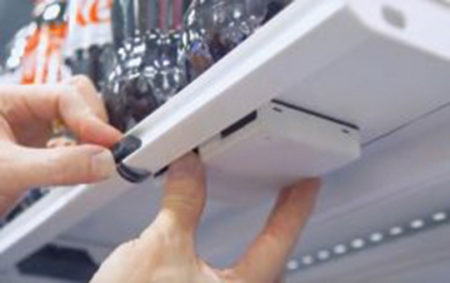 Trax, a Singapore-based retail technology firm, makes battery-operated, wireless cameras. Mounted underneath the shelves, these cameras take pictures that allow retailers to know what’s in stock and out of stock (using sensors). The body of the camera is the size of a deck of playing cards. The camera lens, only 1 by 1.5 cm., extends out from the battery pack via a narrow ribbon and fits onto the edge of the shelf. The software’s image recognition enables any photos with people to be deleted immediately to protect shoppers’ privacy. The cameras talk to each other and to local servers inside the markets so that Trax can accelerate image processing on site to deliver real-time metrics.
Trax, a Singapore-based retail technology firm, makes battery-operated, wireless cameras. Mounted underneath the shelves, these cameras take pictures that allow retailers to know what’s in stock and out of stock (using sensors). The body of the camera is the size of a deck of playing cards. The camera lens, only 1 by 1.5 cm., extends out from the battery pack via a narrow ribbon and fits onto the edge of the shelf. The software’s image recognition enables any photos with people to be deleted immediately to protect shoppers’ privacy. The cameras talk to each other and to local servers inside the markets so that Trax can accelerate image processing on site to deliver real-time metrics.
Related Stories
Side Dish Gallery: Mom & Pop Shops
As we conceived of this grocery-themed issue, our minds naturally went to the tech-laden big-box stores. But then we remembered how grocery began: the small, independent mom-and-pop shop. Here’s a selection of our followers’ favorite small groceries — some stores are thriving, while others are shuttered, perhaps depending on economic realities of the communities they serve.
Photos 1, 4, 5 and 7 by Robyn Metcalfe; photo 2 by Joan Phaup; photo 3 by Charlotte Herzele; photo 6 by Cole Leslie; photo 8 by Julie Savasky.
Trending: Grocery Stores, Meet Smart Kitchens
As i was leaving for the Smart Kitchen Summit in Seattle in October, my toaster broke. The ashen heating elements failed to flicker for one last slice of bread. In fact, all toasters — those kitchen staples since 1893 — may be on the way out.
Based on what I saw at the Summit, toasters — and practically all other kitchen appliances — are about to be unfamiliar in every way. Manufacturers promised that my appliances will recognize my face and voice to know my food preferences and biomedical data to produce the most perfect toast the world has ever tasted. And it won’t be a toaster, but a device that may toast, boil, sous-vide, fry or braise. Transforming ingredients into meals will be the goal of our new Smart Kitchen.
Imagine this: Your kitchen in 2030 will use voice activation to operate the handful of kitchen tools and appliances that remain after designers remove wires, Instapots, trash cans and microwaves. Your kitchen will be smaller and wireless, maybe even portable. Croatian startup Dizzconcept makes portable, pop-up kitchens that fit into any space. Perhaps our new homes will come without kitchens, and we’ll simply select these movable, modular, personal kitchens to drop into our new spaces.
Countertops will be charging surfaces for your devices. Screens will be voice activated (so you don’t have to touch a screen with fingers sticky from the syrup dispenser). These new surfaces will show what’s in your refrigerator and pantry, with data about the shelf life of all perishables. Your fridge will sense when you need to buy more milk — and will order it for delivery when your house knows you will be home. Garbi, another startup, is working on a trash can that recognizes what you discard, sorts it for recycling and reorders items.
Recipes will be personalized. No more single recipes from that book on the shelf, printed on paper, that may be good for someone but not you, with your recent calcium deficiencies and preference for mild flavors. Your kitchen will know what’s in your pantry and will design what to cook based on its knowledge about your health and preferences. Big Data for food has arrived.
Where does that leave grocery stores and restaurants? Many will be left out of this new food landscape, while others will get smaller and prepare food for delivery services. Still others will become experience centers, with more grocerants (restaurants in grocery stores) where you select your ingredients and the grocery store chef cooks it for you to eat in the store. Grocery stores, themselves smarter because of all the customer data they now own, will be fulfillment centers, some modeled after Amazon, and many integrated into Amazon’s platform.
Because your kitchen will be so smart, it will become a commerce center. You will shop from home, with tools such as augmented and virtual reality that give the sensation of being at the store. You will smell and touch what you buy, without the headache of parking or standing in a checkout line.
Perhaps these new kitchens will be maker spaces, educational centers that will teach us how to cook, what to cook and inspire us to tell stories around our food making. We’ll be content makers for a new media — food — a far cry from the static food photos we post on Instagram. We’ll stream our cooking experiences in our kitchens.
And who really likes to peel potatoes or chop onions? Food printers now produce fresh food from organic ingredients, freeze-dried and pulverized. The Last Mile is now no mile at all.
Kitchens, grocery stores and restaurants will be hubs for innovation. The engineers and designers at Bosch, GE, Kenmore and Siemens are fiddling with a whole new world in our former kitchens. Appliance makers have become hardware and software companies. Grocery stores and restaurants will fill new roles as they adapt to these new “platforms,” as our kitchen counters and frying pans will come to be known.
We might miss the joy of cooking. Or the satisfaction of making. Or the delight of creativity and the unexpected. Where along the road of automation will we pause? As our kitchens change into service centers that defrost and heat food delivered to our home, will we yearn for the temperamental toaster?
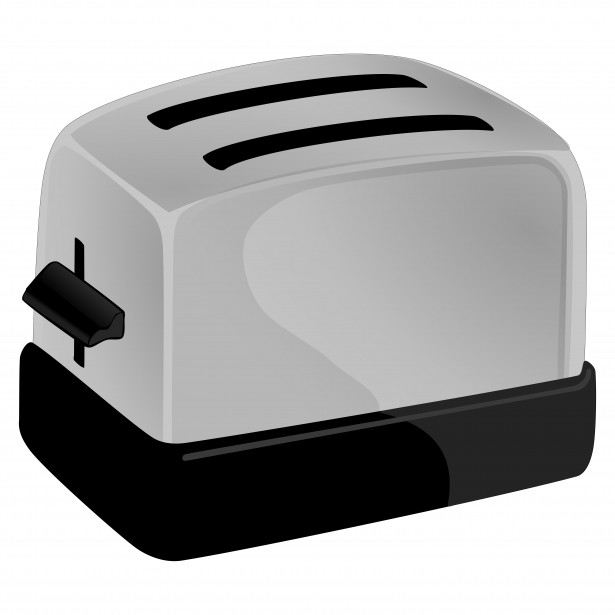
Food for Thought: South End Grocery
Dody and Steve Hiller are “mom and pop” of a small grocery store in Rockland, Maine, a fishing village turned tourist town. Fishermen still live and work there, but a few decades ago the town looked toward its art community for income and began shedding its image as a working waterfront.
South End Grocery has endured these changes, competing with modern mega-markets and maintaining a close connection with its community. The store thrives in a city whose 7,000 year-round residents have an annual median income of just $30,000, despite its new persona as an arty destination.
On a steamy summer day, customers form a long line at the lone cash register. The Hillers’ store is the third-largest grocery store in Rockland behind Shaw’s and Hannaford’s, two big supermarket chains. Despite its competitors’ being so large, South End seems to carry much of what they do — and more. You can find baseball memorabilia in one case, aisles lined with beer-packed coolers that share space with bananas and a bustling deli at the back of the store.
A bright blue runner leads customers through its single doorway, in which one often finds a community volunteer, raising funds for the animal shelter or a bereaved family that just lost a child to cancer. Sharing their space is one way the Hillers maintain a connection with their customers, about 75 percent of whom are fishermen. When the economy crashed in 2008, the Hillers saw fishermen struggle to make ends meet and decided to address their needs, seeking lower-priced products whenever possible.
Dody runs the deli area, which is responsible for 60 percent of their revenue, preparing meatball sandwiches and breakfast sausages. Son Shawn manages the bookkeeping and tech side of the business and boasts an impressive knowledge of local craft beers, which may be the reason South End is the top seller of beer kegs in the region.
Steve is the logistics guy, always calculating how much to order and when, then figuring out where to store it. He’s always on hand to meet vendors and distributors who pull up outside. In fact, if truck drivers roll into town too early to deliver their loads at Shaw’s, they rumble down to South End, where Doty greets them with hot coffee.
When a Walmart store came to the area a few years ago, the Hillers thought their store might be threatened. But their business recovered and carried on as usual, holding steady every year since then. Their biggest fear is the arrival of a Dollar General Store. Chances are, though, it won’t come with its own mom and pop.
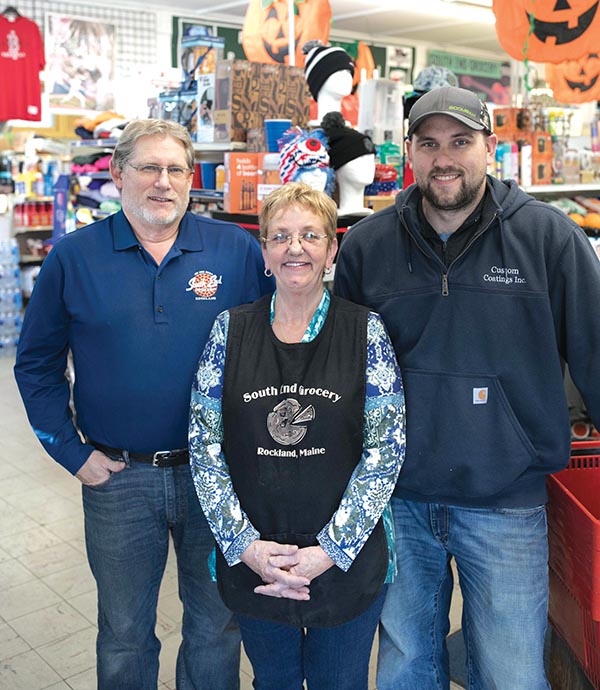
Dody Hiller (center) at South End Grocery, the small supermarket in Rockland, Maine, that she owns with her husband, Steve (left), pictured with their son, Shawn (right). For more than 20 years, the Hillers have served their waterfront community, weathering the changes that have seen Rockland transform from a fishing village to an arty destination.
Food Movers: Confessions of an Instacart Shopper
He’s standing near the fresh herbs, staring at a forest of tiny green bundles, scratching his head, looking up and down from his phone. I offer some help, and he asks, “Where’s the basil?” After I help him choose a perky bunch, he thanks me and mumbles, “I hate shopping for vegetarians.” He’s wearing a shirt emblazoned with the Instacart logo.
Twenty minutes later I’m back in the produce section, and the man is still staring at herbs, looking defeated. “She wants fresh sage, not dried sage. What is it with these vegetarians?” he grumbles. In his defense, none of the herbs are labeled. I point out the fresh sage and wish him luck.
Those increasingly ubiquitous personal grocery shoppers roaming the aisles at a supermarket near you are paid a per-order bonus in addition to the minimum wage they earn per hour. The more orders they can complete in an hour, the more money they can make. But when they can’t find the right fresh herbs, like the shopper I encountered, their slowed quest results in fewer completed orders that day: in other words, money left on the table.
“If you do enough orders in a day and you’re really fast, you can make a lot of money,” explains a different Instacart shopper nearby.
Personal food shopping services have grown by leaps and bounds in the last few years. In Austin alone, six companies offer a range of personal shopping and delivery services at more than 10 stores. Nielsen’s Food Marketing Institute predicts that by 2025, 70 percent of consumers will be purchasing consumer packaged goods online. According to One Click Retail, Amazon already holds 18 percent of all online grocery sales.
That said, grocery shopping can be deeply personal. Customers have habits, preferences and quirks that retailers must accommodate with their third-party hand-picking-produce abilities.
“Ask anyone at HEB if they’ve had to find tahini and they’ll tell you, yes, it’s the hardest thing to find, and everyone wants it.”
As one shopper explains, “The people at Whole Foods are, well, ‘Whole Foodsie,’ ordering $50 jars of honey” and giving picky instructions about their produce. Because of this fastidiousness, online grocers started out offering only consumer packaged goods — pantry items like rice, beverages and breakfast cereals. But lately, most businesses have developed strategies for also offering fresh produce.
Still, online grocery shopping has room to grow. Less than 10 percent of customers in North America buy their fresh groceries online, according to Nielsen. Companies like Instacart have developed technologies that enable customers and shoppers to communicate as the shopper moves through the store. It’s a handy way to reassure customers that they’re getting exactly what they want. But shoppers may find their flow disrupted by picky comments such as, “Can you make sure to get the salmon that’s fourth from the back with the horizontal grill marks?” Or more frustrating: “I’m allergic to that brand.” Customer demands can get extreme, and shoppers feel the need to be polite even as they try to round up everything on their list.
Each company operates slightly differently for shoppers, who tend to stick to one company and one unique store. One exception is Burpy, which operates like the Uber of grocery delivery. Burpy shoppers may fulfill one order with products from a variety of stores. Shoppers are also paid differently depending on the company, ranging from minimum wage with bonuses per order, to flat hourly rates, to tips only. Shoppers generally work flexible schedules, which makes it an attractive second job or a good fit for students.
Regardless of payment criteria, speed matters. Shoppers create efficient strategies for moving through stores. Texas regional grocer HEB even has a digital platform that sorts a customer’s order according to the store’s unique layout, creating a “perfect workflow.” But despite deep store experience and superior technology, some items are still elusive to shoppers.
“Tahini,” one shopper says. “I’ve worked at five HEBs, and every time it’s a wild goose chase. I think it likes to hide itself. Ask anyone at HEB if they’ve had to find tahini and they’ll tell you, yes, it’s the hardest thing to find, and everyone wants it.”
Even when shoppers find everything on the list, customers must still get the groceries home. Because customers see only an itemized list, they often don’t realize how large their order is — an especially risky scenario when it’s for a pickup service or orders from Costco. Sizable orders of bottled beverages pose serious challenges.
“They pull up, and we’re dragging out three carts of groceries, two of which are full of bottled water, and they pull up in a VW Bug,” complains an HEB Curbside shopper. Amazon Fresh shoppers experience the same problem: “People will order 40 boxes of La Croix seltzer, and it’s crazy! You need eight shopping carts and that’s a lot of work.”
Despite the interconnected relationship between shopper and customer, an interesting disconnect remains. Shoppers frequently work in stores in which they do not personally shop, and often shoppers are asked to select items out of their comfort zone, like fresh herbs or fine wine. It begs the question: Can personal shoppers overcome these barriers to make this platform the future bread and butter of grocery shopping?
Food Movers: Paper or Plastic
The plastic grocery bag as we know it today comes from Sweden. Working for a plastics company called Celloplast in 1965, engineer Sten Gustaf Thulin developed a technique for sealing a folded tube of plastic and punching out a hole to create sturdy handles.
The polyethylene bag was waterproof, less likely to tear than paper, cheap to make and light to ship — and so cheap that stores have been giving them away since Day 1. Alas, they are so light that they blow into trees, fences and waterways with ease.
These single-use bags that revolutionized the retail world have now polarized it.
As one of the more visible forms of litter, plastics bags have over the past decade become the target of environmentalists around the world who advocate banning them. Some of the bag bans passed in cities such as Austin have been challenged by lobbyists and lawmakers who argue that plastic bags are more useful than they are harmful to the environment.
Even though bag bans in places like China and California have led customers to reduce all bag use by upwards of 70 percent, critics cite numerous studies that have found that manufacturing and shipping paper bags is two to three times more harmful to the environment than making and moving single-use plastic bags.
For example, a single truck can transport two million plastic bags, but it takes seven trucks to transport the same number of paper bags. That works out to five to seven times more cargo weight on both sides of the chain — i.e., coming to stores as new bags and transported in the waste stream — as well as added greenhouse gas emissions.
Scientists use what is called a life-cycle assessment to determine the global warming potential and environmental impact of how different kinds of bags are made, transported, used and recycled. The United Kingdom’s Environment Agency compared different kinds of bags for a life-cycle assessment study in 2011 and found that you’d have to use a paper bag four times for it to be more environmentally friendly than a standard single-use plastic bag. And what’s more surprising? A cotton bag would have to be used at least 173 times. In other words, because of the intensive resources used to make and manufacture cotton bags, you’d have to use a cloth reusable bag 173 times to have the same environmental impact as a single-use bag.
But there are other factors to consider in that study: Plastic bags are more toxic in aquatic environments, and they break down into micropieces; however, paper bags require more water, energy and chemicals to produce, which can be toxic to the environment during the manufacturing process.
As is often the case, the solution may not be a simple binary choice between paper or plastic. For example, in some countries with bans, such as Morocco, you’ll find flimsy recycled paper fiber bags that feel like soft fabric and are biodegradable, while Canada is leading efforts to create a recycling stream for existing polyethylene bags.
Even if the bag bans don’t last, the effort to use more sustainable, reusable packaging to move our food will continue. That requires changing consumers’ and retailers’ behavior, no small feat in the grocery business.
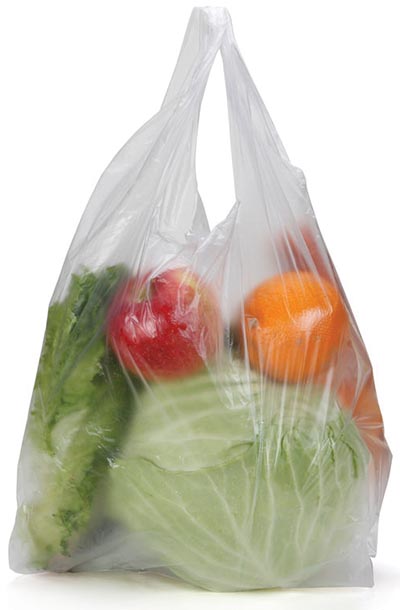
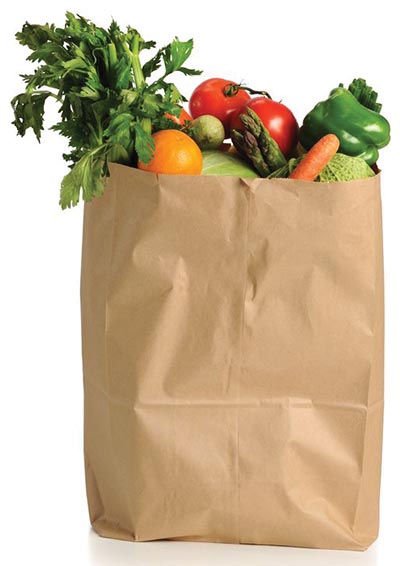

A cotton bag requires more resources to make and transport than a plastic bag. So many more, in fact, that you’d have to use it 173 times for it to be more environmentally friendly than a plastic bag. But, plastic bags are much more toxic to aquatic environments.
Food Movers: Keg Cycle
Few pieces of hardware are as synonymous with a good time as a keg. And while other carbonated fluids are stored in these aluminum or stainless steel tanks, when we hear the word keg, we think of one beverage: beer.
Nationwide, breweries opened at a rate of nearly three per day during 2017 — 997 in total — and each brewery has its own fleet of kegs. Each one of these vessels has a salmon-like lifecycle in which it leaves its homeland full of life and returns home depleted. Unlike a spent salmon, an empty keg can jump back in for another round. But like all too many migrating fish, many kegs never make it home. Of those 997 breweries that opened in 2017, 165 went belly up. For a company that’s barely covering its costs, keg loss can make the difference between a red or green bottom line for the year.
When a keg is filled at a brewery, it is ready to go out into the world and do its job dispensing beer to the people. A distributor facilitates its journey, which may include a retail outlet such as a bar, restaurant or liquor store — the first stop before its destination at a party by the lake or other #goodtimes. If all goes well, and everyone keeps their word, the empty keg will eventually return to its home brewery. If not, and the keg never makes it home, the brewery that owns it foots the bill.
An American-made stainless-steel keg can cost a brewery more than $100, and the average annual keg loss nationwide is about 6 percent, says Tim Cognata, business development director of the beer services company Satellite Logistics Group (SLG). This transformation from stainless steel to statistic ends up costing a lot more than the $30 deposit normally collected when the brewery lets a keg go. For a small brewer, he says, replacement costs for kegs can add up quickly and take a big bite out of the profit margin.
SLG offers a service called KegID, introduced in 2012, which uses scannable barcodes to keep track of a keg’s movements, including timestamps at various stops in the keg cycle and notes about maintenance and contents.
If a keg is not returned, services like KegID provide concrete data for tax-loss purposes. Even though breweries may lose more than 5 percent of its fleet of kegs, Cognata says, most breweries are writing off a mere 1 to 2 percent drop in keg numbers because they don’t have the documentation to prove greater losses. If breweries had tracking data for each keg, they could claim all of those lost vessels without worrying about facing a penalty for overclaiming, in the event of an audit.
The same data that allow a brewery to prove its loss to the IRS can also serve as evidence with which to confront a distributor for losing kegs. Sometimes a retailer collects a larger deposit than the brewery charges the retailer, which can be especially bad for keg recovery. Regardless of the reason a keg is lost, and whether or not it’s found, breweries are happy to be armed with the data KegID provides, says Cognata.
“KegID has an invoice function where you can bill a distributor for the residual value of a keg, minus the deposit,” Cognata explains. “Most distribution contracts state that the distributor is responsible for any lost assets. We provide the concrete data so that conversation can happen: ‘We sent you X number of kegs, and Y came back.’”
Thanks to that hard evidence, Cognata says, when distributors know a brewery partner uses KegID, kegs start coming back.
Other technologies are being deployed toward similar goals. A handful of well-to-do breweries are welding GPS transmitters to their kegs to track their every move — but it’s extremely expensive (think satellite phone versus cell phone). In 2009, New Belgium Brewery began attaching Radio Frequency Identification Devices (RFID) to its 100,000 kegs. RFID is a different way to keep track of information similar to what KegID stores.
“(RFID) lends itself to keeping track of whole pallets of cargo rather than individual kegs,” Cognata says. New Belgium has since moved from RFID to SLG’s tracking technology.
The ability to closely track these mobile assets adds up to big cost savings for brewers. Today, more than 200 breweries use KegID, from well-known national micro brands like Sierra Nevada to well-named niche labels like Moustache Brewing Company.
When the container is worth almost as much as the contents it holds, it pays to keep track.
Best Before… Who Knows?
Real food. It’s what everyone wants — farm fresh and chemical free. But real food spoils. In the field, on the truck, at the store and in your fridge. That’s why innovators and entrepreneurs are coming up with new and nifty ways to help prolong the life of food.
The next time you purchase perfectly heart-shaped strawberries on the East Coast, consider this: They were probably picked and packed into their plastic clamshells on a Central Valley farm in California between five and eight days ago.
They could have been harvested on a balmy 70-degree morning or in the 95-degree heat of mid-afternoon. Perhaps they sat in the field for one hour — or four. Maybe the pallets took five days to cross the country in a temperature-controlled trailer, or maybe the trailer refrigerator broke down halfway through the journey. Once at the store, the strawberries might have sat on the shelf for a day, or a few more. “Many things can impact shelf life,” says Kevin Payne, vice president of marketing at Zest Labs, a San Jose-based tech company trying to take the mystery out of produce shelf life. “But you can’t see those until the very end,” when 24 hours later, your picture-perfect ruby strawberries morph into camo-green fuzz balls.
Six dollars wasted. Dreams of strawberry shortcake vanished.
And now you can add that pound of trashed berries to the 400 pounds of food you personally waste each year. According to the Natural Resources Defense Council (NRDC), 40 percent of food produced for human consumption in the United States goes uneaten. Just one-third of that wasted food could feed the 48 million Americans living in food-insecure households.
Wasted food is bad for humanity, but experts believe it could be even worse for the earth. Food waste is responsible for 16 percent of our country’s methane emissions — the pollution equivalent of driving 37 million cars per year. Growing, processing, transporting and disposing of food uses roughly 10 percent of the U.S.’ energy budget, 50 percent of our land and 80 percent of our fresh water consumption. So, when you figure 40 percent of that goes unused, that’s a lot of unnecessary pollution accelerating climate change.
In the developing world, most food waste occurs in the field or in transit due to poor infrastructure or lack of refrigeration. But in the U.S. and the rest of the developed world, the majority of food is wasted on the farm, at the supermarket and at home.
The food industry had mostly resigned itself to these inefficiencies. “The approach has been that waste is the cost of doing business,” Payne says. “And the solutions have historically been reactive.”
That’s all starting to change thanks to a shift in food culture, environmental awareness, technological advances and a host of entrepreneurs shaking up the industry through food-shelf-life innovations.
Polluting the Planet
Wasted food is bad for humanity, but experts believe it could be even worse for the earth. Food waste is responsible for 16 percent of our country’s methane emissions — the pollution equivalent of driving 37 million cars per year. Growing, processing, transporting and disposing food uses roughly 10 percent of the U.S.’s energy budget, 50 percent of our land and 80 percent of our fresh water consumption. So when you figure 40 percent of that goes unused, that’s a lot of unnecessary pollution accelerating global warming and climate change.
Protective skin
Searching for ways to prolong a food’s shelf life is nothing new. Humans have been salting fish, meats and cheese for thousands of years. We’ve created techniques like smoking, pickling, waxing and, more recently, adding chemical preservatives or ozone, to prevent spoilage. Today, delicate greens are packaged in Modified Atmosphere Packaging (MAPs) to replace most of the oxygen in the bag with carbon dioxide (a gas that slows spoilage). What’s more, refrigeration technology, which many experts agree is the key to extending shelf life, continues to grow more efficient.
Yet some of the industry’s most impressive technologies — canning, freezing and pasteurization — were developed nearly 200 years ago. Fresh produce, which is wasted more than any category of edible food, is in higher demand now than ever. People want cleaner food — food that’s safe, with few ingredients and very little processing. Therefore, we need to find alternative ways to slow down the basic life process known as respiration. Food respires after it’s harvested, which means it consumes oxygen and gives off CO2, heat and water. If you slow a plant’s respiration rate, you can extend its shelf life. If you extend shelf life, you can reduce food waste.
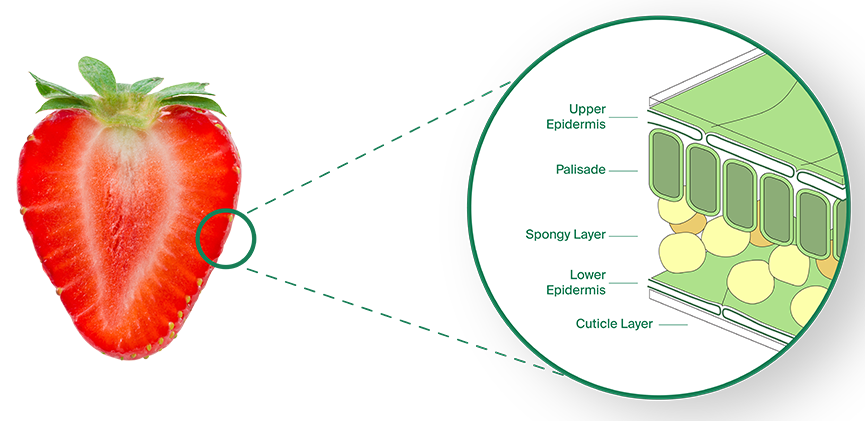
Apeel’s product coats fruits and vegetables, slowing water loss and oxidation — two key factors in spoilage. The coating is made from edible plant materials and reinforces the protection provided by a fruit or vegetable’s natural skin. The diagram shows the microscopic layers of a strawberry’s skin. Image courtesy Apeel Sciences.
“Most solutions today have been focused on the transport period” of harvested produce, says James Rogers, founder and CEO of Apeel Sciences, a San Diego-based company that developed an imperceptible, tasteless and organically derived second-skin for produce. “We have controlled-atmosphere shipping, refrigeration, high-humidity storage — all of these are kind of solving the key things that cause produce to spoil, which are water loss and oxidation.”
Slowing food spoilage during transit is important, but Rogers wanted to protect produce through all stages of the supply chain, especially on the farm and at the grocery store.
“If you look at some of the most successful companies of our era, they’re using resources that were not being optimally utilized,” Rogers says, referring to Uber and Lyft for ride sharing and Airbnb for house sharing. “We can use technology to unlock some of that wasted value to improve efficiency.”
That’s what Rogers did when in 2012 he launched Apeel Sciences. The idea came to him while driving through California’s lush Central Valley, listening to a radio program about the one billion people who are hungry on this planet. He wondered why, when there was such an abundance of food growing around him, was one third of that food being wasted. With his knowledge of material sciences as a Ph.D. student and grants from the Bill & Melinda Gates Foundation and The Rockefeller Foundation, he began experimenting with ways to improve the shelf life of African cassavas, mangoes and bananas without using costly and environmentally unfriendly refrigeration.
To do this, he looked to organic materials left over on farms — grape skins, stems, leaves, etc. He and his team of scientists blended the matter up and extracted fats and specific food molecules. When these molecules are transformed into powder and combined with water, the resulting liquid can be rinsed over produce at wholesale produce-sorting facilities to create an undetectable “second skin.”
“We’re trying to use food waste to solve the food-waste problem,” Rogers says. The added “peel” acts to “physically slow down the rate at which water evaporates out of the produce and the rate at which oxygen gets into the produce,” he explains. “By doing that, we can dramatically extend the shelf life of most types of fruits and vegetables even without the use of refrigeration.” This science led to a Series B $33 million investment in the company, with big grocers like Kroger and Costco buying Apeel-treated produce to reduce their food waste.
Spicy Solution
Another entrepreneur using food to save food is Kavita Shukla, founder and CEO of The FreshGlow Co., which developed a natural paper infused with organic spices and active botanicals that when placed near produce can double — sometimes quadruple — its shelf life.
The idea came to Shukla when she was 12 years old, visiting her grandmother in Bhopal, India. Her mother had warned her not to drink the water, but she forgot while brushing her teeth. Her grandmother quickly mixed up a spice elixir for her to drink. Shukla never got sick. When she got home, she began experimenting to see if the same spices could clean dirty pond water. They did. Her tests soon turned into a winning science-fair project, which set the course for her professional life.
“For the most part, food-spoilage technologies involve toxic pads, refrigerated transport or a lot of plastic,” Shukla says. But “customers are really aware now. They are asking, ‘Hey, is that apple waxed? What is the wax?’”
To make FreshPaper, the company infuses a proprietary blend of bacteria-inhibiting spices into compostable, organic paper. The paper can be slipped into berry cartons, vegetable bins or bags of leafy greens. The exposure you get to the spices is similar to what you might get while walking through the spice aisle of a grocery store, Shukla explains.
Best of all, Shukla’s paper is inexpensive, compostable and safe for humans and the environment. “I had my grandmother in mind when I designed the technology,” Shukla says. “She never had a refrigerator.” The product is already sold in 180 countries.
For the FreshGlow Co., which has taken it slow and steady, scaling up is the goal: to bring its product to larger produce companies and food distributors around the world. “That was always my intention — to use the technology to reduce food waste across the supply chain,” Shukla says.
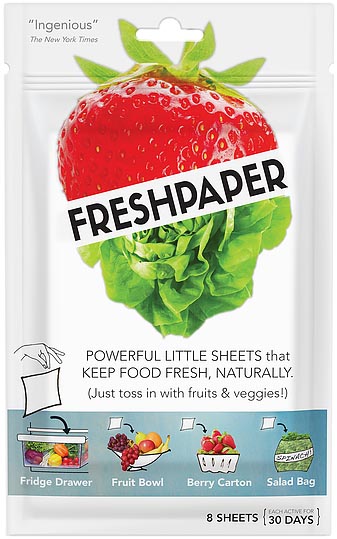
FreshPaper sheets are infused with organic spices and active botanicals. The FreshGlow Co. founder Kavita Shukla learned as a child that certain spices can inhibit bacteria growth. She turned her home remedy into a simple solution for prolonging the life of produce.
Data-driven Distribution
While entrepreneurs are recognizing the financial and humanitarian opportunities of extending food shelf life, Silicon Valley hasn’t really tapped into this huge revenue stream. Zest Labs in San Jose is trying to change that. The tech company is making the cold supply chain more efficient by accurately predicting the shelf life of produce as it moves around the country. It does this through the Internet of Things (IoT), the interconnection of computers and everyday objects through data sent and received via the Internet. These IoT sensors monitor the temperature of produce on each pallet, from field to the retail shelf.
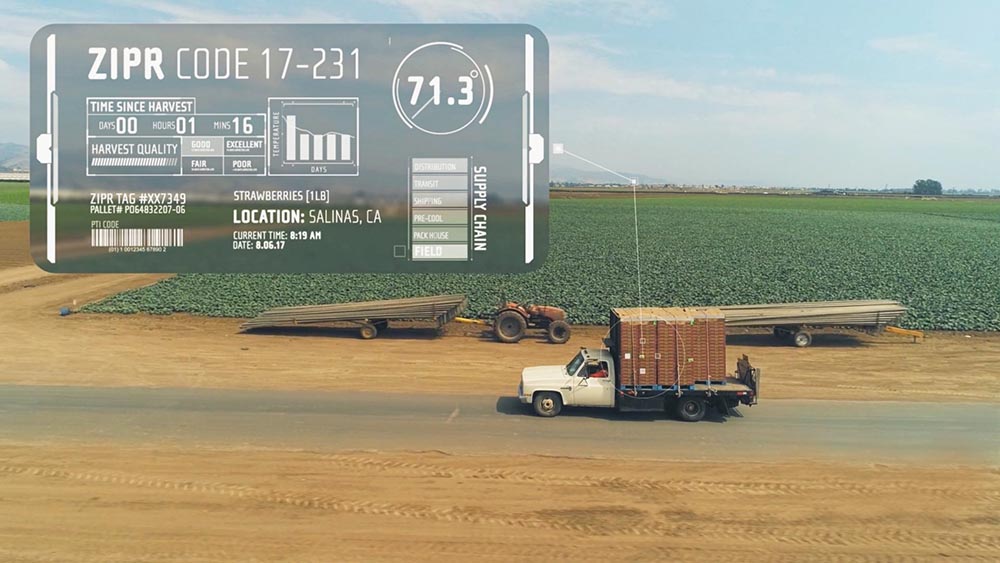
Zest Labs uses pallet- by-pallet temperature data to help predict the rate of produce spoilage. “No other industry would accept one third of their production going to waste,” says Zest Labs CEO Peter Mehring in a video on the company’s website. Image courtesy Zest Labs.
“The largest impact on produce is temperature, harvesting conditions and variety of the product,” says Zest Labs’ Payne. “Pallets harvested first will vary from bottom to top,” he explains. “We can figure out that pallet A has this much shelf life, and pallet B has this much.” They do this by producing a Zest Intelligent Pallet Routing (ZIPR) code, which routes pallets with less freshness to the nearest location and those with a longer shelf life further afield.
Zest Labs has “removed the randomness of food distribution,” says Dr. Jean-Pierre Emond, a co-founder of The Illuminate Group and an expert on the cold chain. “For each pallet coming in, they now know exactly what to do with it.”
Zest Labs technology is enabling growers and retailers, who have never had this type of data, to profit more and waste less. They do this by reducing pre-harvest water, fertilizer and labor costs, as well as post-harvest costs for waste removal. Large companies like Costco have tapped into Zest Labs’ technology to help their growers, distributors and themselves.
“I never see anyone winning with food waste,” Emond says. The entire food supply chain stands to benefit from these new solutions.
 To better understand the science behind Apeel’s product, check out this story from WIRED magazine.
To better understand the science behind Apeel’s product, check out this story from WIRED magazine.
Sell by? Use by? Why?
Food loss on the farm, in transit and at the retail store is significant. But the largest category is even closer: Nearly half of America’s food waste happens at home. A 2012 NRDC study found “the average American consumer wastes 10 times as much food as someone in Southeast Asia, up 50 percent from Americans in the 1970s.”
The food-waste problem is partly cultural. In the U.S., food is relatively inexpensive compared to other parts of the world. Thanks to busy lifestyles, we over-buy and under-plan. And inconsistent shelf-life food labeling confuses consumers and retailers. What does “sell by” and “best if used by” mean? Are foods past those dates actually spoiled? Often, they are not.
In 2013 the NRDC reported that food expiration date codes contribute considerably to the estimated 160 billion pounds of food trashed each year in the United States, “making food waste the single largest contributor of solid waste in the nation’s landfills.” Food expiration date codes are not federally regulated. They vary by state and are often arbitrary, providing false confidence in a food’s freshness or spoilage.
“There isn’t a rhyme or reason to how food codes are set,” says Michael Malmberg, chief operating officer of Daily Table, a nonprofit Boston-based grocery store that sources nearly expired food from local farms, distributors, grocery stores, restaurants and bakeries, and resells that food at affordable prices. “It’s set by the manufacturer or packager and can be done for marketing reasons — if they want to turn a product over faster.”
Doug Rauch, a former president of Trader Joe’s — and Malmberg’s boss — saw an opportunity to change perceptions of shelf life at the retail level. Rauch was well aware of how much perfectly good food was wasted by grocery stores due to confusing food labels. While a fellow at Harvard University, he also learned that food malnourishment meant not just “a deficit in calories; it was a deficit in nutrition, and supply chain issues,” Malmberg says. “(Doug) realized there is a need not only for access to food, but access to healthy food that’s affordable.” Out of that came the concept for Daily Table, which opened its doors in June 2015.
Rauch likes to think of his two grocery stores, located in Roxbury and Dorchester, Massachusetts, as the T.J. Maxx or Marshalls of the food world — where you can shop for quality products at reduced prices without the stigma that comes with visiting a food bank. This model, backed by the PepsiCo Foundation, the Kendall Foundation and the Robert Wood Johnson Foundation, recognizes the flexibility in food expiration codes.
“It’s all well and good to have healthy produce,” says Malmberg. “But if people get home from work and don’t have dinner on the table, they’re in trouble.” So Daily Table also set up an on-site kitchen and hired chefs to turn ugly produce or products that are not moving off the shelves quickly enough into affordable, nutritious, ready-to-cook and grab-n-go meals that cost the same price or less than nearby fast food. Daily Table hopes to open more stores because “the concept will be more effective at scale,” says Malmberg. “We are currently covering 65 percent of our expenses. We think with a third or fourth store, we can break even.”
Breaking even, when it comes to food waste, would be a big step in the right direction.
Daily Table in Massachusetts takes in food rejected by other retail outlets for aesthetic reasons. For example, an entire pallet of organic cauliflower heads that were deemed “unmarketable” due to a few brown spots were saved before they ended up in a dumpster. The DT team sorted and repackaged them for sale as raw produce and as part of their prepared foods offerings. Image courtesy Daily Table.
Related Stories
Protecting Provisions
Food packaging has been around as long as people have traded goods in markets. How else are you going to schlep that wine home across the desert? Given all that’s new in packaging and shelf-life technology, we’re taking a look back to some golden oldies, from skins and amphorae to the humble milk bottle.
Skins
Plants, animals and even humans have skins that inhibit the loss of water, so we will last longer. Food packaging performs the same function, inhibiting water loss and gain to extend freshness during transportation and storage. Too much water for any living creature causes cell death, so food scientists have been working for centuries to find the best way to provide a barrier between food and the environment.
Before the 17th century, that optimal barrier was literal skin. Leather bladders and other animal hides were convenient packaging materials beginning in prehistoric periods, and most “packages” for food were not removed during the cooking process. Animal bladders held meats and mixtures of vegetables and seasonings over the cooking fire. In a sense, haggis and natural sausage casings are modern-day versions of this ancient packaging.
Though we now have more options than our 17th-century ancestors did, we still protect many foods from spoilage by applying a protective skin.
Think of spoilage this way: Any perishable food ingredient, processed or unprocessed, breathes just like we do, taking in oxygen and releasing carbon dioxide. Bacteria grows faster if it exists in conditions that enable it to breathe, allowing it to break down the plant or animal cells. That’s why you frequently see cheeses and fruits covered with wax. The Chinese popularized this tactic during the 12th century, when they wrapped citrus fruits in wax to decrease the interior oxygen content and ensure the fruits made it to the emperor’s table. Different types of waxes (e.g., sugar cane and carnauba) are often applied by spraying or dipping fruits and vegetables to preserve or improve the appearance and protect the produce during storage.
Wax isn’t the only kind of protective skin: Victorians used lard to coat food, and M&Ms are covered with confectioner’s shellac, a substance made of an insect-derived coating that’s produced in India and called lac dye. Your french fries remain white and crispy because of a coating applied during processing to inhibit discoloration. Some other coatings aren’t so natural, including calcium acetate and calcium ascorbate. Even wheat gluten becomes a skin for some foods that are not grain-related at all.
Jars and Pottery
Three thousand clay jars of fermented fish sauce emerged gently from the sea in 2015. A team of archeologists led by Simon Luca Trigona celebrated their trove after two years of painstaking work around a Roman ship that was built sometime in the first or second century. These containters, called amphorae (singularly, amphora), have been around since the Neolithic Period (10,000 to 2,000 BCE). They were made of clay and often carried wine, oil or a fish sauce known as garum. The fish sauce, which resembled ketchup, was most likely from Spain and bound for Roman markets.
Fish sauce traveled in pottery vessels long before the sinking of the Roman ship. At the time, clay was also used as a sealant for baskets that carried grain. To eliminate the absorption of liquids by the vessel, clay, resin or pitch coated the interior surfaces. Manufacturers of amphorae applied a stamp to the outside that indicated its origin. In some cases, other information would be written or painted on to indicate weights, contents and market information.
Not often recycled, Greek and Roman amphorae were broken up after they reached their destinations. Rome’s Monte Testaccio is a mountain of these vessels, a Roman pottery garbage heap.
Glass, Crates and Cartons
Milk travels along the supply chain in bulk and consumer packaging, contained in glass, plastic and paper. A rusty milk jug worked its way up to the soil surface in our backyard last summer, with a metal label indicating it had belonged to the Turner Center Creamery in Auburn, Maine. The creamery, which operated in Auburn in 1893, manufactured the first commercial ice cream in New England. Customers would send jugs to dairies where the farmers would refill and deliver the milk back to the customer.
In more urban areas, metal milk jugs had been replaced with glass bottles topped with metal caps. Alexander Campbell introduced these bottles in 1878 in Brooklyn, New York, and by the early 1900s, fiber material and paraffin covered the metal caps. At first, customers resisted the glass bottles because glass was commonly used for medicines from the drug stores, and dairies worried about broken glass. But distributors preferred glass for sanitation and easy handling, so both dairies and consumers overcame their concerns, and glass replaced the metal jugs until paperboard appeared in the early 20th century.
In 1915, John Van Wormer patented a wax-sealed paper carton with a gable top that could be shipped flat for assembly at the dairy. Gallon and half-gallon plastic jugs became the preferred package for milk by 1970, but paper milk cartons have made a comeback since being fitted with screw tops in the 1990s.
Plastic jugs travel to stores in milk crates, which were once made of metal, but were replaced with plastic by the 1960s. Each crate carries four to six one-gallon plastic milk jugs. About 20 million crates go missing every year, stolen for shredding and reselling at a profit. The International Dairy Foods Association (IDFA) estimates that U.S. dairy companies spend between $80 and $100 million to replace stolen or missing plastic milk crates (read about another beverage container that often falls out of the supply chain).
Related Stories
Smart Cities Are Forgetting Food
Smart cities use technology and data-driven solutions to make people’s lives better. But until recently, cities have failed to adopt this methodology for what is perhaps the most critical urban system: food. As urban agriculture builds momentum, now is the time for cities to embrace this young industry and foster urban food systems through a data-driven and “smart” approach.
Urban agriculture has the capacity to ameliorate many issues plaguing urban areas. It can contribute to green infrastructure efforts, create a food source that’s safeguarded against climate events and provide a variety of local jobs. But despite the potential of this nascent industry to improve the lives of city dwellers, urban agriculture is often left out of the Smart City discussions and policy decisions that have quickly gained popularity across the globe.
Nevertheless, the urban agriculture industry is growing rapidly as it tries to meet an ever-increasing demand for nutritious local produce. AgriFood Tech investment reached $10.1 billion in 2017, including $200 million in Series B funding for vertical farming company Plenty.
Let’s be clear: Urban agriculture is not the solution to our food system crisis. Other solutions are sorely needed as well, including ways of fostering stronger regional connections between farms and cities. Food waste is also a major issue that needs to be tackled. But urban agriculture is, and will continue to be, an essential component of how every country and city restructures its food system to make fresh food supplies more available, resilient and ecologically friendly.
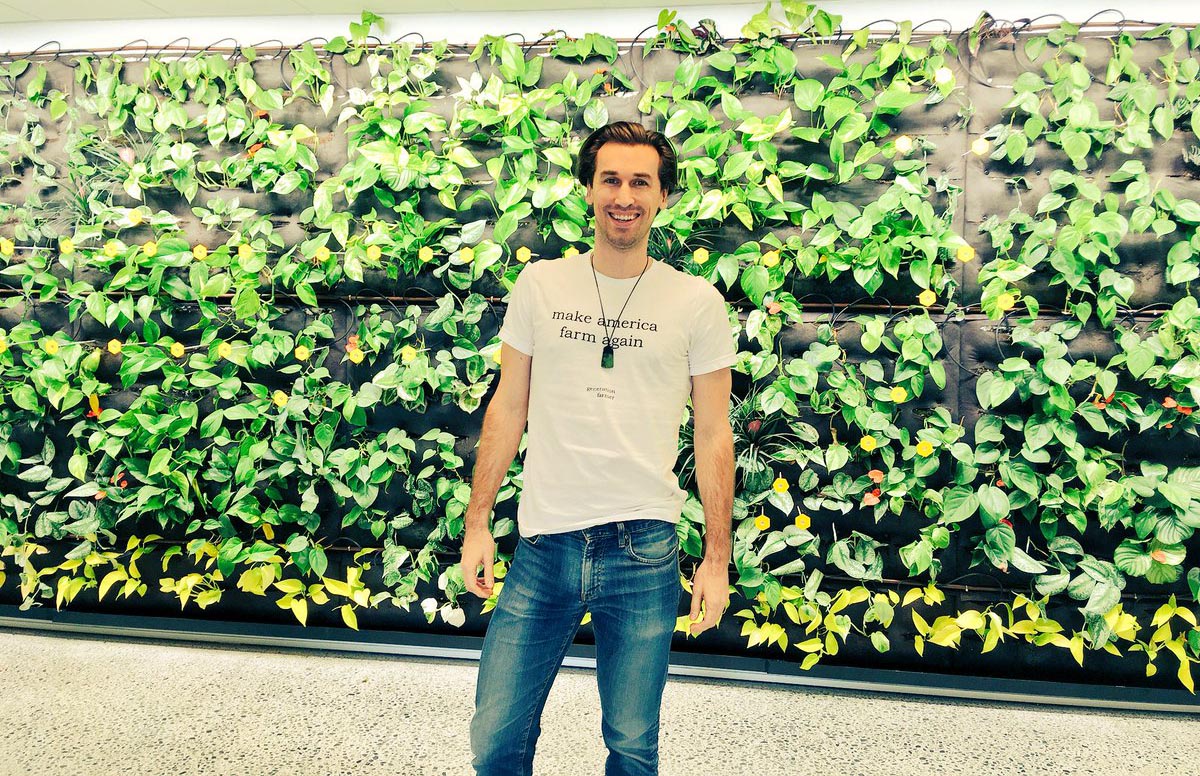
The author, Henry Gordon-Smith, of Agritecture.
Cities and Agriculture
Just like energy, transportation and internet access, the processes of food production and distribution are integral parts of the urban ecosystem. And like those other system components, agriculture should be supported through smart policies that are data-driven and context specific. The path forward for resilient cities and communities must include thoughtfully planned urban agriculture.
Some cities around the U.S. and abroad are beginning to implement policies to encourage the industry’s growth as a critical part of local and regional food systems.
In Atlanta, for example, a director of urban agriculture within the mayor’s Office of Resilience ensures that municipal support is consistently available to local farmers via the AgLanta digital resource hub, along with a wide range of other initiatives. Through the city’s “Grows-A-Lot” program, Atlanta residents and nonprofit organizations can secure renewable five-year leases to farm vacant city-owned property.
Many other cities have passed zoning ordinances and started programs to promote the expansion of urban agriculture. In Boston, Article 89 comprehensively addresses where different forms of urban farms should be permitted within the city. In Minneapolis, the Homegrown local food program brings municipal and community actors together to research and plan out future supportive policies. In Paris, a municipal initiative called ‘Parisculteurs’ aims to cover the city’s rooftops and walls with 100 hectares of green space by 2020, and to dedicate a third of that space towards food production. And in Singapore, developers are incentivized to include urban farms as part of green building requirements.
But these efforts are largely piecemeal. Few cities, if any, are using data-driven urban-agriculture planning and analysis to ensure future resilience in this burgeoning sector of municipal economies. By performing in-depth analysis on where the greatest vulnerabilities lie within their local food systems, cities can change what today is mostly a feel-good concept into a critical framework that can be scaled to transform local food production. Using data can help determine the best opportunities to bolster urban and peri-urban production to achieve goals such as food access or stormwater management.
The idea here is not to turn urban agriculture into a top-down model. The decentralized and diverse nature of urban farming models is a major contributing factor to the industry’s rapid pace of innovation and its ability to be a resilient source of food production. Rather, the idea is for cities and regions to understand where the greatest vulnerabilities and opportunities lie within their local food systems, and then to plan out and provide support to targeted areas of the food economy, perhaps through local food distribution hubs and farming incubators for entrepreneurs and startups.
Advances in urban agriculture planning are happening — slowly. Cities and communities are starting to work together across sectors and silos to recognize and promote agriculture’s role as an integral component of smart, resilient cities. But there is plenty of work to be done.
Taking the Next Step
Now, like passionate entrepreneurs first entering the food- system space, many cities have great intentions for urban agriculture. Unfortunately, many cities also lack the capacity and technical knowledge to understand where the local food system should be strengthened to most effectively make it smarter and more resilient against environmental, social and economic stressors.
For cities to become smart in this sector, they no longer need to recognize the many benefits of urban agriculture — that has already happened throughout mayoral administrations, academic halls and even more recently in Congress. The time for putting energy into persuasion is over.
For our part, at Agritecture we have designed a new service called Urban Agriculture Scenario Analysis to assist cities in analyzing and strengthening their local food capabilities. Using site-specific and scale-specific data and modeling, Scenario Analysis can transform a city’s piecemeal farming community into a diversified urban agriculture economy.
The good news: There is a wealth of burgeoning technology around urban and peri-urban food production and distribution. Many urban farms are already “smart,” using sensors and data to tailor everything from lighting to crop nutrition. This is true in large farms such as AeroFarms, which dominates an entire converted warehouse in Newark, New Jersey, and also in smaller farms like Farm.One, which takes advantage of underutilized basement space in Manhattan to cultivate rare specialty crops for the city’s restaurants.
But if cities are going to be successful in integrating advances in food system technology into their wider metropolitan planning efforts, they must apply a data-driven methodology similar to the approach that many urban farmers are taking to more effectively grow crops.
A Smart City revolution is currently sweeping the world. Although we remain in the early stages, this revolution will soon transform the way that cities support the most essential components of urban life. To ensure that food isn’t left out of the equation, cities must start supporting urban agriculture in targeted ways that work with the urban agriculture industry to reconstruct our food production and distribution systems into smarter, more localized and more resilient networks.
Edible Bugs: More Than Just Protein
Flavor notes range from peppery lemon to pine-nutty to prosciutto-savory. Some varieties make for lovely garnishes on your seafood salad, while others are perfect as the heart of a well-salsa’d taco.
Some new-ancient legume? The latest grain-based trend? No — I’m talking about edible bugs.
And I’m not the only one. Bug-based recipes are showing up all over Instagram and your favorite cooking magazines. Yet while we in the West are playing catch-up, some cultures around the world have been enjoying arthropods and mealworms for millennia.
If you think about it — with a wide-open mind — bugs aren’t all that different from crustaceans. After all, crayfish (or, crawfish) are known by some in Louisiana as mudbugs. Just as we enjoy the sweet flavor of shrimp and the slight crunch involved in devouring a crab or lobster, eating bugs just takes a bit of practice.
That’s what Aly Moore believes, anyway. Her site (eatbugsevents.com) and beautiful Instagram feed (@bugible) are dedicated to making bugs seem like the white-hot snack trend you’re dying to try. She even does bug-and-wine pairings to highlight the wide variety of flavor notes. And, who knows, maybe the wine helps reduce inhibitions against taking that first bite.


Top: Mealworms and dark chocolate — bugs can satisfy a sweet tooth! Photo by Ashley Corbin-Teich. Bottom: Summer salad with chickpeas, pumpkin seeds and roasted crickets from Entomo Farms.
Bugs Around the World
While eating bugs may be a novel idea for Americans and other Westerners, insects have long been a valuable ingredient in many parts of the world.
Oaxaca
grasshoppers (chapulines)

Cambodia
ants

China
crickets served instead of bar nuts

South Korea
silkworm pupae

South Africa
mopane worm

France
escargot (technically a mollusk, but they do live in the garden)

“I think people are all really pleasantly surprised,” she says about guests at her bug dinners and wine-and-bug pairing events. “I give people a spiel that does everything from comparing bugs to seafood to describing the tasting notes, and you can see them starting to warm up to the idea. That lightbulb moment is great, when they realize bugs are not at all bad. In fact, they have a familiar flavor.”
Focusing on flavor is a key tactic for Moore — especially in her wine events, where she highlights specific bug flavor notes and pairs a complementary wine. Crickets go nicely with lighter reds like pinot noir, Moore says, while meatier-flavored grubs want a more robust Zinfandel. Scorpions, you might be surprised to learn, have a delicate salmon-y flavor that’s perfect with a zingy sauvignon blanc.
If you’re not ready to take the plunge with a whole roasted tarantula, there are lots of ways to experiment with eating bugs without knowing they’re an ingredient — for example, cricket- flour protein bars or chips are increasingly easy to find in mainstream grocery stores.
But, really, Moore is a fan of highlighting the whole insect in all its glory to help people begin to think of them as a tasty option in their everyday diets.
“Comfort foods” — like pizza topped with meaty grasshoppers (aka chapulines in Oaxaca) or sago grubs, which are known as the bacon of the bug world — “are a great way to help people get over the hurdle,” Moore says. “Making comfort foods that people can relate to helps create positive associations with eating bugs.”
Pinot noir and crickets, a classic combo. Focusing on flavor is a key tactic for Aly Moore — especially in her wine events, where she highlights specific bug flavor notes and pairs a complementary wine.
 Ready to start cooking with edible bugs? Check out the “Buy Bugs” link on eatbugsevents.com for resource ideas.
Ready to start cooking with edible bugs? Check out the “Buy Bugs” link on eatbugsevents.com for resource ideas.
RECIPE NOTE
How do you go from crawling to crunchy without the use of toxic pesticides or a dramatic SQUISH? Oh, just chill — the bugs, that is. While many studies concur that bugs’ central nervous systems aren’t complex enough to feel pain, you might worry a bit anyway. A humane and simple way to corral those critters is to refrigerate them. Because they’re cold-blooded, they fall asleep, at which point you can move them to a freezer to ensure they’ll never crawl, jump or fly again.
The Return of Sail Cargo
For centuries, sailing ships offered the fastest, best option for transporting goods and people. The Age of Sail (1571–1862) marked the reign of tall ships, with clipper ships representing the apex of commercial sailing’s progression.
The visually striking clippers had strong lines, V-shaped bows that sliced through water and dozens of sails to capture wind. First developed around 1845 by American shipbuilders looking to give small fishing boats an edge over pursuing pirates, clipper ships evolved to carry modest amounts of cargo at unparalleled speeds. A clipper ship could reach more than 15 knots and cover 300 nautical miles in a day, easily outpacing a steamer ship’s 9 knots.
During the Gold Rush, in 1849 — 20 years before completion of the transcontinental railroad — ships carried 25,000 Americans west. While wealthier passengers could spring for Panama-bound steamers, take the train across Panama, then steam up the West Coast, most forty-niners endured a five- to seven-month journey around Cape Horn via clipper ship. Flying Cloud set a world record for this trip, which stood for more than 100 years, when it arrived in San Francisco after 89 days, 21 hours.
These greyhounds of the sea were the obvious choice for the British Empire’s most prized cargo: tea. Thirst for tea was such that a so-called tea clipper could earn £3,000 from one cargo load — roughly 20 to 25 percent of shipbuilding costs. The first ship of the season to reach London’s docks would win a premium.
The Great Tea Race of 1866 demonstrated the logistics underlying tea mania. Clipper ships lined the docks in Fuzhou. The first ship to clear customs had an early advantage, but favorable winds, stronger tugboats and the luck of the tides made for a competitive 16,000-mile race between five of the day’s fastest clippers, Flying Cloud among them. Ninety-nine days after leaving Fuzhou, Taeping and Ariel docked within 20 minutes of one another and split the premium.
But as 45 million pounds of tea flooded the market, tea prices plummeted, illustrating one of sail’s disadvantages: Ships couldn’t keep a schedule, which meant supply-side volatility.
The Great Tea Race occurred between two dips in the popularity of sailing. When American banks shuttered in the Panic of 1857, trade slowed, as did the demand for sailing ships. Later, in 1869, the Suez Canal opened and gave an advantage to steamer ships, which could complete the Europe- Asia route in 50 days. Overland transport improved, too, with railroad expansion.
By the turn of the 20th century, countries were abandoning sailing ships in favor of steamers, which offered reliability and greater cargo space. With the opening of the Panama Canal and the onset of World War I in 1914, sail’s demise seemed assured. By World War II, sailing ships were restricted to commercial fishing trades. Tall ships seemed destined for nostalgia, until — nearly a century later — the winds shifted once more.

From 2012 to 2017, shipping accounted for 3.1 percent of global CO2 emissions. The International Maritime Organization estimates that shipping emissions will increase by an additional 50 to 250 percent by 2050. As some in the industry look to lower their carbon footprint, there’s renewed interested in wind power.
In recent years, sail cargo projects have sprung up along old trade routes. U.K.-based Grayhound Lugger crosses the English Channel, trading Cornish ale and organic French wine. Dutch-based Tres Hombres crosses the Atlantic with cacao, coffee and rum. Schooner Apollonia plans to launch on the Hudson River by year end, bringing cider, beer and apples downstream to New York City.
In 2019, Sail Cargo Inc. will open a carbon-neutral shipyard in Costa Rica. Through its 3½-year build process for Ceiba (a 45-meter sailing cargo vessel with a chilled hold space and 25-ton cargo capacity, crafted from sustainably harvested wood), Sail Cargo Inc. plans to offer a traditional skills apprenticeship program, where participants can learn shipbuilding, blacksmithing or woodwork — all green jobs.
While sail may have traditional roots, its means have been updated. Today’s sailing ships have biodiesel engines or solar batteries to augment wind power, plus GPS and plotting technologies to plan efficient routes.
Still, challenges remain. Routes aren’t operable year-round, and — as in the past — sticking to a schedule can be difficult. Port infrastructure might be set up for recreational boats with floating docks that make loading tricky or for the giant post-Panamax cruise and cargo ships. What’s more, to realize a profit, sailing ships need premium cargo. Vermont Sail Freight’s founder, Erik Andrus, said only one crop would deliver an ROI of $0.50 to $1.00 per pound of weight: Pot.
Growth potential aside, modern sail freight has neither the capacity nor efficiency to supplant tankers. Instead, cargo shippers will look to wind to lower emissions. Maersk is trialing rotor sails (invented 100 years ago) to add wind power to tanker ships, which will conserve some 1,000 tons of fuel. And Cargill, which charters over 500 vessels, is co-funding SkySails, a kite sail initiative.
Sail freight’s early adopters are largely companies with the desire (and cash) to align their business with their values by using emission-free shipping for organic, hand-crafted products. Other clients value the interactive marketing experience sail cargo offers: Guests can board the ship, sample products and form a powerful brand connection.
Unlike sailing ships of yore — which competed as fiercely as any 21st-century big-business rivals — today’s sailing ships operate as a network, sharing tips and routes. That unusual collaboration highlights the focus on relationships that could cement this trend as a viable shipping option.
Jason Marlow of Schooner Apollonia acknowledges that sail cargo’s client base is limited at present. Yet, he is optimistic. The more people start to identify sail transport as an option, the more they will request it.
“As it starts to scale up and there are more vessels and it’s more connected, then it starts to compete pricewise with other modes” of transportation, Marlow says. In the meantime, the new-old industry breathes life into port towns that may be struggling to redefine their economies.
The Freshest Leafy Greens
Have you ever had a salad with lettuce freshly picked from the garden? Maybe your grandmother grew her own greens, or perhaps that farm-to-plate restaurant you love makes amazing salads. Unless you have your own backyard garden, fresh lettuce most likely travels the distance from the farm to your grocer on a long-haul truck. Until now.
A 21st-century lettuce farm no longer requires muddy rows cut into a rural field subject to the whim of weather and labor. Behind a suburban grocery store in Dallas, fresh leafy greens are produced under a limitless pink glow inside a clean, 53-foot-long, steel shipping container, yards away from where they will eventually be sold.
The glow — provided by LED lights in both the red and blue spectra — is an engine that works 24-7, producing spicy arugula rich in vitamins and antioxidants, fresh green leaves ruffled in purple and romaine so crisp that it oozes milky sap when cut.
Since May 2017, Central Market, the gourmet offspring of the family-run, Texas-based H-E-B Grocery Co., has been selling lettuce and herbs grown on-site. Production is contained and perfected so that customers have access to a daily harvest of fresh, organic greens. While Austin-based rival Whole Foods has partnered with another company to sow seeds on a store’s roof, and startups like San Francisco’s Plenty have built large urban food-production facilities, Central Market’s growing container represents the first time that a grocery store has grown produce on-site with their own staff.
The container garden is the brainchild of Marty Mika, produce specialist and buyer for Central Market. After years of working to procure the freshest ingredients for customers, he is well aware of how difficult it is to always have the best on hand.
“There are so many variables in produce: Mother Nature, seasonality, labor issues, water and even transportation,” says Mika. “So, we looked at how we could take over some of the supply chain and put all of these issues under our own umbrella.”
Americans eat a lot of lettuce — about 11 pounds of romaine and other leafy lettuces per person per year, and even more if hardy iceberg varieties are considered. In 2017, romaine and other leafy green harvests were valued at over $2 billion, a substantial increase in value from the previous year. Salad, a key component of a healthy diet, is so popular that many fast-food chains have added salads to their menus. At-home salad consumption is increasing too, thanks partly to new packaging in bags and clamshells that can extend freshness.
But getting lettuce to the table at the peak of perfection is not an easy task. The challenges are numerous: drought, pests, temperature, contamination and physical damage during transportation.
Lettuce is a cool-weather crop, so it grows best when days are not too hot and nights are not too cold. Because of this, 90 percent of all romaine and leafy greens harvested in the U.S. hail from either California or Arizona. As a result, much of the lettuce produced travels great distances to end up plated with a tomato and vinaigrette.
The transportation challenge means that lettuce is often picked just before maturity and immediately bundled onto a truck for distribution. Driving lettuce to markets adds to the cost of food, especially when fuel costs fluctuate. A 2013 USDA report found that a doubling of diesel prices could lead to an average increase of 20 to 28 percent in wholesale prices for a variety of produce.
Another issue related to transportation is nutrient loss. Research has shown that as lettuce is trucked across the country from farm to market, levels of ascorbic acid, chlorophyll, carotenoids and important minerals decrease, a reduction in quality that persists as long as the lettuce is being moved or sits on a shelf in a supermarket before purchase. Transportation also introduces new risks into the food chain: If vehicles are not adequately cleaned and maintained, there is always the potential for contamination.
So, what is a purveyor of produce to do?
Contain. Contain. Contain.
To facilitate growing their own fresh greens, Mika and his Central Market team purchased a domestic shipping container from Growtainers that had a few modifications crammed into nine feet of headspace: neat units with four shelves, a system for modulating temperature and an LED growing system that shines 24 hours of pink light into every corner. The crop grows in a perfectly controlled environment primed for maximum production.
In Dallas, Central Market employees sow varieties of lettuce and herbs into a medium made of melted rocks. This clean, sterile substrate is the perfect underpinning for growing plants hydroponically, or without soil. Nutrients are added to the water, and the plants grow rapidly without pesticides or herbicides. In addition, the temperature range in the container can be optimized for growth. And though scientific research has not shown that pink light makes plants grow more quickly, the LED system that uses only some wavelengths of the light spectrum allows plants to flourish while saving on energy costs.
Many commercial hydroponic growers do not want to talk about proprietary data and results; however, research suggests that crops can be coaxed to grow between 20 and 50 percent faster in hydroponic conditions. Recent research also shows that hydroponic farming can yield 11 times as much lettuce per area under cultivation and uses a fraction of the water when compared to conventionally farmed lettuce.
The Dallas team plants and harvests by section within the container. Each new planting takes over a new set of shelves, which enables a scheduled harvest of perfect greens to be plopped into a clamshell and then moved to the market shelf in minutes. The work is very detail oriented, but once the process starts, it is consistent and easy to maintain.
Even better: Transportation of product to retailer is now a mere few feet, and customers have access to pesticide-free, organic produce.
“We produce enough of different, basic varieties each week to sell in the store: not too much, not too little,” said Mika. “Customers like the flavor and freshness of the greens, and they like the fact that we’re reducing the carbon footprint.”
There are some disadvantages to producing container lettuce, though, including high initial costs for equipment. In addition, because container farms tend to be in urban areas — close to customers — the cost of land is high. These costs are passed on to consumers in the form of higher prices for greens. Hydroponic farming also uses much more energy than conventional farming — more than 80 times the amount of energy, although this excludes energy used for transportation.
Stay tuned. Researchers are developing more sustainable practices for indoor farming that should further reduce the carbon footprint.
Fish Out of Water
As the lobster capital of the U.S. looks to diversify its commercial fishing industry, new options for harvesting seafood are emerging — in ocean-based farms, in cold rivers and even on land. Maine is diving into aquaculture.
Independent fishermen, the backbone of the Maine commercial seafood industry, play a vital role in the state’s culture and economy. Roughly 5,000 lobster fishermen produce 80 percent of the value of Maine’s commercial seafood catch – an estimated contribution of more than $1 billion to the state economy. But relying too much on any one species could put the state in a precarious position. The volume and value of Maine lobster fell more than 15 percent from 2016 to 2017, from $533 million in 2016 to $434 million in 2017. Tariffs imposed in July 2018 by China on select American products, including lobster, represent a new factor that could affect Maine lobstermen this year, despite a very productive season so far.
Climate change is another problem. The Gulf of Maine Research Institute (GMRI) has identified the waters off of coastal Maine as “one of the fastest-warming ocean ecosystems on the planet.” The volatility of the water temperature is just one reason many small fishermen began to focus primarily on lobster, where prior generations made a living on a varied catch. In this new reality, re-diversifying production and having more direct control over cultivation will help sustain Maine’s commercial seafood industry. Two aquaculture endeavors now in development represent decidedly different alternatives for America’s lobster capital.
The Rise of Aquaculture Worldwide
Aquaculture in Maine has been practiced since at least the 1800s. While laws regarding fish and shellfish culture date back to 1905, the Maine Legislature only began to regulate aquaculture as an industry in 1973. In the last few decades, Maine-based institutions have dived into aquaculture research, but many questions remain about how to make production more cost-efficient. Farmers bringing product to market also play an important role in determining aquaculture’s viability: by finding ways to integrate into existing supply chains or to create new ones and by understanding how consumers relate to new products, including their willingness to pay to them.
Worldwide, consumers seem very willing to pay for farmed fish. According to the Food and Agricultural Organization of the United Nations (FAO), global per-capita fish consumption is on the rise. As of 2016, aquaculture accounted for 47 percent of all fish consumed as food. Further, the first-sale value of all aquaculture production was estimated at $243.5 billion — almost double the value of global fishery production. Investors have noticed. Venture capital and private-equity capital from the same entrepreneurial ecosystems that have long funded tech startups are turning to food systems ventures.
“Fish is the new beef,” says Mike Velings, a Dutch venture capitalist and founder of Aqua-Spark, the first aquaculture investment fund. His 2015 TED talk, “The Case for Fish Farming,” has been viewed more than a million times. In light of this global surge in aquaculture, Maine’s fishing industry is exploring ways to move beyond lobsters.
What is Aquaculture?
The term aquaculture refers to the farming of aquatic organisms in water and can include finfish, shellfish, crustaceans, sea cucumber, seaweed, kelp, algae — anything that grows in water. It’s related to hydroponics, which generally refers to growing plants in nutrient-rich water, without soil, as well as aquaponics, the symbiotic cultivation of plants and aquatic animals in a recirculating environment. Aquaculture differs from conventional fishing or even harvesting of shellfish and seaweed in that it explicitly includes propagation (almost always in a land-based, lab-like setting, or “hatchery”) as well as tending to the crop, or stock, through the whole growth cycle. Vertical ocean farming is essentially an aquaponic practice in an ocean environment, in which seaweed and shellfish farms are vertically arranged in the water column, mimicking the arrangement of natural systems and promoting interactivity with other ocean species around them.
All Eyes on Scallops
Tenants Harbor in St. George is a picturesque spot in Maine’s mid-coast region, nestled between two hillsides that protect it from the winds off the bay. I’ve come here to meet Ryan McPherson, Merritt Carey and Peter Miller, members of the newly formed Maine Aquaculture Co-op. The topic: sea-scallop farming in Penobscot Bay. It’s a new idea for a region more associated with lobsters, and the hope is to reintroduce a measure of diversification for independent fishermen so they can continue to make a living from the sea.
“It’s all about local knowledge,” Miller, a fourth-generation fisherman, says. “I want every young fisherman to have the chance that I had.”
Maine isn’t new to scallop production, but its cold ocean temperatures mean they grow slowly. “To harvest wild scallops in Maine, they have to be four inches, which takes about four years,” McPherson explains. “The product we’re landing doesn’t have those restrictions, because we’re growing them.”
A former fisherman with a degree in entrepreneurship, McPherson purchased Glidden Point Oysters in Edgecomb, Maine, with leases in the deep water of the Damariscotta River, in 2017. He has quickly made inroads in the state, expanding relationships with chefs and maintaining Glidden Point Oysters as a premium product, a philosophy he brought to his involvement with the Maine Aquaculture Co-op. In addition to making chefs aware of the co-op, he fostered a tie to Island Creek Oysters, which provides a robust point-of-sale and distribution network for products that share Island Creek Oysters’ emphasis on celebrating American merroir. The co-op’s first live, whole scallops — not just the abductor muscle that most people traditionally think of as a scallop — started selling on the platform in early 2018.
“Before we pull them out of the water, they are already sold,” McPherson says. Literally pulling them out of the water is interesting, too. As the net emerges from the water, the petite scallops respond to the change in their environment and clap their shells shut in unison.
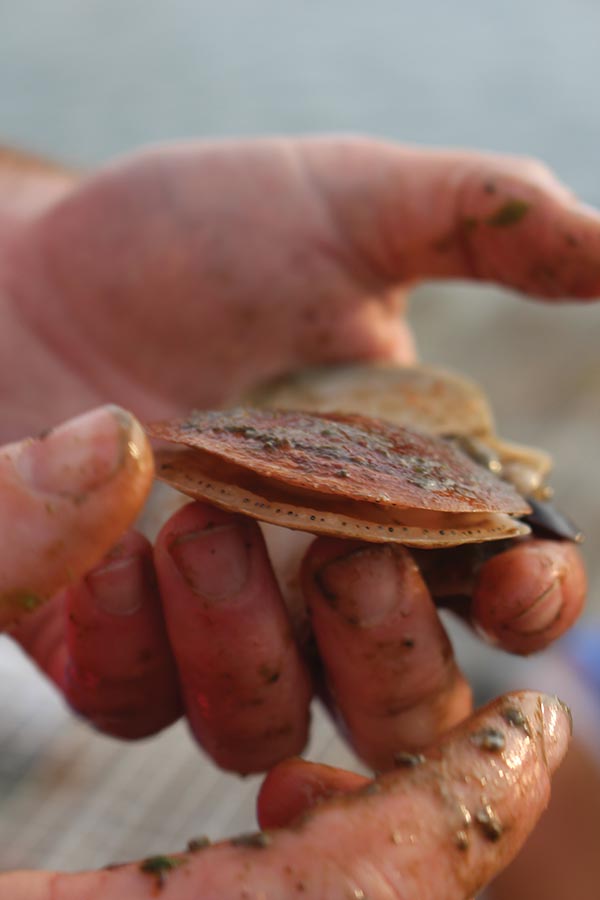
A 2016 market analysis for Maine-farmed shellfish confirmed that the portion of shellfish produced by aquaculture in Maine remains quite small — less than 1 percent of the landed value of oysters, mussels and scallops in the United States. Despite the small quantity, Maine scallops garner the highest price per pound of any state. Yet Maine produces only 2 percent of the country’s volume. To meet consumer demand, the United States imports 40 million pounds of scallop meat, with a value ($350 million) close to the value of scallops it produces domestically ($380 million). Projections about future consumer demand may be conservative because they don’t consider the impact of expanding direct-to-consumer buying options and prepared meal kits. The report also notes that Maine has the cold, clean waters to support shellfish aquaculture expansion, with projected acreage needed by 2030 estimated to be less than .3 percent of state waters.
Merritt Carey pulls a lantern net out of the water to reveal juvenile scallops in an early stage of growth. Photo by Laurie Zapalac.
 Merroir
Merroir
like the French terroir, which refers to the flavor notes a wine gets from the grapes’ soil and growing region, merroir describes the way seafoods reflect the taste of the waters in which they’re grown.
Ryan McPherson explains the staging float and its relationship to the leases held by the Maine Aquaculture Co-op farther out in Penobscot Bay. Photo by Laurie Zapalac.
Juvenile scallops grow in vertical “lantern nets” (left), a Japanese aquaculture technique adopted by some Maine scallop farmers. Once they’re larger, the scallops are drilled and hung on long lines in water 25 feet deep, where they grow to full size. Click image to enlarge. Image courtesy the Water Brothers.
 For delicious scallop pics and shots of the sea farmers at work, follow @MaineAquacultureCoop on Instagram.
For delicious scallop pics and shots of the sea farmers at work, follow @MaineAquacultureCoop on Instagram.
The Salmon Story
Maine’s wild Atlantic salmon population hovers on the brink of extension due to loss of fresh water spawning habitat, overfishing, pollution and other forces. Heavily depleted by the late 1960s and declared an endangered species in 2000, wild Atlantic salmon is no longer fished commercially in Maine waters. In 2016, habitat restoration projects began, and small upticks in population are now being recorded.
Responding to the vast U.S. market hungry for salmon, Norwegian investors are focusing on Maine for land-based production. The U.S. exports the majority of the seafood it harvests, while importing species such as salmon — an inefficient crossover that generates heavy carbon dioxide emissions. But salmon farmed in Maine can efficiently reach more than 50 million people in adjacent states, a “grow-local” solution.
“The exciting thing is, you can place production close to the consumer,” says Erik Heim, CEO of Nordic AquaFarms. “So instead of airfreighting in tons of salmon from New Zealand, Chile, Norway, Scotland, you can produce it locally.”
Moving Indoors
Nordic AquaFarms aims to produce 30,000 metric tons (approximately 66 million pounds) of salmon annually in a facility in Belfast, Maine, estimated to cost $500 million when fully complete. Due in part to concerns associated with ocean-based finfish farming, including fish feed sourcing, disease, use of antibiotics, fish escape, pollution and others, the location of aquaculture is changing dramatically. Earlier aquaculture practices for finfish entailed producing eggs and growing juvenile fish in land-based hatcheries, then releasing them into sea-pens — or in the case of stock regulation, into the wild. Today’s finfish aquaculture is increasingly keeping the fish indoors for life.
Heim explains that the facility will comprise three main production areas: hatchery, grow out and processing. The facility’s engine is a recirculating aquaculture system (RAS). “Land-based farming is basically where everything is happening indoors,” Heim says. “You’re taking water in and releasing water out, so you can clean it and treat it,” a practice that allows for recirculation and a reduction in overall water usage and nutrient discharge. “That’s a key part of the concept.”
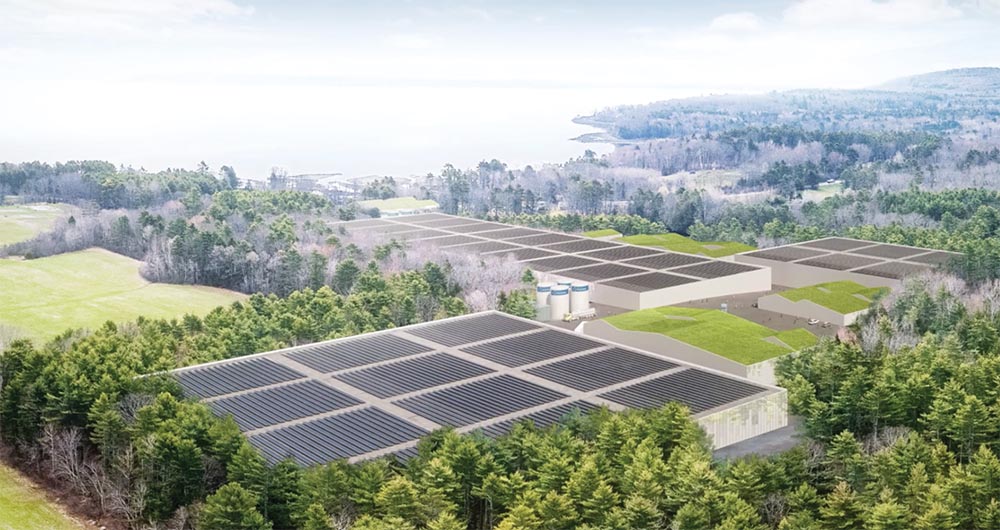
Overhead rendering of Nordic Aquafarms’s site in Belfast, Maine. The first phase of construction of the indoor-salmon-farming facility is projected to be complete in 2020 or 2021. Image courtesy Nordic Farms.
Deploying aquaculture on a large scale indoors means confronting questions about selective breeding, genetic engineering, use of fertilizers and antibiotics, and waste processing — issues familiar to other types of industrial-scale land-based farming. Another question is how the introduction of foreign-investor-driven projects will impact the local communities and economies that host them. While operations of this size should mean more jobs, fishermen may have to adjust to harvesting their catch on land.
While building on decades of knowledge, Nordic AquaFarms operations are relatively new. Founded in 2014, its business units include Sashimi Royal in Hanstholm, Denmark, the largest yellowtail kingfish facility in the world, which began producing commercially in early 2018; and Fredrikstad Seafood in Fredrikstad, Norway, which will be the biggest salmon facility in Europe when it comes online in 2018. The Fredrikstad operation is “the blueprint for what we’re doing here. What we’re looking to do is not just build a land-based facility. We want to change this industry, and we’ve invested a lot into innovation,” Heim says. “We’re taking the science to an entirely new level.”
This raises an important question: How can radically new practices — so new they aim to be innovative on a global scale — be embraced by communities devoted to traditional methods?
Heim takes a stab at the answer. “If you look at the Maine seafood industry, it is very fragmented, many small producers, mostly concerned about their own business. Enormous resources go into building seafood brands and salmon brands in Norway. I think there is an opportunity for the industry (in Maine) to get together and do more.”
Yet, Maine is a vastly different place politically, socially and economically than Norway. Rather than solely focusing on exporting Nordic best practices, what will the Norwegians seek to learn from Mainers, ensuring that knowledge sharing is a two-way process? And how will they address concerns raised by their host community: What does releasing waste and nutrients a mile off shore really mean? How will it affect the bay? How will it affect me as a swimmer? How many people do you intend to employ and how much will you pay them?
On the Dinner Table
Land-based salmon farming and ocean-based scallop farming operate under wildly different assumptions about how people acclimate to new ideas, from winning over potential consumers to gaining support from host communities and existing players in the commercial seafood industry. Each presents a distinct set of questions about the impact on the state’s environmental resources. Each relies on and will amplify different industry knowledge. Can Maine go forward in a way that its land- and sea-based farming industries not only limit negative impacts for each other, but also find opportunities for knowledge sharing and mutual benefit?
Returning home to Boston, I find a flyer in the mail from the meal kit delivery company HomeChef, showing whole carrots, enticing bok choy and two precisely cut salmon filets. It reads, “Designed with you in mind, using fresh, thoughtfully sourced ingredients.” As food production and consumption continue to evolve, it still remains up to us to decide what exactly “thoughtfully sourced” means.
 Learn more about vertical ocean farming in this TED article.
Learn more about vertical ocean farming in this TED article.
On Our Loading Dock
Our nightstands are loaded with books to read, and our laptops are packed with websites to explore and unpack wisdom about the global food supply chain.
 Books
Books
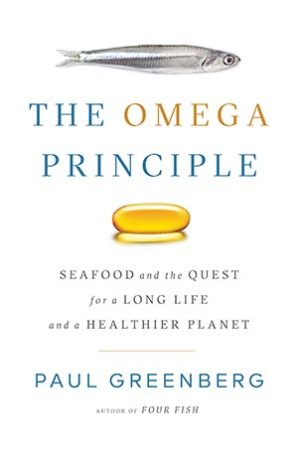 The Omega Principle (Paul Greenberg)
The Omega Principle (Paul Greenberg)
The author of several books about our seafood, Paul Greenberg takes us for a deep dive into the merits, demerits and challenges of Omega 3, a nutritionally beneficial fatty acid found in seafood. As you might imagine, the consequences ripple right through the seafood supply chain.
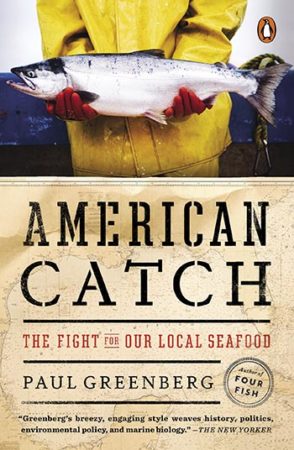 American Catch (Paul Greenberg)
American Catch (Paul Greenberg)
In another book, Greenberg uses stories about three types of seafood — Eastern oysters, sockeye salmon and shrimp — to chart the rise and fall of American fisheries.
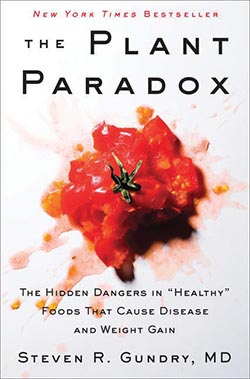 The Plant Paradox (Steven Gundry)
The Plant Paradox (Steven Gundry)
If you think eating bread makes you fat, you might find an argument in this book to support your theory. There’s lots of debate between these covers, and nutritionist Steven Gundry will give you reason to reconsider the science behind most diets.
 The Great A&P and the Struggle for Small Business in America (Marc Levinson)
The Great A&P and the Struggle for Small Business in America (Marc Levinson)
For some history about mom-and-pop stores, in the context of the grocery juggernaut that was A&P (aka The Great Atlantic & Pacific Tea Company), read Marc Levinson’s book about the grocery giant. A&P threatened Main Street stores long before anyone had ever heard of Walmart.
 Podcasts
Podcasts
 Eat This: Our Daily Bread series
Eat This: Our Daily Bread series
We continue to be fans of Jeremy Cherfas’ “Eat This Podcast.” Recently, he explored every angle and story about wheat in at least 31 micro-episodes. You will learn about Red Fife, sourdough, bakeries, mills and more. We love enthusiasm, and Mr. Cherfas’ zeal takes us to a very complicated slice of bread.
 Planet Money
Planet Money
Born out of the financial crisis in 2008, National Public Radio’s podcast about the economics of everything covers food in unexpected ways. From the cost of popcorn in a baseball stadium to the concept of “free” food, Planet Money is full of insights about the role economics plays in how we eat.
 Food52’s Burnt Toast
Food52’s Burnt Toast
Since 2009, Food52 founders Amanda Hesser and Merrill Stubbs have curated this community-based trove of kitchen goods and recipes. Their podcast, “Food52’s Burnt Toast,” will elucidate just how your toast burns — and why. Such a simple food, with a complicated twist.
 Article
Article
We found another ingredient map in the article “Deconstructing the Environmental Footprint of a Sandwich” in Anthropocene. You may never again order a meat sandwich. Check out the first issue of Food+City for our map of the ingredients for a sandwich made in Austin.
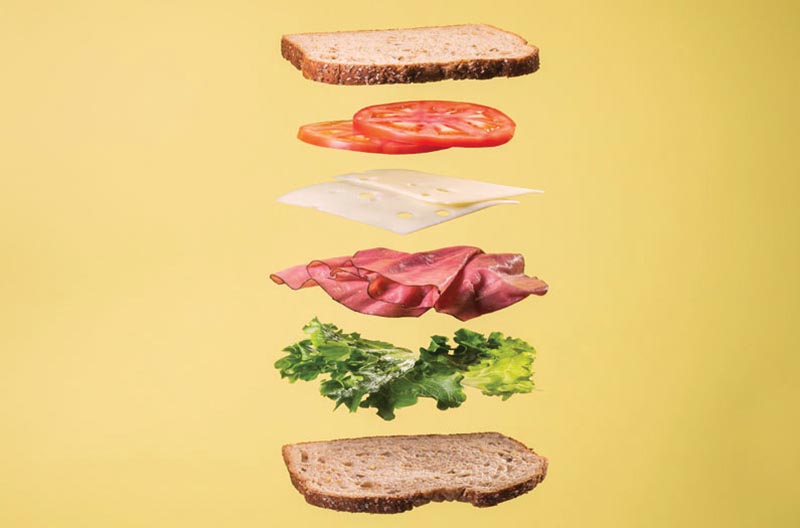
 Film/TV
Film/TV
 Anthony Bourdain’s Parts Unknown
Anthony Bourdain’s Parts Unknown
The passing of food legend Anthony Bourdain is a good reason to review (or re-view) his award-winning Parts Unknown. It’s worth reconsidering every episode in appreciation of his close-up view of food and the people around the world who make it.
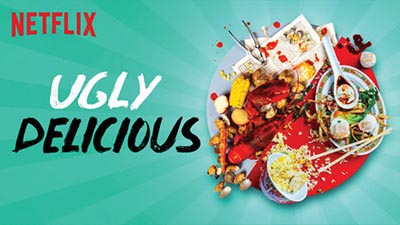 Ugly Delicious
Ugly Delicious
As our screens flood with documentaries that shame and disgust us, we are ready to see a new take on the food world. David Chang does this with his series about ordinary food made by ordinary people. The series also has helpings of Chang’s personal story about his beginnings as a chef and his conflicted relationship with Korean cuisine.
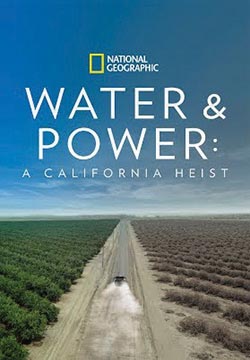 Water and Power: A California Heist
Water and Power: A California Heist
Food production relies on water. With fires raging in California during the summer of 2018, water resources for firefighters were even more scarce. Long the focus of battles between environmental conservation activists and economic development advocates, water resources are hotly contested. If you want some historical context for this topic, check out the PBS “Cadillac Desert” series, especially “Mulholland’s Dreams.”
Startup Spotlight: Ten Acre Organics
Urban farming is a hot topic in food production right now, but creating a profitable farm in the middle of a city is a hard field to plow. We caught up with 2015 Food+City Prize winner Ten Acre Organics to find out how they did it.
Ten Acre Organics (TAO) co-founders Michael Hanan and Lloyd Minick have been working on their urban aquaponic farm since 2013. Since then they have been through several iterations of products, processes and procedures. Thanks to determination and their perfect-looking, colorful variety of Bibb, Romaine, Oak Leaf and Red and Green Leaf lettuces that have attracted Austin’s top chefs, TAO became profitable in early 2018. Their five-year journey has required patience and persistence — qualities that are emblematic of every entrepreneur.
Bootstrapping the capital to get started via a Kickstarter campaign, they stayed afloat in the early years with grant money and the support of friends and family. Ten acres of land, Hanan and Minick thought, “was the ‘just-right’ size for a diversified farm to achieve economies of scale and profitability while still being able to distribute 100 percent of its produce locally,” Minick says.
Working on the farm as a “garage project” for the first year, they painstakingly developed about one-tenth of an acre from scratch in their backyard in north Austin, consuming most of what they produced. At that point the co-founders faced a question all entrepreneurs must address: How do I quit my job and work on this full time?
Raising a seed investment round is a good way for startup founders to earn the ability to work on their company full time. It’s also validation that other people see value and promise in your idea. TAO was looking for both. Then, in 2015, a panel of industry expert judges named Ten Acre Organics the Grand Prize winner of the inaugural Food+City Challenge Prize, which came with $10,000 in prize money. While the money helped them float the operation for a few months while they continued to raise money, the more important thing, according to Lloyd, was the validation.
“Winning the Food+City Challenge Prize proved to us that we had a good idea, and that investors recognized the opportunity. It really helped in terms of our reputation,” he says. Later that year, TAO closed their seed investment round with $500,000.
Receiving validation and investment are big milestones for startups. But the work doesn’t end there. With big milestones come big expectations. Scaling a business from working prototype to profitable company is often more difficult than drumming up initial success. And in the farming business, where margins are notoriously thin, economies of scale are the only way to have financial success.
But expanding an urban farm can be challenging because city land is expensive. Hanan and Minick could have moved a few miles outside of town to save on land and utilities, but their dream was to grow a community, not just food. Creating a place for community workshops, think-tank style dinners and private events is their way to help people understand and appreciate where our food comes from, how it’s grown and by whom.
“We want to make an a place that is not just a farm but a community center as a change agent, where people who feel disconnected and alienated by the modern industrial food system can experience social cohesion,” Micinic says.
With the community in mind, they stayed true to their dream and in 2016 purchased an existing urban farm just a few miles from downtown Austin. Hanan and Minick saw potential in an urban farm that was struggling operationally and financially. They decided that they could improve upon the business with things like better system design and engineering, better staffing and personnel management, improved horticultural practices to maintain product quality and consistency, and an increased focus on sales and customer development. With these improvements, they thought, Agua Dulce farm could be the model profitable urban community farm. In early 2018, they celebrated their first profitable month. Their certified organic, aquaponically grown leafy greens are the opposite of ugly produce, and the quality of the product is one of their most significant accomplishments. It’s also a differentiator that helped them catch the attention of some of the most high-profile restaurants in Austin.
All it took was four years of back-breaking labor, day in and day out. And that’s just on the farming side. There are also business duties and decisions to be made regarding human resource management, accounting, sales and marketing, and disaster control. While he stops short of telling people not to build more urban farms, Minick has a strong warning for the folks who think urban farming is more romantic than rigor.
“Farming is hard. Starting a business is hard. And starting a farming business is just insane,” Minick says. But if you’re insane enough to work long hours in the Texas heat for several years, you just might end up with a successful business.
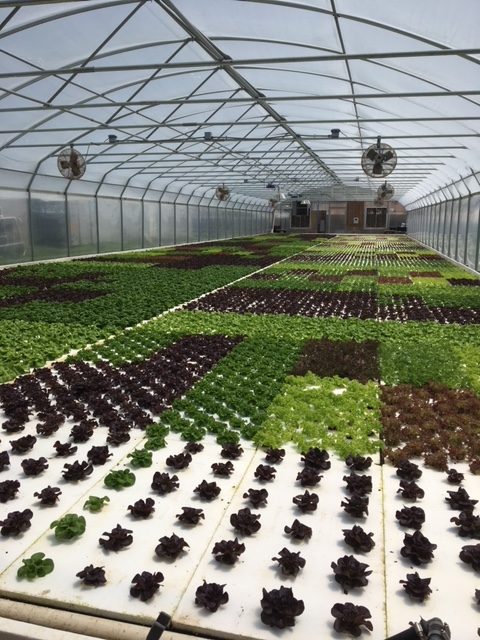
 Watch the recap video of the 2015 Food+City Challenge Prize featuring Ten Acre Organics as the Grand Prize winner.
Watch the recap video of the 2015 Food+City Challenge Prize featuring Ten Acre Organics as the Grand Prize winner.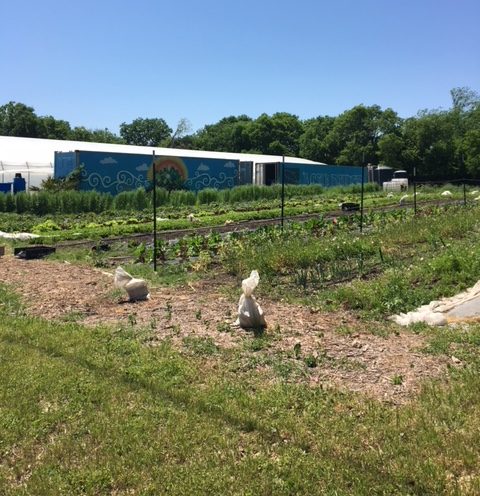
Startup Spotlight: Bento Picnic
It’s not easy or cheap to open a restaurant in a growing city, and entrepreneurs are coming up with creative ways to realize their dreams of a traditional storefront restaurant. We caught up with Leanne Valenti, founder of 2016 Food+City Challenge Prize participant Bento Picnic to find out how she did it.
Leanne Valenti, founder of Bento Picnic, learned her craft from a master. Just after graduating from the Natural Epicurean culinary school in 2011, a close friend offered Valenti an opportunity she couldn’t pass up to move to Tokyo, live with her family and learn traditional Japanese cooking from everyone’s favorite chef: Mom.
During her time in Japan, Valenti became enthralled by the beautiful and healthy style of Japanese cuisine. She was particularly inspired by the bento box lunches that, according to a recent study, nearly half of the population of Japan eats each day. Seeing potential to serve delicious and healthy food to an increasingly on-the-go American market, she set a goal to provide healthy food at affordable prices.
“When I founded Bento Picnic in 2015, I did not have a storefront or a distribution plan,” she says. Undaunted, she dove right in, seeking opportunities to sell her products whenever possible. In addition to catering, she sold bentos at farmers markets and had pop-up shops, including one in a kids activity center and one in a rock-climbing gym that remains operational today. But she gained the most momentum from businesses who brought in lunches for their employees. With their compartmental style, Bento Boxes can be easily customized to fit many dietary preferences — which makes it easy for customer to order from one restaurant and please omnivores, vegans, vegetarians and gluten-free folks.
After a year of doing business in a variety of settings, she knew she had a product that people loved. Her challenge was finding “the best way to expand my footprint beyond farmers markets, pop-up pushcarts and catering.”
Prompted by a mentor, Valenti entered Bento Picnic into the Food+City Challenge Prize in 2016. She points to the competition as a time when she really started thinking more critically about how to grow and scale her business.
“One piece of advice I received from a Food + City judge stuck with me, and it proved to be true,” she recalls. “He said that it is very difficult to bring a new product to market AND develop a new method of coming to market concurrently. Since I am first to market with homestyle (as opposed to sushi-restaurant-style) bento boxes in Austin, he suggested that I would have more luck if I could come to market in a more traditional way, like a storefront.” Good advice, but easier said than done.
Opening a restaurant in Austin is tricky business. Despite the city’s reputation as a destination for foodies, more than 70 restaurants and food trucks closed in 2017 alone. Meanwhile Austin’s growing population continues to drive up real estate prices for retail and residential properties. The competition from large restaurant groups and corporate chains is also increasing, and the actual number of viable restaurant properties is limited.
Because of this, many entrepreneurs start small, channeling their dreams of would-be restaurants into food trucks, food carts, pop-up stores, catering operations run from commercial kitchens and farmer’s market businesses. Their goal is to build momentum and secure enough capital and customers to scale up and enter the brick-and-mortar scene. It’s a model that has proved successful for some Austin’s restaurants, including places like Franklin Barbecue and Veracruz All Natural, which started as food trucks.
“The two main things that kept me from launching a storefront from day one were the upfront capital investment required and the difficulty of acquiring a second-generation restaurant space in Austin,” Valenti says.
Focusing instead on catering and a pop-up kiosk model, Bento Picnic achieved slow but steady growth in 2016 and 2017. Renting a kitchen space in the back of a marketing firm’s office was a good way to keep overhead down and establish a customer base for its catering, pick-up and delivery business.
By the end of 2017, growing demand offered an opportunity to expand. That’s when a bit of serendipity occurred. When the marketing business decided it was time to move on, Valenti says she jumped at the opportunity to buy the place and open a bento shop storefront.
“We felt really lucky that the space became available, and it was too perfect to pass up,” she says.
The move is paying off. “So far, it has been a good move, with Bento Picnic seeing a noticeable increase in brand awareness, catering sales up 60 percent and the daily lunch business exceeding the sales that used to occur in a full week,” Valenti says.
While the jump to a brick-and-mortar establishment is never easy, most entrepreneurs know there’s a leap of faith that goes along with getting bigger. And for some, unlimited faith in their growing business comes naturally.
Valenti says she’s considered taking one of her original creations, “guacamame” (edamame guacamole), to market as a consumer-packaged-good (CPG) product. And having opened a storefront in the ultra-competitive Austin market, opening in other cities now seems achievable.
“Now that I’ve honed my business model and launched my brick-and-mortar space, I’m looking to expand Bento Picnic’s presence statewide,” Valenti says. It seems the scaling never ends for food startups.
Side Dish: Fashionable Foods
When trendy foods pop, suppliers and retailers have to be ready — or figure out how to make adjustments fast — to meet demand. In this age of food as social media fodder, we looked into the reality of getting more açaí, seaweed and turmeric on shelves — stat!
Açaí
Açaí bowls are Instagram shark bait. How can you resist snapping a photo of a beautiful deep-purple smoothie bowl layered with tart red strawberries, fat blueberries and flaky white coconut?
It’s almost unfathomable that just 20 years ago, few Americans had even heard of this tiny Amazonian super fruit. Sambazon co-founder Ryan Black says his açaí company struggled to get people interested in the palm fruit “because they hadn’t ever heard of (açaí) and couldn’t pronounce it.” (It’s AH-SIGH-EE.)
Sambazon’s attempts at açaí education have helped drive açaí to the top, as have the influence of social media word of mouth and a surge for health foods. Get enough people declaring something is good, and their Instafriends will want to try it themselves. As of today, #acaibowl is winning Instagram with 885,608 public posts — while the health food of yesteryear, #avocadotoast, nets only 653,172 posts.
In 2016, more than 300,000 tons of açaí products were sold across the world. By 2026, that number should be above one million tons. To keep up with demand, “we have increased sourcing and production in the last few years,” says Sambazon co-founder Jeremy Black. Sambazon owns a processing facility in the Amazon. They have vertically integrated production to streamline their work and protect the delicate fruit, which needs to be quickly processed because it rots.
For a product that feels very 21st century, the harvesting method remains surprisingly ancient and human. Workers scale the trees, pick the fruit and place it in woven baskets to be moved rapidly downstream to the processing facility. The company has been careful to ensure the sustainability of its açaí business by hiring locals to wild-harvest and hand-pick açaí, as well as to plant new seeds.
So far, there doesn’t seem to be an açaí shortage. But what if demand exceeds expectation, or if açaí bowls become the new favorite of a huge market like China? Can the Amazon handle the future of açaí?
Seaweeds
“Civil Eats,” the 2014 James Beard Foundation Publication of the Year, calls seaweed “the next big thing in sustainable food.” McCormick Spices identifies furikake as a spice to look out for in its 2018 Flavor Forecast. And the World Bank considers it an ecological product that’s also a problem-solving darling when it comes to feeding Earth’s hungry population.
Seaweed is of course a staple in Asia, where kombu, nori and wakame are consumed daily in soups, seaweed rolls and side dishes. According to the FishStat (2014) Electronic Fisheries Database of the Food and Agriculture Organization of the United Nations, nearly all — 99.4 percent — of the world’s seaweed, is produced in Asia. While Asia has long been seaweed-mad, in the western world nori is suddenly popping up in packaged snacks and in all-American foods you wouldn’t expect, such as popcorn, mayonnaise, smoothies, burgers and hot dogs. Seaweeds are versatile and are produced in many forms to suit many tastes — from a funky fried hijiki tofu burger popular at a New York University student fave called Dojo, to pungent wakame “birthday soup” at L.A. Koreatown’s Hangari Bajirak Kalgooksoo, to Uchi’s clean-cut, nori-wrapped negihama roll in Austin. It’s a far wider array than the leaves of wakame swimming in your Japanese miso soup.
“It is definitely a trend, similar to the recent kale craze,” says Michael Graham, creator of Monterey Bay Seaweeds. “There are flavored nori sheets and seaweed salad in Costco. These are not new products, but they are new vendors, and they are reaching new customers.”
Graham, also a biology professor at Moss Landing Marine Laboratories and the editor of a seaweed scientific journal, says he receives dozens of emails and calls a month from people who want to know more about seaweed. “I don’t know if the interest will last many years,” Graham says. “But regardless, it’s positive. Seaweed really is all that it is cracked up to be — so good for you, and good for the environment.”
Seaweed farmers are responding to the demand. From 2011 to 2012, the most recent years for which World Bank figures were available, global production of one of the most commonly eaten seaweeds, red nori (the dry, crispy wrappers of your maki rolls), increased by 13.57 percent, or 82,634 wet metric tons. Global production of an even more popular seaweed, wakame, ramped up by 21.94 percent, or 384,973 wet metric tons. Overall, including other seaweeds, global production in 2012 was approximately 3 million tons dry weight, increasing by 9 percent per year.
By 2050, if the World Bank has its way, we’ll be producing 500 million dry tons of seaweed, adding 10 percent to our current food supply. That’s definitely all-you-can-eat maki. To do that, we’ll have to augment seaweed farming by 14 percent per year. And the bank thinks we could do that in only 0.03 percent of the ocean’s surface area. More for less is usually a scam, but seaweed may be the bargain store of the sea.
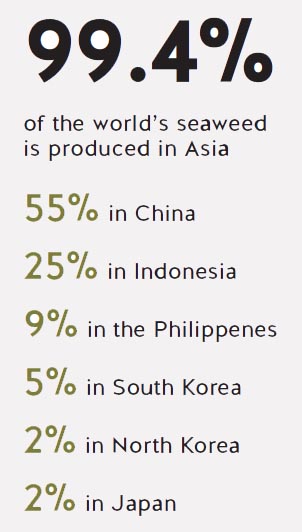
 Watch Mike Graham excite chefs with his land-based seaweed farm in Monterrey, California. Video by Zagat.
Watch Mike Graham excite chefs with his land-based seaweed farm in Monterrey, California. Video by Zagat.Turmeric
While Americans have just “discovered” golden milk (aka moon milk, golden latte or turmeric tea), its origin is an old Indian drink called haldi doodh. But its new in-demand status as an anti- inflammatory health food means turmeric, an ancient Ayurvedic root, has staked its spot in the mainstream American pantry.
Turmeric has hit the big time financially, shooting up from $2,700 million in 2012 to more than $3,160 million in 2016. By 2021, according to a report on Technavio, the global turmeric market is projected to post a compound annual growth rate of 6 percent (other sources list it as 5.5 percent by 2027).
“Volume is exploding for organic turmeric,” says Kai Stark, commodity manager at Frontier Co-op, a cooperatively owned wholesaler of natural and organic products based in Norway, Iowa. “In the last 10 years, the amount of organic turmeric Frontier Co-op has purchased increased by a factor of 10.” Despite the demand, turmeric farmers are struggling to stay alive, even as golden lattes sell for $15 per cup in the United States.
Approximately 80 percent of turmeric is grown in India, both wild and farmed. But the small margins are leaving some Indian farmers high and dry. To fight this turmeric poverty, Frontier Co-op collaborates with an organization called Peermade Development Society. PDS works with marginalized farmers, especially women and poor rural folks, to develop both the land and the farmers’ budgets sustainably.
“In the past, marginal farmers, who have only one to two hectares of land, would sell their commodities to middlemen for a small price, and then middlemen would sell again, taking the entire margin,” Stark says. “PDS Organic Spices came in to eliminate the middlemen and help these farmers sell directly to companies like Frontier Co-op.”
In 2009, as the turmeric craze began to take hold, Frontier supported a PDS program to scale up their farmers’ organic turmeric production. PDS, with Frontier’s help, began trials to grow a variety of turmeric with a higher content of curcumin, the potent antioxidant and anti-inflammatory in turmeric. Frontier also diversified its organic turmeric supply chain, adding suppliers from Central America.
Sana Javeri Kadri, owner of Diaspora Co., a sustainable, single-origin, direct-trade turmeric company, also cuts out the middleman to bring maximum profits to her turmeric farmer, Mr. Prahbu, in Andhra Pradesh.
Javeri Kadri founded Diaspora Co. as a small side project but was inundated with high demand from the start. When her first four batches of turmeric sold out within hours, she contacted Mr. Prahbu and asked for everything he had. Her last batch sold out in about six weeks. Between filling 20 to 100 orders a week, she closely manages 12 wholesale accounts, asking buyers for six-month projections so Mr. Prahbu has adequate time to plan.
Javeri Kadris says turmeric is planted between May and June, before monsoon season, when it soaks up all the rain. Harvest happens between January and February, so the timing is important — as are the seeds.
“Find the seeds your grandma was using, before the British showed up,” Javeri Kadri says. “If you don’t protect biodiversity, you end up with the heartiest tomato that will survive the grocery store but doesn’t taste very good. It’s the same with turmeric — we’ve already got this mass-marketed bright yellow turmeric with a mild smell, with no biodiversity or cultural history.” Her explicitly political mission is to preserve pre-colonial biodiversity, create the best-tasting, most diverse array of turmerics and reward turmeric farmers in India while doing it.
Still, we can expect the inevitable when it comes to trends: strange products like turmeric-flavored coffee creamer, croissants and cronuts, and frozen turmeric shakes (despite Ayurvedic wisdom that turmeric should be eaten heated for optimal benefits). Because when a trend takes hold, reason may exit through the pricey gift shop, in the form of a chai golden milk donut that screams, “I <3 turmeric.”
Where Are Food+City Startups Headed?
If the 2018 Food+City Challenge Prize entrants are any indication, we’re well on the way toward improving our food system.
Four years into our competition for food supply chain startups (read about all four years’ of finalists), we’ve noticed some interesting trends, including changes in the way entrepreneurs think about innovation. Progress is apparent despite food regulations, a lack of consistent data standards and the companies’ need to achieve scale while remaining small and agile. For many startups, technology is central — but it’s not necessarily all about apps anymore.
Instead, futuristic tools that bring new rigor to agriculture and warehouse management are on the horizon. UAV-IQ Precision Agriculture, one of three $10,000 Food+City Prize winners, provides precision crop monitoring for farmers using drones and sensors. The new technology enables farmers to use the gathered data to make decisions about resources to maximize their yields and reduce crop losses.
“UAV-IQ is attacking the fundamental lack of precise knowledge of where variability exists within fields,” says co-founder Andreas Neuman, former assistant director of operations for the U.S. Air Force’s Global Hawk Unmanned Aerial System. “This lack of knowledge and suitable toolkits to first identify and then manage variability leads to massive inefficiencies due to one-size-fits-all approaches, which often result in over-usage of water and chemicals.”
Another high-tech agriculture solution is Transaera, which is commercializing a material developed at the Massachusetts Institute of Technology that absorbs moisture within greenhouses. The product gives indoor farmers more control over their growing environments and enables them to reduce plant disease and increase yield while also reducing energy consumption.
“To feed nine billion people by 2050, we need new agricultural systems,” says founder Sorin Grama. “Indoor agriculture could be an answer, but it is an energy-intensive operation that will not scale unless we figure out how to grow foods using less energy and water.”
Entrepreneurs are also using technology to connect links in the food supply chain. For example, Stowga, a London-based business-to-business startup, connects retailers to unused warehouse space. This “Uber for warehouses” helps firms with excess storage use their space more efficiently; and it offers below-market options to businesses that may need space for only a short time.
Team mentor PJ Tanzillo, head of product at Favor Delivery, has high expectations for Stowga, led by CEO Charlie Pool. “Charlie and team are not your typical early-stage startup,” Tanzillo says. “They have a clear line of sight to a sustainable business, and they have achieved product and market fit. I’m confident their success will continue.”
Making connections across chain links continues to be a key draw for startups. Vinder is a digital platform that connects home gardeners who grew more than they can eat with community members who seek freshly grown food. Sam Lillie launched Vinder by going door to door in his hometown of Port Townsend, Washington, asking residents whether they had home gardens and if they ever had extra produce they’d be willing to sell. It wasn’t long before Lillie connected dozens of home gardeners with produce-hungry families, moving more than 300 pounds of fruits and vegetables among them.
“We have been trained over the last 70 years to buy our produce and processed goods from a giant supermarket chain that sources products from all over the world,” says Lillie. “Vinder reduces the food waste that happens in every city across the country while efficiently reducing delivery miles because you are buying from your neighbor and not some farmer in Argentina.” With the Vinder website and app, consumers in dozens of cities in 11 states can connect with nearby growers to buy the produce they seek, reducing food waste and putting money back into their communities, literally at the grassroots level.
If you don’t have a garden but want to grow your own food, Indiana-based Aggressively Organic, one of three Prize winners, can help. It offers micro-gardening systems for people without access to earth-based gardens. Users can grow lettuces, tomatoes and other fresh veggies in just one square foot of space in their homes. Anchored by cardboard “micro-growth chambers,” the hydroponic systems use a mere 16 ounces of water to grow a head of lettuce. In contrast, conventionally grown lettuces require 25 gallons of water per head.
“Instead of cut-and-kill or pull-and-ship — like all other current modalities of agriculture that end up shipping already dead and dying goods that end up being wasted — our stuff stays living, and we harvest when hungry,” says founder Jonathan Partlow.
Vinder and Aggressively Organic aren’t the only companies working on solutions to curb the growing amount of food waste. The 2018 submissions included ideas for moving excess food to consumers and methods for repurposing waste such as spent grains from beer breweries as ways to limit the amount of waste that ends up in the landfill.
The most tenacious and complicated problems that startups try to solve involve aggregating and transporting food from local producers to markets, restaurants and grocery stores. It’s a problem that food hubs have tried to solve for years. Today’s startup teams are working on a range of platforms: from apps that aggregate farm inventories to hauling and logistics businesses that focus on the transport of food from local producers to consumers. One of our contestants, GrubTubs, retrieves food waste from restaurants, turns it into compost for local chicken farms and then provides eggs back to the restaurants.
Another, Houston-based Grit Grocery, brings the grocery store right to your neighborhood, using a food truck model. Consumers no longer have to travel to the fringes of their communities to shop at energy-gobbling big-box grocery stores. Instead, Grit Grocery trucks bring locally grown produce, local honey and meal kits — featuring, for example, shrimp from the Gulf of Mexico — right into communities, shortening the last food mile and cutting the distance from farm to table.
“The shopping experience fundamentally shapes the flow of food, not only by creating limitations on what kind of food can be supplied but also by subtly creating demand for certain foods or even entire categories of food,” says Dustin Windham, who founded and operates Grit Grocery with partners Michael Powell and Jamal Ansari. “Building on that, we want to develop a new kind of localized supply chain that is specifically tailored to retail experiences, which is more curated, community-driven and socially intimate.”
Some of these startups rely on volunteers and are modeled more like nonprofit organizations that rely on grants and donations. Others are attempting to create value for both farmers and consumers by charging either the farmer or the consumer for their logistics services. These startups are responding to increasing consumer demand for local food from small producers. But it’s not clear if this local supply chain can find a way to make money without working with the larger food distributors.
In Kenya, where large food distributors aren’t as common in the food system, Taimba seeks to tame a chaotic and fragmented supply chain by connecting farmers with retailers and vendors through a cashless business-to-business app. Vendors order their produce via the app, then Taimba retrieves it from the farmers and delivers it to the marketplace. Farmers receive a fair price for their goods, and vendors receive inventory at below-market prices.
“The ability to offer a market and good prices to small-scale farmers has really boosted farmers’ earnings by reducing wastage and paying promptly,” says founder Dominique Kavuisya. Taimba went home with one of three $10,000 Prizes.
While consumers everywhere want more local food, the system to deliver the goods is still awkward, unsustainable and encumbered by capital equipment expenses and the lack of technology and tracking on the small-producer side. We are anxious to see how our finalists work on solving these issues.
Through the innovative work of our contestant startups, we are optimistic that we will see more locally produced fresh produce reach consumers, less food waste in the landfill and better and safer products in our food system.
Prize winner Andreas Neuman of UAV-IQ with Food+City’s Robyn Metcalfe.
UAV-IQ’s monitoring technology in use.
Transaera founder Sorin Grama makes his pitch at the 2018 Challenge Prize.
Transaera’s technology absorbs moisture in greenhouses.
Map by Stowga representing available storage space in the United Kingdom.
Vinder founder and CEO Sam Lillie.
F+C’s Robyn Metcalfe with Prize winner Jonathan Partlow of Aggressively Organic.
Aggressively Organic’s hydroponic growing system with leafy greens.
Grit Grocery truck in Houston.
Grit Grocery founder Dustin Windham, right, visits with a supplier in the field.
F+C’s Robyn Metcalfe congratulates Dominique Kavuisya, Taimba founder and Prize winner.
FOOD+CITY Challenge Prize
Innovation in food takes all forms, from making improvements to pallets to creating new avenues for delivering food or designing packaging that increases shelf life. Since 2015, we’ve hosted a challenge prize for startups in the food space that are challenging our notions of how the supply chain works. The 2018 Challenge Prize was awarded on March 13, 2018, at SXSW Interactive. Visit foodandcity.org/prize to learn more about this year’s entrants and winners.
Chain Gang: New Tech Links Trucks on Open Road
Pelotons are not just for bikers. Truckers are bringing their rigs in line with packs of other trucks to save on fuel costs and increase road safety.
Companies such as Peloton and Daimler Trucks are entering the market with their connected truck platforms, enabling convoys of trucks to travel together in close proximity while sharing software and connectivity.
A compromise between driverless trucks and human drivers, these new systems still include a human driver that steers each rig. But the entire convoy accelerates or brakes based on the movements of the driver in the lead truck. Tesla is also joining the pack with its autonomous, electric trucks.
Convoy software can perform real-time route optimization from the cab and provide truckers with an alternative to spending hours, days and weeks at the wheel, navigating traffic and avoiding collisions.
GoGo Chickens: Watch Them Grow from Egg to Dinner
If you live in a city but still want to look deep into the eyes of your dinner, you’re in luck. Thanks to blockchain technology being developed by Chinese insurance tech company ZhongAn Online, people will soon be able to use facial-recognition technology to track organically farmed chickens they’ve pre-purchased. They will also be able to monitor their bird’s movement in real-time through GPS tracking bracelets attached to birds’ legs. Welcome to the brave new world of farm-to-table eating in the 21st century.
ZhongAn is billing the program — called “GoGo Chicken” — as a way for health-conscious city slickers to follow the life cycle of their food, giving them an illusory experience of being just a little less displaced from a food system that is increasingly out of sight of most. Right now only 100,000 birds have been outfitted with GPS bracelets, but the Shanghai-based company plans to incorporate about 23 million birds into project over the next three years, pushing the Internet of Things onto Chinese farms, according to the South China Morning Post.
Once inducted into the GoGo Chicken system, the free-range birds will be attached to devices that track their movement and what kind of food they ate. Because these chickens are slow-grown, they’ll live for four to six months, as opposed to the 45 days most factory-farmed chickens live before slaughter. The facial-recognition technology will ensure that anyone who buys one of these birds will be able to actually see chicken from their smartphones. Technology that can recognize an animal’s face is not new; Google has used it to identify pets in people’s photos.
ZhongAn is trying to take advantage of the growing “farm-based tourism” trend in China, where city-dwellers take weekend trips out to farms where they can interact with food animals. The company has said its technology is a tool for members of China’s surging middle class who are also concerned about food safety and want to keep closer tabs on the sources of what they eat. Those anxieties spread rapidly in China after a 2014 crisis in which a supplier for McDonald’s and KFC was caught selling rotting and expired meats to the fast-food chains.
This article originally appeared in Quartz.
Recipe Tracker: Cooking Out of the Box
Have you ever had a compost bin full of bits and druthers that you think are almost edible? You know, the thin peels of broccoli or carrots or apples? What about a refrigerator drawer with wilted greens or the selection of cheeses you got for that cocktail party a month ago? Do you just chuck them out, concerned that they’re not fresh enough to use or be delicious?
And what about the money you spent on those ingredients? Or the costs of producing them? Does tossing no-longer-fresh food take a toll on your grocery budget, as well as your environmental conscience?
As landfills are increasingly brimming with food that was produced but never consumed (for a variety of reasons), it may be time to reconsider the ways in which we assign a value to ingredients. After all, in less affluent eras — or areas of the world and the U.S. — people couldn’t afford to waste food products that could still contribute to a tasty and nutritious meal. Think of it as a really good time to figure out how to be creative with your organic kitchen matter.
The good news is lots of people, including some of the world’s best chefs, are working on ways to address this very issue. In fact, two recent cookbooks — or, let’s say, sources of recipes — approach the notion of creating a dish from opposite ends of the spectrum. One, “Bread is Gold,” by the world-renowned chef Massimo Bottura, is a collection of recipes and stories by and about a variety of chefs who were called to cook using only products that arrived at a pop-up soup kitchen during the 2015 Milan World Expo as excess, day-old or deemed insufficiently fresh to sell.
The Expo’s theme, “Feeding the Planet, Energy for Life,” spoke directly to Bottura, who worked with a parish priest in the city to transform an old theater into a dining hall that could accommodate, restaurant-style, 100 guests each day — serving lunch to area school children and supper to local homeless people.
For the fancy chefs who came to Milan to cook for a day or two at the Refettorio, their constrained ingredient lists were the catalysts to their creativity. Deliveries included days-old bread, produce in various states of maturity or discoloration, cheeses and other dairy products that were nearing or past their sell-by dates. Each day’s supplies were different and unpredictable. After the initial shock of the arbitrariness of that day’s delivery wore off, the enterprising chefs got straight to work, creating delicious and comforting meals for their guests.
“Something of apparently no use could become a secret weapon in the kitchen, a super power that could magically transform a dull dish into a vibrant one,” Bottura writes about the solution Chef Cristina Bowerman devised for using the outer — and often discarded — leaves of vegetables: Dry them and grind them into intense powders that add stealthy flavor to dishes. (She’s not the only one who makes savory powders from dehydrated vegetable peels; read on.)
The chefs wasted nothing because very little was available to start with. Even banana peels were used to make a chutney. It was a revelation, even to one of the world’s top chefs, Bottura. “If you open your mind and start thinking differently about ingredients, then you no longer have to throw away a banana peel ever again,” he writes.
By contrast, for Chef Watson, developed by IBM — yes, that Watson — the sky’s the limit when it comes to ingredients. Through machine learning and algorithms, an online app called Chef Watson will take in up to four ingredients that you suggest (whether or not you see how they might result in something delicious) and output a set of instructions that it “believes” will create an edible dish. Chef Watson offers a never-ending source of combinations for any ingredient under the sun. [Editor’s note: Alas, IBM closed its Chef Watson site in June 2018.]
The computer ingested the entire archive of Bon Appetit magazine, as well as a huge dataset of different ingredients and their detailed flavor profiles. From there, Chef Watson learned to recognize synergies — ingredients that seem to go well together (understood perhaps by frequency of pairing or through the logic of their marrying profiles). Garlic and tomatoes. Mushrooms and butter. Pork and apples.
As the recipe appears on screen it displays three graphic measurements — synergy, pleasantness and surprise — that help the user determine how the hypothetical dish might turn out. Just as constraints fueled the chefs at the Milan Refettorio, the search for novelty drives Watson’s recipes.
While the platform is available online for anyone to use, Chef Watson has been on a few roadshows, employed by featured chefs to make novel dishes. The chronicle of these events is a book called “Cognitive Cooking,” another collection of experiential narratives and try-it-yourself recipes.
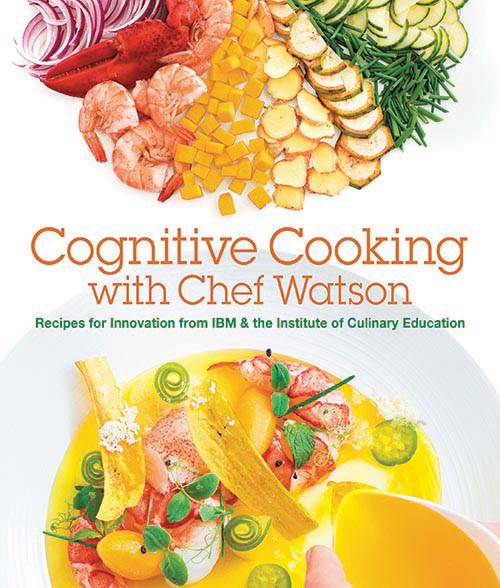
“Cognitive Cooking” shares stories and recipes by IBM’s Chef Watson, which generates recipes from any combination of ingredients. The key to success? Human chefs who applied their knowledge and experience to effect a delicious outcome.
Central to the recipe successes shared in the book are the chefs — the human cooks — whose expertise and creativity helped shape Watson’s “suggestions” of unusual ingredient combinations into viable outcomes. For instance, an early trial was a pastry recipe for Spanish Almond Crescent. But the ingredient list included more liquids than would work to make a stable dough. A chef at the Institute of Culinary Education tweaked the recipe, substituting some ingredients for others to ensure a satisfying outcome but still maintain the flavor profile Chef Watson suggested.
“This is the nature of the human-machine collaboration,” the book notes. “The computer doesn’t dictate. It suggests.”
For IBM Watson Group Engineer Florian Pinel, Chef Watson has great potential to help people eat more healthfully by personalizing recipes according to dietary constraint and personal preference. It also could help reduce food waste by making suggestions based on what lurks in your refrigerator, finding ways to use the last of those beets along with the remains of the star fruit and ground pork you bought for last weekend’s cooking project.
“People can create new, personalized recipes on the fly,” Pinel said in a 2014 TED@IBM talk. “People can cook food that’s flavorful and healthy without ever eating the same thing twice.”
Whether you come to your starting line with leftovers and remainders or a motley collection of ingredients for your next unique Watson creation, a key component is a human willingness to see the value in every piece of the puzzle. Whether it goes into tonight’s dinner or becomes part of the stock for tomorrow’s sauce, just about every edible thing on Earth has a value that should prevent it from simply being next week’s landfill fodder.
IBM engineer Florian Pinel talks about the thinking behind Chef Watson in this 2014 TED@IBM Talk.
That’s certainly the philosophy that drives Chef Ian Thurwachter of Intero, an Italian-themed fine-dining restaurant in Austin.
Fine-dining restaurants are often known for their pristine ingredients and precise techniques, the combination of which should result in a mind-blowing dining experience that’s hard to replicate at home. But often, there’s a cost to this level of quality, and it’s not only found in the prices on the menu.
For example, to create carrot brunoise, the delicate ⅛-inch dice that often garnish soups or stews, one must start with an irregular, round vegetable and make it square. In the same vein, to get to the heart of a broccoli stem, arguably the sweetest, most tender and delicious part of the green brassica, the outer peel must be removed first.
In both instances, once you’ve finished cutting and have the finished ingredients, ready to sprinkle or roast or puree, you also have a pile of peel and other trimmings — byproducts that often end up in a compost bin, or worse, the garbage.
Not so at Intero, where Chef Thurwachter operates a no-waste kitchen in which every stem, peel, animal organ, off-cut of meat or other commonly tossed odd and end is put to flavorful use.
This Intero dish features a pesto made from radish tops, carrot tops and almonds. Extra carrot greens top the dish as a leafy garnish.
Yum Yum powder (dehydrated fermented broccoli scraps) sprinkled over a dish that highlights the rest of the broccoli plant, grilled florets and thin slices of pickled broccoli stem.
A branzino fish entree dusted with lemon powder.
Take the humble, fibrous broccoli peel. At Intero, they pack it with salt and sugar and leave it to ferment for several days. “It balloons up, is intensely pungent, with a very off-putting smell. But the flavor is really awesome — it’s got this tart saltiness,” Thurwachter explains. “We take all that and dehydrate it and turn it into a powder that’s got this background funkiness. It’s intensely savory, and we use it as a seasoning.” (Another clever dehydrated use for vegetable peels….)
The idea for this transformation came from a sous chef who had seen some something similar with mushrooms. Thurwachter engages his team in regular brainstorming sessions to figure out how best to use all the scraps.
“About once a week it’s a necessity,” he says, “but we try to make it an ongoing thing. Every day we have projects.” Projects such as dehydrating the smoked carrots his bartender used for a cocktail. The resulting powder will go into a pasta dough. Or using remnants from artichokes that were served as a bar snack in a stock that pairs with a rabbit tortelloni. “It’s just constantly trying to move these puzzle pieces around,” he says about the challenge of using all the parts.
It’s a challenge that resembles the no-waste reality of Italian farmers of earlier generations. “I love Italian cooking more than I love Italian food because it’s really a cuisine that historically is based on poverty,” Thurwachter says. He explains how veal farmers used to sell their prime cuts to fancy restaurants in Milan and keep the off-cuts — the lower-valued and harder-to-sell cuts — such as the shanks and head, for themselves.
But just as Bottura’s chefs made scrumptious meals from undervalued ingredients in Milan in 2015, Italian farmers of yore tapped into their own creative wells.
“They came up with things like osso bucco milanese (using the veal shank), which is the quintessential Italian dish,” Thurwachter explains. And it didn’t stop there. Arancini, fried rice balls, are made from leftover rice, stuffed with leftover veal and fried the next day for yet another meal originating from humble ingredients. “And then there are these really elaborate preparations where the farmer’s wife took the time to completely bone out the veal head and roll it up into this beautiful roulade and braise it and then slice it super thin and serve it with bitter greens and a salad. I would take that veal roulade with a salad over a veal chop any day of the week,” Thurwachter says, vividly illustrating an alternative way to value ingredients.
While he’s set a different challenge for himself than Massimo Bottura or Florian Pinel, Chef Thurwachter relies on a similar asset: “Our biggest resource in the kitchen is our collective creativity.”
Smarter TV Dinners: Getting Under the Hood of Today’s Takeout
Remember when you had to leave your house to eat restaurant fare? Today, eateries and delivery companies are working together to bring the restaurant dine-in experience straight to your dining room. Eating out in is just a click away. Here’s how it works.
“I ‘favor’ all the time.” Like many Austinites, Pete has co-opted the name of the local food delivery service Favor as a verb.
Exhausted after a multi-city business trip, he sinks into his gray green leather couch and plants stockinged feet onto an oversized ottoman. Plucking his smartphone from a row of remotes, he opens an app and scrolls past bright photos of tacos, pancakes and pho. He settles on an upscale neighborhood Italian restaurant and, within seconds, has sent an order into the ether. Almost immediately he receives notification that a runner named Joshua has grabbed his order.
Pete grins. “I cook at home when I have someone to cook with and for, but tonight it would cost me just as much to go to the store to buy food for a meal. And I’m lazy.” Pete’s not alone.
Favor, along with other meal delivery services like DoorDash, Uber Eats and GrubHub, is part of a rapidly growing niche within the foodservice industry. And they’ve become a boon to an otherwise mildly stagnant sector of the economy — restaurants. A recent study by industry analyst Bonnie Riggs, of market research company NPD Group, finds that half of meals purchased at restaurants are now eaten at home. She predicts that the future trajectory of the industry could improve if restaurants focus on providing consumers with the choices and fast delivery times they need and want.
In short, people from young professionals to busy families are increasingly taxed for time and stressed. One solution is to recover time typically devoted to shopping and cooking by browsing delivery menus. Five years ago, home delivery was largely still the realm of the pizzeria. In fact, Favor’s origin is intertwined with pizza through the college job experience of the company’s founders.
“Ben Doherty and Zac Maurais admit that they were probably the geekiest pizza delivery guys,” says Keith Duncan, senior vice president at Favor. “They were constantly calculating on spreadsheets the most efficient delivery routes.”
Favor, like many of its competitors, started about five years ago. Austin was its first market; now the company is concentrating on expanding into additional Texas cities. Duncan estimates that, since launching in 2013, Favor has completed more than seven million food deliveries — and 90 percent of these were prepared meals from restaurants.
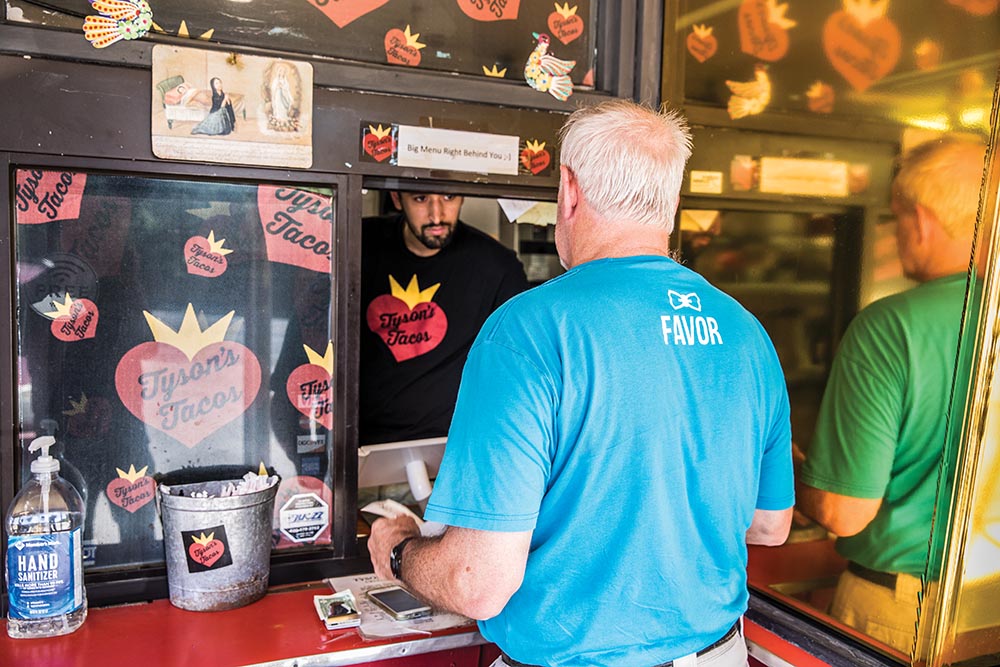
“On the front end, we have a consumer app for placing an order, and on the back end there is a system that makes sense of all the orders and assigns them to delivery folks — runners — who can communicate with the customer once they accept the order,” says Duncan. “We are constantly optimizing the experience to increase the speed of delivery, and we encourage customers to order within a certain radius of their home because proximity is really important for the quality of what is essentially takeout.”
How has this new business model developed so quickly? A confluence of several factors — including the normalizing of cashless, online retail over the past decade, the fact that three people out of four Americans now own smartphones and a trend that sees half of all Americans using their phones for online purchases — has led to a rapid increase in mobile commerce. In fact, it is predicted that by 2020, m-commerce will catapult to include nearly half of total U.S. digital commerce, reaching $284 billion.
Even more critical to today’s digital meal delivery system is a new workforce made up of independent contractors. Favor, for example, uses more than 25,000 runners who snatch orders when they want to and deliver meals in cities using their own cars, scooters or bicycles. The benefit of this flexible workforce to restaurants — and pizza parlors! — is huge, since the delivery team is made up of on-demand contractors rather than regular employees, who would need to be paid by the hour regardless of whether they were out making deliveries.
More traditional restaurants also benefit by taking advantage of what is, essentially, a new revenue stream. According to a 2015 study by the delivery company GrubHub, restaurants that add digital ordering average a 30 percent increase in revenue from takeout. Anecdotally, Favor’s Duncan knows of hundreds of restaurants that avoided closing by capitalizing on this new revenue stream. Digital meal delivery is so successful that there is now a new trend in some cities: “ghost restaurants,” which are essentially just kitchens, with no table service or wait staff.
The growth of the meal delivery industry is also a boon to the companies who develop the digital apps. All seem to be capitalizing on the service provided by the flexible workforce. Favor delivers more than meals — everything from milk to medicine — which will only expand now that the company was recently acquired by regional supermarket chain H-E-B. DoorDash is no exception. Headquartered in the Bay Area, this company has expanded into numerous cities across the country to efficiently deliver any purchase.
“The vision for DoorDash is not just [being] a food delivery company but instead a logistics platform, [striving] to become experts in delivering anything in a city from point A to Point B,” says regional general manager Benjamin Lipson. “We get increasingly sophisticated and learn from our experience, incorporating it in our algorithms and focusing on optimizing travel time.”
Twenty-seven minutes after placing his order, Pete’s doorbell rings. There is Joshua, plastic carrier bag in hand. The exchange is seamless and short because Pete has already paid for his meal, delivery fee and tip through the app.
He now has the ultimate TV dinner for his night at home: delicate rounds of roasted beets and oranges resting amid bright specks of fennel and mint, followed by a perfect portion of beef nestled in polenta, shallots and savory gremolata.
Can you smell the sweet, layered herbs in the vinaigrette? Yum!
Handoffs: Bills of Lading and the Cargo Custody Relay
We’re hearing more and more about high-tech ways to track and trace our food as it moves through the supply chain to our plates — from barcodes to blockchains. But the practice of tracking food shipments isn’t new. It has long been a way for shippers to make sure their cargo is safe and secure throughout its voyage.
At each step along the supply chain, anyone who handles a shipment has custody, a specific term that connotes legal responsibility. The chain of custody confirms the identity and quantity of the shipment (e.g., 400 bushels of Italian pears), declares that the pears were continuously controlled and transported by the carrier and identifies everyone who handled the pears throughout the shipment. Having a clear record of this chain makes it possible for the shipper to track any theft or contamination of the cargo on its way to the receiver.
The documentation that authenticates the movement of food between a shipper and a freight carrier is known as a bill of lading. It’s a receipt that confirms the transition of goods from one link in the chain to the next. This document notes the details of the cargo and its intended path to you, including the type and quantity of a shipment. It’s provided at the end of a shipment to verify delivery of the goods shipped and is the basis for payment for the goods at the receiving end of a shipment. Without these bills of lading, neither the farmer nor the exporter gets paid.
Going back to maritime practices — before planes, trains and automobiles got involved — the bill of lading would have been prepared by a merchant to indicate that the shipper was responsible for delivering the items consigned to him. These receipts were originally called “bills of loading” as far back as the Middle Ages, and they listed what a merchant actually loaded onto a ship. It was a sort of contract between a merchant and a shipper that confirmed the receipt and safe transport of a specific cargo list.
Since shippers often lost ships and their cargo at sea, the bills of lading helped account for losses and reparations. Like today’s tracking tools, bills of lading indicate a transfer of responsibility throughout the supply chain. They are legal documents that confirm ownership of the goods and, as such, are assets the shipper can use to secure credit against expenses.
As the bill of lading moves through the supply chain with a shipment of, say, bags of coffee beans on pallets, the legal notion of ownership and custody travels with the chain. But the cargo list and a receipt are only two tools that leave footprints along a supply chain. These days, we need much more data than these documents provide to effectively track food through our chain.
Newer tools include smart labels with barcodes that communicate harvest dates and times. Scans of smart tags indicate precisely when food passes through the supply chain, when a USDA inspector has certified a meat shipment or the temperature of the interior of a shipping container or a tractor trailer. All this data is being gathered as food travels to our plates.
These new tools go far beyond those old bills of lading, but the intention of those bills and the chain of custody remain the same.
Just wait until blockchain technology picks up where bills of lading and custody left off. Then you’ll be able to see the passage of ownership of your carrots all the way from the farmer’s plot to your pot, who handled your carrot and why, when, where and maybe even the weather outside when the carrots moved between buildings. Be prepared for some surprises.
Blockchain Explained
A blockchain is a distributed, digital ledger used to track shipments. Rather than a single document — the old bill of lading — traveling throughout a supply chain, the information contained in that one document exists in many computers in the network along the way. So every time a bushel of apples moves through its supply chain, information about its steps are recorded, including who moved it, when, why and what resulted from the movement. The data form blocks that leave unique “fingerprints” along the chain. Any attempt to change a fingerprint travels throughout the entire chain, alerting everyone that the integrity of the chain was compromised. If someone steals an apple, the blockchain will know where and when it disappeared. For the food industry, blockchain appears to be a way to prevent food fraud and ensure food safety. Real-time awareness of inconsistencies in the chain will enable faster and more precise responses to food-borne disease outbreaks. Consider the Romaine lettuce contamination in early 2018. Blockchains would have enabled investigators to track back all the way to rows of lettuce growing in the field. At least that’s the theory.
Route Optimization That Allows for Constant Change
When Layla Shaikley began brainstorming with three classmates, it was to fulfill an assignment in a class on entrepreneurship at MIT. The professor had challenged them to devise a technology that could change a billion lives. Focused on developing countries, the foursome looked at how to use data from volatile zones to draw conclusions about crime and personal safety. They decided to target cell phone data and searched for partners outside the U.S.
But when they began asking around, they learned that companies of all sizes had a more pressing problem: navigating day-to-day deliveries. While routing solutions such as Roadnet® — one of the largest — do exist, these technologies planned routes the night before. They couldn’t make real-time adjustments if a snowstorm hit, traffic got snarled, loading docks filled up or the customer didn’t turn up to receive delivery.
Along with potential customers voicing their needs, MIT advisors noted the same challenge existed in the U.S. Using harvested data as a backbone, the team tackled the complex problem of route optimization for the shipping and logistics industry. Here was the answer to their assignment: a technology to offer nimble routing using big data, machine learning and cell phones.
The first thing they discovered was that most traditional delivery routing systems weren’t accounting for the volume of available open-source data that could reveal historical patterns such as traffic and weather. The team created several algorithms that take in passive data, including historical service times or traffic patterns as well as direct feedback from drivers using their prototype — a straightforward mobile app for drivers to follow, paired with a web-based tool for managers to review.
The students searched for companies willing to share data so they could test it. That part was easy.
“We would cold-call companies on LinkedIn and say, ‘MIT and big data,’” says Shaikley with a laugh. Apparently, that combination was enough to pique interest. To better understand drivers’ challenges, Shaikley rode along with them. “I’d hop in these giant trucks and watch them use our app,” she says. “It was like standing in front of a crowd naked. Drivers are sharp and they know what they’re doing.” And they had immediate feedback: Drivers were critical of the abundance of in-app messaging. How could they deal with a ton of pop-ups while on the road?
After two years of fine-tuning their proof of concept, the team made it official, incorporating the business and naming it Wise Systems. After graduation in 2014, they joined an MIT startup accelerator. When they wrapped that, they searched for paying clients.
Through an advisor at the MIT Center for Transportation and Logistics, they were introduced to Anheuser-Busch. They walked the beer giant through their process, explaining that by using data such as traffic, cancellations, late customers and weather, the Wise algorithms adjust drivers’ schedules on the fly. This means “they can make the most efficient decisions possible” about navigation and order of delivery, according to Chazz Sims, Wise Systems CEO and co-founder.
In 2016, Anheuser-Busch agreed to run a pilot using Wise Systems in two locations: Seattle and San Diego. The company still used Roadnet, its existing technology, for its route pre-planning, but it used Wise for day-of routing. Several months later, when Anheuser-Busch reviewed the metrics — driver satisfaction, shorter routes, quicker work time — they were impressed enough to roll the Wise launch out to every single U.S. wholesaler, plus two locations in Canada.
Wise’s success with the beer giant demonstrates the novelty of their solution — real-time route optimization.
“People think this is solved, but it’s not,” says Sims. Case in point: UPS spent billions to create its in-house system, called Orion. Initiated more than a decade ago, the system didn’t launch until 2016, with the help of 500 staffers working on the technology. In contrast, Wise has a staff of 15. While UPS has incredible numbers — handling 15.8 million packages on an average day — imagine how much technology has changed since Orion was initiated. A UPS spokesperson noted that real-time optimization, including real-time navigation and updates after each stop, won’t be fully deployed until 2019.
Wise’s app makes extensive use of third- party tools — including mapping, weather, traffic and navigation — and focuses solely on the algorithms that take in the data and create flexible day-of schedules.
“We pull real-time traffic, we look at history, we make projections of what the rest of the day will be like,” says Sims. Taking into account that specific route’s history, the software determines that if a driver continues with his or her current route, a delay is likely. At this point, the Wise app alerts the driver to a route change, which the driver can accept or reject based on his or her experience with the trip.
Shaikley calls drivers’ collective experience “tribal knowledge.” A driver who hits the same stop week after week knows some customers have good and bad times for deliveries. Maybe the Coke delivery guy will be there at the same time, maybe parking will be terrible, perhaps the customer is out for his daily coffee.
“They [drivers] can add their own knowledge and insight into the app, and we can take in the feedback,” says Sims, noting that future algorithms for a specific route would include those updates. Shaikley emphasizes their goal of being a driver-first solution.
With several new contracts on the horizon, Wise Systems is making progress expanding the business and plans to capture new market segments in 2018. They will have helped the delivery of 10 million packages by the end of this year by homing in on a single part of the puzzle: flexible routing. For a project that started as a grad school lark, Shaikley says they’re chipping away at the original goal of changing a billion lives by focusing on drivers. “Understanding what is in their heads is the most valuable.”
Wise Systems co-founder Layla Shaikley isn’t your run-of-the-mill MIT architecture grad. Yes, she co-created a tech startup that’s improving the way logistics companies optimize deliveries. But she also interned at NASA, co-founded TEDxBaghdad and co-produced a video featuring #mipsterz, aka Muslim hipsters. Creativity and impact are guiding themes for Layla and key pieces of a lesson her own Muslim parents instilled early on. “They had one rule for me growing up: Do whatever you want, just be the best at it.”
 Keep up with the latest in logistics entrepreneurship and follow Layla Shaikley on Twitter @laylool.
Keep up with the latest in logistics entrepreneurship and follow Layla Shaikley on Twitter @laylool.
The Evolution of How We Shop for Food
In 1900, the “eat local” movement wasn’t a movement — it was harsh reality. Just over a century later, advances in technology — from shipping to inventory management — allow us not only to eat Japanese sushi so fresh it’s practically flapping, but also to restock our fridge with delivered groceries we ordered two hours before. How did our food get here?
Located in a gritty section of Manhattan called Hell’s Kitchen is a large grocery store stocked with everyday essentials — but it’s not open to the public. The building is leased by Fresh Direct, the largest online grocer in the northeast; it’s part of a new hybrid of on-demand shopping and is called a “dark store.” Products on the shelf of a dark store are picked and packed by employees and sent off in cars or on bicycles to fulfill same-day deliveries. In today’s grocery store parlance, same-day has ousted Fed-Ex priority overnight as the new gold standard.
For FreshDirect, creating a new sub-brand to serve consumers’ last-minute needs was vital to remaining competitive. The idea was tossed around in 2011, when the team did a market assessment of its conventional model. Online grocery stores offered a wide spectrum of where and when you get your food. But if you needed something the same day — maybe because you hadn’t thought about dinner or you didn’t know where you would be — well, you were high and dry. The resulting concept, named Foodkick, launched first in Brooklyn in November 2015 and then in Manhattan in 2017.
The private company won’t share numbers, but Jason Lepes, vice president of merchandising, says they’ll be expanding to a third location soon.
“The business is going really well,” he says. “Huge.” FreshDirect is not alone. A McKinsey & Company report on the state of parcel delivery notes: “The last mile is seeing disruption from new business models that address customer demand for ever-faster delivery.”
While speedy delivery is what everyone says they want, consumers are mostly interested in the cheapest option. What will bring down the cost of same-day delivery? Scale, automation and robots.
The Roots of Food Shopping
How did we get here? While today’s passionate consumers debate the merits of local versus organic, in the early 1900s everything was local. Markets were small areas where carts, farmers, buyers and sellers gathered together to buy, sell and trade. In cities, if you couldn’t pick it up within a 10-minute walk from your home, it wasn’t in your bag. Markets were open six days a week, and notions like refrigeration were pure space-travel fantasy.
Eventually, these loose outdoor areas moved under roofs and inside buildings to create permanent spaces for vendors, which enabled more reliable sourcing and a greater selection of foods offered. Over time, improvements in transportation and shipping also increased selection.
Before cars overhauled our diet — allowing consumers the ability to drive longer distances to stores and buy more than one could carry home by hand — trains did. First, by moving commodities around the country, increasing selections and lowering prices at markets. And then, by incorporating refrigeration technology.
“The refrigerated rail car made meat affordable for average households by allowing companies to ship carcasses rather than live animals across the country,” writes Marc Levinson in “The Box,” his book about the shipping industry. Once refrigeration became an everyday reality, food products could be shipped farther from their origin. [Learn more about the importance of refrigeration in the food supply chain in our feature story, “Transcending Seasons: Following the Global Cold Chain.”]
But before shipping could become fully globalized, our food cargo had to transition from rails to trucks, a trend that began in the 1940s and firmly took hold in the 1950s.
Once trucking became the de facto interstate transit (complementing trains but surpassing them in goods delivered), leaders in the industry began retrofitting the human side of delivery, tackling shipyards first. Trucking magnate Malcom McLean realized that quicker loading times could improve every stage of logistics. He helped create a streamlined container, leveraging what he knew of trucks and trains. This shipping container became the industry standard and rapidly made delivering goods by boat an affordable idea. In the 1960s, once mechanical cranes transformed how containers were loaded and unloaded, removing traditional dockworkers from the process almost completely, goods from every continent, such as kiwis from New Zealand, Italy or China, could reach the world.
 Read our story about early NYC’s network of markets, located so people could access provisions as part of their daily routines.
Read our story about early NYC’s network of markets, located so people could access provisions as part of their daily routines.
Global Goods
Each year, 817 million tons of foods are shipped around the world, with distances increasing over the last 50 years to an average of 1,300 miles. More than $50 billion worth of goods is moved every day by cars and trucks, a journey that depends on shipping containers. We need look no farther than our morning cup of coffee for an illustration of those miles.
“By the time you enjoy the beans back in L.A., they had traveled more than 30,000 miles from field to exporter to port to factory to distribution center to store to my house — more than enough to circumnavigate the globe,” writes Edward Humes in “Door to Door.” “Thousands of man-hours and billions of dollars in technology and infrastructure — along with the efforts of countless unsung heroes who pack, lift, load and drive and track it all — combined to bring that cup of coffee to my lips.”

Fast Versus Instant
Ten years ago, the Natural Resources Defense Council reported that a “typical American-prepared meal contains ingredients from at least five countries outside the United States.” What’s in our refrigerator today represents an even bigger diversity, and the last mile these far-flung foods travel is being compressed into a sandwich of instantaneous desire.
While many companies and startups are focusing on speeding up the last mile, only a fraction of consumers are ready for it. In a survey of almost 5,000 people, McKinsey reported that only 23 percent wanted to pay for the same-day option. Despite that, “same-day and instant delivery will likely reach a combined share of 15 percent of the market by 2020,” McKinsey asserts.
Evidence of this burgeoning trend is everywhere: Amazon expanded its same-day delivery service to Prime members in 8,000 cities in early 2018. Around the same time, Target purchased Shipt, which has more than 20,000 personal shoppers, for $550 million. Instacart, which works with almost every major supermarket, has expanded to 69 regions across the U.S. and by the end of 2017 was serving 60 percent of American homes. Jet.com, owned by Walmart Inc., offers its same-day service for free, and soon, Walmart will pilot the same service in New York.
While everyone from big brands to startups attempts to tackle the challenges of same-day food logistics — a problem that involves route optimization, staffing, merchandising, scheduling and supply chain — the concept still relies on old-world delivery methods like trains, trucks and ships. Whoever dramatically changes that network — getting food delivered to our homes in game-changing ways — will also own that well-worn cliché: I reinvented the wheel.
Will Trucks Ever Vanish? The Future of Transportation
While trains, trucks and ships continue the global movement of our food in what is now a decades-old system, the evolution of that last mile to our front door is vaulting forward. Here are a few innovations that might become old hat within the next few years.
Foodie Robots
 Don’t be surprised when you begin to notice your sidewalk cluttered with electronics instead of people. DoorDash, an on-demand food delivery service based in San Francisco, is testing out robots as an addition to its food-delivery workforce. [Read more about DoorDash in our story, “Smarter TV Dinners.”] With pilot programs that began in Redwood City in 2017, the self-driving robots deliver goods to customers within a two-mile radius. The futuristic helpers come from Starship Technologies and look like small refrigerators on wheels. The self-guided machines use nine cameras and sound waves to create an imaginary bubble around them, which allows them to go around objects or make a full stop. It’s not all rose-colored glasses, though, as cities like San Francisco attempt to enact restrictions limiting these pesky bots.
Don’t be surprised when you begin to notice your sidewalk cluttered with electronics instead of people. DoorDash, an on-demand food delivery service based in San Francisco, is testing out robots as an addition to its food-delivery workforce. [Read more about DoorDash in our story, “Smarter TV Dinners.”] With pilot programs that began in Redwood City in 2017, the self-driving robots deliver goods to customers within a two-mile radius. The futuristic helpers come from Starship Technologies and look like small refrigerators on wheels. The self-guided machines use nine cameras and sound waves to create an imaginary bubble around them, which allows them to go around objects or make a full stop. It’s not all rose-colored glasses, though, as cities like San Francisco attempt to enact restrictions limiting these pesky bots.

Edible Drones
The future of delivery, according to everyone, is drones. But that reality — drones dropping boxes out of the air — is a long way off, despite stunts pulled off by Google and Amazon. However, two designs are delivering food in meaningful ways. Windhorse Aerospace has developed a one-use drone, nicknamed Pouncer, to bring food and other supplies to disaster zones. The device, made of lightweight plywood that can be used for firewood post-delivery, incorporates meals wrapped in thin plastic that could be reused in disaster shelters once the meals are finished. According to founder Nigel Gifford (above), the drone will feed about 100 people for one day. Inedible components, such as the electronics, are being kept to a minimum. One day, Gifford’s crafty engineers could wrap those components in bouillon cubes. Sounds delicious, right?
Another forward-thinking drone test is happening in our national parks. The pilot program is aimed at rescuing prairie dogs. The cute rodents have been hit by a disease that, if left untreated, could spell disaster for their primary predator, the black-footed ferret, an animal on the brink of extinction. This is where the drones come in: They’re dropping peanut-butter pellets — the size of blueberries — laced with vaccine for the sick prairie dogs on the ground. The beauty of the drones in both examples is the distance they can cover and their ability to serve hard-to-reach spots.

Autonomous Pizza
For six weeks in late 2017, Ford partnered with Domino’s to deliver pizzas to randomly selected customers in Ann Arbor, Michigan, via its Ford Fusion Hybrid Autonomous Research Vehicle. Customers who agreed to be a part of the test could track their pizza on the Domino’s delivery app, receiving text messages as the car approached. When it arrived, customers received a text with a unique code to unlock the heating compartment inside the vehicle and retrieve their pizza. Ford’s test cars use lidar, a method for measuring distance to a target using pulsed laser light detected by both radar and camera sensors. While the test did include an engineer behind the wheel, the windows were blacked out so there was no interaction. Despite these depersonalization measures, the team found people wanted to interact with the car, even saying hello to it and waving goodbye. As the second-most-profitable pizza company in the world, behind Pizza Hut, Domino’s is paying close attention to what role self-driving vehicles may play in the future. While Ford won’t begin building its self-driving vehicles until 2021, you can already order a pie from Domino’s simply by tweeting the pizza emoji to your local franchise. [Read more about the self-driving Domino’s vehicles in MIT’s Technology Review.]

Underground Delivery
In the distant future we may see the return of pneumatic tubes making their way back into the world as we know it. Several years ago, Amazon filed for a patent for a dedicated system of underground tunnels that could bring packages closer to home — a system that “may avoid congestion experienced by traditional transportation networks.” Late in 2016, the patent was awarded. Other companies are tinkering with similar ideas: Elon Musk is developing technology to bore tunnels below street level in Los Angeles, and Mole Solutions Ltd, an English company, has tested similar systems with government funding. But there’s another more obvious use for our underground spaces, and that’s for our salad bowl. So far, we’ve got greens growing inside giant warehouses, in shipping containers and on rooftops, and it won’t be long before we see hydroponic cells — microfarms, if you will — cropping up underground. When the lettuce is ready for harvest, it can be delivered quickly to surrounding areas, keeping the carbon footprint as tiny as a microgreen.
On Our Loading Dock: Food System Resources
Our nightstands are loaded with books to read and our laptops are packed with websites to explore and unpack some wisdom about the global food supply chain.
Books
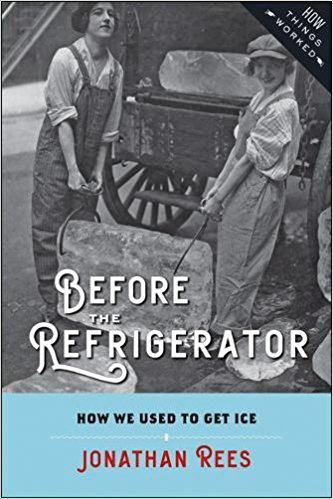
Before the Refrigerator (Jonathan Rees)
Before the refrigerator, there was the icebox. But if you didn’t live in the frozen tundra, getting ice required a complex choreography. Jonathan Rees traces the process of ice harvesting and distribution — a key method of preserving perishable foods — as it evolved in the late 19th and early 20th centuries. As the country moved toward mechanical cooling, widely available ice played a vital role in transforming the American diet. (Read Jonathan Rees’s Food+City story about the cold chain.)

Coffee Lids: Peel, Pinch, Pucker, Puncture (Louise Harpman, Scott Specht)
Some things just seem like they were always there, as if no one could possibly have spent time inventing them. The ubiquitous plastic lid on the humble paper coffee cup is just such an item. But take time to consider its nuanced and varied design features, as architects Louise Harpman and Scott Specht have in this delightful mini-primer on industrial design, and you may enjoy your morning joe even more.
Barges and Bread (Di Murrell)
It’s not every day that a historian has lived the life she’s writing about. But for Di Murrell, barging has been her way of life for more than 30 years. Her book looks way back to 13th century London and the history of the grain trade on the Thames. Grains and bread — not coincidentally, a synonym for money — were staples for all citizens because, as a commodity crop, grain was stable, and large quantities could be transported efficiently over even the shallowest waterways. Take a trip back in time with the historian barge master. (Check out our story about the role of barges in moving food throughout history.)
The Flavor Thesaurus (Niki Segnit)
As we investigated IBM’s Chef Watson, another source of clever food pairings sprang to mind: Niki Segnit’s “The Flavor Thesaurus.” Structured like Roget’s classic, the book lists ingredients — such as beets, blueberries, oysters — and offers classic and novel pairings based on flavor themes. Recipes and other suggested preparations are included in the text. It’s a fantastic resource for moving off the beaten path and developing your own recipes.
Fishing Lessons (Kevin Bailey)
Bailey provides a glimpse of the future of the global fishing industry, documenting the rise and fall of fish populations, the loss of indigenous fisheries and the arrival of fish farms. He makes the case for a future seafood industry that includes “new” artisan cultures while incorporating new ways of selling direct to consumers. He says that his book provides “a fine-grained view of the larger issues in the world’s fisheries — too many fishermen with too few fish, conflicts with other resource users, loss of fishing rights and degraded habitats.” There’s room for hope, according to the author.
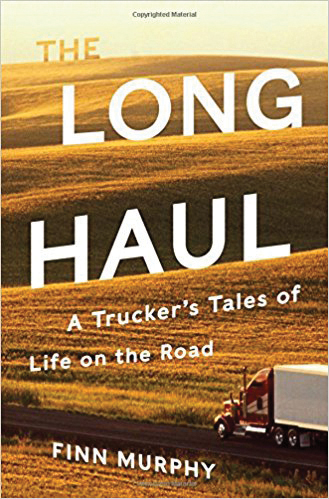
The Long Haul (Finn Murphy)
Finn Murphy dropped out of college in the late 1980s, much to the chagrin of his parents, and became a long-haul trucker. He’s a furniture mover, but his experience driving the nation’s highways — and navigating the small lanes of Lower Manhattan or the mountain passes in Colorado’s Rockies — runs in parallel to the thousands of other haulers who transport our food, our packages and everything else we buy and ship. This catchy memoir offers multiple tableaux, and lots of juicy slang terms, of one life on the road. (Read about another truck driver, Annette Womack, in our Food Mover story from Issue 2.)
Podcasts
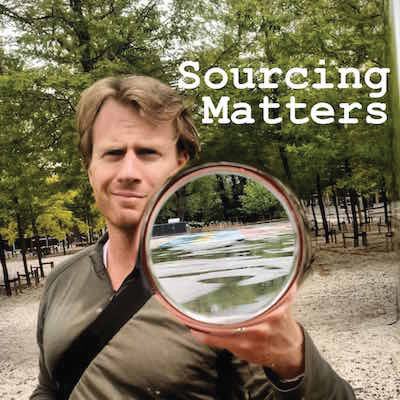
Sourcing Matters
Host Aaron Niederhelman takes listeners with him as he examines problems with and solutions for feeding ourselves into the future. He finds leaders focused on food system reform and reducing environmental impact who tell stories worth pausing for. “Our goal with this show is to celebrate leading voices committed to promoting food values through proper natural resource management,” says the podcast’s website. “It is, after all, the sourcing which matters.”
Films
Rotten (Netflix)
This series of six episodes dives into various parts of the food supply chain, exposing some unsavory realities of the industrial food complex. Mass deaths of honeybees, the plight of peanut farmers in an age of allergies, the economics of dairy farming and the dwindling global fish supply are among the tough topics the filmmakers tackle. It may leave you wanting to move to the country and grow all your own food.
Magazines
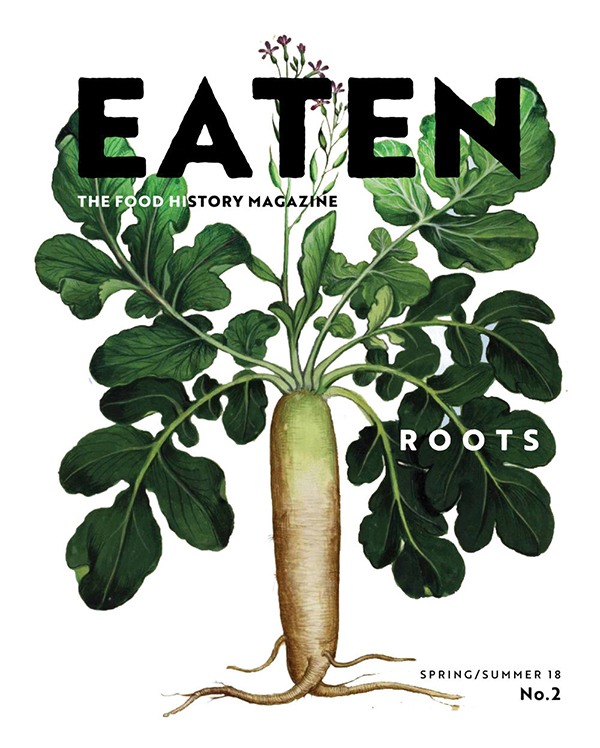
Eaten: The Food History Magazine
Social and economic historian Emelyn Rude launched a new magazine in the fall of 2017 with a focus on the history of food. Filled with luscious eye candy, rediscovered recipes and gastronomic essays, the magazine transports readers through time on a common vehicle — food.
The Bullwhip and the Beer Game
Only at MIT would students play a “Beer Game” to understand a supply chain phenomenon called the Bull Whip Effect. When you’re holding a whip, a small flick of the wrist creates ever-increasing amplitude down the length of the whip. It’s a problem food distributors deal with all the time because even the smallest variation in consumer demand can increase chaos and unpredictability upstream.
Jay Forrester, a professor at MIT from 1956 to 1989, devised the idea in the early 1960s to illustrate how supply chain forecasts can create inefficiencies. In the Beer Game, a single item — a case of beer — travels through a multilevel distribution system in a supply chain. Players operate four stages of the supply chain, and the objective is to order beer and deliver it to customers. Sounds simple, right? Not so fast. The simple act of a player changing the amount of beer ordered sends a ripple throughout the supply chain.
As consumers — the demand side — change their behavior, the supply side adapts inventory and warehousing activities. Players also blame each other for feedback failures that result in a lack of beer. But a build-up of supplies in a warehouse also reflects a communication breakdown between consumers and producers. You lose if you create a large inventory while trying to adjust to the change in orders. Product sitting in a warehouse costs money, so having a stable supply chain and deftly adapting to changes in demand is the winning play.
Research shows that a variation of as little as 5 percent can lead to a variation of 40 percent up the chain. For example, if consumers order fewer bottles of beer, the grocery store will send a message up the supply chain. (“Up” in supply chain lingo means moving from farm to the table; “down” means moving from table to the farm.) That 5 percent decline in beer sales in April could lead to inventory build-ups within the chain, over- ordering of packaging material, and misguided communication between brewers and ingredient producers and processors.
Another way this concept affects the food supply chain is when weather forecasters predict bad weather. A prediction of icy roads in Texas leads to a rush on grocery stores to purchase food while roads are clear. Store shelves empty, and the store’s procurement team returns to its inventory system to squeeze out more stock, while suppliers downstream scramble to find additional ingredients or sources.
As Beer Game players discover, one strategy for variation in consumer demand is to have extra inventory on hand so they can absorb a temporary uptick in demand. But storage costs money, and many food suppliers, intent on creating a “lean” supply chain, want to minimize inventory to save money and avoid food waste. Sometimes, when consumers stop buying a product, stores offer discounts and promotions, but that may cause unpredictable surges in sales that create more problems downstream. You can only hold onto tomatoes for so long.
Forecasts seem to be the culprit here, and the bullwhip effect is more about the problems in forecast-driven supply chain than in supply chain dynamics in general. If your supply chain depends less on forecasts and is more aligned with actual consumer behavior, the bullwhip effect may be dampened. Food companies that link point-of-sales data and supply chain planning can tighten the loop between consumer behavior and other activities throughout the supply chain.
If nothing else, the Bull Whip and the Beer Game reveal the systems effect of the food supply chain. Everything is connected, and one failure has dire consequences. Lack of beer is just one of them.
Food Movers: Rolling Refrigerators
Originally, “reefer” was nautical shorthand, referring either to the midshipmen typically responsible for trimming or reefing the sail, or to the thick, double-breasted coat worn by sailors. Today, it is old-fashioned slang for what my dictionary describes, even more quaintly, as “a marijuana cigarette.”
But since 1911, a reefer has meant only one thing in the food logistics business: a refrigerated container, capable of preserving perishables as they travel over land and sea.
“We can handle 800,000 reefers a week,” port officials brag, sounding for all the world like aging potheads. “Yeah, we’re reefer specialists,” industry insiders will say, without even so much as a wink.
In the 1850s, those reefers would have been boxcars, bringing California lettuce and Chicago-slaughtered pork by train to America’s hungry East Coast, cooled first by ice hand-harvested from frozen lakes and then by mechanical refrigeration units. A few decades later, the term might also have referred to the chilled holds of fast-moving refrigerated ships, painted white to reflect the heat, ferrying New Zealand lamb to London and Honduran bananas to New York. Today, reefers are most likely to be special shipping containers, distinguishable from their ubiquitous peers only by the built-in cooling unit at the rear.
 Nicola Twilley has long been interested in the cold chain. She curated
Nicola Twilley has long been interested in the cold chain. She curated
a 2013 exhibit called “Perishable: An Exploration of the Refrigerated
Landscape of America.”

Aluminum or steel sides protect a temperature range from -20° F to 70° F. Double full-swing doors open on one end.
Perfecting the Technology
Reefers cost six times as much as ordinary shipping containers, even before factoring in the electricity required to run them. They are correspondingly rare: despite the Chilean peaches and Argentinian steaks that fill our supermarket shelves, perishable food accounts for a surprisingly small proportion of global containerized trade. Although shipping companies are reluctant to share exact numbers, maritime industry analysts estimate that of the 25 million shipping containers in the world, only 1.5 million are reefers.
The first reefers with integrated cooling units arrived on the market in 1975, but they were slow to catch on. “Companies were moving these expensive, fragile commodities in lots of 40,000 pounds, and sometimes they would arrive OK, and sometimes they didn’t arrive OK,” explains Barbara Pratt, director of refrigerated services at Maersk, Inc. Pratt spent her 20s living inside a specially equipped reefer, trying to work out why melons from Mexico were rotting en route to Europe, and why General Food’s Dominican cocoa beans kept showing up in New Jersey covered in mildew.
Today, thanks to decades of research, Maersk offers high-tech reefers with powerful air handling systems capable of maintaining supersaturated humidity levels to prevent fruit from losing water weight as well as removing the excess carbon dioxide and ethylene gases that contribute to over-ripening. The company also issues detailed instructions about cooling cargo prior to “stuffing” the reefer, to prevent condensation.
In the past decade, reefer design has advanced to the point that specialized freezer reefers can keep sushi-grade tuna intact at minus 76 degrees F, even when the temperature outside is over 100 degrees. Meanwhile, onions and nuts, which prefer an extremely well-ventilated atmosphere, travel in their own bespoke reefers with double the rate of air circulation. Inside these finely tuned microenvironments, tomatoes remain pristine for a month or more. Maersk promises that even peaches can happily spend a couple of weeks at sea.
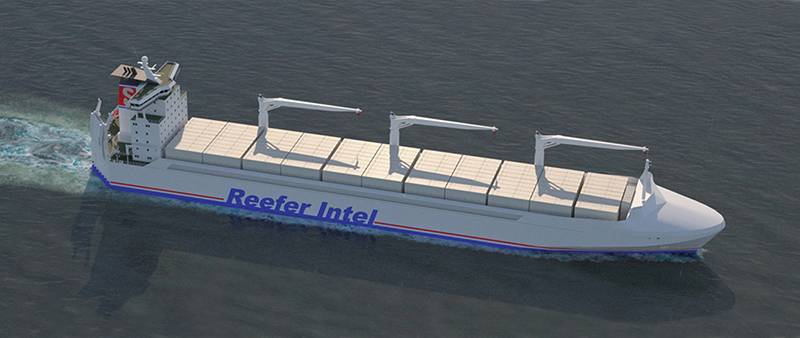
On a Reefer RoRo vessel, inside decks are convertible to reefer holds with 10 separate temperature zones, all gas tight. It was specifically designed for the large banana and pineapple trades across oceans. And it meets the newest environmental requirements for a ”green vessel,” with liquid natural gas as a fuel option for both propulsion and onboard refrigeration. It was collaboratively designed by Reefer Intel AG, Naval Architects Kn. E. Hansen A/S, Denmark, and Stena RoRo AB, Sweden.
Ocean-going Perishables
In response, more and more fresh food producers are choosing reefers instead of old-school refrigerated-hold ships or expensive air cargo. Container Management magazine recently speculated that specialized reefer ships might well go extinct sometime in the next few years, as the perishable sector finally undergoes the containerization revolution that transformed the rest of the logistics universe in the 1950s and ’60s.
But improved technology is only part of the reason why the seaborne perishable trade has grown so dramatically over the past decade — a trend that industry insiders expect to continue in the coming years. In the United States, for example, retailers have noticed increased sales of fresh fruit and vegetables, and a corresponding slump in the center aisles, as shoppers increasingly favor refrigerated produce over its canned or frozen equivalent. Meanwhile, in China, a booming middle class is eating more meat, much of which arrives in reefers from Brazil. Even millennial snacking trends have had an effect on global reefer movements, with Maersk launching a Mexico-to-Yokohama avocado route in 2016.
One fruit, however, remains a constant: the banana. Both Dole and Chiquita call at North America’s biggest banana port, Wilmington, Delaware, twice weekly, year-round, to supply tropical fruit to the 200 million people who live within 24 hours’ drive. Indeed, while any kind of cargo that is sensitive to atmospheric conditions can be found inside a reefer — French wine, high-tech Italian ski equipment, Japanese bonsai — Maersk estimates that every fifth reefer on the high seas is stuffed with bananas. They are cut and transported while green, hard and immature, their development delayed with cold storage until they are just a week away from delivery, when they are warmed up and gassed with plant hormones into artificial ripeness.
It is in the banana’s complicated journey from tropical treat to global commodity — with all its technological progress, economic impact, dietary shifts, agricultural diseases and Central American political instability — that we can see the story of the reefer most clearly, in all its time-and-space-distorting might.

Maersk estimates that every fifth reefer on the high seas is stuffed with bananas.
Food Movers: Can I Get That To Go?
The pressure on food to perform has never been higher. For decades, pizza boxes, Styrofoam clamshells and the paper pails used for Chinese takeout each filled a specific niche in the restaurant industry. But during the delivery gold rush of the past 10 years, restaurants, food packaging manufacturers and customers are demanding more.
The original delivery foods (pizza, Chinese food, deli sandwiches and burgers, which became delivery staples in the 1960s and 1970s) don’t suffer in quality from the half-hour they might spend en route to your house. In contrast, many dishes offered today at casual eateries or fine-dining restaurants weren’t designed to be served in the insulated boxes of past decades.
Lynn Dyer, president of the Food Packaging Institute in Washington D.C., notices small changes: the tabs that make the containers easier to open, the discreet vents that allow steam to escape, the perfectly clear plastic that enables you to see your food before you open it.
Dyer says the innovation we’re seeing for 21st century delivery demands rivals the changes we saw during the fast-food drive-through boom of the 1970s and 1980s. Years ago, her industry group worked with auto companies to determine how many cupholders a car needed and what size they should be. Those measurements were originally used to design drinking cups, but now French fries, chicken nuggets and salads are packaged in cupholder-friendly containers.
PACKAGING FOR VISUAL IMPACT
Modern food packaging containers aim to create a “wow” moment for customers when they unpack their food. That’s why we are seeing Instagram-friendly logos, shapes, colors and clear plastic lids to show off the food, Dyer says.
We eat first with our eyes, but for chefs like Austin’s Rebecca Meeker, food quality is the top consideration. In her fine-dining days, she sent leftovers home in compostable containers. But today, every single food item from her company Lucky Lime is delivered. She needs containers that won’t get soggy and that will hold temperature so that when the food finally arrives, the customer will enjoy their dining experience as much as if they were in a restaurant — the packaging and flavors having fulfilled the website’s promises.
Safety is a concern, too — particularly when your delivery driver may not have a working tie to the restaurant. Manufacturers are working on tamper-evident packaging, such as a takeout bag with a tear strip on the top so a customer can see if someone has opened the bag since it left the restaurant.
COOKING FOR THE ROAD
Few restaurants start out with a plan to meet a growing demand for takeout. But in an increasingly cutthroat industry, many restaurateurs have little choice. Delivery adds expense and opportunity for error, but if a restaurant doesn’t offer its food to go, potential customers will go elsewhere to get it. Dyer says many restaurants consider packaging a small price to pay to make additional sales from people who aren’t sitting in their dining room.
“Foodservice operators want consumers to have the same experience as if they are in the restaurant,” Dyer says. “If they get the food delivered and it looks like a big mess, you don’t get the same experience.”
DELIVERY, NOT DOGGIE BAG
At Lucky Lime, Chef Meeker designed every dish with delivery in mind. For her delivery-only venture, Meeker developed healthy Asian-influenced dishes — with a French flair — that she knew would hold up during a car ride.
She prefers containers with clear tops (so customers can see the food) that seal securely so spills aren’t a problem. These days, one spilled container could mean a customer doesn’t come back, or worse: leaves a negative review about a delivery company that can’t deliver. But finding the perfect packaging can be a challenge.
“You want to highlight the food, but it adds expense,” Meeker says. She says she spends about $1 per order on packaging, often more if the delivery includes a drink in a plastic bottle.
Meeker uses about eight different containers for her limited menu delivered cold once a week. If she wants to add a hot menu, that’ll require a new set of packaging. Grease- and moisture-resistant compostable packaging has been around for about a decade, but some businesses prefer recyclable plastic, which can hold heat longer.
Meeker can’t order the compostable, molded fiber containers with the clear plastic tops that she’d really like to use because her sales are too small to meet the required minimum purchase of $750 every other week. For now, the recyclable containers she’s already using will have to do.
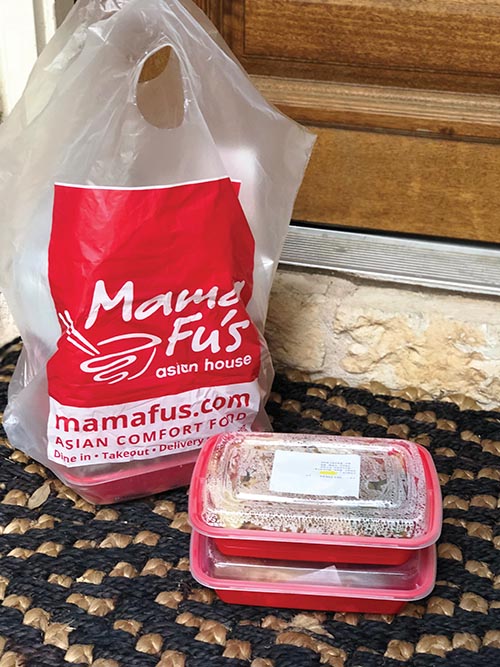
Some Like It Hot
More than 60 percent of Mama Fu’s business is to-go or delivery. Customers of this fast-casual Asian chain expect their food to still be hot when it arrives, and they want it in a reheatable container, says Director of Marketing Josh Churnick. The company, with two dozen locations in Texas, Arkansas and Florida, skipped the traditional paper pail and opted for bright red trays that customers can wash and reuse at home. “I hear from customers on a regular basis who have cabinets full of red containers.”
Food Movers: Bots in the Cold Chain
The second installment in our series about food bots focuses on tech in use in the cold chain. (Check out Part 1.) It’s not hard to see why robots would be ideal workers within these climate-controlled facilities, where temps often hover just above freezing for most perishable goods. Unlike humans, robots don’t get cold — at least, not yet.

Grocery Getter Bots
Some of the newest bot tech involves what are sometimes called swarms and the hive mind — as in dozens of robots working together (the swarm) to complete complex tasks, wirelessly sharing information in real time (the hive mind). Such is the case with Ocado Smart Platform robots, created by Ocado, a British online grocery retailer that’s working on making their delivery-only business as automated as possible.
Ocado’s squat, square, battery-operated bots zip about on an elevated grid over room-temp or refrigerated crates stacked several levels high. Each crate is filled with one specific type of grocery, such as eggs, organic apple juice or cheddar cheese. The robots work as a team to deliver the crates to “personal shoppers” — mainly humans, though another kind of robot could also do the job — that put together customer orders. If the hive mind sees one shopper needs cheddar, but it’s in a crate beneath the eggs and the apple juice, one robot zips by to move the egg crate, a second moves the juice and a third grabs the cheese and takes it to the proper shopper…all in a matter of seconds.
Thanks to the hive mind, every robot knows where every product is at all times; the robots are also tasked with refilling the tower of crates — aka “the storage hive” — as crates empty. Plus, when the bots themselves are low on charge, they ferry themselves off to a charging bay before rejoining their swarm.
Ocado’s bots zip around a grid built over crates and crates of groceries. They pick their orders and deliver them to humans, who do the final packing.
The bots work together, like a hive mind, to uncover buried crates and access items on lower levels. Their real-time communication also indicates which crates need to be refilled.
The system of robots — which can travel 13 feet per second — can fulfill a 50-item order in less than five minutes.
The stacked grid concept came from the shipping industry, where cranes move containers from place to place.
See these bots in action:
Super PaQ Bots
Palletizing robots might not sound revolutionary — palletizing being the unsexy term for the unsexy process of loading and unloading boxes on and off a pallet — unless you’ve worked in a frigid warehouse. Supplies come in on pallets, and products go out on them, and not always neatly: If a mini-mart orders four cases of sliced turkey, a case of chips and two dozen packs of hot dogs from its supplier, somebody or something there has to put all those boxes together.
Palletizing robots are generally “articulated arm” robots, which means they have a stationary base attached to a robotic arm that can bend and swivel. Hand-like tools attached to the end perform specific tasks — in this case, lifting and moving boxes from one place to another.
A company called Swisslog — they design fully automated warehouses and distribution systems — even makes a palletizing robot called RowPaq that can build a perfect pallet of mismatched boxes in minutes. It’s fitted with a set of giant hand-like grippers that can pick up four different sized boxes at the same time and set them down in a perfect row because it already “knows” how tall, wide and long each box is before it arrives.

Whether in a hot warehouse or a cold refrigerated facility, RowPaq can mix and match cartons, shrink-wrapped or foil-wrapped packages onto a single, stable pallet — up to 1,000 units per hour. It’s the ultimate Jenga player.
See RowPaq in action:

The Well-Below-Zero Bots
Think of the freezer as the final frontier for robotic solutions in the cold chain. Super-cold, sub-zero conditions — as in minus 18 degrees Fahrenheit — are just as hard on the moving parts and lubricants inside robots as they are on people.
The easiest solution is to put your robot in a protective suit, which is why when you do see the rare robot in a freezer, it’s usually sheathed in puffy white sleeves that look like a cross between a wind sock and a lab coat.
Most robots used in freezer conditions are large, sturdy palletizing machines with fewer small moving parts, such as bots used to stack table-sized slabs of frozen fish on a pallet. Other companies use spider-like “pick and place” robots to pack things including frozen meat patties and fish sticks into the proper plastic packaging. These bots are usually mounted over a conveyor belt, and the entire process takes place within a sealed, protective, temperature-controlled enclosure.
Investing in Tomorrow’s Food Chain: Walter Robb Moves Forward
Former Whole Foods Market co-CEO Walter Robb acknowledges that during his 26 years with the company the grocery giant helped usher in a new way of thinking about food — from farming to grocery shopping. Today, as an investor and advisor to food system startups, Robb is poised to influence the conversation again.
Walter Robb is the first to admit that it was not pre-ordained that he would become one of the modern era’s gurus of good food. After graduating from Stanford, he planned to become a lawyer, but he only lasted a week at law school. Next he tried being a teacher, a soccer coach and a farmer. None was the right fit.
In 1978, he borrowed $10,000 to open a natural-food store in an old garage in Northern California. He later sold his second store in 1991 to Whole Foods Market. By 2010, Robb was co-CEO with John Mackey, the visionary founder of Whole Foods. Sam Kass, the former White House chef and policy director for Michelle Obama’s “Let’s Move” program, says Robb has done as much to change the food system as anyone in America.
With Amazon’s 2017 acquisition of Whole Foods, Robb, 64, is starting a new chapter. Through his firm, Stonewall Robb, he’s an investor and an advisor to innovative food startups. It’s a natural next step for him — after all, he got a $10 million payout when he left Whole Foods. But his acolytes will not find Robb a typical investor. He is thoughtful, rather than brash and obsessed with disruption. And unlike many technology investors, he is not searching for silver bullets. After 40 years in food, he understands the complexity of the food chain and knows that culture and conversation will be as powerful as technology in creating a more just food system. Robb talked to Food+City contributor Jane Black about what he looks for in a startup, the importance of creating a company culture, his hopes for the Amazon-Whole Foods deal and the future of grocery stores. Excerpts, condensed and edited for clarity, follow:
Jane Black: If you Google Walter Robb, the one thing you’re definitely going to learn is that your favorite food is lentils. Lentils?! Have you always been a healthy eater?
Walter Robb: No, I wouldn’t say. I grew up in a typical upper middle-class family. We had piggies in a blanket and we had Bird’s Eye frozen vegetables — stuff like that. It wasn’t really until I got to college that I opened my eyes to some of the healthier foods and started making my own bread and that kind of thing.
Black: College isn’t usually where kids start to eat healthy.
Robb: Well, in my sophomore year I started really reading [about food]. I read Wendell Berry’s book, “Culture and Agriculture, the Unsettling of America.” And that was pretty exciting for me. And I read Frances May Lappe’s “Diet for a Small Planet.” Frances was speaking in San Francisco at Food First on Mission Street, so I went to hear a couple of her lectures.
Then I also met Alan Chadwick (a pioneer of organic gardening in California). And I spent time apprenticing with him. Between all those things, my interests in healthy eating, the soil and healthy living overall sharpened up. It kind of started me down the path.
Culture is the sum total of the humanity of the company. It’s where the culture and values come alive with a presence. It’s: How does it feel around here? How do the customers feel? How do the team members feel? That’s what culture really is. It’s an alive thing.
Black: Jumping ahead, you joined Whole Foods in 1991 and rose through the ranks. In 2004, you were named co-president. In 2010, you were promoted to co-CEO. What do you think was your biggest contribution?
Robb: It’s always tricky to say stuff about yourself. But look, I think I was part of the core team that really helped Whole Foods change the conversation about food in America. So, I’m very proud of that. I think I’m a good retailer — at the craft of retailing. I love it. My number-one quote over the years was this: “We’re not so much retailers with a mission, as missionaries with retail.”
I think I’ve definitely helped to shape the retail and culture of Whole Foods, which, as you know, is one of innovation and experience.
Black: Which leads perfectly to my next question. As the food world shifts to be much more technology focused — Amazon’s purchase of Whole Foods is just one indication of the trend — how does the culture you created survive?
Robb: Well, I think you start by realizing that culture is a living, breathing thing. Culture is the sum total of the humanity of the company. It’s where the culture and values come alive with a presence. It’s: How does it feel around here? How do the customers feel? How do the team members feel? That’s what culture really is. It’s an alive thing. It continues to evolve in a way that’s malleable, and, at the same time, that it’s anchored in the values.
So now the great question is: Will two wonderful companies [with their own strong cultures] have the courage, the wisdom and the humility to learn from one another, to learn from one another’s cultures?
At Whole Foods, we acquired 19 companies under my tenure as co-CEO. It takes about two years for two companies to really come together. So the answer to your question is, it’ll happen over time. But it will require efforts on both sides to really be thoughtful about how it’s happening.
Black: What are the big issues you see coming up in food?
Robb: There’s a new set of issues up on the table. Like food waste, like imperfect produce, like farm worker health, like full transparency on product. This new generation is going to look for a more, if you will, whole foods system. In other words, one that is more fully transparent, more responsible, [with] more options.
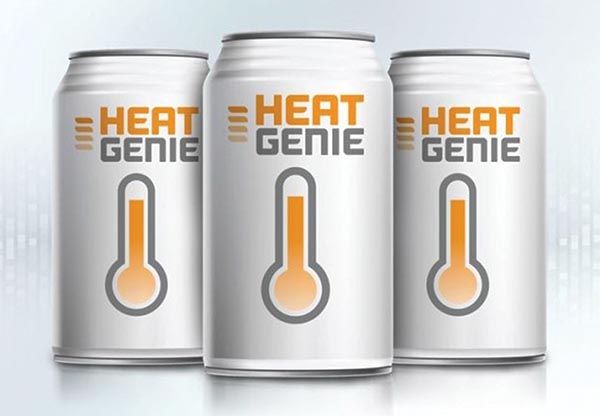
Black: What are you working on to address these new issues?
Robb: I’ve picked some companies to invest in and serve as a director. Food Maven [a Colorado startup that sells excess food acquired from producers and distributors to restaurants and institutions at a discount] came through Grant Lundberg, the CEO of Lundberg Family Farms. He reached out to me and asked me to talk to his cousin Patrick Bultema, who’s the CEO in Colorado Springs. And I guess it was just meant to be.
I’ve been troubled as a grocer for a long time about the food that gets thrown away. About 40 percent of food grown is wasted. It’s produced, there’s too much supply and about one third of what goes to landfills is food. It’s time for that to be met with some sort of thoughtful solution. I realized, “Wow, this is something we haven’t really worked on.” Here’s an area [in which] we can make a real change. I was drawn to that. I like working on things that matter. I like working on things that have a purpose, and [working with Food Maven has been] a great opportunity to work with people I enjoyed and to try to work on something that I know needs to be done. So that was an easy one.
Heat Genie came through Danielle Pruitt, my other half. She knew Mark Turner, the CEO. It is a technology that allows a can to self-heat in about a minute and a half. Think about it. Not only do you create new products for customers [such as self-heating coffee, soup etc.], but … think about disaster situations where hot food is needed.
I liked it for that reason. I thought the company had a missionary aspect. It’s a leading-edge technology for something that hasn’t been done before, but with applications where it could make a real difference in people’s lives. Black: So it’s the fact that all of these companies has a mission that drew you to them? Robb: The criteria are a great young entrepreneur or CEO, a sense of mission or purpose in the company’s work and a commitment to building a culture that’s good for the people at the company. They need to understand and appreciate those things.
I think I look for something that’s a forward movement into the future, right? So we’re creating something that doesn’t yet exist and that is going to help shape the world. Not just something that’s been around forever that’s just kind of trodding along, but something that’s going to open new opportunities and new growth.
Black: What parts of the supply chain do you feel really need the most attention in food?
Robb: I think number one is transparency. Number two, I’d say, is quality. I’d say quality and standards so that the transparency leads us somewhere, that it’s not just an obfuscation exercise.
[Adaptation] to the digital world is also important so that it’s easy for customers to access that information and to inform their choices, and this will also help companies to evolve faster. The last big thing is the food waste.
Black: OK. The questions everyone wants answered: What is going to happen with the Amazon purchase of Whole Foods? What can Amazon do, given their position, to take good food to the next level?
Robb: Well, I’d love to see them continue to reach the full potential of Whole Foods. Whole Foods was built to endure, to be around for hundreds of years. Built to make a permanent shift in the food landscape. I’d love to see Amazon continue to honor that and accelerate it into the future. That may be self-serving because I was there so many years and it’s so much a part of me, but I’d love to see that happen.
The second thing would be to propel a more nuanced conversation about food. This often is a conversation about “Is it cheap enough?” But the reason food is not “cheap enough” is there are so many tradeoffs in the production of the food that folks don’t always know what they’re getting.
So how do we more, I don’t know, more articulately, more intelligently, more holistically approach this question about cost and quality? In the end, there always is a set of choices for people. How do we make organic food, more natural food, less expensive, but not so cheap that it loses the reason for being? How do we make people more aware of the costs that in cheap food are really not being reflected, and the costs that are happening as a result of having it? So how do we raise the quality of the conversation about that?
Telegraphing the High Price of Cheap Food
Walter Robb argues that consumers need help to make more responsible choices about what they eat. But how?
One idea: True Cost Accounting, an emerging method that tries to pin precise dollar figures on the social, environmental and public-health consequences of food production. It’s a way to price a steak to include the costs of raising and slaughtering the animal as well as, say, the cleanup costs of associated water pollution.
How to account for these “externalities” is tricky. In 2016, some 600 economists, farmers, policy makers and advocates gathered in San Francisco to discuss new ways to categorize, quantify and monetize the food system’s externalities – and, equally important, how to message it to consumers. “We need to provide the context behind stories without overwhelming our audiences with complexity,” said the Consumers Union’s Urvashi Rangan. “You give the bad news, but you also have to give people a message that empowers them and puts them in the driver’s seat.”
Black: What about all the drones and robots we hear about? Will there even be grocery stores?
Robb: Absolutely, because the need and desire for human connection is ever-present. What’s exciting about robotics is that they are already being used extensively in distribution and in physical stores as a partner to team members, doing things like checking store conditions and out-of-stocks. In Wake Fern, a grocery chain out of the southeast, you’ll see robots going up and down the aisles doing their work, increasing the productivity of the human workers. It’s already part of the grocery store. But there’s a tendency to overstate the high-tech narrative right now — that everything will be replaced.
Black: What will grocery stores of the future look like?
Robb: The world is tilting toward fresh and artisan and the true craft of food production. Soon, we’ll see [stores] in different forms and sizes. I think the big stores are in trouble; people don’t want to shop at them anymore. The whole way people get food is changing. We have so many options for food, whether it’s a meal kit, pickup or eating out. You don’t have to go to the store all the time. The grocery store is just one option. There will always be a market, but even more, it has to serve as the town square.
More broadly, the grocery store of the future will have no boundaries to it. Even though it’s a physical store, it will reach all the way into your home and even walk around with you. Imagine a Whole Foods refrigerator. You set it up on an app, pull it up on your phone, order what you want and have it there when you get home. There are also virtual reality technologies, like one from a company called Spacee, that allow you to project images of the store onto, say, a wall and enable delivery from that image.
Black: So much of this is about convenience and more personalized food. What needs to be done to create a better food system?
Robb: We need a true north. I believe in the quality of food and the transparency and the access of good-quality food, and an inclusive food system for workers and eaters. I don’t know if everyone would agree with that.
Customers are pushing hard for transparency and more information, more choices. But there are different sets of customers who can afford different things, and they are supported by commodity suppliers. These two [food systems are] running in parallel. They have different value systems.
History suggests from our experience at Whole Foods that change is possible. There are setbacks, of course. The current White House shelved a rule around animal welfare for organic that was in the works for three years. It’s two steps forward, one step back.
But directionally we aren’t going to go back. It’s a combination of things, over time, that will lead to change. But if there’s one thing we need to keep working on, it is these gaps of access and availability. We produce enough food, but it’s not finding its way to the people who need it. I would hope that the north star is an ever-increasing availability and accessibility of food that nurtures and sustains our bodies and our communities and our country. That’s what I’m going to keep working on.
 Watch Walter Robb discuss business culture, a leader’s vision and how to find your passion in a Duke University video.
Watch Walter Robb discuss business culture, a leader’s vision and how to find your passion in a Duke University video.Transcending Seasons: Following the Global Cold Chain
Prior to the late 19th century, families around the country ate only what they could grow or what nearby farmers had to offer. For people who lived where winters were frigid, that meant a limited winter diet consisting of food preserved in a root cellar. But that all changed when refrigerated rail cars enabled cross-country shipping of meats and produce from faraway farms. Access to a wider variety of foods year round changed the American diet permanently.
In 1927, the sociologists Robert and Helen Lynd published the first of their two classic studies of modernization in a midwestern community they called “Middletown.” Among the topics considered by the citizens of what was actually Muncie, Indiana, were recent changes to their diet. “In 1890 we had meat three times a day,” explained a Muncie grocery store owner. “Breakfast, pork chops or steak with fried potatoes, buckwheat cakes, and hot bread; lunch, a hot roast and potatoes; supper, same roast cold.” This would have been impossible even a decade earlier because the mass production of beef had only just become technologically viable.
What made the mass production of beef possible? Refrigerated rail cars, thanks to Gustavus Swift’s efforts in the 1880s. By 1890, steers and pigs slaughtered in Chicago stockyards arrived in cities and towns across the country, chilled by ice for the entire route.
“Steaks, roasts, macaroni, Irish potatoes, sweet potatoes, turnips, coleslaw, fried apples and stewed tomatoes.” This is how a Muncie housewife described her family’s “winter diet” to the Lynds before refrigeration arrived there during the late 1920s. No strawberries. No eggs. The winter diet was nothing but bland winter fare. Before fruits and vegetables were protected by similarly refrigerated rail cars, producers faced substantial spoilage and could never ship in winter because delays caused by freezing weather could doom whole shipments. (While some spoilage happened during warm months, too, ventilated rail cars allowed cooling breezes, mitigating damage.)
Consumers in Muncie faced what was known as “spring sickness” because they lacked access to the vitamins they needed for months on end every year. By contrast, with the advent of refrigeration, perishable produce could arrive from California all year or be kept in cold storage for winter use when those fruits or vegetables had been grown nearby.
The year-round availability of meats and green vegetables that we now take for granted requires an infrastructure. The turn of the 20th century brought the inception of this infrastructure, which changed the American diet forever.
“Everything from eggs to apples (apart from canned, pickled or dried versions) would be seasonally unavailable without cold storage.”
As refrigerated transportation became the norm, a new type of food chain was born — the cold chain. While a food chain requires no special technologies to store and transport foods of all kinds, cold chains require some form of refrigeration every step of the way because spoilage is ongoing. If one link in the chain fails, the product becomes inedible. What was true about cold chains during the early 20th century remains true today.

 COLD CHAIN
COLD CHAIN
A “cold chain” is a modern refrigerating engineering term that refers to the path of perishable foods from the point of production to the point of consumption. Unlike regular food chains, cold chains require refrigeration along the entire path to prevent spoilage.
COLD CHAINS AND THE AMERICAN DIET
Technology has always had a tremendous effect on what people eat. Some technologies have made it possible to overcome distance by making cold chains longer, while others have made it economical to get better-tasting perishables by making cold chains shorter. As cold chains (and the transportation systems associated with them) have improved, the perishable food we eat has become fresher as delivery has become faster. Cold chains even let consumers defy seasons, allowing us access to fruits and vegetables that the people of Muncie seldom saw at any time of year.
With so many cold chains for so many different foods now available, it seems much more accurate to describe our perishable-food provisioning system as an intricate cold web. The refrigerated strands of that web crisscross not just America but the whole world. Their size, their speed and, most importantly, their efficiency have an enormous impact on what we eat because they help determine how much every kind of perishable food costs, or whether that food is available at all.
EATING FARAWAY FOOD: MAKING THE COLD CHAIN LONGER
Meat was just about the most expensive food you could buy during the late 19th century. As such, it was the perfect guinea pig for testing cold chain technology — success would bring the greatest financial benefit to the pioneers. Meat producers tapped into a huge market of consumers who wanted to add more meat to their diets as both a status symbol and because of the superior nourishment meat provided, compared to their earlier diets. When technology brought down the price of meat, consumers responded quickly.
After the cold chain for meat came similar protections for fruits and vegetables, starting in the 1890s. Fast refrigerator cars full of produce grown in California could get melons or lettuce to the East Coast for consumption in about a week. Iceberg lettuce was bred specifically during this period because it could hold up to refrigeration better than the alternatives. Refrigerated shipping and cold storage made these products common all year round and ended “spring sickness” forever.
In his 2006 book “The Walmart Effect,” journalist Charles Fishman describes how lengthening the cold chain for salmon — all the way to South America — brought down the price so much that Americans can now eat that once-uncommon fish on a regular basis. While Atlantic Salmon are not native to Chile, they are now being farmed there and flown to the United States in huge quantities. As a result, writes Fishman, “[S]almon farming has transformed the economy of southern Chile, ushering in an industrial revolution that has turned thousands of Chileans from subsistence farmers and fishermen into hourly paid salmon processing-plant workers.”
Fishman stresses the importance of deboning machinery to making shipping cheap salmon economical — but that’s just because the low costs of refrigerating fish and transporting the product by air are so entrenched that they can be easily taken for granted. Thanks to advances in the cold chain that have made it possible to market fish of all kinds worldwide, Chilean salmon arrives in the continental United States faster than salmon from Alaska. Walmart has paid for preserving and marketing much of that Chilean salmon once it arrives.
Long cold chains for fish do not have to involve airplanes. Refrigerated packing crates and gigantic barges have made shipping costs so cheap that fish caught off Norway can be efficiently shipped to China for processing (taking advantage of low labor costs) and then shipped again across the Pacific to America for consumption. Cold chain shipping — by air or sea — has played a particularly important role in fish farming of all kinds, making it possible to market large amounts of fish produced in what would otherwise be isolated locations. In fact, whether there will still be enough fish in the seas to satisfy this new demand has become an open question.
HARVESTING, STORING AND PROCESSING: MAKING THE COLD CHAIN SHORTER
Orange juice is a good example of how cold chains can be physically shortened to preserve a fresher taste. “Fresh-frozen” orange juice from concentrate dates from 1952. Not-from-concentrate orange juice dates from the 1990s. Ironically, this apparently “fresh” product can be stored for up to a year before the necessary processing occurs. Once taken out of storage and pumped with flavor enhancements, fresh juice has a shorter shelf life than juice concentrate — one to two weeks. Since it bears a much closer resemblance to fresh-squeezed it can fetch a higher price than the frozen juice concentrate sold in cans.
Perhaps not surprisingly, the local food movement has revived somewhat the idea of shorter cold chains. But it may be a moot argument. Consider the pros and cons:
One reason people were supposed to buy more local food is that the energy expended on refrigeration contributes significantly to the warming of the planet. Yet, as Pierre Desrochers and Hiroko Shimzo have explained, one study found that “transporting a large volume of broccoli in a refrigerated container that had been moved around on a boat, a railroad car, and a truck to a distribution point required a lot less energy than a few thousand consumers bringing the same volume of broccoli back to their homes.”
Food miles have lately fallen out of favor as a unit of analysis because they oversimplify the environmental costs of eating perishable foods. Besides the efficiency of transport, another problem with food miles is that the energy expended to keep perishable food fresh also keeps that food from ending up in a landfill where it would give off the deadly greenhouse gas methane as it rots — a scenario in which the costs of refrigeration are less than the costs of spoilage. Similarly, the refrigeration costs associated with eating local beef may be lower, but what about the greenhouse gasses expended to raise the cow in the first place?
SPECIALIZING AND PERSONALIZING: MAKING THE COLD CHAIN FASTER
Nonetheless, some refrigerated indulgences should give any environmentally minded person pause. For example, the highly endangered bluefin tuna is an Atlantic and Mediterranean fish, yet it is regularly shipped as fast as possible to the Tsukiji fish market in Japan, where one specimen alone recently fetched $632,000. In this case, refrigeration has enabled the creation of a market that provides the perverse incentive to hunt a species to near extinction. Similarly, the Costa Di Mare restaurant inside the Wynn Hotel in Las Vegas daily flies in fish caught and frozen in Italy’s coastal waters.
One way to move faster is to travel long distances at higher speeds; another is to eliminate steps along the way. The freezer packs inside ready-to-eat meal kits allow people to enjoy their “Beef Medallions & Brown Butter Caper Sauce” and “Thai Curry Chicken with Carrots & Bok Choy” in pre-measured portions without ever having to go to a grocery store. Blue Apron, the most prominent of these ready-to-eat meal companies, sends out millions of six-pound ice packs filled with sodium polyacrylate, a powder that when mixed with water melts much more slowly than water alone. This created both a personalized cold chain and an environmental disaster, due to excess packaging.
The historian Jenny Leigh Smith has described the practices of the Soviet ice cream industry in similar terms. Unable to afford the creation of an elaborate cold chain based on mechanical refrigeration, Soviet vendors during the 1950s and 1960s simply put dry ice in their insulated pushcarts and used that to keep their product cold as they sold it on the streets. It’s a good reminder that effective refrigeration technologies are not always expensive — they just have to meet the particular needs of the situation at any point in the cold chain.
Another way to make the cold chain move faster is by using refrigeration to speed natural processes that need to occur before perishable products are sold. When the food and science writer Nicola Twilley visited one of New York City’s four main banana distributors, he told her that the energy coming off just a single box of ripening bananas “could heat a small apartment.” The firm’s ripening room was designed to control output by blowing cold air through the boxes. The ripening of some fruit is accelerated, while in other cases it gets slowed down. It all depends upon matching supply with market demand. [Read our story, “How the Bodega Gets the Banana,” for more about the long journey of this ubiquitous tropical fruit.]
TRANSCENDING SEASONALITY: MAKING THE COLD CHAIN SLOWER
When perishables are harvested in season but need to be distributed out of season, cold storage is required. The idea of cold storage dates to around the turn of the 20th century, when mechanical refrigeration was just becoming reliable enough for producers to entrust their livelihoods to these third parties along the cold chain. While new fast train lines could bring fresh-picked strawberries from Florida or melons from California to areas with harsher climates, the easiest way to defy seasonality was to store local produce in newly built refrigerated warehouses for perishable foods of all kinds.
The effects of these changes were noticeable immediately. “Twenty years ago,” explained a reporter for the New York Sun in 1894, “[p]ears which sell today two for five cents were 40 cents apiece, and black Hamburg grapes…were only to be had from hothouse growers and were worth $1 a pound. The luscious great cherries which were so plentiful a few weeks ago were unknown in our markets, prunes were known only as a dried fruit, and apricots and nectarines were rare enough to be but a tradition among the greater part of the people.” At that time, rare meant expensive, but not impossible to purchase for special occasions — for instance, buying oranges only at Christmastime.
Storage itself can be expensive even now because of the energy it requires, but it remains an essential component to using refrigeration to transcend seasonality. Everything from eggs to apples (apart from canned, pickled or dried versions) would be seasonally unavailable without cold storage.
The final link in the cold chain, the electric household refrigerator, is a kind of personal cold storage. When the first reliable, affordable, electric household refrigerator went on the market in 1927, it became an instant sensation. It meant that people no longer had to buy food quite so often as before. This was cold storage for your home. By 1960, there was a modern fridge in nearly every home in the country.
Refrigerators allow consumers to time their purchases far better than they would otherwise. In countries like France, where refrigerators are far smaller than they are in the United States, many consumers gladly visit local markets every day so that they can be assured the best flavor possible from their perishable products. By contrast, in the United States, grocery shopping only once a week is a common way to avoid the inconvenience of driving to the Walmart Supercenter and waiting in the checkout line more often. Stores like Costco, which sell huge packages of frozen goods, thrive on this American tendency to favor convenience over taste.
INCREASING FRESH ACCESS: MAKING THE COLD CHAIN MORE EFFICIENT
Future technological developments in our web of cold chains will likely occur in the parts that we don’t see. Bring the cost of storage and transport down, and producers can enter new markets or lower costs for consumers so that more people can afford to eat fresh. These changes will require increasing the scale of what travels through cold chains. Perishable products that are still too expensive for most consumers to buy regularly might become more accessible.
Dragon fruit (pitaya), for example, is well-known enough to be a flavor of VitaminWater, but just try buying an actual dragon fruit in the produce section at even a store like Whole Foods. Maybe it can be done in some places at certain times of the year, but it is far from easy. Grow the supply and cultivate the demand, and a cold chain could evolve to service it.
Apart from refrigeration itself, many important developments in cold chain history have involved improvements in transportation — airplanes or refrigerated containers for transoceanic shipping. With all the links in the chain fully refrigerated now, what might future technological improvements look like? Will your meal kits soon arrive via drone? That depends on whether it can be done efficiently and cost effectively. Improvements in the energy efficiency of refrigeration will also help increase the availability of foods to people at all economic levels if those savings are shared with consumers in a meaningful way.
Increased access to perishable foods of all kinds has been a sign of growth in our food provisioning system ever since the advent of ice refrigeration in the early 19th century. The web of cold chains this process has created stretches across the planet. Even countries that do not benefit from being the endpoint of a cold chain probably produce perishable products that could not be sold elsewhere without refrigeration technologies. While it is unlikely that the changes in diet promoted by future changes in technology can surprise middle-class Americans anymore, anything that can be done to bring the same food choices and relatively low prices to the rest of the world will benefit all of humanity.
Quick History of Consumer Ice
In the early 19th century, ice took long journeys across the globe. Cut from lakes around Boston and packed onto ships, it might be sold as far away as India. Today, anyone can get all the ice they need on demand at local convenience stores. The Ice Factory, developed in 1992, was the first of a new breed of automatic ice machines. It manufactures ice on demand and even bags it for you automatically. This eliminates both delivery and storage costs. It allows people to stock up on ice when they need it for parties and barbecues, yet still use their home freezers for their day-to-day needs the rest of the year. Prior to the Ice Factory, one ice manufacturing plant could pack enough bags to satisfy demand within a 100-mile radius.
Modern Times Cold Calling?
Expensive “smart” refrigerators, like the Internet of Things in general, are really just a way to convince consumers that they need to replace appliances that work perfectly well as-is with new ones hooked up to the World Wide Web so that they can impress their friends with how modern their home is. At this moment in time, the benefits of owning a networked refrigerator do not justify its cost. If you can send email from your computer or your phone, you have no need to send it from your fridge. Refrigerators have certainly gotten bigger since 1960. However, they don’t keep food any fresher.
History of the Cold Chain
From ice harvesting in New England to home refrigerators that can monitor their contents and send a text when you’re low on eggs, milestones along the cold chain have transformed how and what Americans eat. There was a time when pineapples and bananas were rare sites outside of tropical climates. And the idea of eating fish caught in Japanese waters yesterday while sitting in a Texas sushi restaurant today was unimaginable. No more. Check out some of the more memorable moments of the last two centuries of the refrigeration revolution.
1806
Frederick Tudor sends the first commercial shipment of ice by sea in world history from Boston to Martinique. Most of what survives the trip melts because the customers don’t know what to do with the product. Below, Tudor’s workers divide a pond into a chessboard pattern and cut ice into two-foot square blocks.
1851 
Florida doctor John Gorrie patents a commercial ice machine he developed while trying to invent what we now know as air-conditioning. It does not prove commercially viable.
1878
Meat-packing magnate Gustavas Swift hired engineer Andrew Chase to design an ice-cooled rail car that would enable the shipment of processed carcasses across long distances. The result was a well-insulated yet ventilated car, in which the meat was packed tightly at the bottom of the car, and ice was kept at the top, allowing the chilled air to flow naturally downward.
1880 & 1890
The first ice famine grips the Hudson Valley. The New York market turns to Maine for its ice, leading to vast growth in the infrastructure for providing ice there and the growth of ice for domestic consumption in the United States in general. A second ice famine grips the Hudson Valley. In response, ice equipment makers work hard to improve the efficiency of commercial ice machines and largely succeed by 1900.
1916
The total number of electric household refrigerators sold in the United States tops 1,000 for the first time.
1924 
Thomas B. Slate applies for the US patent on dry ice. A year later, the DryIce Corporation of America trademarked solid carbon dioxide, giving it a moniker that has lasted nearly 100 years. The company began marketing dry ice for deep refrigeration.
1925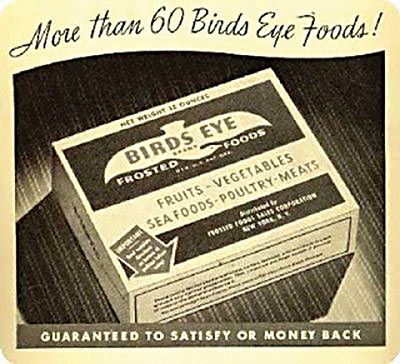
Clarence Birdseye patents a better form of flash freezing, which will eventually make mass-marketed frozen foods possible.
1927
General Electric is responsible for bringing the cold chain into homes. In 1927, the “Monitor-Top” fridge cost around $520 — equivalent to $7,000 today — and helped lucky families keep leftovers fresh. Refrigerator design saw an update to the more familiar integrated box style in the 1940s.
![]() Check out this amazing collection of antique iceboxes.
Check out this amazing collection of antique iceboxes.
1940s 
Before the refrigerated rail car became a key part of the cold chain, leafy greens like lettuce were too delicate to survive a long journey packed in ice. The solution? Iceberg (or crisphead) lettuce, introduced for commercial production in the late 1940s to be hearty enough to reach salad bowls hundreds of miles away.
1950s–70s
Railroads gradually stop using ice for refrigerated shipping as mechanical refrigeration technology becomes cheap and small enough to install in individual railroad cars.
1958
Frigidaire introduces the first frost-proof refrigerator, eliminating the need for customers to defrost their appliances at all. “Frigi-Foam” insulation allowed for the first Frost-Proof refrigerator-freezer.
1982 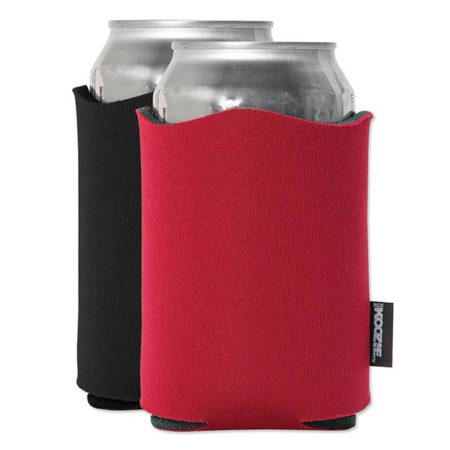
The Radio Cap Corporation introduced the Koozie™, a Styrofoam sleeve designed to insulate a chilled beverage from warming up due to conduction or heat radiation. Many a cold beverage will be kept cold.
1992 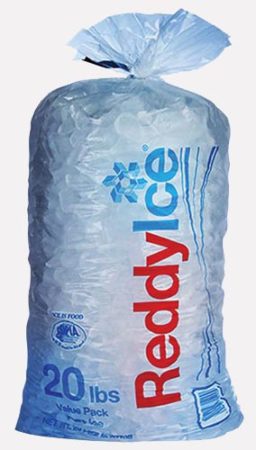
Jim Stuart invents the ice factory, the first ice machine that produces and bags ice cubes on demand. This eliminated the need for centralized ice production in regular, larger ice factories.
1998
The introduction of the Internet-enabled or “smart” refrigerator. Not enough people have decided that refrigerators that tell you what should be on your shopping list are worth the added expense and potential problems of buying yet another Internet-enabled device.
2006
High-end cooler brand YETI was founded in Austin by brothers Roy and Ryan Seiders. Their new design for a heavy-duty cooler that could stand up to abuse during fishing trips and retain ice for hours started as gear for serious outdoors people and has evolved into a multi-product cult brand. And it keeps your beer cold for a long time.
2012
Blue Apron begins shipping meal kits, including meats and seafood items sandwiched between ice packs to ensure freshness past delivery.
2014
Internet-enabled refrigerators, which first appeared in 1998, now have cameras and the ability to text you with messages about what might be running low inside. In the same year, both Wired and Forbes magazines published stories lauding high-tech fridges and wondering if 2014 was the year they’d finally take hold.
Make Way for Public Markets?
While farmers’ markets are become more common attractions, public markets like Pike Place or the Pittsburgh Public Market are still fairly hard to come by in urban areas.
At a gathering I attended a few years ago in downtown Austin, the breakfast fare said it all. Organic yogurt, locally produced honey, and fresh breakfast tacos broke from the usual offerings of croissants and Danish pastries. This crowd was invested in their food — emotionally and economically — as farmers, chefs, city planners, food activists, non-profits and individuals gathered to learn about the possibility of bringing a public food market to Austin. Like many urban areas across the country, Austin has farmers markets but no public market — yet. Why is that?
The answer requires a brief tour of public market history and our relationship with food. The relationship has always been contentious, as cities all over the world have historically been defined by their food markets and yet have moved their markets farther and farther away. Struggles over land values, sanitation and urban design have left most public food markets out in the hinterlands. And now city dwellers want them back.
“Struggles over land values, sanitation and urban design have left most public food markets out in the hinterlands. And now city dwellers want them back.”
Why? You’ve probably noticed a farmers market or two in your city, selling food from local producers and feeding a growing desire to meet those who produce our food, shake their rough hands and hear their stories.
Since the 1970s, environmentalists and the organic movement have been advocating for food to rejoin our urban landscapes, both to keep local businesses in business and to build stronger connections between producers and consumers. Some argue that the presence of farmers markets in a city adds to the social fabric, sense of community and aesthetics of the urban experience.
Why? You’ve probably noticed a farmers market or two in your city, selling food from local producers and feeding a growing desire to meet those who produce our food, shake their rough hands and hear their stories.
Since the 1970s, environmentalists and the organic movement have been advocating for food to rejoin our urban landscapes, both to keep local businesses in business and to build stronger connections between producers and consumers. Some argue that the presence of farmers markets in a city adds to the social fabric, sense of community and aesthetics of the urban experience.
Great, you say. In a digital, industrialized world, we all need more humanity.
But today’s desire to bring food back to our urban landscape runs counter to the ejection of large public food markets that began in earnest during the mid-19th century when cities began to modernize. City dwellers wanted to leave behind their rough, tough rural lives. What’s more, food production was viewed as a threat to sanitation, a serious problem in the 19th century, when diseases like cholera rolled through urban landscapes. By the 20th century many cities saw their public markets as occupiers of space that could be developed to create more revenue, provide more sanitation and improve vehicle and pedestrian traffic.
A few of these public markets refused to budge, but now they seem to be on their way out, too. Smithfield meat market in London and Tsukiji fish market in Tokyo are both big historic markets that are in the crosshairs of developers and urban improvement programs. Both define their neighborhoods, have historic roots and contribute to the social and economic fabric of their host cities.
London’s Smithfield meat market opened in 1868, and Tsukiji, began its evolution as the world’s largest fish market in 1935. In Smithfield’s case, the City of London owns the land occupied by the market, and the market has come under attack several times during the past few decades because of increasing congestion around the market and the anomaly of the occupation of prime, centrally located space as a place for a wholesale meat market. The history of London’s meat market has been contentious for most of its 800-year history, so this battle for its place in London’s landscape is familiar.

Smithfield Market, in London…for now.
Some of Smithfield’s buildings have been deteriorating while the neighborhood has been modernizing and becoming a trendy area for new restaurants and businesses. Plans for a real estate company to redevelop the market were accepted and then scrapped, and now it looks as though the western buildings are to be renovated and become home to the Museum of London.
In Tokyo, the fish market, Tsukiji, has become a tourist attraction, a trend fed by the announcement of its removal nearly two decades ago. The announcement met opposition at first but then gradually gained support, even of the union associated with the market in spite of those who objected the loss of the neighborhood’s culture and history. Costs for the removal have risen but the decision to build a new market outside of the center of Tokyo will most likely stick. The arrival of the Olympic games and the need for the world’s largest fish market to conform to global sanitation requirements are important to Japan’s overall economic and diplomatic status.
In Austin, though, it looks like we’re ready to bring our food back to the city. The St. Elmo Public Market is slated to open in South Austin within a matter of months. This new experiment sits within changing tides of urban development as food markets come and go and attitudes change about how we view food, the countryside, and our public spaces. Are the battles over Smithfield and Tsukiji relevant to cities such as Austin? Or is Austin exceptional in some way that could allow it to break new ground for those who want a closer relationship with their food?
The Pan in Choripàn
Most food in Argentina comes from somewhere else, at least in its earliest forms. Like wheat.
Sure, there’s asado, a ubiquitous dish on Argentinian menus that is mostly a mound of barbequed meat. But in Argentina, the mishmash of culinary traditions reflects a long history of immigrants who left very little of anything that can be called truly Argentinian.
The view that the Argentinian national cuisine is actually a mix of British, Italian and French food can be galling to some cultural purists. The Scots made significant cultural contributions, such as the introduction of football. The British brought tea to Argentina while the native plants added the local flavor of yerba mate. And the British sailed to the Falkland Islands and the Argentinian mainland during the 19th century, hauling their sheep and cattle along as they established ranches (estancias) that survive today, even if only as useful buildings for a remote resort.
Estancia Christina, where our family spent the Christmas holidays a few years ago, is one such compound, located in Los Glaciares National Park. Visitors can wander through a museum on the ranch that exhibits shearing and branding equipment hauled to the estancia by John Percival Masters in the early 1900s. He and his family had almost 30,000 sheep and shipped wool to Buenos Aires on railroads built by British engineers. Asado was made possible by decades of cattle, sheep and pig importations during those years of British ranching.
Football fans consume thousands of choripàns at their local stadiums, but still, Argentina is known for its football championships, not for its bread. So choripàn bread, closely resembling French baguettes in taste and flavor, brings Argentina and France together — if not for the duration of a rowdy football match, at least for the time it takes to consume a chorizo sandwich.
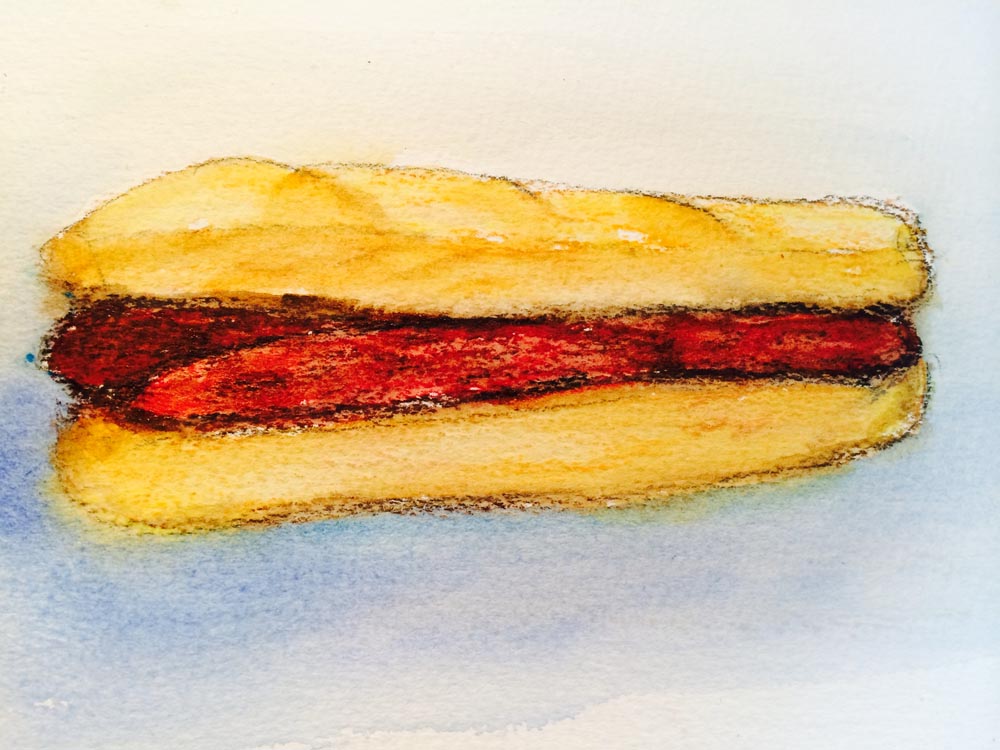
Wheat flour, used to make chorizo sandwiches, came from wheat brought by the Spaniards to South America during the sixteenth century. The bread in Argentina is almost exclusively white, a lingering imprint left by Europeans who saw white bread as the signature of upper class cuisine. That January, at the Central Market outside Buenos Aires, dozens of customers waited in line to buy freshly baked French baguettes priced at one kilo of baguettes for seven pesos. (The Argentinian government had set bread prices at ten pesos per kilo, so wonder the line for one kilo of bread at seven pesos wound around and around the bakery stall that day.)
Argentina got serious about growing wheat after the new nation (established in 1852) built a School of Agronomy in 1875. Soon Argentina exported grain for the first time and began to industrialize the country’s grain production system. Bad weather and crop failures in the early 1900s combined with a lack of demand for grains, a commodity not considered important to those waging World War I. When the war was over, the economic depression ended, and workers began to demand protection from those who appeared to profit by the resurgence of grain production.
When I was there, the wheat market was in turmoil as Kirchner’s government restricted wheat exports, causing wheat farmers to lower production and in some cases move their fields into the more lucrative production of soybeans, which have no limits even though sales are taxed at 35 percent. Since farmers want to reap the benefits from the more liberal policies, they are depleting the soil with the nutrient-hungry soybeans.
The wheat farmers who remain in their fields soldier on, producing grain for choripàn bread. One mill outside Buenos Aires, Melino Chacabuco, receives shipments of grain around the clock. Chacabuco is a sleepy, semi-industrial town of just over 35,000 inhabitants located on the Saluda River, now the Laguna Rocha. The presence of a river must have been the attraction for building a mill, a winding conduit for grain to the mills. Tall smoke stacks, grain storage silos, and cylindrical billboards advertise Chacabuco both as a town and as a mill.
I visited the mill, driving three hours to Chacabuco on a long, flat highway through dusty agricultural towns. At the mill, a long queue of bright red trucks transferred grain from their bellies into the metal grates built into the flooring of the mill delivery courtyard. To show how all these shipments of grain become the refined, enriched white flour used in choripàn sandwich bread, two employees met me in the mill conference room. With a display more suited to a foreign dignitary, production manager Juan Rafael Errasti and food engineer Gabriela Benavidez sat at a long wooden conference table, slide projector perched at one end, American and Argentinian flags flanking each other, and a basket of sweet, sticky, shiny Argentinian pastries slowly circumnavigating the table.
Rafael and Gabriela explained how their mill made flour—oh, and pet food, a byproduct of milling flour. Molino Chacabuco S.A. was founded by Crespo & Rodriguez, a firm in the early 1900s. Don Tomás Crespo and Don Jose Maria Rodríguez acquired the milling equipment in Chacabuco in 1918.
Inside the old Chacabuco Mill, Rafael and Gabriel talked about their jobs. Rafael revealed that his recent promotion to manager made him uncomfortable. Trained as a mechanical engineer, he confessed that he knows how milling equipment works, not people. He’s tall with silver hair, and he was wearing a short-sleeved shirt to keep cool in on that mid-summer day. The warm, damp air smelled of ground flour.
“A simple loaf of bread is not easy to make, and not all grains of wheat are created equal.”
Gabriela appeared to thrive in her job as a food scientist, a position she’d had for the last twenty-nine years. Slowly stirring her tea as she emptied a series of sugar packets into her cup, she explained how flour continues to hold her interest. A simple loaf of bread, she said, is not easy to make. Not all grains of wheat are created equal, according to Gabriela, who described all the variances that can occur and all the adaptations and challenges that arise as a result of differences caused by different growing practices and weather changes. Adding to the complexities of her flour world, she said she believes that bakers today are not as skilled as in the past, sometimes blundering through the making of bread inconsistently, often tossing in ingredients without regard for precision or, she suggested, any concern for quality. As a result, Gabriela is in constant contact with her customers, advising and sometimes training them so they can create a stable, consistent loaf. After all, she wants them to stay in business, and it’s the flour that will get a bad rap if a customer feels the bread doesn’t taste good.
“It’s the flour that will get a bad rap if a customer feels the bread doesn’t taste good.”
Gabriela reports to Rafael, who towered over her with his wiry six-feet. Her hair is short and dark brown, drawn back over her face by her reading glasses. Wearing a white lab coat with the company logo on one side, she conveyed the competence of a scientist, betrayed in some moments by an occasional twinkle and smile. During our tour through the factory, we caught each other’s attention when we approached a large area where the highly polished wooden floor begged for a tango dancer or two. Spontaneously, we both mimicked the motions of tango dancing, sliding across the floor for a few minutes undetected by the oblivious males in our group.
Rafael and Gabriela led us into the factory, a collection of buildings adjoining their offices. Winding our way in between the tall silos of grain awaiting the capacious maw inside the largest of the buildings, we began our trek up and down the five floors of 1950s style milling equipment.

The mill was impeccable. The machinery was either emitting soft grinding sounds or energetically quivering and rumbling as flour coursed throughout the different factory floors. Every machine seemed to be either grinding or sifting. In a quiet room shut off from these sounds and vibrations, Raphael and Gabriela presented a series of trays, each with tiny piles of ground grains in various stages of milling. Trays appeared and were whisked away in a performance designed by a team of millers who displayed the same sort of geekiness that you find in a chemistry lab. Gabriela and Raphael showed, with their small piles illustrating the progressive stages of milling, how the grains became 00 or 000 flour, two specifications indicating fineness. (The Argentinians use the Italian system for grading flour according to fineness. The more zeros, the finer the grind.)
And the reveal of small piles of flour didn’t end in the small room filled with flour samples. On each floor, Raphael and Gabriela went from machine to machine, pulling out samples of flour to demonstrate how many times the wheat grains passed through the mill, up and down, back and forth, streaming through Plexiglas tubes, rustling and shaking their way toward some degree of 000s.
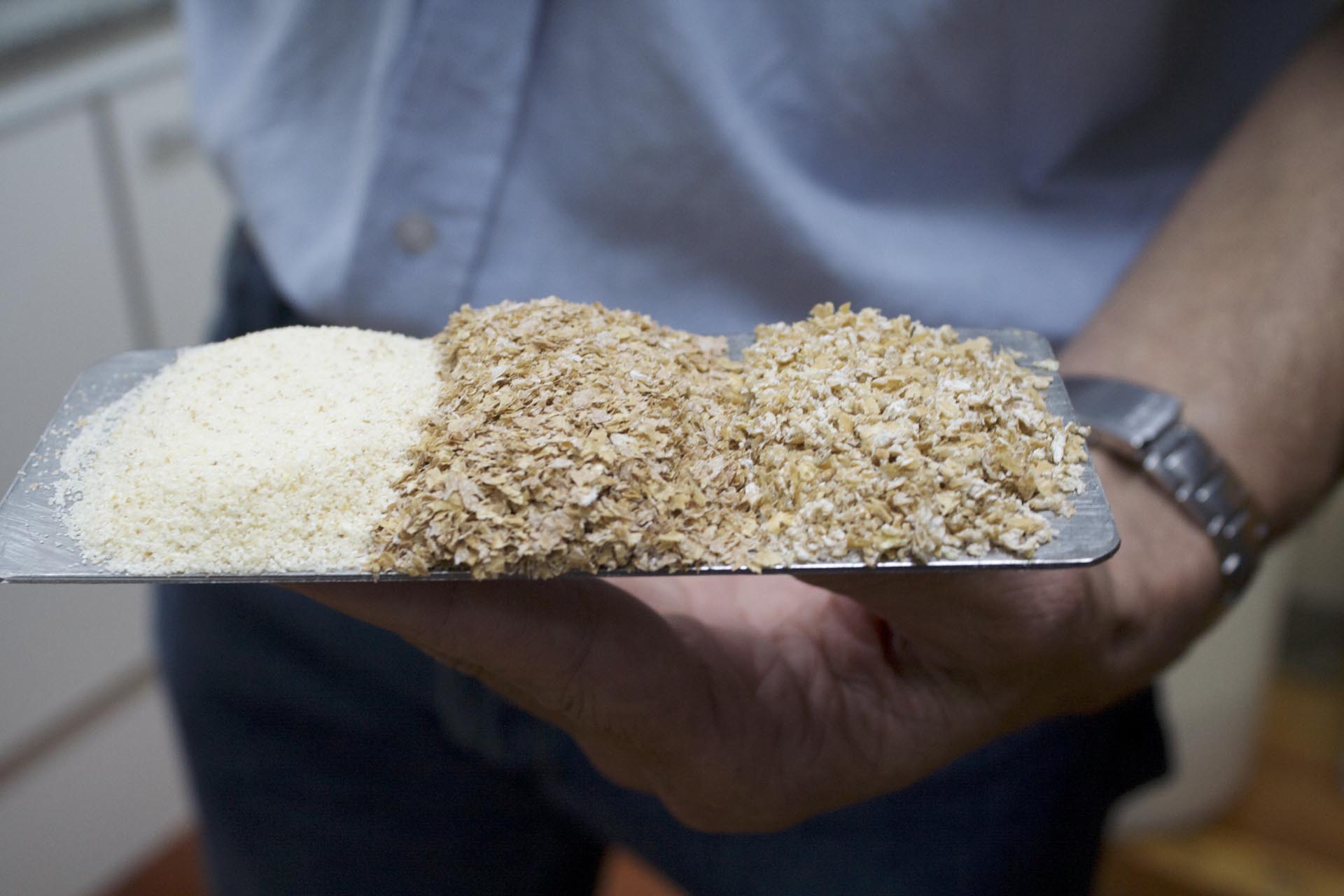
The floors, supported by the old columns from the mill’s early years, gleamed. While the columns appeared of recent vintage, the capitols were the old cast iron ones, black and decorative. Great care had been taken by someone in charge of the mill’s history to patch only small areas of the flooring in an effort to keep as much of the early 19th century underfoot. In spite of the effort to keep the mill’s past intact, modern milling practices and the use of computers to manage every step of the process were evident at every turn. One turn took us to a room where bags of additives awaited someone who would measure out desired amounts of niacin and riboflavin to create “enriched” flour. (Seems like the flour industry spends its time stripping off the outer shell of a grain, removing protein and nutrients and then replacing nutrients through the “enrichment” process. Must be a reason for this, and it might have something to do with the cultural preference for white bread, like the bread used in choripàn.)
“No man qualifies as a statesman who is entirely ignorant on the problems of wheat.”
Wheat is one of those crops brought to South America by the same Europeans that Niall Ferguson lauds in his book, Empire. Ferguson argues that the colonizers during the 19th century added to the conquered countries, adding such commodities such as grain, railroads, and cattle. Whether you agreed with Ferguson or not, you see the effects of foreign cultures in every choripàn. Argentinian wheat makes a significant contribution to the global economy and governments are wary of any shortage or disruption to the wheat supply chain. As Socrates said in one of his discussions with Plato, “No man qualifies as a statesman who is entirely ignorant on the problems of wheat.”
And Argentina has been having its wheat problems. How the choripàn will fare is unclear. But just ask any Argentinian if whole wheat or any bread other than that white wheat bread would be worthy of their chorizo, and you’ll get a grimace and denial all in one motion.
“Ask any Argentinian if any other bread would be worthy of their chorizo, and you’ll get a grimace and denial all in one motion.”
On the way back from the mill, I passed through several highway tollbooths where police officers waved cars through, allowing them to pass without paying any toll. My guide explained that the government passed a law making it illegal for tollbooths to detain drivers for longer than three minutes during peak traffic hours. This seemed to indicate that the government was alarmed that such delays could incite riots or other forms of social unrest. If a few minutes delay at the tollbooth could cause such a reaction, imagine what might ensue if choripàn bread became prohibitively expensive or even unavailable due to a wheat shortage. Beware any government that goes too far, threatening all those football fans with the loss of their beloved choripàn.
Ernesto’s Choripán Stand
Pedro and his son, Ernesto, have sold choripán sandwiches in Buenos Aires every day for seven years.
Pedro Molina’s white teeth reflect the Argentinian sun, making a steady gaze into his eyes almost unbearable. For some reason, his smile reveals only his lower teeth, gleaming and even. Sitting in Buenos Aires under one of the umbrellas that shade the tables surrounding his stand, Pedro speaks with a low, soft voice as he describes his life as a vendor of choripán, a combination of chorizo and pan (bread), the two main ingredients of the classic Argentinian sandwich. Pedro flashes his smile throughout our conversation, revealing that row of bright white teeth every time.
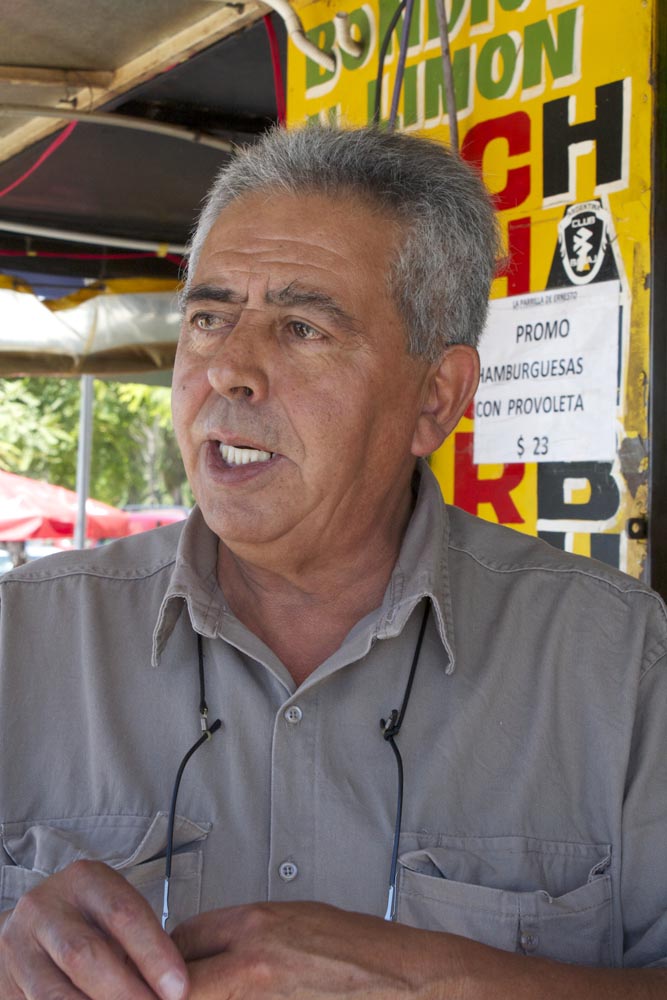
“This is a man who shows up for work for reasons other than grilling sausages.”
His bright red and yellow choripán stand, a parilla or grill, bears his son’s name, Ernesto. They have worked side by side, day after day, for at least seven years. Families, hungover teens and grandmothers who are walking along the broad sidewalk that borders the Buenos Aires Ecological Reserve along the Rio de la Plata buy their Argentinian chorizo sandwiches here.
Pedro describes his family in San Juan province, a rocky section of Argentina located along the western border with Chile. They raised pigs that sometimes wandered through the house. Since he was six years old, Pedro worked alongside his father, fattening their pigs so they could make sausage, and he grew up grilling chorizo. His father was an artisan of sorts, fabricating leather harnesses for horses. He was also an owner of a fruit business and came from a family that produced a long line of cooks. Before setting up his choripán stand, Pedro did just about everything “except being a thief.” He sold cars, fruit, and vegetables, and he worked in a family-run leather store. Seven years ago, those memories sparked his interest in starting a sandwich stand selling choripán.
Now, in his mid-60s, Pedro reflects upon the many jobs that came before his beloved choripán stand. He speaks earnestly about the importance of work to a sense of wellbeing. And he has strong opinions about work, an activity that he says “dignifies the human soul,” expressing what he describes as man’s innate character of active love. This is a man who shows up for work for reasons other than grilling sausages.
Pedro glances back and forth between my notebook, where I’m furiously writing, and his son, who is frantically setting up the stall for the day’s business. Pedro compliments Ernesto’s mastery of the grill, but he is ambivalent about any plan to have his son take over the business. Raising both hands to the sky, he reveals those white teeth, smiles and sighs as he says that fate will determine what his son does in the future. Perhaps Pedro holds the hope of a family succession plan, but all indications that day were that he is content to leave the decision up to Ernesto, who at this moment is grilling up a mountain of fresh chorizo for the day’s lunch rush.
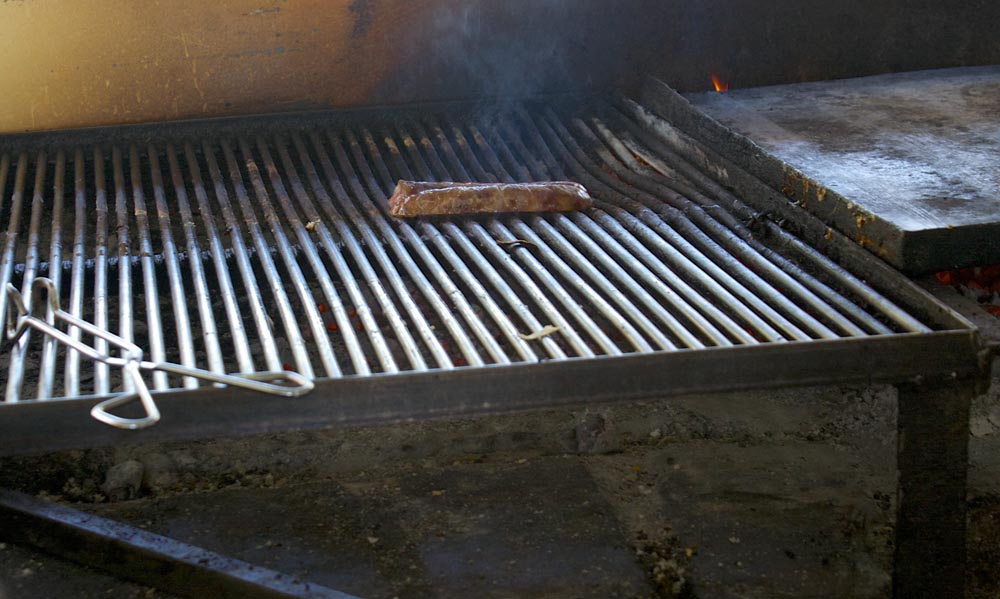
But Pedro has no desire to hand over his business just yet. He wants to continue to work, and judging from his late arrival to our interview, he’s in the thick of day-to-day operations of his choripán stand. He was an hour late for our meeting, a large man arriving in a small car, hurriedly unloading a plastic bag of pork chorizo that had been stored in his home refrigerator after that week’s heat wave caused a power outage in the city.
Pedro is getting impatient with all the questions about how his business worked and wanted to know why we hadn’t talked more about the choripán sandwiches he sells to his customers. Most of his customers are tourists who don’t buy the choripán but instead consume dozens of hamburgers and other pork and beef sandwiches such as bandiolas, spicy meat sandwiches made of pork or chicken. He sells about forty choripáns a day, and more on weekends. But Pedro is genuinely disappointed that we hadn’t spent most of our interview talking about his choripán sandwiches.
Unable to deflect his invitation, I ask how he makes choripán. With those blazing white teeth on display, he invites me to sidle up alongside Ernesto as his son cooks a chorizo sausage, slicing it open so that it cooks evenly and flat against the hot grill. The smell of sausage and spices fills the small space inside the stand, making it nearly impossible to suppress the desire for a bite of the grilled chorizo. When the sausage is glazed with its own grease, Ernesto gingerly lays it inside a sandwich roll that is similar in taste and texture to a French baguette.
“The smell of sausage and spices fills the small space inside the stand, making it nearly impossible to suppress the desire for a bite of the grilled chorizo.”
Ernesto insists that the classic choripán, his preference, is just chorizo, chimichurri sauce and a combination of oil, vinegar, oregano, cumin, parsley, garlic, red pepper and fennel. He’s wild about oregano, but he provides a table for his customers that satisfies their desire for mayonnaise, mustard, lettuce, tomato and other spicy sauces —all dismissed by Pedro with a brief wave of his hand as unnecessary embellishments for the humble, grilled chorizo nestled in the slightly warmed, soft white bun.
His life and the lives of those he works with mingle in the public park where his stand sits at the end of the paved, tree-lined walkway. The choripán stalls along the walkway are open twenty-four hours a day, every day. When we arrived at 10:00 a.m., all the stall owners were cleaning the grills, stocking new charcoal and taking deliveries of soft drinks, paper napkins, onions and meat. The choripán stalls are kept open with continual deliveries of supplies, people and customers.
“You can imagine a subculture of choripán stall workers whose families have grown up living in these buses, eating grilled meat, raising families, playing music, and cobbling together a work/life existence that keeps choripán coming night and day.”
Lined up along the curb near the stalls are several repainted, beat-up, old buses in all sizes and stages of dilapidation. Stall workers, still seemingly sleepwalking, wander in and out of the buses where they sleep, from time to time. You can imagine a subculture of choripán stall workers whose families have grown up living in these buses, eating grilled meat, raising families, playing music, somehow cobbling together a work/life existence that keeps choripán coming night and day.
Pedro wraps the freshly made choripán and hands it to me with this beefy but manicured hands. With his reading glasses swinging back and forth around his neck, he turns back to the grill, ready to greet the lunch crowd as they emerge from the neighboring high rises. Another day selling sandwiches, day after day, twenty-four-hours a day, all year, as in the past seven years, Pedro and his son, Ernesto, greet customers in the bright, hot, Argentinean sunshine.
Can Food Be Too Local?
While shooting your own dinner is the sine qua non of localness, you should be allowed to draw the line.
At Kelmscott Farm, I raised farm animals that met their death for the sake of high-end restaurants. On a recent weekend, I was shooting birds for sport, and yes, for food. But pulling the trigger put my meal just too close for comfort.
I joined a group of women who, judging from their gun bags and hunting attire, were experienced hunters. I, on the other hand, arrived on the first morning wearing blue jeans, a running jacket, and a fuzzy winter hat. My motivation for joining these women was to know more about the clamor to eat local food, to be close to food and to know its origins — and even the sometimes the unglamorous path that food takes to our plates.

Why does anyone hunt? Some hunt to eat. When we lived in Maine, our neighbors were grateful when deer season came, that dusky month or two that enabled them to kill enough deer to fill their freezers until the spring when their gardens took over as a source of food. Others hunt for sport. Some say they hunt to gain a sense of control over their circumstances, a connection with their food, an almost primal feeling of making and creating their own sustenance. George Orwell explains why he shot an animal in his 1936 essay, “Shooting an Elephant.” But he was commenting on British imperialism, and I am only musing about a weekend with women who shoot pheasants.
It’s not quite like making your own cheese, drying your own jerky or fermenting your own beer. Killing your own meat requires an ability to suffer the suffering of a living animal—in this case, a beautiful bird with sapphire- and amethyst-colored feathers, whose wings flapped, their soft sound veering overhead as it was flushed out of the dry grasses.
“It’s not quite like making your own cheese, drying your own jerky or fermenting your own beer.”
I was brilliant on the skeet range, carefully aiming the gun, peering down the muzzle and waiting intently for the speck of orange to fly up in the air or skitter across the ground. But in the field, I held back, fumbling, hesitating and hoping others would cover for me.
It appeared that I couldn’t bag a bird. But my eagle eyes enabled me to return to the lodge with one. I spied it in the grass and pointed it out to the pointer dogs, who then scooped it up and mangled it to death for my benefit, enabling a triumphant return to Austin with a cooler and a pheasant, which most thought I shot. Actually, I just pointed, and the pointers got the point.
While hunting for my next meal probably won’t be in my future, getting to know these women and learning how to load a shotgun was time well spent. And all those missed shots and spent bullets raised for me the possibility that you can be too close to your food, at least as defined by the length of your rifle.
Baker’s Holiday
January is just about the worst time to meet the owner of a bakery in Buenos Aires, or any business owner, for that matter.
Marcelo, the owner of La Sud América, a bakery in the Almagro neighborhood in Buenos Aires, was texting me with the news that he would be available for a brief meeting before he taking off for a holiday with his family. Like our summer months, Argentinian winters are prime vacation months for families with children out of school, which means that many businesses hang cerrado (closed) signs on their doors to indicate they are off for the holidays. So I was lucky to find to find a few minutes when Marcelo could show me around his small shop.

During the 19th century, Almagro was home to Italians and Basque families. As a haven for immigrants, the area also became home to the tango culture, built on the amalgamation of social customs and cultures.
Knowing that Marcelo would be anxious to escape the sweltering heat in the city, I located the shop and peered underneath the partially raised and profusely graffiti-covered metal door. He greeted me with a warm, Argentinian bear hug and led me to his office in back of the retail bakery shop. Marcelo wore flip-flops, baggy shorts, a black T-shirt, a silver necklace, and on one wrist, a huge sport watch with a yellow band and oversized, orange numerals. If his attire said anything, it said, “I’m not a baker today, just a guy wanting to be on a beach somewhere, looking cool.”
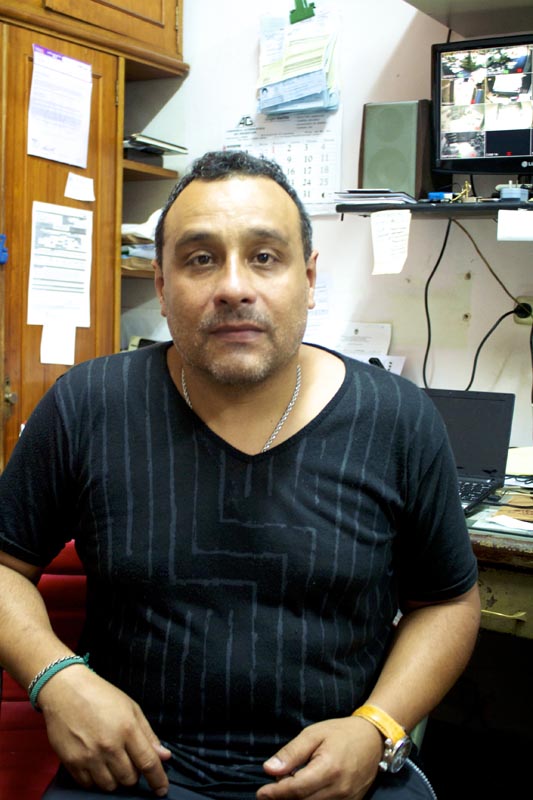
We moved beyond the retail shop, where wood and glass cases stood empty, worn labels revealing absent pastries and breads such as libritos and cremonas. A gleaming red paper cutter occupied an imposing position at the end of the counter to wrap purchases in white paper printed with the bakery’s decorative logo.
But the most impressive display in the small shop was the laminated article from Carghill News that had featured Marcelo and his bakery in 2007. There on the front page was Marcelo, holding a freshly baked loaf of bread in front of his old, brick oven. The antique oven is the main attraction of his small operation, built in the 1890s and one of the last remaining old brick ovens. (A famous bakery, L’Epi, located in Chacarita, has an oven built in 1919.) While boasting about its survival all these years, he complained about the annoyances that arose when bricks broke and he had to scour the city for hard-to-find replacements. Of course I wanted to see it, but for some reason Marcelo explained that it wasn’t available for viewing since the shop was closed. It didn’t make much sense to me, but who wants to push their luck when they have a shop owner who is technically on vacation offer to spend an afternoon explaining his business? Not me.
“Marcelo is an evangelist for the old way of baking bread.”
Marcelo is an evangelist for the old way of baking bread, and he makes much use of his brick oven. But despite the notoriety from the Carghill News, he’s not a big fan of Carghill flour. He reasoned that the company mixes grain from multiple growers and thus, in Marco’s opinion, the quality of the product varies from shipment to shipment, depending upon the mix from unknown sources. Instead, he buys from a smaller, Argentinian flour provider that purchases grains from a smaller and more familiar set of farmers.
One has to take this with a grain of salt, since the Argentinian government is in the midst of issuing tariff regulations and subsidies on a rather irregular and unpredictable basis. The country has been one of the largest exporters of wheat in Latin America, but recent bad weather has lowered production so that the grain harvest available for export after filling orders from Argentinian mills has rapidly declined. Even domestic mills are anxious about having enough grain to keep busy. All of these factors muddy Marcelo’s rationale for moving from Carghill to an Argentinian mill. He did explain that the mill gave him a “good” price because it liked the idea that Marcelo used the antique oven.
Marcelo led me from his empty shop to his back office, a rat’s nest of papers, dirty cups and empty soda bottles, shrink-wrapped boxes of paper goods, files and random items such as old, broken headphones amidst computers and closed-circuit security screens. The place was a mess, but Marcelo wanted me to believe he was in control of the apparent chaos as he half answered questions, holding the remote control for the air conditioning system in one hand and his cell phone in the other. Both were in operation at the same time.
But his attempt to appear in command failed when he was unable to locate the original copy of the Carghill article. He stepped out of his office to place a telephone call to his mother, who apparently has a mental map of all contents of Marcelo’s office. From the hallway, I could overhear his plea for help, which was proceeded by a plaintive “Mommy?” This tough baker, who owned not only this shop but also two bar/cafes, had suddenly become someone’s little boy.
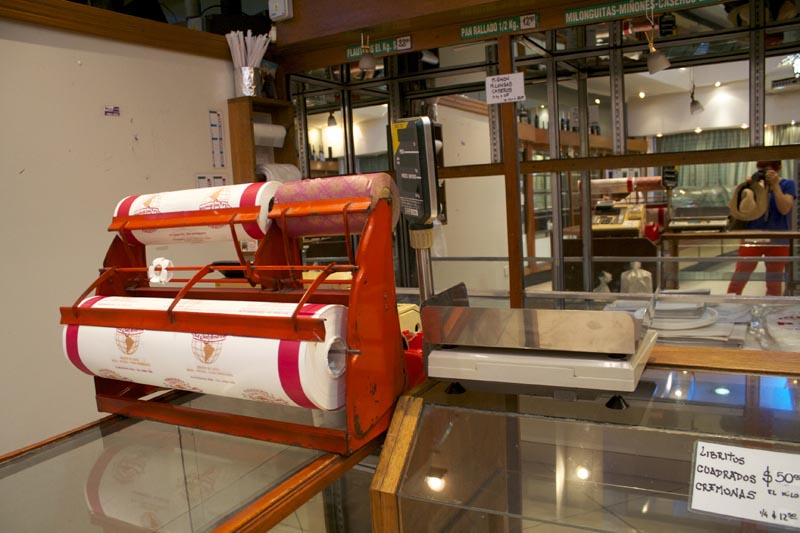
He found the file, but in his enthusiasm for producing useful items from his files, he also pressed two books into my hands, explaining that they were old classics of his trade with recipes for traditional breads. These books, from the 1950s and ’60s, were at one time loved by some baker, and their pages were bent and soiled with butter and grease. Nothing like an old book to seal a friendship for life.
Marcelo never stopped walking, talking, texting, and moving the temperature up and down in the room from the remote control. He comes from a family of bakers, his father and grandfather working in bakeries in Buenos Aires, and he was quick to rattle off all the ingredients of the bread used to make chopàni sandwiches: wheat flour, margarine, salt, yeast, sugar. But he wasn’t as quick to respond to my question about the quantity of sandwich buns he makes every day. For a quick moment he put down his cell phone, picked up a calculator, and pronounced that he bakes about 900 sandwich loaves each day during the weekend and 650 to 700 on a weekday. Wouldn’t you think he knew how many loaves he bakes by now?
“His enthusiasm for the job bubbles to the top of our conversation.”
Perhaps his training as a lawyer, which he completed alongside his twin brother, prepared him more for negotiating with the bakers union than tallying production output. He showed disdain for the bakers’ union, which, he gleefully reported, he has eliminated from his business. Marcelo also revealed that the most unpleasant part of this job is working with his forty employees, whom he described as a big family who regularly bring him forty personal problems. On the bright side, Marcelo shared how much he enjoys the hands-on process of baking bread. He said he wants to be in the thick of day-to-day operations, admitting that he is a perfectionist (and maybe a micromanager). His enthusiasm for his job bubbles to the top of our conversation as he describes how important it is for him to work hard so that he can maintain to his family’s good reputation in the bakery business.
I imagined he was anxious to head to the beach with his family, so we wrapped up our conversation, walking by the towers of bright metal bread pans and pastry sheets on the way out. I really did want to see the old oven, but Marcelo was resistant to the last, saying that it was not that interesting when it wasn’t baking, which sounded like cover for other reasons. We’ll never know.
Don’t Cry for Me…
The machines, technology, and gears in our supply chain matter, but so do the soft parts of the system’s underbelly — the human beings that make the thing work.
During a recent visit with a meat processor and a pig farmer in Argentina, two men told me disarming stories. Their stories seemed more suited to pass between intimate friends than between us, having only known each other for a few hours. While the stories revealed how chorizo is made, they were far more eloquent commentaries about these men’s lives than about sausage or animal husbandry.
While we’re exploring the food supply chain, we’re often confronting machines, technology, and the gears of the equipment that moves boxes from one place to another. These gears matter, but so do the soft parts of the system’s underbelly — the human beings that make the thing work. Like the humans that work at Frigorifico San Jose on Darwin Street, on the fringes of Buenos Aires. In one moment, you watch a large meat grinder mince and mix meat for the sausage stuffers. In the next moment, you watch your host’s eyes brim with tears.
“In one moment, you watch a large meat grinder mince and mix meat for the sausage stuffers. In the next moment, you watch your host’s eyes brim with tears.”
Ruben works at the pork processing plant housed in two buildings located in Lomas del Mirador. A rancher named Pablo Pelluse bought the land where the meat processors would set up their businesses in 1868. During the Argentinian Civil Wars, the area was caught in the regional battle and became known for its support of the Federalists against the Unitarios in Buenos Aires, who wanted a strong, centralized government. By the end of the century, the Federalists had lost, and Buenos Aires governed the unified areas around the city.
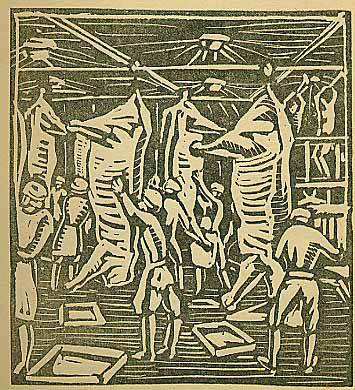
“Meat Packers” by Adolfo Bellocq, Wood Carving, 1922
Lomas del Mirador’s history runs along the same grain as the meat business in Buenos Aires. By the end of the 19th century, meat slaughtering had left its mark on the area as railways moved meat processing farther away from the city. The meat processing companies that had existed in the area replaced slaughterhouses and tallow factories and provided employment to the surge of immigrants, many from Italy, coming to live in Buenos Aires province during the late 19th and early 20th centuries. A soap factory, Jabon Federal, scooped up tallow to make bars of soap, joining other meat-related businesses and helping the town take on an appearance similar to other cities now known for their close association with the meat packing industry. Chicagos of the Argentinian meat industry, Villa Madero and Lomas del Mirador are historical artifacts of the old meat supply chain. The pork processing plant that I visited is one of the vestiges of the old meat processing neighborhoods of Buenos Aires.
Immigrants continue to occupy the area. Mario Klichinovich is the product manager and Ruben’s boss. Klichinovich is one family name you won’t find in Italy. Indications are that Mario’s family may have come from Austria after having fled Russia during the Jewish diaspora. Ruben is a food scientist by training and has spent 25 years working in the meatpacking business. He began working in food service through an internship while studying food “engineering,” the term used instead of food “science” in the U.S.
He led us to the chilled meat processing rooms to find a line of tables piled high with pig carcasses, mostly already cut into quarters and medium cuts. Workers hefted pig carcasses off the meat hooks inside a small truck that had been backed into the processing room. Occasional grunts revealed that this move took quite some physical effort.
Ruben’s team slices up a very small portion of Argentina’s pork production. Pig farmers have been increasing output by over 100 percent during the last decade, chasing a 60 percent increase in pork consumption. Exports of pork are also on the rise, in spite of Kirschner’s attempts to keep pork in Argentina.
His workers are bumping bags of pork, ham hocks, and trotters against each other, flashing sharp knives, and tossing offal into buckets beneath the tables. The working space is clean, constantly rinsed by water and cleaning fluids, but at some point Ruben will need more cutting tables and meat processors to deal with the increasing taste for Argentinian pork.

After watching the ad hoc choreography required to empty the small truck and prepare meat for processing, we wandered upstairs where the sausage takes shape. Workers in pristine whites, boots and hairnets, swung into action, sliding trays of cut-up pork meat into the jowls of the steel meat grinder. From out of a room containing buckets of spices come the seasonings that will be mixed into the ground pork, and steel tubs of ground pork become seasoned chorizo, some batches red, others not.
Meanwhile, on another stainless steel bench, workers slip the end of a pig intestine onto a sausage filler. A sausage stuffer opens the sausage casing, made in this case out of pig intestines, to enable the sausage meat to fill the tube created by the intestine. (I’ve tried to make sausage at home without a machine like this, and it’s a Laurel and Hardy experience however long you work at it.)

Ruben’s workers were slipping the stuffer into casing with lightening speed, inching up the casing while extruding pork mean into the tube as the next worker spun of lengths of string, tying the filled casing in increments of six to seven inches. No doubt this skill took hours of practice. Imagine the mistakes during the training period: sausages half tied-off, flinging loose sausage meat across the room.
Making sausage without a casing machine is a Laurel and Hardy experience no matter how long you work at it.
Back down in the cutting room, we saw the process begin over again. Moving into his office, Ruben explained that he needed to make a few calls to chase down payments and orders before driving us out into the countryside to visit one of his pig farmers. Along one counter, colorful plastic binders spoke of Ruben’s attempt to bring order to the chaos in the next room.
In the car during the three-hour drive to the pig producer, I got a chance to know Ruben outside of his meat processor demeanor. I asked about his family.
He replied, “It’s a sad story.” His eyes filled with tears as he drove on the highway and recounted how his wife passed away a week after giving birth to his two-year old daughter. His job, he confessed, was the only thing that held him together, providing one constant despite the tumult within his own life. Without warning, we were talking about his deep loss, about his love for his daughter, about his fears for her future, his insecurities as her only provider.
Who are these people, working the pork processing supply chain? Working the loading dock, counting cases on a pallet? People like Ruben.
Curious About the Curiosities
Peter Lund Simmonds’ book was the first truly global account of food, and it reflected a fascination with all things foreign.
In 1859, The Curiosities of Food was published in London by Peter Lund Simmonds. At that time, Simmonds joined other Londoners such as George Dodd, author of The Food of London, in a quest to understand food at home and abroad. By then, 400 million people had been added to the British Empire, each nation bringing a food culture that seemed exotic to the ordinary Victorian. Simmonds’ book was the first truly global account of food, and it reflected a fascination with all things foreign.
Following in the tradition of Victorian publishers, the title continues: Or, The Dainties and Delicacies of Different Nations Obtained From The Animal Kingdom. The book is rich with information, anecdotes, and literary allusions to all kinds of fleshy ingredients, from fish to horses.

Simmonds is conscious of the thin line between food that evokes nausea and food that indulges the most indulgent gastronome, yet some of the food he discusses is hard to stomach. Horsemeat, for example, may delight a Frenchman, but it will disgust a Briton, and his chapter about horsemeat reveals his dry British humor: “At Paris, where all eccentricities are found and even encouraged…horsemeat was all the rage.” Simmonds reflects upon his inclusion of the animal’s flesh in his book by wondering if Londoners would soon be requesting, “A piece o’ horse, my kingdom for a piece o’ horse.”

Even more amusing is his observation that horsemeat had been sold as other types of meat, such as venison, in restaurants. Unfortunately, this stomach-turning note presaged the 2013 discovery that beef sold at a Tesco’s supermarket in the UK had actually been processed with horsemeat. Simmonds laments the practice of disguising beef in any way, describing the then-popular technique of “blowing the meat,” inserting a tube into a piece of meat to blow air into the flesh. This caused the meat to appear “plump and glistening,” as Frederick Accum described in his book on the adulteration of food in the early 1800s.
The Curiosities of Food contains history, science, and literature. Simmonds includes Roman history on the same page as a description of contemporary food fads, such as the arrival of “condensed” eggs in London’s markets. Readers will not only consume history and poetry, they will learn about plant classifications and geography.
John Milton, quoted in The Curiosities of Food
…Of fish that with their fins, and shining scales,
Glide under the green wave, in sculls that oft Bank the mid sea: part single, or with mate,
Grazed the seaweed their pasture, and through groves
Of coral stray; or sporting with quick glance,
Show to the sun their waved coats dropt with gold.
He ends the book with a summation of the breadth and variety of foods eaten across the globe and invites us to join him in understanding the world better by exploring the food eaten by those who occupied foreign lands and ate unimaginable fare. “Who shall venture to determine what is good eating?” he asks, and it’s a good question during our era of food-related obsessions and value judgments.
Transporting Food Over Oceans
“The use of ships to transport food begins at least with Viking and Roman ships that transported oil and wine over the ocean.”
I have a smartphone app that tracks marine traffic, and there’s no end to the amusement I derive from locating in real time the ships near me in almost any port. I can see where the ship is registered, its origin, and its destination. Unfortunately, I cannot see into the cargo hold, and therein lies the intrigue.
The use of ships to transport food begins at least with Viking and Roman ships that transported oil and wine over the ocean. Today, new Panamax container ships slip through the expanded Panama Canal. The tradeoffs between speed and carrying capacity seem to be part of the long evolution of ocean transport, not unlike the evolution of land-based transportation technology.
Liner Service and Tramp Shipping
Basic tutorials on merchant shipping reveal at least two relevant categories of cargo ships: liner service and tramp shipping. Essentially, liners have regular routes and schedules, and tramp shipping is chartered and has irregular schedules. Liners are generally more expensive than tramp services, and so bulk cargos like grain and sugar often travel with the tramp services. What this all means is unclear to a novice, but at least it separates two basic classes according to the types of foods that travel on ships.
Picking Up Speed
The business of shipping food rode on the innovations in naval architecture and energy. Relying on wind to move food around the world had its limits, most of which were reached by the end of the 19th century. Steam slowly entered transoceanic trade, but the problem of lugging all that coal over long distances slowed progress. Still, some food movers benefitted from the transition from wind to steam. Two New England entrepreneurs established the Boston Fruit Company, which became the United Fruit Company in 1899.

In spite of the slow beginning of transoceanic shipping of food, by 1915 the United Fruit Company and others were sending food in the cargo holds around Cape Horn and through the Panama Canal. That period must have been the tipping point in terms of speed and shipping capacity…although using the term “tipping point” to talk about shipping may not be a good idea.
Food Preservation: It’s in the Can
Whether boxes, bags, or cans, food needs some sort of protection from the environment, and cans tell a story of multiple technologies, not all of which came together at the same time.
Nicholas Appert, a self-taught chemist who was a cook, chef, and confiseur in Paris experimented in his shop while the citizens of his city marched on Versailles over the price of bread. Times were tough if you were hungry and not the aristocracy.
Access to food was a concern for more than just the Parisians during the Revolution. When Napoleon began his sweep across Europe, he was aware that his army traveled on its stomach. So Napoleon challenged the citizens of France to come up with a way to make food last longer while the navy was at sea and his armies were assembling his empire. Appert responded with a way to sterilize food in glass bottles. His idea, he said, was a response to the general concern about over-consumption of sugar, which was used as a preservative. He saw his technique as a way to lessen the amount of sugar in preserved food. (Yes, that was in 1810. Our current concern about eating too much sugar apparently has a history of about 200 years.)
“When Napoleon began his sweep across Europe, he was aware that his army traveled on its stomach.”
Appert won the cash prize but not the patent. Almost at the moment he published his work, several British engineers and entrepreneurs scooped up the idea and received a patent, soon turning Appert’s invention from glass to tin.

Bryan Donkin’s tin can, based on Appert’s sterilization technique
Though Appert would die poor (no patent, no money), his discovery of sterilization as a way to preserve food was a foundational innovation. Cans and can production technologies followed as inventors experimented with heat, metal, and machinery to process food for longer durations before consumption. Of course, it wasn’t until 50 years after the can appeared that it became openable. The can opener didn’t arrive on the scene until 1866.
“Of course, it wasn’t until 50 years after the can appeared that it became openable.”
The idea of preserving food in tin cans attracted the attention of entrepreneurs in Britain and the U.S. during the Civil War. Like France, both sides of the American conflict wanted to feed their armies so they could remain in the field. Experiments for condensing food, like milk and soup, emerged as a way to package food without the additional liquid weight.
Food technologies that not only preserve food but also lessen its weight must relate in some way to the cost of transport. The connection between lighter food and lower fuel costs may have been an incentive for these early inventors.
There’s a lot more to explore about canning and other food packaging technologies. It’s intriguing to note that when canned food appeared, it became mysterious. Consumers began to demand labels and certification that would verify the contents of the can. The loss of transparency in the food supply chain may have begun with the tin can.
No Lunch Pass
Not a day goes by when we aren’t told how Big Food conspires to make us fat while exploiting our environment. Is this really the end of our debate about the state of our food system?
Tyler Cowen’s book, An Economist Gets Lunch (2012), offers an alternative view, one that might spread the blame rather than give us all a pass. He suggests that regulation, television, war, and changing demographics in the 20th century shaped a food system that looks industrial and often tasteless — and in some cases, harmful to our health.
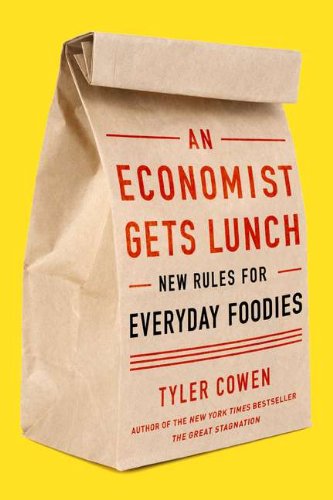
Cowen’s view is this: First, Prohibition in the 1920s put many restaurants out of business, since they relied on revenue from alcohol sales to financially sustain them. Many of the restaurants that went out of business were serving more creative, gastronomic meals to their customers. So culinary innovation left the American food culture with the closure of their restaurants. The restaurants that survived were those who catered to customers who did not drink alcohol with meals and were less discriminating, happy with diners, coffee shops, and less inventive cuisine. (Europe, on the other hand, had no Prohibition Era, so they kept their creative juices flowing, keeping culinary standards high.)
World War II kept culinary standards low with the onslaught of rationing, the disappearance of quality ingredients, and the entry of women in the workforce. Women moved their families to convenience food and stopped creating an American food culture while burying home economics in schools. More preservatives appeared in food as households relied on meals made in advance of the workweek. Long distance supply chains developed to enable more food to travel through a more industrialized system so that Americans could have low-cost, easy to make food while women disappeared from the kitchen. Convenience food arrived. Big Food, as it’s called today, was created by the consumer as the consumer changed, eating habits changed and American food culture stalled.
“Big Food, as it’s called today, was created by the consumer as the consumer changed, eating habits changed and the American food culture stalled.”
Added to this was a move toward nativism during the mid-19th century, depriving American cuisine of the lusty, creative, and diverse favors brought to the table by immigrants. That’s changed now, but in the 1920s and 1930s, restrictions collided with war, Prohibition, and the Depression. And the arrival of television, which, as we know, brought TV dinners, endless gawking at cheesy shows, the demise of family meal times, and the emergence of children as the arbiters of taste. Families, even now, allow kids to determine the food on the table. Usually, that’s not kale and brown rice, salads or vegetables.
Tyler Cowen offers us an opportunity to look in more places for the source of (and solution to) our current predicament. Maybe Big Food is an easy target, but our curiosity can be fed by a more diverse range of topics by diving into American culture, finding how to change our media addiction, being curious about new ingredients and cooking a meal in our own kitchen.
What’s in a Peanut Butter and Jelly Sandwich? Far More Than You’d Think
A PB&J is an exquisite example of how a simple snack belies a global network of humans and technology that operates with mystifying accuracy to deliver our food every day.
A few years ago, I took a break from writing and headed across the street for a snack. A peanut butter and jam on toasted whole wheat bread is my favorite, comforting, reassuring snack food. An espresso chaser makes the snack both calming and exhilarating — a good combination when I’m searching for a new gear in the writing process.
Always finding complexity in the nearest simplicity, I found the PB&J the nearest object of my obsessive nature to figure stuff out. I was down on my writing that day, thinking food logistics was hardly a story that would envelop a reader in mystery, suspense and joy.
But wait.
A PB&J is an exquisite example of how a simple snack belies a global network of humans and technology that operates with mystifying accuracy (most of the time) to deliver our food every day, in spite of trade sanctions, floods, labor strikes, crop failures, flat tires and fuel crises.
So, perhaps there’s an opportunity, after all, to tell a story about the seemingly mundane, industrial food supply chain that grabs readers at the start and holds them in suspense until the last page.
Going deeper, I imagined and then illustrated my PB&J’s story!

Since that day, I’ve been learning about the food supply chain and have bits and pieces of acquired knowledge squirreled away in digital files, in and off the Cloud, scrawled on bits of notepaper now lying at the bottom of my briefcase, underlined bits in books piled in towers around my office.
And, of course, I’m still writing, though it’s almost easier to acquire another amazing scribble of knowledge than to put down a few words that tell a story. Every time I hit a logjam, I think of how it all began with a simple little PB&J sandwich, and suddenly, I’m headed somewhere interesting—or at least across the street for a snack.
Feeding Smart Cities
With more and more talk about tech-powered smart cities, what are we doing to ensure innovative food logistics are part of the conversation?
When William McKinley became president in 1897, he enacted protectionist legislation and began what could be called a “buy local” campaign. In the same year, a British writer known for books about fly fishing wrote “War, Famine and our Food Supply,” fraught with concern about England’s ability to feed itself. The author, Robert Bright Marston, was beside himself, calling attention to England’s reliance on Russia and America for wheat and corn. Noting how Napoleon’s army starved on the steppes of Leningrad, Marston wanted another flavor of protectionism — the construction of grain storage buildings that would enable England to live for three months if a war cut the country off from its main sources of food supplies in Russia and the United States. He wanted to buy time for British farmers to build local capacity to make up for any missing imports from Russia and America.
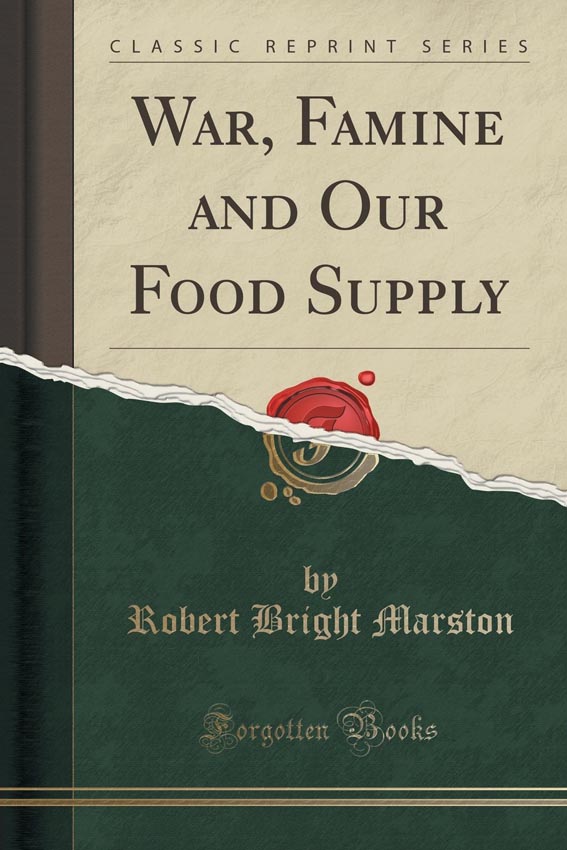
Both McKinley and Marston knew that food was critical to the health of their nations, both to maintain social stability and to enable economic progress for all its citizens. Today, cities like New Orleans and New York City are keenly aware that disruptions — whether hurricanes or other breakdowns of the food supply chain — have received only improvised protections. And yet, with all the talk about “smart cities” enabled by technological advances, we hear very little discussion about innovative ways to secure food supplies against further disasters. Cities routinely talk about their three- to five-day food supplies, but those fall dramatically short of the luxurious three-month supply Marston was angling for.
“Today, cities like New Orleans and New York City are aware that disruptions have received only improvised protections.”
Whether or not a city needs enough food for three days or three months — or three years — is a question that deserves more attention. Syrians are happy to have three minutes to consume a hastily provided meal from the World Food Program. While the media talks about casualties caused by weapons, little is said about deaths caused by famine and poison through the food systems in countries now at war. Few are aware of the destruction of livestock and cropland, or the contamination of soil and water, over the long duration of some modern conflicts.
The ripple effect of the disruptions caused by wars is difficult to imagine. The most obvious is the breakdown of the infrastructure, especially in the transportation of food. In Syria, even the perception of a disruption in the delivery of food causes an increase in black market activity, rising food prices and higher incidences of hoarding. Pita bread, animal fat and potatoes quickly disappear into personal storerooms, and Syrians freeze and dry food for longer-term storage. As it becomes more and more difficult to transport food to Syria, Syrians are looking for more localized food sources. As commodities like fuel and flour diminish, people worry about being able to produce flatbread, a simple yet essential element of their diet. With the breakdown of Syria’s government comes the loss of state control of bread prices and ingredient supplies.
“The ripple effect of the disruptions caused by wars is difficult to imagine.”
While not as long term and uncertain as the Syrian crisis, Hurricane Sandy brought home how food supply disruptions can upset the stomach of an entire region. In the aftermath of the hurricane in 2012, gasoline was scarce, transportation broke down and food logistics professionals struggled to keep New Yorkers supplied with pizza and bagels. New York wants more than three days of food to keep it afloat in the future — 12 months would be nice. But who decides, and how do we accomplish what Marston argued for in 1897: at least enough food for a country to adapt and find new sources of sustenance? We need food to enter the conversations of urban designers, especially those engaged in creating those “smart” cities.
The Return of Home Economics
Long before STEM initiatives came about, home economics programs may have done more than we know to bridge the gender gap in science.
A colleague of mine at The University of Texas at Austin invited me to peer into some locked bookshelves located in a conference room in the School of Human Ecology. The bookshelves, hidden from view by wood cabinets that line the perimeter of the room, contain stacks of musty books that have been neglected since the school was renamed during the 1980s, when university administrators, flummoxed by feminists, scuttled home economics departments.
The books and magazines inside the wooden cabinets once stood proudly on the bookshelves of the home economics department. Now the books lie in disheveled stacks, enshrouded in a past of denial and self-deprecation. Most have names of students or faculty inscribed on their flyleaves. They all reveal a past in which we believed students should know how to cook, make and repair everyday tools and operate within a world that considered personal responsibility to be a life skill.
Looking up from your latest, Pinterest-fueled attempt to make artisanal bread, you note that those books sound like something you’d like to read. I say UT’s hidden books should come out of the closet, and so should all former home economics departments, declaring a new, informed purpose more relevant than ever before.
Some of the books are about topics that would be familiar and celebrated by admirers of Michael Pollan, David Chang, Mark Bittman or Marion Nestle. Authors who wrote about food science, chemistry and the science of nutrition could have been muses to modern day molecular gastronomists such as Heston Blumenthal, Nathan Myhrvold and Homaro Cantu.
UT’s hidden books should come out of the closet, and so should all former home economics departments, declaring a new, informed, purpose more relevant than ever before.
Take, for example, A Laboratory Course in Physics of the Household, written by physics professor Dr. Carleton John Lynde. Published in 1919, the book was for high school students preparing for their College Entrance Board exams. The author points out that his book contains experiments and exercises — it is essentially a book of physics principles along with experiential learning activities. He also points out that any kitchen would serve as an adequate physics laboratory, equipped with standard weights and measures, both metric and non-metric.
Sure, it’s a guy writing for gals, but consider the times: Before 1920, American women did not even have the right to vote. But they were considered capable of understanding the principles of physics, a subject many women dismiss today. Barely 20 percent of all doctorates in physics are given to women, and our government has to develop programs such as STEM to encourage women to consider science as a course of study. Lynde’s book makes no apologies for his readers as it covers the principles of physics in 135 pages.
“Barely 20 percent of all doctorates in physics are given to women…”
The book is divided into the common categories of physics: mechanics, heat, electricity and magnetism, light and sound. You can see from this photo that a reader learns about the principle of levers by making a fulcrum with a yardstick and several weights made out of cotton bags filled with sand or shot. (Shot wouldn’t be something you’d find in a book today….) The reader becomes familiar with the scientific method and the careful processes required to create an experiment.

In setting up each experiment, Dr. Lynde encourages the reader to write down the expected results and, later, to compare what actually occurred with the imagined results. I wonder how many of us think in such constructive ways, allowing for imagined outcomes and then taking the time to carefully learn from the real outcomes of any endeavor we may undertake.


The author says, “You will get a great deal of pleasure out of this work at home, because you will find it very exhilarating to make experiments of your own; you will get a great deal of profit also, because when you have planned and made experiments of your own on a given subject, you will find that you know it in a way you never could simply by making the experiments in school.” Never has an experiment about levers promised such exhilaration, pleasure and satisfaction.
By the eleventh experiment, you learn about Boyle’s Law by setting up experiments that use a fire extinguisher and a vacuum cleaner. Boyle’s Law explains how the volume of gas varies inversely as the pressure on it. The fire extinguisher comes in handy as an illustration of how the contents behave under pressure, and the vacuum cleaner is a rough example of how air pressure creates a vacuum.
This book is only one of many chestnuts rumbling around in those wooden cabinets in the School of Human Ecology. Aren’t Michael Pollan and others making the same call to experiment by making things — even promising “exhilaration” in much the same way as Dr. Lynde did in 1919? Perhaps it’s time to shine some sunlight on their covers and recognize how science education was reaching women even before initiatives like STEM, even if they were still confined to their kitchen laboratories.
So let the efflorescence of home economics begin. Let’s take home ec back, men and women, making useful stuff and learning about science and engineering along the way.
“You will get a great deal of pleasure out of this work at home, because you will find it very exhilarating to make experiments of your own; you will get a great deal of profit also, because when you have planned and made experiments of your own on a given subject, you will find that you know it in a way you never could simply by making the experiments in school.”
— Dr. Carlton John Lynde
An Art Tour of Food Logistics
If you want a new experience while visiting an art museum, try going as a food logistics nerd.
Recently, I had this pleasure at Boston’s Museum of Fine Arts, the home of such luminaries as John Singleton Copley and John Singer Sargent. The two ladies at the front desk, each sporting particularly colorful eyeglasses — one in flamingo pink and the other in cerulean blue — slowly warmed up to my request and began sketching a path through the museum on the printed floor plan. “Go to the Americas room and look for jars. Then go to the Classical Art rooms and see if you can find amphorae,” they offered, visibly surprised that they had discovered something.
For my part, I wanted to hunt down Winslow Homer’s images of fishermen lugging halibut.
Here’s what I found.
The Fog Warning, Winslow Homer

Winslow Homer’s The Fog Warning, is the dark, foreboding image of a solitary fisherman looking over his shoulder at the oncoming fog bank, his boat weighted down in the stern by two huge halibut. Does he make it home? There’s a schooner on the horizon in the distance. Does he know the ship? Does he reach them? His boat is a fishing dory, a flat-bottomed rowboat that was designed to carry large loads of fish caught at sea.
Salem Harbor, Fitz Henry Lane

Fitz Henry Lane, an American painter known for his ethereal use of light, lived in Gloucestershire, Massachusetts, where images of ships and the fishing industry surrounded him. Salem Harbor, painted in 1853, was the center of the China trade that brought not only silks but also tea from halfway around the world. Square-rigged schooners and other working boats fill the harbor, unloading cargo into the Salem warehouses.
Whaler in the Ice, Chopping Out, William Bradford

You can feel the chill of the Arctic wind in William Bradford’s Whaler in the Ice, Chopping Out. The black and white charcoal image illustrates the slow, cold journey whalers take as they hunt spermaceti and other whale oil to fuel American households and their cooking stoves.
The Wreck of Ancon, Loring Bay, Albert Bierstadt

Albert Bierstadt, the master of romantic, heroic American landscapes, recorded the demise of the ship Ancon, which was stranded on a ledge in Alaska with its cargo of canned salmon. This 1869 oil painting, The Wreck of the Ancon, Loring Bay, captures the fragility of 19th-century food logistics with ship’s cargo at risk of weather, ledges and pirates.
Greek Vessels

The rooms filled with Greek antiquities included numerous jars and amphorae that held food, water and wine for various purposes — some for rituals, others purely utilitarian. One two-handled amphora from the Archaic Period (540-520 BC) gleamed from one case, displaying figures and grapes all the way around its midsection. As with most Greek vessels, the surface tells an elaborate tale of gods and humans. On this amphora, you see Dionysus (the Greek god of the grape harvest and winemaking) drinking wine while satyrs make more. The amphora illustrates the process of winemaking, including each of the various steps between the vine and your plate. Other, less ornate amphorae transported oil and wine across the Mediterranean in ships’ holds.
Food for the Dead

And finally, food transported to the dead is a food supply chain familiar to cultures that believe in an afterlife. The Egyptians assembled elaborate kits for those who departed from their world to the next. These stone containers, often depicting the food encapsulated within, contained the necessary sustenance to survive the next world. Called “food cases,” they were filled with provisions such as beef ribs and bread, sometimes wrapped in the same materials as the individual embalmed inside a sarcophagus. Notice that this one has a duck carved on the exterior, suggesting that a duck breast awaited the departed.
Imagining a museum as a repository of food logistics stories turned up some surprises and even more reminders that transporting food around the world has been going on at least since the Egyptians packed food for the afterlife. Whether in this life or the next, the movement of food can be a combination of art and science, utility and aesthetics. I can’t wait to visit another museum with food logistics goggles.
The Meat Business, Inside and Outside Ft. Worth
The Kimball Art Museum portrays a side of the meat business many visitors to Forth Worth, Texas, don’t see. If you only toured the Stockyards outside the museum, you’d miss the preceding centuries of carnivorous history.
In the late 1580s, Annibale Carracci painted two canvases that give us an idea of how meat fit into urban landscapes during Italy’s colorful Renaissance. By the late 16th century, Renaissance art entered the period of Mannerist painting, which led to the Baroque period, when the ideal proportions of High Renaissance art became exaggerated and even distorted. In the early 1580s painting, The Butcher’s Shop, Carracci’s two butchers and their gory background are examples of less-than-idealistic settings and out-of-proportion humans. The animal bodies outweigh the human bodies, and heads become dwarfed by torsos.
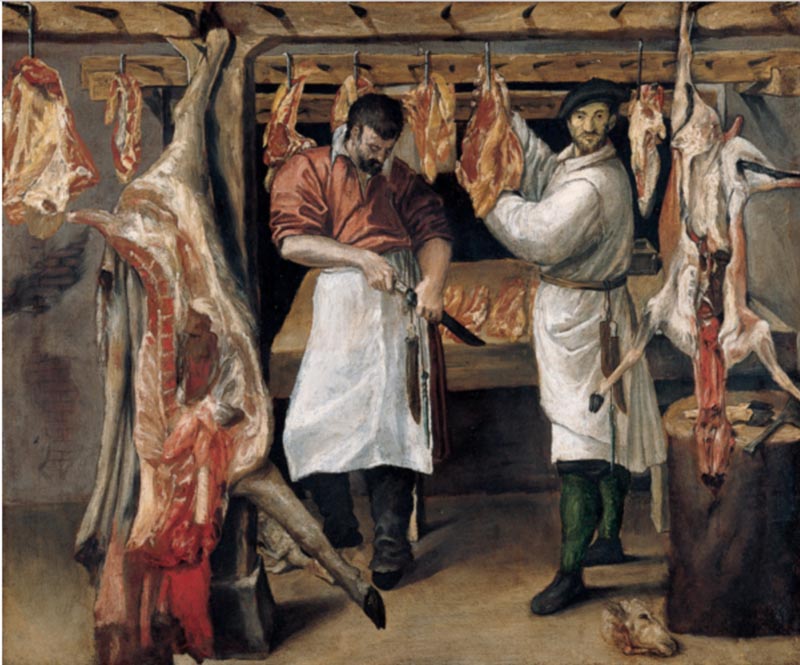
Called genre paintings, these images of everyday life stand in sharp contrast to the mythic portrayals of religious figures that hung in the Italian churches. Carracci, in one of his two paintings of butchers (the other, larger butcher scene is in the Christ Church Collection, Oxford, England), shows us one day — any day — in the life of a 16th-century butcher. He knew their lives because several of his family members were butchers in Bologna.
“One looks directly at you in defiant confrontation, as if he’s daring you to accept the reality of his profession with all its gore.”
There are two butchers in the Kimball Museum painting. One looks directly at you in defiant confrontation, as if he’s daring you to accept the reality of his profession with all its gore as he holds out a cut of meat for consideration. The other, eyes cast downward toward his knife, is preoccupied with the work of the day. Carracci studied with Titian in Venice, and the latter’s iconic red spills onto the canvas. There’s no blood on the floor — it’s not that messy — but the hanging carcasses are almost like stage backdrops surrounding the two men as they display their art and prepare for the next animal to slay. Nothing glorified here, but everything to see.

The carcasses suspended from sturdy meat hooks above the two figures appear to be from sheep. One sheep’s head lies at the feet of one of the butchers, one of its eyes cast in the direction of another sheep hanging above, eviscerated and waiting to be skinned.
A beef carcass dominates the left-hand side of the painting, cut in half as is still the custom for wholesale cuts of meat, which today would include all eight primal cuts. (Those are chuck, rib, loin, round, flank, short plate, brisket and shank.)
We can’t tell from the painting if these are retail or wholesale butchers, but both existed throughout Europe at the time.
Outside the Kimball
Outside the museum are the Fort Worth Stockyards, whose story is more familiar for Americans who know about the role that Forth Worth played in the history and development of the U.S. meat industry. The names of Armour and Swift, written in the embankment that surrounds the Stockyards, tell visitors who made Forth Worth the largest feeder of cattle from the Western ranges.
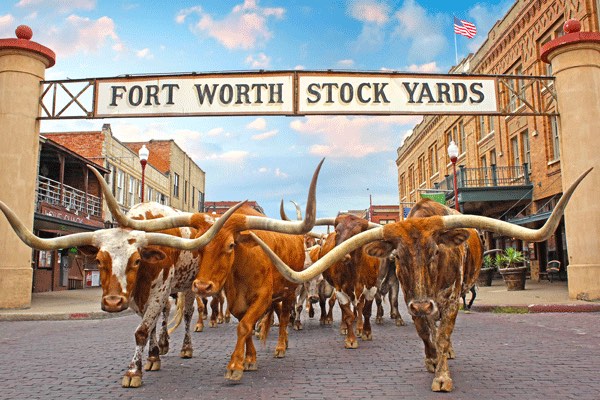
In their new incarnation as a tourist site, the Stockyards entertain visitors with twice-daily reenactments of cattle droving. Texas Longhorns plod silently down the street attended by cowboys located in the traditional positions of a droving team.
Inside the surrounding buildings, in the late 1800s and early 1900s, packing houses practiced the art of butchering in much the same way as those Italian butchers in Carracci’s paintings. Now, in Brooklyn and other foodie destinations, shops like those in the paintings are few but gaining more appeal as consumers demand more transparency between their food (meat in this case) and their plates. Perhaps it’s time for a contemporary painter to record those new Brooklyn butchers — pristine white aprons and all.
Waste Not
Food waste is a messy subject. What can one person’s efforts to record her scraps teach us about reducing our footprint?
Logi, a mythological Nordic warrior, won an medieval eating contest that involved consuming a tray of meat and bones — and the tray itself. (The tray was made of bread in those days, so it’s not such a big deal as it appears.) His gluttonous display was typical of the way men proved they were, indeed, men. The more food consumed, the more powerful the man.
For centuries, now, eating enormous quantities of food has been as necessary among the elite — who use consumption as a marker of social status — as it has been among the poor, who never know when the next famine will occur. The abundance or scarcity of food is one of the world’s paradoxes. We eat a lot, though not quite like Nordic warriors. And at the same time, we waste a lot.
Food waste tops the list of concerns for food system reformers these days. And why not? The UN Food and Agriculture Organization claims that we waste about 1.3 billion tons per year of edible parts of food, or about 4o percent of the food we produce. That’s enough to motivate anyone to reconsider what goes into the trash bin after a meal. The 2013 FAO report, “Food Wastage Footprint, Impacts On Natural Resources,” dissects the mountain of food waste generated each year. Perishable fruits and vegetables occupy much of that mountain for obvious reasons. In spite of advances in food preservation, we haven’t yet found the right technology for eliminating perishability.
“…we waste about 1.3 billion tons per year of edible parts of food, or about 4o percent of the food we produce…”
But before wringing our hands, we should wonder about what constitutes “food wastage,” as the FAO calls food waste. We hear about food waste in the media and at events that reference the same FAO report. As much a consequence of recirculating Internet data, this reliance on a single source can’t be our only source for the war on waste. If the topic is so fundamental to improving our food system, should we be evaluating a range of studies from multiple perspectives? Even without reading the UN report, we might wonder about packaging and about all the leaks along the food supply chain where food becomes waste. Did the FAO really go to a significant number of landfills and weigh all the different types of waste? Might there be other methods for finding food leaks and breaks the food distribution system?
The whole topic is messy. But even without knowing the exact amount of food waste in our food system, I imagine we’d all agree that the problem could use a big solution.
But overwhelming problems often numb our ability to act individually. Wondering what just one person might contribute to heap of wasted resources, I spent a week photographing my food wastage footprint. I became so self-conscious about my food waste that I began eating more trimmings and food before taking a photo, simply because I was embarrassed by the amount of waste that was about to become public record. Being shunned by one’s peers because of an oversized waste footprint could become the next neurosis requiring treatment by modern psychiatrists.
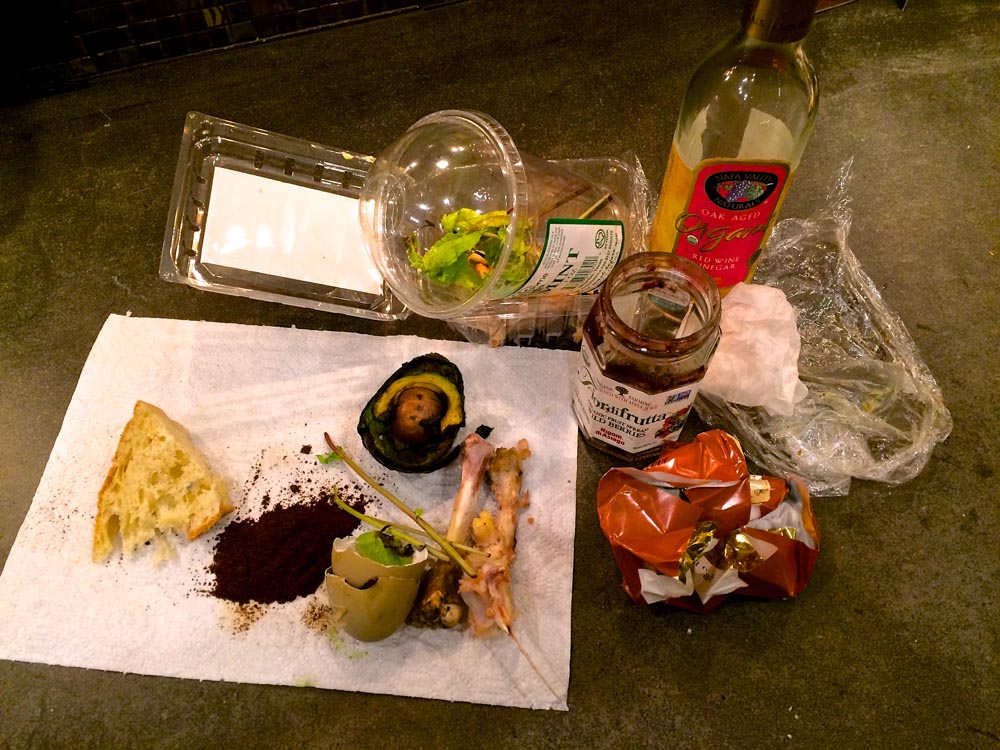
One day’s waste print.
While I worked to overcome the fear of disapproval, I saw that my food waste footprint had grown to the size of Sasquatch by the end of the week. This wasn’t a complete surprise, since the amount of food that I was required to buy in the grocery store was more than one person could eat in a week; remains of a head of lettuce and a quart of milk were all spoiled by the end of the week. Perhaps this is an admonition to never eat alone. More fun and less waste.
While my experiment wasn’t life-transforming, taking the photos did tell an interesting micro-story about one person’s waste footprint.
So what are the takeaways?
I wonder if there is a better way for single people to buy and prepare food. Would more single-serving packaging alleviate the problem? Lately I’ve noticed “Ready to Serve Brown and Wild Rice” from Riviana Foods in packages of two servings, ready to microwave. It might help, but packaging still needs a solution: even my single-serving yogurt leaves me with a foil top and plastic container at the end of the snack.
Would growing my own food lessen the amount of waste, since I could pick just what I needed for a meal and compost the remains each day? Maybe, but that would require a lifestyle change for many of us.
How about portion controls? When I ate out, the waste trail increased. Restaurants, unless you eat exclusively at over-priced, small-plate restaurants, typically serve more than you can eat. In my case, a sandwich was served with a side of coleslaw, which I don’t eat and didn’t see on the menu.
While my micro-experiment was both fun and enlightening, the exercise missed some of the bigger-picture considerations. How can we see beyond the FAO report? Bjorn Lomborg joins the United Nations Food and Agriculture to emphasize the amount of food wasted in the global food system. Lomborg moves beyond the statistic to consider systemic solutions, such as the need for improvements in our global transportation infrastructure. Ronald Bailey’s book The End of Doom points out that we have a highly productive food system that will produce enough food in the future. There’s enough food, it seems, just in the wrong places.
So how do we get all the food to all the right places in the right condition: unspoiled, nutritious and tasty? We could use a focused, concerted effort to address distribution and minimize food left in the field, on the loading dock and in the waste bins of food processors. Those efforts include new packaging, tracking and transport technologies. Everyone, from chefs to consumers, needs a behavior-changing incentive to prepare, serve and consume food in smaller quantities. The move toward selling food in smaller-portioned packages is just a small step in that direction.
These innovations, many of them in the works now, will do much more to lower the amount of food waste than anything revealed in my photos. But, hey, try it yourself. Take your cellphone and snap a few post-meal images of your food trail. What do you see?
On Our Loading Dock
Our nightstands are loaded with books to read and our laptops are packed with websites to explore and unpack some wisdom about the global food supply chain.
 Books
Books
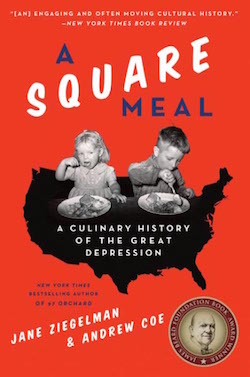 A Square Meal: A Culinary History of the Great Depression
A Square Meal: A Culinary History of the Great Depression
In the 1930s, Americans who were used to abundance were suddenly on food rations. Jane Zeigelman and Andrew Coe show how home economists came to the rescue with nutritional science, and government rose to the occasion with food assistance programs. Alas, some of the food promoted by the government was dismal: liver loaf (made palatable by a the addition of ketchup). Today’s MyPlate guidelines may be unimaginative, at least liver loaf is absent.
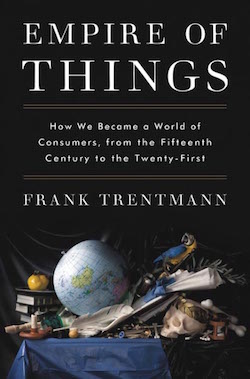 Empire of Things: How We Became a World of Consumers, From the Fifteenth Century to the Twenty-First
Empire of Things: How We Became a World of Consumers, From the Fifteenth Century to the Twenty-First
Frank Trentmann examines how and why we consume things, including food. He explains the closed-loop economies of company towns: companies provided jobs, housing and food through one supply chain. He illustrates how two trends — wellness culture and the rise of food prep outside the home — opened opportunities for new food products. Without directly addressing how the global food supply chain gets all those things to consumers, he offers a wide-ranging discussion of why we consume things.
 Refrigeration Nation: A History of Ice, Appliances, and Enterprise in America
Refrigeration Nation: A History of Ice, Appliances, and Enterprise in America
In Jonathan Rees’ history of America’s cold chain, he shows how refrigeration influenced our diets and improved food safety—from ice harvesters in 19th century New England to Kelvinator’s Foodarama in the 1960s (the largest home refrigerator ever built). He explores refrigeration’s impact on the environment, illuminating tradeoffs with technologies that limit food waste by using energy resources. He also suggests ways to make the cold chain more energy efficient.
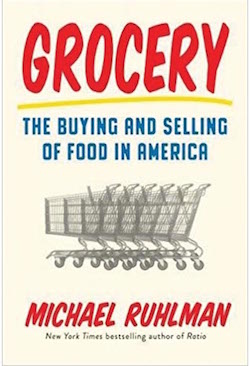 Grocery: The Buying and Selling of Food in America
Grocery: The Buying and Selling of Food in America
Michael Ruhlman takes readers through the history of food retailing to an evaluation of today’s grocery stores. He explains the complications of processing, labeling and distributing food to a population obsessed with convenience, unable to cook and confused by conflicting food claims. In the end, he shares his view of the future of retailing with consumers who demand more processed food produced on a smaller scale. Look for surprising news about the history of food delivery.
 Bread is Gold
Bread is Gold
This new book by the world-famous chef Massimo Bottura contains recipes that address food waste. Dishes created by Bottura and his friends (such as Chef Alain Ducasse) focus on low-cost but tasty ways to prepare meals with minimal waste.
 Podcasts
Podcasts
How I Built This
App developer Apoorva Mehta almost gave up on being an entrepreneur until he figured out what he really wanted to do: find a hassle-free way to buy groceries. Five years after launch, the grocery delivery app Instacart is valued at $3 billion.
Containers
Alexis Madrigal covers the world of global shipping in eight episodes. Interviews of tug boat operators and dock workers provide insights into the world of our global supply chain, including the food supply chain. Located in the San Francisco Bay Area, Madrigal captures the sounds of shipping.
Can Food Waste Save the World?
This episode covers films, chefs and other projects that are raising awareness about the need to reduce food waste.
 Films and Television
Films and Television
 Wasted
Wasted
Produced by Anthony Bourdain and co-directed by Anna Chai and Nari Kye, this feature documentary film offers more than the usual mea culpa about food waste. Viewers will see mountains of food waste but also learn how high-end chefs are leading a campaign to use everything the world produces. Massimo Bottura, Dan Barber and Danny Bowien are a few of the chefs that make the case for eating food waste. Look for some innovative ways to cook with all those potato peels and ugly fruit. As Bourdain says in the film, “I’d urge you to look at what you’re eating, instead of looking at waste.”
The Oyster Revival
This new documentary film tells the story of how oysters are critical to the ecology of our coastlines. The increasing consumer demand for oysters of all types is adding pressure to the oyster supply and also adding to the number of producers. See how oyster beds are water filtration systems at the same time as they feed an oyster revival.
Downeast
The disappearance of fish canneries from our landscape is good news for environmentalists but bad news for those who lose their jobs. This documentary looks at one small town and its loss of jobs and a local fish cannery and how one man attempts to keep the factory open.
 Courses
Courses
GustoLab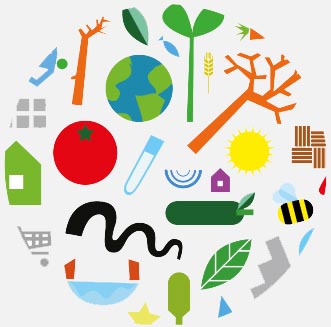
If you want to study food, there’s no better place to go than Italy and the Gustolab International Institute for Food Studies (GLi). As the first center of study and research in Italy dedicated to academic programs on the theme of Food Studies, GLi offers study abroad programs in food, media and nutrition. Check out their website for academic affiliations that may provide academic credit for Gustolab’s program. While you’re in Italy, enjoy some of the gelato shops featured in the first issue of Food+City magazine.
Startup Spotlight: 2017 Prize Finalists Keep Sparking Change
Whether they were newly hatched companies or enterprises needing a little help getting to the next level, competitors in the 2017 Food+City Challenge Prize are still going strong. We checked in with several finalists to hear about their progress.
Refrigeration is an invention of the supply chain. You can’t safely transport perishable food without it (unless you employ centuries-old preservation tactics like salt curing or pickling). But in the 100 years since refrigeration technology was invented, it hasn’t changed much, and it almost always requires electricity to work.
In many developing countries, electricity is not assured, and many people suffer from food insecurity because they can’t save or preserve enough food. Nearly half of the produce grown in Africa goes to waste before it reaches the consumer. Evaptainers, a Boston- and Morocco-based startup, has reimagined refrigeration technology and is bringing it to those who need it most.
Evaptainers’ refrigeration systems don’t run on electricity. Instead, they use sunlight and water. A collapsible box, small enough to sit on a countertop, cools food the same way humans cool themselves — through evapotranspiration. In other words, when water evaporates, cooling occurs.
This simple yet revolutionary technology has been garnering lots of attention and gaining traction. Following the capital infusion that came with winning the gold prize at the 2017 Food+City Challenge Prize, the company went on to win more awards: One award at the pitch competition Foodbytes! in San Francisco and a United Nations innovation award at the Seeds and Chips global summit in Milan. They have also been featured in Ag Funder News, The Boston Business Journal and TechCrunch. Their acceleration continues, with support from LAUNCH Food and funding from USAID, and they are finalizing the production of 400 prototypes slated for a field trial in Morocco this summer. A commercial launch is likely in 2018.
In addition to vital funding, a key result from their experience at Food+City’s Challenge Prize has been relationships with other startups.
“We met startups working on different aspects of food and food waste and have learned so much from our conversations with them about the arduous yet fruitful process of growing a small social impact business,” says chief strategy officer Serena Hollmeyer Taylor. Starting a company is often a struggle, as Prize competitors know. The opportunity to interact with others going through similar challenges, who can share knowledge and lessons learned, is a powerful outcome of Prize.
Evaptainers‘ electricity-free refrigeration device, made especially for use in developing countries where the electricity grid is unreliable. Using evapotranspiration, the box keeps produce and other products cool and prevents spoilage.
The Last Mile is a supply chain concept ripe for innovation. It is often the most expensive and complicated leg of the supply chain journey for food products. Narrow roads, city traffic and generally limited space contribute to the challenge of this final stage in the supply chain. Large, cumbersome trucks have traditionally been the go-to mule — and scapegoat — for these deliveries.
Nüwiel, a startup in Hamburg, Germany, has taken on that challenge. The company created electric-powered bicycle trailers specifically for last-mile delivery in urban settings. Their technology knows exactly when to accelerate, decelerate and brake to make last-mile delivery via bicycle more efficient and realistic. In addition to improving delivery efficiency and reducing road traffic, the bike trailers don’t contribute to the pesky urban problems of noise and air pollution.
After winning the bronze prize at the 2017 Food+City Challenge Prize, Nüwiel used the attention to accelerate their development.
“The Prize has certainly helped us a lot. We received significant media attention, getting mentioned not only in Germany but also in the U.S., U.K., Austria and Italy,” says co-founder Natalia Tomiyama.
In the months since Prize, Nüwiel has been accepted to a second stage at the biggest trans-European accelerator, Climate KIC; they’ve scheduled pilot projects with four different partners; attended South By Southwest; updated the design of the trailer; built a prototype; and were selected as to pitch and exhibit at the CUBE Tech Fair in Berlin. Last summer, they got out of the building to bike across Europe — from Hamburg to Italy, passing through the Netherlands, Belgium, France and Spain — and test the durability of their trailer.
The issue of food waste is under attack on multiple fronts. Entrepreneurs are coming up with new ways to use food waste, while public awareness campaigns aim to induce behavior change. Some progressive governments have even joined the battle. In France and Italy, laws ban food waste and remove barriers to food donation. This means that French supermarkets can’t throw out unsold produce. While well intentioned, the law leaves French groceries in a bind, with hundreds or thousands of pounds of food that can neither be sold nor thrown away.
Enter Phenix, a 2017 Food+City Challenge Prize finalist, which is addressing that logistical issue in their home country of France. Phenix’s digital platform connects grocery stores with nonprofit organizations whose mission is to feed the underprivileged and food insecure. They organize pick-ups and drop-offs and connect surplus supply with demand in real time, employing their fleet of vehicles to transport the food. Phenix is saving 20 tons of food before it hits landfills, while supplying their charity partners with 27,000 meals — every day.
Since Prize, Phenix was a finalist for the French American Entrepreneurship Award (FAEA). At its headquarters in Europe the company has continued to expand into new regions in France and by finding new segments of the market.
Phenix’s mission goes beyond food waste, which is why they have created a lab to incubate new projects around the circular economy, a system that challenges the more linear system of make-use-dispose by inventing ways of maximizing the value of a resource and regenerating it into another purpose when it reaches its functional end. So instead of trashing unused food, for instance, a circular economy maximizes value buy feeding it to people in need or, when that’s not possible, transform it into a different usable product such as nutrient-rich compost. A planned grocery store with shelves full of strictly unsold products will serve as an example of of this model.
Despite similarities in the ways France and the U.S. treat tax deductions for donations, operating in the U.S. can be difficult because of regulation around food expiration dates. “France has a very detailed and clear framework on what expiration dates mean and what can be donated,” says Sarah Lenoble, director of Phenix USA. “Whereas it is much less clear in the U.S., where there is no real regulation on expiration dates, and every state can have its own regulation.” Phenix is searching for the right partner to launch a pilot program in the U.S.
Phenix workers and partners pick up and recycle or reuse uneaten foods in France.
A worker from Phenix organizes supplies for reuse.
There’s a movement brewing that includes turning surplus bread into beer, aquafaba — aka chickpea cooking liquid — into vegan mayonnaise and food waste into new packaging and products. With all the attention food waste is getting, it makes sense that “upcycling,” the process of using a discarded material and creating a valuable product with it, is quickly gaining traction in the marketplace.
Rise Products takes unspent barley from microbreweries in Brooklyn and uses a proprietary process to turn it into flour, which can be used to make the same products as traditional wheat flour. And they’re working with well-known Brooklyn bakery Runner and Stone to develop recipes for all kinds of carby treats. The flavor of the flour Rise produces varies based on what type of beer was produced from the grain — flour from ales tastes nutty and light, while porters create a dark and rich flour that smells like chocolate.
By participating in events like the Zero Waste Food conference and the Make It in Brooklyn Pitch Contest, in which it was selected as a top-five finalist, Rise has firmly entrenched itself in the upcyling-to-beat-food-waste movement.
Since winning a silver award at the 2017 Food+City Challenge Prize, Rise has continued to gain momentum. They completed their time at the Food-X accelerator, gaining valuable mentorship and connections, and came away with a prototype for a production facility. From their spot in the Brooklyn Navy Yard as part of the 1776 Accelerator, Rise is working with the New York Economic Development Board to develop their own production plant.
Making the most of the Prize experience, they have stayed in touch with other startups from the competition, as well as their mentor, Ashley Shaffer of IDEO.
“Participating was an awesome experience for us, especially since we met our mentor, Ashley. We’ve kept in touch with her and with the other participants since then, even meeting some of them recently in Milan during the Seeds & Chips conference,” says COO Ashwin Goutham Gopi.
Bags of ready-to-use Rise Flour, made from spent brewery grains.
Some say the future of agriculture is in cities. As the world’s urban population continues to expand, it is easy to imagine how growing food in nontraditional areas, like skyscrapers and downtown warehouses, will benefit the food system. But while vertical farms, urban and rooftop gardens, and shipping container farms are all making progress in the area of urban farming, none has a foothold quite yet.
Distributed farming is the latest idea in this sector. The process enables a business or restaurant to re-route the last food mile and finish growing a product in the location where it will be consumed.
Brooklyn-based Smallhold is leading the charge for distributed farming. At the 2017 Food+City Challenge Prize, co-founders Andrew Carter and Adam Demartino pitched the idea of distributed farming through restaurant mini-farms that produce mushrooms. Today they’re cultivating several unusual varieties of mushrooms, from lion’s mane to yellow and pink oyster, and they plan to expand into other products like leafy greens soon. Top chefs and restaurants in New York are taking notice and endorsing the products.
Since Prize, three new restaurants have come become clients, welcoming Smallhold farms into their kitchens. Smallhold also sells their products directly to grocery stores and intends to use connections from Prize to pursue expansion in major retail stores.
“Food+City introduced us to some amazing stakeholders and thought leaders from places like Whole Food and Walmart, and we are extremely happy we attended,” Carter says. The company is gaining momentum in the tech circles as well. The team benefited from the mentorship and guidance of the TechStars Boston program, which wrapped up in May 2017. They have also seen their team grow 100 percent since Prize and have expanded their farm with a custom-built shipping container to grow more mushrooms.
FOOD + CITY CHALLENGE PRIZE
Innovation in food takes all forms, from making improvements to pallets to creating new avenues for delivering food or designing packaging that increases the shelf life of a food. Since 2015, we’ve hosted a challenge prize for startups in the food space that are challenging our notions of how the supply chain works. The 2018 Challenge Prize will be awarded on March 13, 2018. Be sure to visit foodandcity.org/prize to watch this year’s entrants become finalists and compete at SXSW Interactive 2018.
Market System: The Case of Early New York
Petitioned in 1786 by prominent residents of New York City’s far-flung Catharine Street neighborhood, the city’s legislative body, known then as the Common Council, approved the building of Catharine Market.
As was customary, the interested parties furnished the grounds and construction costs. In subsequent decades, local and municipal funds were used to expand the facilities. This blend of local initiative and government response created a successful public market to serve as a community anchor and supply the provisioning needs of a working-class district.
By the late 1810s, Catharine Market — located in lower Manhattan, east of where the Brooklyn Bridge now stands — became one of New York’s most abundant fresh food emporia. Its 47 butchers, 25-plus fishmongers, more than 61 regular farmers and dozens of hucksters and informal vendors, as well as the many grocers who settled nearby, supplied an estimated 25,000 people. Depending on the season and day of the week, 2,000 to 5,000 shoppers visited each day.
Catharine Market was part of a tightly regulated system, which mandated that fresh food — meat in particular — could be sold only at municipally managed and owned marketplaces. As the population exploded from 30,000 to 160,000 between 1790 and 1825, the city responded by expanding the system from six to 11 neighborhood markets.
The market infrastructure of New York in the Early Republic was a smart system in spatial terms: Its facilities reached all areas, ensuring access to supplies for all residents. No matter where one lived a market could be found within a 10-minute walk. This was a critical factor in managing an effective food distribution system when New Yorkers, lacking refrigeration, had to shop as often as twice per week in the winter and up to six times per week in the abundant summer months.
Negotiations between vendors, customers and municipal officials ensured that the markets’ capacity and volume of trade closely corresponded with their neighborhoods’ population size, indicating a match between supply and demand. Overall, the Early Republican model of public markets responded to local demands about opening new markets or upgrading existing ones, and it cost little. Through its collection of fees — excise taxes at the beginning and rents later — the system largely paid for itself.

MANHATTAN MARKET MULTIPLICATION
Between 1790 and 1825, as the population of Lower Manhattan grew, the public markets expanded — both in size and location — to meet the needs of New York residents. No matter where one lived a market could be found within a 10-minute walk, a critical factor in managing an effective food distribution system in the burgeoning urban center.
Critically, the market system provided the city’s main line of defense for food quality. It safeguarded the wholesomeness of supplies by penalizing those who sold decaying and spoiled provisions, while also instituting standards of cleanliness in the daily conditions and practice of food sales. For example, market clerks appointed by the city government enforced quality standards and fair trade practices at each location. Given their large assembly of independent vendors, public markets enabled customers to comparison-shop for price and quality. The vendors also exerted peer pressure, working with market clerks to punish violators of market laws and to uphold their market’s reputation. Moreover, the market butchers, the city’s most elite food purveyors, were artisan tradesmen who handled their vital, perishable goods with skill and care, ensuring high-quality products. Finally, given strict licensing policies and customers’ frequent purchases, neighborhood markets fostered repeated transactions and nurtured trust between buyers and sellers.
Beyond protecting public health, the system also set a baseline of equal access to food. Whether living in wealthier central districts or poorer outlying ones, New Yorkers provisioned their households under similar institutional settings. This continued even as the city grew. Developing a new neighborhood depended on extending this municipal service, funded in part from revenues earned at larger, centrally located markets.
The system was also efficient in not wasting supplies. Markets worked six days a week, from sunrise until early afternoon, except for Saturdays when they stayed open until late evening. On Sundays, only the fish stalls were open. Before refrigeration, the main constraint was perishability, so vendors — including butchers, hucksters and fishmongers who attended the markets daily, and regional farmers from rural New York and New Jersey who came less regularly — brought only as much merchandise as they expected to sell the same day.
Choice sales occurred early in the morning. By 10 a.m., the main business of the market was done. Then poor customers came to purchase cheaper, less desirable goods. At noon, secondary traders were allowed to join in, picking up market leftovers and peddling them at discounted prices after market hours and across the neighboring streets. Waste and byproducts from the key trade of butchering were recycled by an urban economy of noxious trades plied by tanneries and makers of soap, tallow and glue.
As with smart systems today, the success of the market system of early New York depended on the flow of information between key groups. The crux of the matter was the democratic process of petitioning and negotiation. All participants — residents, vendors, city officials — had to continuously (re)negotiate the location, size, layout, building material, basic rules and daily practice of the public markets. The process facilitated communication and coordination between neighborhood-based interests and citywide policies. Despite the messy politics (thanks to fragmented and competing interests), the system worked, because it was participatory, decentralized and coordinated to deliver workable compromises for everyone concerned.
For the model to continue to work, the Common Council had to adhere to its basic principles: that access to food was a public good, that fresh provisions should be sold at publicly managed markets instead of unregulated private shops, and that market facilities should be opened and expanded in response to local needs. Delays in infrastructural investments could undermine the welfare of customers and vendors, potentially jeopardizing the model’s integrity.
Indeed, from the 1830s, the system showed signs of malfunction. Demographic growth, a rising free-market ideology and weakened municipal commitment resulted in inadequate infrastructural expansion. First, unlicensed food sales outside of the municipal markets by street vendors and in private shops increased, chipping away from public market trade. As municipal spending priorities shifted, market construction came to a halt by 1837, leaving urbanizing northern districts without market facilities. In 1843, the city deregulated the food economy, allowing retailers to set up shops anywhere and without much regulatory oversight.
By mid-century, New York’s once-famous public markets were in tatters. Urbanization posed an enormous challenge — the population had skyrocketed to 500,000 by 1850. Yet instead of modernizing the market system, city officials turned to private enterprise to organize food access. Existing markets survived, but the earlier model of public market provisioning disintegrated.
In our own age of heightened debate about the role of government and private enterprise, it is worth recalling that American cities, New York especially, once depended on public market systems to feed their populations. By bringing the trade of life’s necessities under tight municipal regulation and oversight, and balancing the interests of customers and vendors, early New York managed a smart and successful market system that sustained the common good of access to food to all residents.
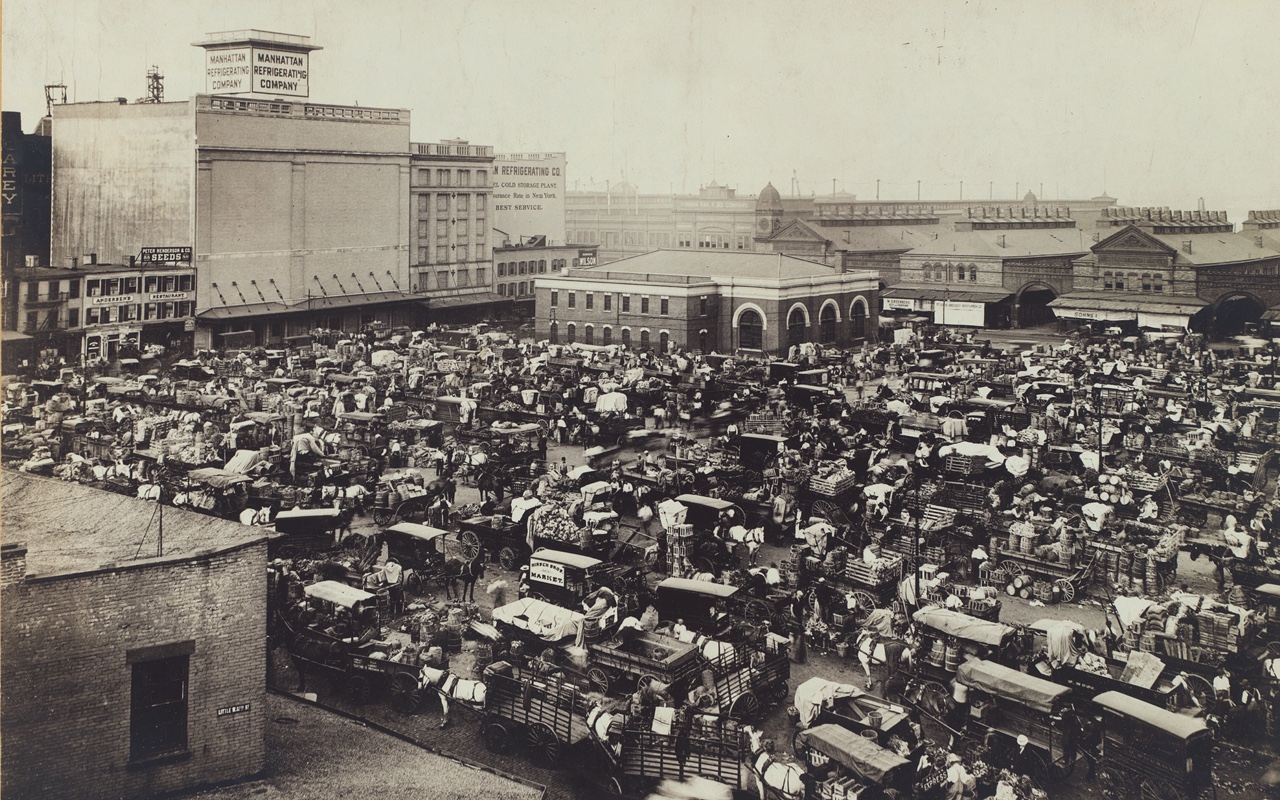
The Manhattan Refrigeration Company towers over the Gansevoort Market. The company, incorporated in 1894, operated nine cold storage warehouses. By 1906, a network of underground pipes connected the chilled warehouses, providing storage for shipments of perishable food that arrived on the steamers docked at the Chelsea and Gansevoort Piers nearby. “Mechanical refrigeration” was a new invention then. It situated the market as an area for food distribution–related businesses.
Now known as the Gansevoort Market Historic District, this space in today’s Meatpacking District was a food market throughout the 19th century. Near the Hudson River commercial waterfront, Gansevoort Market was ideally situated to transfer meat, dairy and produce from ships to the market and beyond. After the Civil War, the market space expanded and included Skelly & Fogarty’s Centennial Brewery on West 14th Street.
Buyers and sellers of regional produce and dairy also transacted their business there. In 1893, the New York Biscuit Company, which became Nabisco, added to the food-related business that crowded around the market space. You can imagine the combined aromas of manure and biscuits filling the streets.
The Gansevoort Market (1880 to 1928) has always been a mixed-use space, as you can see from this photograph taken in 1900. Low Italianate structures exist next to tall warehouses. Some of the metal canopies built for the transfer of meat into those warehouses still exist, as does some Belgian block paving. The Hudson River Railroad freight yards nearby provided transit for meat and other food items uptown and beyond Manhattan. Beginning in 1869, Cornelius Vanderbilt owned the rail line, along with the New York Central, and expanded the rail network to reach meatpackers in Chicago.
By 1880, other food markets in New York had fallen into disrepair, and vendors filling the streets had become a nuisance to pedestrians and horse-drawn vehicles. The city decided to create a new market space in the Gansevoort neighborhood to aggregate the commerce of farmers, buyers and sellers into one space. Originally developed for the sale of fruits and vegetables, Gansevoort eventually became the center of the meat market.
Horses transported most of the food from the piers and through the market. Buyers brought their wagons into the market, bringing filth and congestion with them. By 1900, almost 170,000 horses filled Manhattan’s streets. Over 250 slaughterhouses and meatpacking companies filled the Gansevoort Market neighborhood, adding to the stench and manure.
Special Dispensation: Getting Food from Vending Machines
More than a century ago, Horn & Hardart revolutionized American eating with the introduction of the Automat, an automated cafeteria where a nickel or two would buy a hot plate of macaroni and cheese or a chilled slice of lemon meringue pie.
It was a new concept of self-service dining: Customers would approach a wall of windowed compartments, insert a coin and take out a plate of freshly prepared food. Behind that wall, workers restocked the compartments with food prepared at an off-site commissary and shipped to as many as 40 Automats across New York City. There was a well-lit seating area where diners could enjoy their meals, along with Horn & Hardart’s famous hot coffee.
The first Automat — a precursor to both fast-food restaurants and vending machines — opened in 1902 in Philadelphia. But Automats quickly became associated with New York City, where citizens from all walks of life rubbed elbows over lunch and dinner amid the hustle and bustle of the Big Apple.
“The Automat offered really low prices, really good food, and clean and safe surroundings,” says food historian Laura Shapiro. Automats enjoyed their heyday through the 1930s but began to decline within 10 years, she explains. “After World War II, a lot of people moved to the suburbs, and people weren’t eating dinner in the city. The prices of everything went up, food went up, labor costs went up. They couldn’t keep up that trio of price, quality and nice surroundings.”
The last Automat closed in New York in 1991. But its spirit lives on in food vending machines that connect consumers with fast-food favorites, agricultural products, regional specialties and luxury and novelty foods.
Where the Automat was a revelation of the Industrial Revolution, today’s vending machines reflect the realities of a more mobile global populace whose access to food exists in disparate contexts. The foods distributed from contemporary iterations of the Automat aren’t meant to be enjoyed sitting at a table with real cutlery at traditional mealtimes. Instead, customers can access products at any hour.

Eggs are available in Japan from machines that resemble Automats.
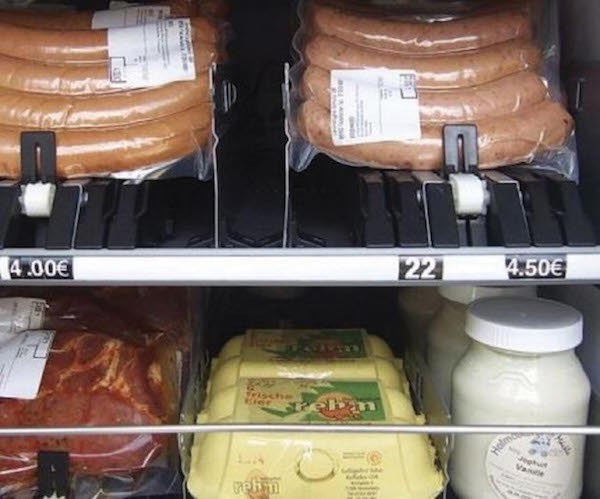
In Germany, consumers can access meats, cheeses and other deli items with a push of a button.
This can be a boon to rural consumers who don’t have 24-hour shops nearby, as well as to farmers seeking additional points of contact to distribute their products. You see this with egg vending machines in Japan, a pecan farm in Central Texas boasting a vending machine stocked with nuts and full-sized pecan pies, and the Applestone Meat Company in Accord, New York, which operates a 24/7 butcher shop called the Meat-O-Mat inside its meat-processing plant. The machines feature hormone- and antibiotic-free beef, pork and lamb in various cuts and are restocked every day.
In a sign that such machines could be a disruptive force in agriculture, a vending machine in Japan called Chef’s Farm can produce 60 heads of lettuce per day using 40-watt light bulbs. Designed for use in restaurants, the machine can grow up to five types of vegetables on multiple seed shelves in a temperature-controlled environment.
Vending machines also reflect regional foodways. Machines in China chill live hair crabs in a sort of suspended animation to ensure their freshness and preserve the flavor of the claws. Sake vending machines in Japan showcase rice from the Niigata prefecture. And machines in France dispense fresh-baked baguettes, Comté cheese and andouillete sausages.
These machines can even be instructive. Take the edible insect vending machine at the Museum of Natural Sciences in Houston. Patrons can snack on chocolate-covered bugs and chips made with ground cricket flour while learning about how other cultures incorporate insects into their diets.
For eaters who value convenience, there are plenty of options for mechanized grab-and-go food, from pizza in Italy to salads in jars in Chicago and piping-hot burgers and croquettes in Dutch FEBO shops. With walls of coin-operated windows displaying hot snacks, FEBO shops closely resemble the Automat and elicit similar feelings of nostalgia.
“I lived in a little town near den Haag when I was 10 or 11 years old,” says Julie Ann Holden of Austin, Texas. “I took the train to school every day and would frequently stop at the automat in Central Station for a Kaassoufflé [a kind of Dutch fried quesadilla].” There are even vending machines for luxury food items like caviar and champagne, perfectly chilled for immediate consumption at holiday parties or to give as presents to the most discriminating people on shoppers’ lists.
Making a roast? Swing by the Meat-O-Mat, a 24/7 vending machine butcher shop in Accord, New York. Click image to enlarge.
Fresh pecan pie is available at a Berdoll Pecan Candy & Gift Company in Cedar Creek, Texas.
These aren’t your standard chips. At the Museum of Natural Sciences in Houston, cricket-based snacks are part of the learning experience.
As in the Automats, these machines are replenished regularly, but few offer dining tables and chairs. Instead, the foods are meant to be consumed while in transit, whether while waiting for a flight in an airport terminal or walking the streets of Amsterdam. This extreme automation — such as at kiosks like EatZa in San Francisco and New York, where diners place orders for custom-made quinoa bowls via iPads and retrieve their freshly made meals from sterile compartments — amplifies how today’s vending machines speak to a different set of needs and desires for today’s consumer than the somewhat social Automat of yesteryear.
Gone are the days in which people sought out a full meal and maybe a little conversation at an Automat diner. But the dream of quick, easy access to all sorts of food is alive and well. At any hour of the day, People can get the food they want and need, from comfort food to hard-to-access ingredients. It’s not difficult to imagine that, along with meal-kit, grocery, and restaurant delivery services, contemporary vending machines could be instrumental in further disrupting the way our food comes to us.
 There’s going to be an Automat movie! Keep up with the film’s progress at automatmovie.com.
There’s going to be an Automat movie! Keep up with the film’s progress at automatmovie.com.
Food Movers: Staple or Delicacy, It’s in the Can
What do you need in a bomb shelter? Water, flashlights, blankets, a radio and, of course, canned food.
In the 1950s and early 1960s, many a family fallout shelter was stocked with canned food, including Multi-Purpose Food (MPF), a low-cost, shelf-stable, protein- and nutrient-rich food supplement manufactured by General Mills to be consumed “in case of emergency or disaster.” MPF, first conceived in the 1940s as a remedy for widespread hunger in postwar Europe, became a symbol of Cold War preparedness.
Since the mid-20th century, canned food has been a staple of the American diet. According to the Can Manufacturers Institute, the average American household has 24 cans of food in their pantry. And while the technology of canned food focuses on creating a shelf-stable product, the significance of canned food in food culture is anything but fixed.
For as long as people have moved food from its production location to market, packaging has played a key role, from product durability and trade efficiency to product differentiation and marketing. Canned food — durable, stackable and completely sealed — has transformed multiple links along the food supply chain since its first appearance nearly 250 years ago. Military campaigns, with their widely distributed provisioning requirements, have often led to innovations in the processing, packaging and distribution of food, particularly sources of protein. Credit goes to the Dutch Navy for being the first, in the late 18th century, to package hot beef covered with hot fat in tinned iron canisters.
The first to publish on the process of canning — preserving food in sealed containers — was Frenchman Nicolas Appert in 1809, writing about a technique using glass containers. Fellow Frenchman Phillipe de Girard devised a canning process using tin and collaborated with Englishman Peter Durand, who obtained a patent in 1810. Durand promptly sold the patent to the British company Donkin, Hall and Gamble, which provided meat in tinned wrought-iron cans for the British Army and Royal Navy.
CONTAINER MATTERS
Now a pantry staple, canned food was initially conceived for use beyond a conventional kitchen. Metal cans could function as a serving container and, in a pinch, be heated over open flame. The sealed and opaque quality of the container prevented oxygen and light from breaking down food and protected it from contamination, thereby extending the product’s shelf life. Advances in metallurgy eventually helped cans become the cost-effective, disposable food containers now commonplace in kitchens and pantries.

 MULTI-PURPOSE FOOD (MPF)
MULTI-PURPOSE FOOD (MPF)
a low-cost, shelf-stable, protein- and nutrient-rich product made by General Mills for use in “emergency or disaster.”
Cans are easily stacked and difficult to destroy, criteria that make them indispensible to military food supply chains. Contents can be cooked right inside the can, offering the prospect of a warm meal to anyone with access to a flame.
Three types of metals are now commonly used for cans. Tinplate is made by coating steel with a thin layer of tin, which is highly corrosion resistant. Cans made of aluminum — corrosion resistant and highly malleable — can be fabricated from two rather than three pieces. Electrolytic chromium-coated steel (ECCS, also known as tin-free steel), introduced in the 1960s to respond to fluctuations in the supply and cost of tin, has a higher melting point than tinplate but is less resistant to corrosion.
As the fabrication processes for rolling, shaping, soldering and welding metal improved, so did cans. They became thinner and more durable. Sealing methods evolved, too — some early cans were soldered closed with lead. A firmer understanding of microorganisms also has changed canning practices. Botulism from commercially produced canned food is now a rarity. Sustained high heat in processing kills spores of the Clostridium botulinum bacterium, which can otherwise survive in low-oxygen environments.
Opening metal cans initially required brute force and assumed the availability of heavy tools. The first metal can openers weren’t patented until the 1850s — some 50 years after the container itself came into use. Subsequently, market expansion led to the engineering of new opening strategies, which in turn made cans increasingly popular. Key-wind opening systems, which include a key with which to pull away a strip of metal (usually on the top of a can or tin), and later, easy-open ring tabs, made for portable, pocket-sized, accessory-free foodstuffs.
Like other products now considered relatively common, such as chocolate, 19th-century canned food took on special significance for a growing middle class. Take, for instance, ready-to-eat seafood “delicacies.” Comparable to predecessors such as salt cod and pickled herring, seafood cooked (or smoked) and packed in cans or tins offered a way to expand the market for seafood harvested in a specific location.
Canned sardines are but one example of a product that emerged as a delicacy and then became a crucial wartime ration during the two world wars. At its peak in 1939, the central California fishery associated with Cannery Row in Monterey landed 460,000 tons of sardines for the year. Today, canned sardines and anchovies, as well as other canned seafood products, cover a broad market range, from in-house brands for major supermarket chains to restaurants offering carefully selected tinned fish delicacies.

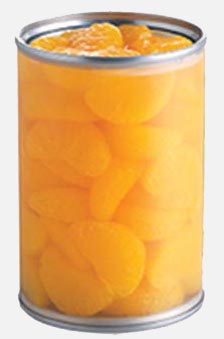
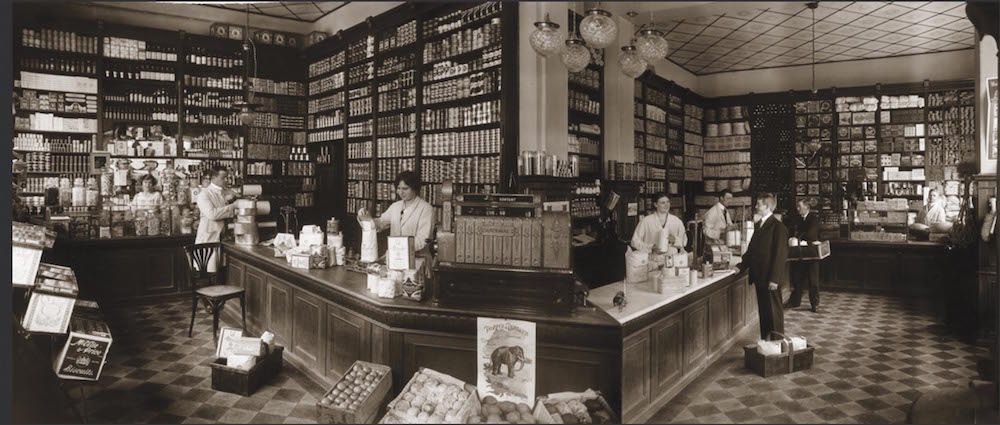
Before canned food, groceries were full-service stores, where grocers measured and gathered your order together. Prepackaged cans, with labels as built-in advertising, enabled consumers to choose and pick up goods themselves.
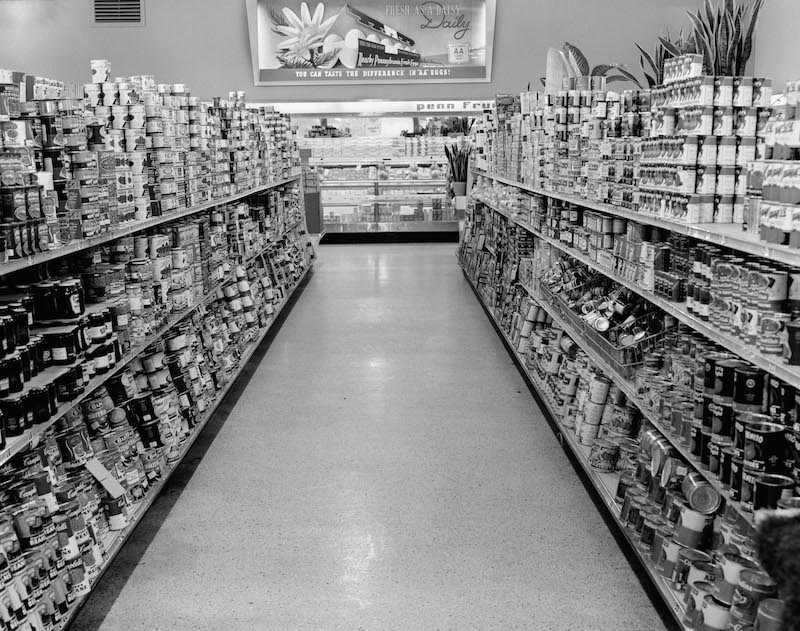
In 1917, the Piggly Wiggly market chain opened the first self-service grocery in Memphis, moving cans out from behind the counter into displays, and then shelves. This image is from the mid-1950s.
THE ART OF THE SELL
Food science and packaging technology created canned food, but grocers introduced it to the American household. Canned food transformed the role of grocers as well as the design of stores. As a prepackaged good of consistent weight, with labels as built-in advertising, canned food could practically sell itself. In 1917, the Piggly Wiggly market chain opened the first self-service grocery in Memphis, moving cans out from behind the counter into displays, and then shelves, where consumers could pick up cans, read labels and put them into carts. After World War II, the housing boom, the expansion of supermarkets, the practice of driving to shop for groceries, and the greater number of women working outside the home all helped normalize canned food as part of the modern American diet.
Artful labeling and package design is an integral part of branding, particularly for products sold in opaque containers. The rounded corners of rectangular metal tins of fish are practical, as well as emblematic of product contents. Streamlined form and graphic design evoke a sense of efficiency. Many original label motifs persist as recognizable brands today. In 1962, Andy Warhol painted the first of his Campbell’s cans series — 32 paintings that represent each offering in the Campbell’s brand — elevating the Campbell’s soup can into Pop Art.

The most money ever paid for a can of soup was $11.7 million for Andy Warhol’s Small Tom Campbell Soup Can (Torn Pepper Pot), one of 32 paintings in his soup can series, first exhibited in 1962.
NUTRITION: IS IT IN THE CAN?
In 1990, Congress passed the Nutrition Labeling and Education Act (NLEA) requiring all packaged food to list nutritional information relative to Recommended Dietary Allowances (RDA). For the first time, consumers could compare the nutritional content of foods before buying them. Since then, processing improvements have enabled the use of fewer preservatives and increased nutrient retention. Nutrition research has also been important, for instance, in clarifying that canned fruits and vegetables do not make up a major source of sodium in the American adult diet.
For many people, canned food is a more nutritious choice than other food options, especially when accounting for seasonal availability. New packaging technologies — such as bisphenol A (BPA)–free see-through plastic cans now coming on the market — prompt the question: Does being able to see what’s in the can ensure that it is fresh, flavorful and healthy? The market will decide.
From newfangled packaging for military rations to convenience-food wonder for postwar households, the simple can ensured that foods grown or produced in one location could safely be consumed many hundreds of miles away. And while its status may have ebbed and flowed — from nifty new technology to cheap holder of less-than-fresh ingredients, and back to retro packaging of exotic delicacies — canned food remains a staple for pantries and fallout shelters the world over.
 Need a refresher on how to play Kick the Can? Check out this helpful video.
Need a refresher on how to play Kick the Can? Check out this helpful video.
Food Movers: Robots as Farmhands
Every day there’s a new story about robot bartenders on Carnival Cruise Lines or Domino’s Pizza delivery pods trolling the streets in Europe. For now these are mainly stunt-bots, more public relations than practical. Yet there are already many kinds of robots at work in our existing food supply, albeit models slightly more mundane.
Whether robots (and their engineers) will totally replace regular workers is still up for grabs, but in truth bots will soon be everywhere in the supply chain: Packing and warehousing, farming, food processing and, yes, even hamburger flipping and order taking.
This is the first in a series on food bots, starting with a deeper dive into three cases where bots have taken over some of the dreariest jobs in mass production — repetitive, physically stressful, low-paying, dead-end, sometimes dangerous — that many humans would rather not do.
BOT
a device or piece of software that can execute commands or perform routine tasks either automatically or with minimal human intervention.
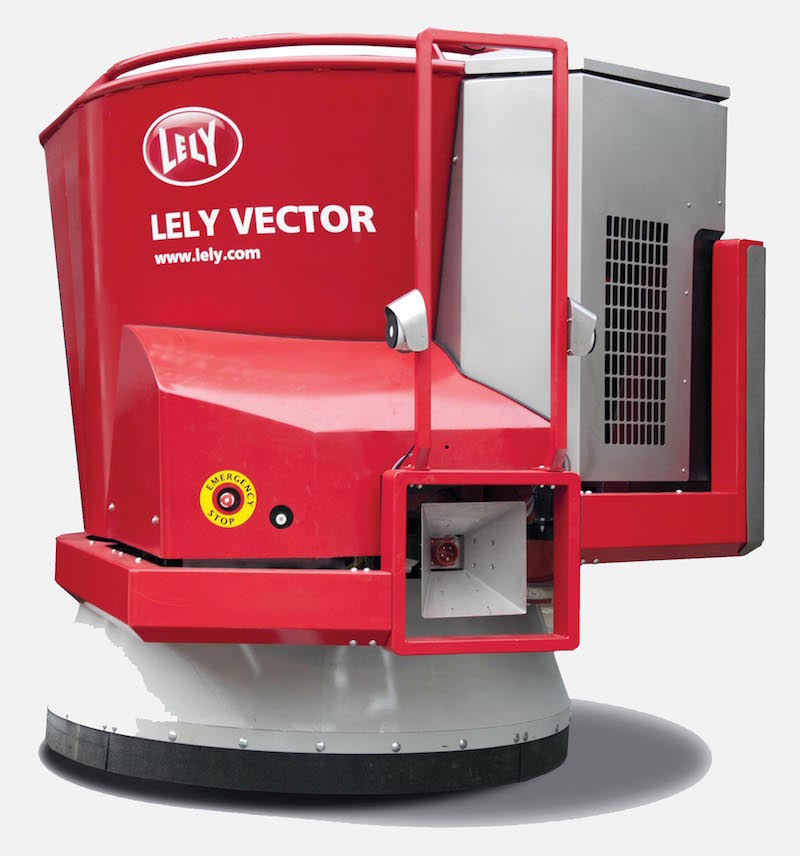
THE FEED BOT
A Dutch dairy technology company called Lely makes Vector, a battery-powered feed bot that looks like a slow-moving escapee from the teacup ride at a state fair. Its speed belies its benefit to a working dairy barn: Consider that a cow can eat for six hours per day, and dairies feed hundreds of cows. Vector uses lasers, ultrasound sensors and metal guides to keep on track as it slowly scoots around, distributing feed, and then plugs into a docking station to recharge during downtime. Vector re-ups with silage — aka the mix of grasses, corn, sorghum and other grains dairy cows need for good-tasting milk — using a laser-assisted claw that serves up the proper proportions. (Watch the Vector do its job.)
Inside the robot’s 600-kilogram basin is a mixer arm, which automatically starts to blend different types of food together as soon as they hit the bowl. The system can prepare different formulas based on which groups of cows Vector needs to feed.
The constant spinning of the robot’s “skirt” brushes feed up along the open gates of a cattle barn, where the cows can easily get to it. The robot glides around until its laser finds a spot low or empty of feed; a sliding door rises up and feed settles out.
THE PICK AND PLACE BOT
One of the more common robotic technologies used in the food industry is “pick and place,” which is exactly what it sounds like. These robots move things from one place to another with lightning-fast speed. They’re also making basic decisions, thanks to digital cameras and other tools that let the robots “see.” As things come down a conveyor belt, for example, robots rotate and place items into the proper packages, or — with the addition of special tools — score bread loaves, decorate cakes and swish sauce across pizzas (watch it sauce pizza). Many work something like ABB Robotics’ IRB 360 FlexPicker, which hangs from above and look like a giant daddy longlegs. Skinny metal arms triangulate to pack cookies, beers, cherry tomatoes, beef jerky, pancakes or — with some heavy-duty models — even boxes or pallets.
The bot “sees” using mounted cameras connected through network software, which means it can find objects when they’re overlapping and in random positions. The “hands” can be suction pads, “fingers” or special tools for slicing or spreading.
Pick-and-place robots handle more than 15 pounds and can relocate things up to five feet, making their moves in less than a second.
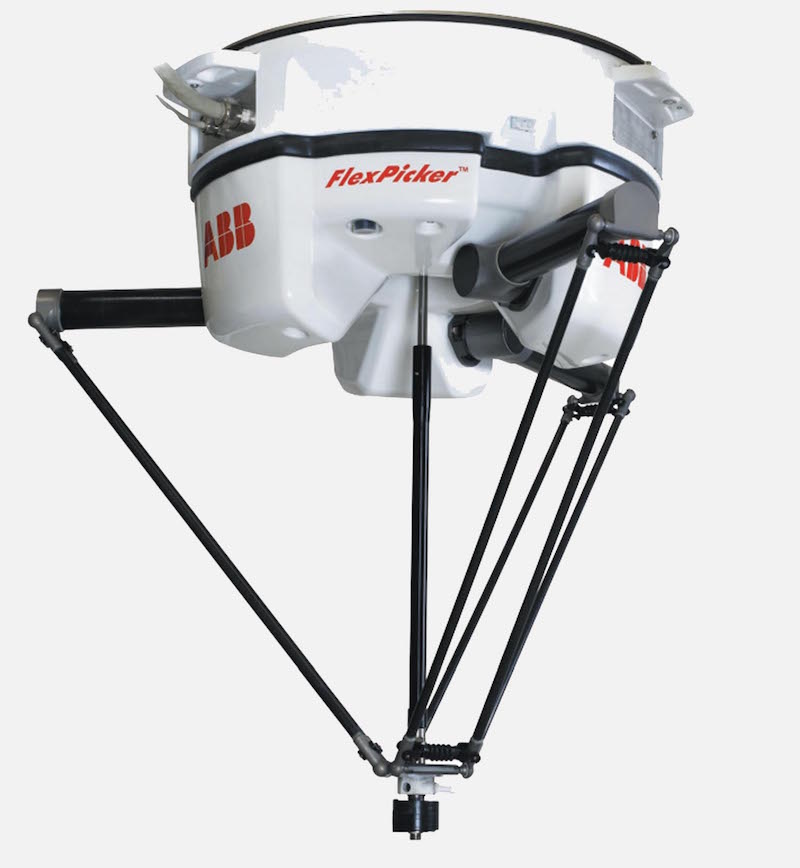

THE SEE AND THEN DO BOT
More advanced robots work by combining the sensor technology used above — cameras, 3-D mapping and digital “vision” — to execute more complex actions. A handful of companies make robot systems that can process meat, for example, using 3-D scanners or X-rays to map the bone placement of pork sides or lamb carcasses. The robot arms — its fingers would be the knives — react within seconds to make the right cuts. More mobile versions of these systems are also applied to farming: In California, Blue River Technology’s LettuceBot uses computer vision to see fields as it crawls them, perfectly thinning lettuce starts in vast fields (watch it work). Other farmbots include Hortibot, which can see weeds and treat them, a RowBot made for dense cornfields and an Agrobot that travels down a raised bed of strawberries scanning each plant and harvesting only the ripe, red fruits.
The LettuceBot attaches to an ordinary tractor, then uses camera systems to see plants in 3-D as they roll by. It picks out which to thin and which to keep in less than a second. Blue River Technology uses the term “see and spray,” as in the bot sees the plants in a field and precisely sprays only the lettuce plants to be thinned. The LettuceBot processes thousands of plants per minute with an accuracy of a quarter of an inch, says the company. Most people rent them by the acre for the vast lettuce farms of California and Arizona.
Your Food: Up for Grabs?
Don’t panic, but your food is about to appear on your plate in surprising and unexpected ways.
More than ever, food delivery is becoming faster, fresher and more personal. Our food supply chain looks transitory as it shifts to accommodate changes in where our food comes from and where it’s going. The traditional food movers — large logistics, distribution and transportation companies — are now in the company of small, scrappy, food delivery services.
These changes are the result of the aggregation of big data and consumers who are willing to forego the shopping experience for the shipping experience. Both the data and the consumers who create that data have come together to transform our food supply chain. For the better, we think. Just about everything is up for grabs. Farmers look more like engineers, food is fresher and those who deliver our food are coming from unexpected directions.
This issue, our third, takes a close look at some of the shifts from imagination to reality. Food waste is a top concern now as consumers are either being shamed by the amount of food left on their plates or rallied to find new ways to use food waste. If we accept the fact that we can’t eliminate the waste in our supply chain, we can turn our attention to ways we can put it to use, either as a source of energy or repurposed as new food or non-food products. Ari LeVaux takes us to the land of biodigesters and ugly fruit jam. Jen Wong offers surprising ways in which food waste reappears in new shapes and forms, such as coconut shell tiles.
When two Norwegian shipping firms, Yarrao and Kongsberg Gruppe, announced their electric, driverless ships, the prospect of a global food supply chain that doesn’t require bunker fuel (the lowest grade of fossil fuel) suggests we may soon see more sustainable ways to ship food around the world. Providing context for this new model for shipping food is our story about canals and barges, the original slow movers of food along inland waterways. David Leftwich shares his story of barges that travel up and down the Mississippi in this moment of battery-powered cargo. And Jeannette Vaught’s history of cattle logistics reminds us that the tracks of our food have been visible on our landscape for centuries.
The Norwegian vessels also promise robot loading and unloading of cargo, one of the many human displacements occurring within our food supply chain. Rachel Wharton’s story about robots and Melanie Haupt’s images of vending machines that serve us our food suggest that the experience of eating may lose its deeply human connection.
To give us some perspective of how we got here, Laurie Zapalac explains how a mundane container of food was invented because of a challenge prize offered by Napoleon in the late 19th century. Cans today are smarter, carrying much more than food. They carry the history of their contents, and some contain sensors for tracking and tracing a can throughout the supply chain. Zapalac sheds light on how we’re getting a better view of a more transparent food supply chain.
Jane Black’s story about urban agriculture tells us more about the complexities and questions that accompany this new way to feed cities. And if you thought urban agriculture was the way to create Smart Cities, read Gergely Baics’ story about a 19th-century smart city. Cory Leahy’s deconstruction of wartime cookbooks on ration use brings new meaning to ways we might attack the food waste problem.
We do our part to help change how we feed our cities through our annual Food+City Challenge Prize. Each year we see more and more startups that are finding ways to improve food logistics. See our description of what these startups are doing to get food faster and fresher to our cities. And finally, check out our recommendations for cool books and nerdy websites.

Food Movers: Lock, Stock and Barges
Growing up playing in the alluvial soil of farms along the Mississippi River, I gleaned a vague notion of the importance of barges. These flat-bottomed, square-ended boats — whether towed, pushed or self-propelled — are used primarily to haul cargo. My granddad owned a small red and white one that was rusty around the edges. He used it to transport tractors, farm supplies and crops back and forth from his island farm in the Mississippi River.
As a youngster, I often visited Lock & Dam 24 in Clarksville, Missouri, to watch the low-slung hopper barges loaded with Midwestern grain travel through the locks with the help of towboats. Contrary to their name, the towboats gently push — rather than pull — the barges into the lock, a 110-foot-wide and 600-foot-long concrete chamber built between the riverbank and the dam. Locks, along with dams, create a step-like system that helps vessels navigate the changing elevations of the river.
There are many types of barges: A dredging barge is basically a clamshell bucket excavator on a floating platform. In China’s Grand Canal, self-propelled barges sport a cabin and motor at the back. Decades ago, sail-powered Thames barges plied England’s coasts and rivers. Barges are even used as ocean-going landing pads for SpaceX’s Falcon 9 rockets.
But the hopper barge that has become integral to the modern food system, especially in the United States, is a 200-foot-long, 35-foot-wide, 13-foot-deep boat with a large fiberglass cover. These barges are perfect for transporting bulk, dry cargo like grain or coal. They have no engines. Instead, they are designed to be lashed together with a web of steel cables into groups of two to 70 barges, known as tows, and pushed by a single towboat.
Towboats vary in size depending on how many barges they will be pushing and how and where they will be operating. Most are diesel-fueled and include a pilothouse that rises three to four stories above the deck, a kitchen, and quarters that house a crew of eight to 10 people. The average crew includes a captain and a pilot who alternate six-hour shifts in the pilothouse, a cook, a mate, four deckhands and an engineer. Crews serve 28-day stints, usually taking a four-week break before returning to the river.
LOCK AND LOAD
Hopper barges haul corn, soy, wheat, fertilizer and other bulk dry goods, primarily on the Mississippi, Ohio and Illinois Rivers. But they don’t travel alone. The standard tow on the Upper Mississippi is 15 barges, or five rows of three barges abreast, a bundled mass of vehicles that’s too long to go through the lock at one time.
The solution? Unbundle. Once in the lock, the first three rows of barges are disconnected. After the gates close on a southbound tow, the emptying valve under the lock opens. The water and thousands of tons of metal and cargo descend 15 feet. The process repeats for the towboat and remaining barges.
Each of those 15 barges can carry between 1,500 and 1,750 tons of dry cargo — enough wheat to bake 2.5 million loaves of bread, or one loaf for every person in Houston. A standard 15-barge tow can haul enough wheat to fill 240 railcars or 1,050 trucks, enough to provide a loaf of bread for every resident of New York, New Jersey and Virginia combined. But the wheat on the barges steaming down the Mississippi is likely bound for Europe or Asia, rather than New York.
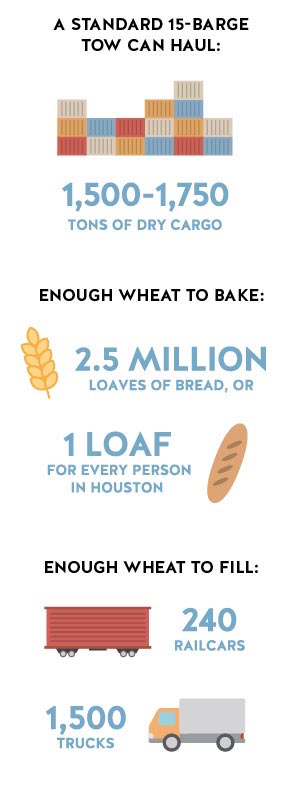
BARGES BY THE NUMBERS
Each barge can carry between 1,500 and 1,750 tons of dry cargo — enough wheat to bake 2.5 million loaves of bread, or one loaf for every person in Houston. A standard 15-barge tow can haul enough wheat to fill 240 railcars or 1,050 trucks, enough to provide a loaf of bread for every resident of New York, New Jersey and Virginia combined.
Examples of tow configurations, pushed by a single. A 15-barge tow is standard on the Lower Mississippi River. Click the image to enlarge.
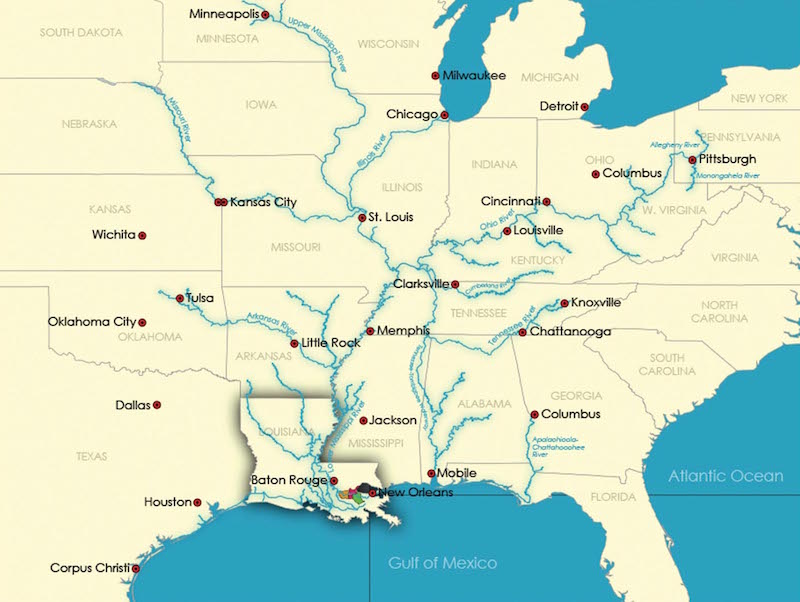
The Western River System, including the Mississippi, Ohio and Illinois Rivers, has been the main conduit for Midwestern crops to travel to international ports in the Gulf of Mexico for export.
INTERNATIONAL GRAINS
Most of the grain grown and transported in the U.S. is used domestically. Of the 480,799,000 tons of grain shipped in the U.S. in 2013, some 114,843,000 tons — 24 percent — was exported, while the remaining 365,956,000 tons remained in the States. Since 1978, the amount of grain transported in the U.S. has steadily increased from about 250 million tons in 1978 to a peak of just over 500 million tons in 2010. But the amount exported has remained steady. In 1978, domestic and export grain was almost evenly split at 125 million tons each. Increased domestic use has been driven by several factors including a growing U.S. population, ethanol producers’ greater demand for corn, and more consumption of grain-fed livestock. At the same time, demand for U.S. exports has been held in check by increased grain production in Brazil, Russia, Canada and the European Union.
In 2013, barges only transported 1 percent of grain used domestically, while trains transported 21 percent and trucks hauled the remaining 78 percent. However, barges shipped 45 percent of U.S. grain bound for foreign markets. Though 2013 marked one of the slower years for grain exports, since 1998 grain exports have remained fairly steady, which is helping keep barge traffic afloat.
Though barges emit fewer greenhouse gases and are more fuel efficient than trains or trucks — barges can move a ton of cargo 647 miles per gallon of fuel while that same gallon will move a ton of cargo 477 miles via train and only 145 miles by truck — barges are confined to waterways wide, deep and regulated enough to handle large commercial tows. These geographical restrictions limit barges’ usefulness in transporting grain to domestic markets. However, it makes them ideal for moving large amounts of grain from Midwestern farms to international ports in Baton Rouge and New Orleans. For years, barges cruising the Western River System (the Mississippi, Illinois and Ohio Rivers) have made it possible for Midwestern farmers like my granddad to help feed the world and make a decent living, most years.
Barges: A Long Legacy
The often-unseen modern barge is a key ingredient of our modern food system. But barges have been a foundational element of modern society for hundreds of years. In the 1400s, an estimated 12,000 grain barges traveled China’s 1,104-mile Grand Canal, which at that time was nearly 1,000 years old.

Copyright: © Vincent Ko Hon Chiu. Photo by: Vincent Ko Hon Chiu http://whc.unesco.org/en/documents/133526
Those barges helped transform China into one of the world’s leading civilizations, transporting the rice, wheat, produce, salt and vinegar that fed the empire while fostering cultural exchange between China’s regional styles of cooking.
In 1666, French King Louis XIV authorized work to begin on the Canal du Midi, a waterway designed to transport wheat from Toulouse to the Mediterranean. As was the case with many early canals, men or pack animals towed the barges — which is why the boats that now push barges are called towboats — loaded with wine and wheat that enriched the merchants of southern France. This canal project helped inspire a boom in 18th-century British canal building, an endeavor that became the backbone of the industrial revolution.

Old map of the Canal du Midi in Southern France.
Across the Atlantic, the young American republic, hemmed in by the Appalachians, needed to find routes westward. Seeing an opportunity, New York capitalized on a gap in the mountains, created by the Mohawk River, and in 1817 began construction on the 363-mile Erie Canal. After the canal opened in 1825, barges were towed by pack animals that trod packed-dirt paths lining the canal’s shore. These barges carried both cargo bound for New York City and passengers heading west — in less than half the time it took to travel the route by wagon and at a tenth of the cost. These efficiencies revolutionized the U.S., transforming New York City into the nation’s leading center of commerce and manufacturing.
The canal made New York the second port, after New Orleans, with an all-water route to the young nation’s interior, opening the West to the eastern seaboard. People and goods manufactured in the East could easily, by early 19th-century standards, travel to the Midwest and start settling there. By 1836, settlers shipped 369,000 barrels of grain back East. Some of their descendants would eventually use barges on the Mississippi to transport grain and other goods to international markets.
Barges may be humble flat-bottomed boats, but as a kid watching them steam up and down the Mississippi I was right to be impressed. They not only helped my granddad manage one of his farms but also helped him and other U.S. farmers transport their crops to countries around the world. Barges have for centuries provided the transportation infrastructure for feeding millions and nurturing modern civilization.
From Hoof to Highway
Since the Civil War, beef has been central to Texas’ agricultural economy. The movement of all those cattle, from ranch to slaughterhouse, shaped the state’s modern highway system — literally.
Fourteen-year-old Frank King, a cattle drover in the late 19th century, was responsible for moving cattle through Texas and points north. Back then, men and boys on horseback rode through the fields, plains and hills of what’s now the center of the country, forming trails that remained long after the last of the cattle drives — trails that became some of this country’s most well-traveled highways.
Conceptions of Texas, for natives and non-Texans alike, often begin with sepia-tinged images of cattle drives, visions of sprawling ranches and the smoky smell of slow-cooked beef briskets. Since the Civil War, beef has steadfastly remained at the center of Texas culture and its agricultural economy. But while beef is no longer the state’s largest export product, the paths taken by beef cattle to go from range to market had a lasting impact on paths developed for human travel. The legacies of moving cattle to market on the hoof still shape how people, animals and products move into and around Texas.
“I was only fourteen, but had been learnin’ the work on the Bill Chisholm Ranch on the Canadian River in the Chickasaw Nation,” recalled a much-older Frank King in an oral history recorded in the 1930s and housed at the Dolph Briscoe Center for American History. As he recounted the mechanization of his “Old West” way of life, he noted the stark changes he’d seen in the previous 60 years. “The young fellers can’t vision the broad Plains, now covered with wheat fields” — in the 1930s when he recorded these memories — “…as once bein’ the home of millions of buffalo grazin’ and runnin’ across ’em, lookin’ like great big black waves as they moved from North to South, changin’ with the seasons.”
Managing a herd of hundreds or even thousands of animals required a kind of choreography. A team of drovers, as cowboys were more accurately known, spread out around the herd, keeping strays from wandering too far off course. They were on the hoof together for weeks at a time, covering distances of hundreds of miles between ranch and beef processor. Image from “Cattle Drive,” from Flint Hills Cowboys, Jim Hoy. Click on the image to enlarge.
Erwin E. Smith (1886-1947); A coyote trapped at the carcass of a range critter. Three Circles Ranch, Texas.; 1906; nitrate negative; Amon Carter Museum of American Art, Fort Worth, TX; LC.S59.215
Erwin E. Smith (1886-1947); The loading yards at the railroad station; one of the first shipping points to be established on the Texas plains. Lubbock, Texas.; 1910; Nitrate negative; Erwin E. Smith Collection of the Library of Congress on Deposit at the Amon Carter Museum of American Art, Fort Worth, Texas; LC.S59.585
Today, those waves moving along the north-south corridors of Texas are made of motor vehicles. Interstate 35 is the main road that runs north and south through Texas, forming a highway spine from Mexico through the American heartland all the way north to Lake Superior. Yet the very things that make it modern — its expanses of pavement and high speeds — also obscure the unique history of this strip of ground in Texas. When we drive up I-35 in Texas today, we are following a movement pattern carved out by bovine hooves — first by wild bison, as King remembered, and then by ranched cattle. That’s hard to imagine now, as the concrete hums under the tires and the landscape whizzes by in a blur.
Unbeknownst to most motorists today, including truckers moving cattle through various points of the beef commodity chain, Interstate 35 overlays the same path taken by cattle drovers, the first men on horseback to guide Texas cattle to northern markets in the 19th century. Men like Frank King. “When I started to ridin’ them North Texas ranges, barbed wire hadn’t been invented,” he remembered. “There was nothin’ to hold cows together but cowboys and hosses.”
Topography helped, too. King and his fellow drovers followed existing wild bison trails that hugged the geological guide of the Balcones Escarpment. The drovers were hired to walk Texas cattle to railroad depots in Missouri and Kansas, but in the early days there was no set route. The cattle themselves found and followed these tamped-down bison trails. “It was a wonderful sight to see herds of them lanky old cattle strung out along the trail. Folks didn’t drive cattle in them days,” he noted. “They moved ’em, lettin’ ’em graze along in the right direction ’til they reached the northern markets or grazin’ grounds.” Even for someone who was there, the past seemed very far away.

 Chisholm Trail
Chisholm Trail
The trail known as the Chisholm Trail guided Texas cattle northward through Indian Territory, no matter where the cattle came from in Texas. It was first marked out by a Cherokee man named Jesse Chisholm to provide safe passage for cattle moving north from the Red River to Abilene. Later, the Chisholm Trail came to also include a route from San Antonio to the Red River, and today the route is mostly overlaid by Texas Highway 81.
FROM TRAILS TO RAILS TO ROADS
In contrast to the well-established east-west corridor known as the Old San Antonio Road — the Spanish Texas version of El Camino Real — north/south routes in Texas were inhospitable to Anglo settler colonists in the 1820s moving into what is now Texas. The east-west routes of the Old San Antonio Road were a series of trails blazed in the late 17th century to ferry people, animals and commodities from Louisiana deep into the Spanish Empire. But the route north from San Antonio remained remarkably unchanged, even in the days of the Texas Republic and Texas’ entry into the United States in 1845, and was used almost exclusively by bison and indigenous nations. More passable long-distance routes beyond El Camino Real didn’t emerge until after the Civil War.
This timing had much to do with the post–Civil War militarization of the western plains against indigenous people, which opened up territories to settler colonists. At this point, any new route across Texas was designed to funnel resources toward burgeoning markets. Yet even in this moment of rapid modernization, the most enduring route from southern to northern Texas was formed by bovine hooves with a twist: they were beeves, not bison.
From the 1840s to the 1890s, cattle moved northward from Mexico and Texas on the hoof, grazing on lush grassland prairies during autumn before boarding a train in winter to feed the meat demands of industrial cities to the east. The Shawnee Trail, an indigenous and bison-maintained trailway that prefigured I-35, was the first popular route to bring Texas cattle to northern markets in the 1840s and 1850s because it connected with rail and port systems in Missouri.
King rode the trails during the rise of ranching in the 1870s. As Anglo settlers took over more and more indigenous land, “there was no fences at first and cattle herds was located on ranges and kept there by line riders and sign riders,” effectively grazing within the living fences made by King and his fellow hired hands.
The financial stakes were high for this fast-growing industry. After the Civil War, Texas cattle numbered in the millions, and postwar cattle capitalists eagerly resumed the pre-war Shawnee Trail route in 1866. As railroads crept further west, cattle entrepreneur Joseph McCoy opened a depot in Abilene, Kansas. This reorientation to a more western terminus inaugurated the famed Chisholm Trail, guiding Texas cattle north straight through Oklahoma Indian Territory into Kansas. The Texas State Historical Association estimates that more than 1.5 million cattle tamped down the Chisholm Trail between 1866 and 1873; other sources estimate that more than 5 million cattle wound up in Kansas over the life of the trail into the 1890s. The powerful trail-making capabilities of thousands upon thousands of bovine hooves made parts of Texas navigable by settlers for the first time.
When cattle arrived in Kansas, they rested and grazed on the tallgrass prairie before loading up on trains. The locations of the northern railheads were ideally situated near grasslands to fatten cattle before their final journey to slaughter — a circumstance that kept cattle traveling out of Texas by hoof even after railways had been well established in the state. Indeed, Texas rails were plentiful in the era of on-the-hoof mobility. Rail access across eastern Texas flourished between 1870 and 1880, when the number of rail miles more than quadrupled, from 700 to 3,293. Much of this was passenger rail that connected towns to cities.
Connecting goods to markets was harder. In the 1870s, the explosion of Texas railways did not immediately affect cattle drives, in part because freight fees were far higher than drovers’ costs and most railroads were built in the eastern part of the state. This left the Chisholm Trail mostly free of rail crossings. The early Texas rail system was simply not designed to move beef north, but rather to move profitable cotton crops east and move people from town to town. Rails revolutionized human mobility across Texas, enabling many Texans to break free from their small towns when roads were few and far between. But as rails expanded east and west, cattle still cut the most important northward routes.
Texas Traffic: Cattle to Cars
The routes cattle drovers took laid the foundation for many of Texas’ modern highways. The ground, tamped down by decades of cattle drives — and millennia of migrating bison — gave way to roads in the middle of the 20th century. Interstate 35, the main north-south artery that bisects the state, follows the old Shawnee Trail. Click on the image to enlarge.

CATTLE TRAILS BY THE NUMBERS
The Texas State Historical Association estimates that more than 1.5 million cattle tamped down the Chisholm Trail between 1866 and 1873; other sources estimate that more than 5 million cattle wound up in Kansas over the life of the trail into the 1890s.
RAILS AND FENCES
In the 1880s, barbed wire began to replace men on horseback as the preferred method for keeping ranch cattle contained, and rails expanded westward into the state. By 1890, rails and fences blocked the Chisholm Trail, helping to bring the cattle drive era to an end. In 1900, the movement of cattle across Texas was no longer a long grazing walk, but rather a journey of multiple short segments. For example, North Texas cattle raisers would drive their cattle a short distance to Fort Worth on the hoof. Then, a major meatpacker like Swift and Co. would buy cattle from the Fort Worth stockyards and put them on a train to one of the 20 feed yards they ran in Texas. The last stop on the trail was the slaughterhouse, where the meat was packed and shipped by refrigerated rail car to markets across the nation.
Cattlemen no longer had to bear financial responsibility for their animals during the long walk northward. For men like King, this spelled the end of a way of life. “The younger generation will never have the thrills and experiences of the old-time fellers before, during, and immediately after the wire fence days, when a cowhand didn’t have anything to do but ride them side-wheel ponies after cows.” Cowhands still guided cattle a short distance to local rail yards, but for half a century — from about 1900 to after World War II — the grand and ancient bovine trails through Texas were barely used at all.
The Shawnee Trail was reborn as Interstate 35 through Texas in the early 1960s. It joined a 24,000-mile network of rural roads in Texas that was paved between 1945 and 1955. Turning the Shawnee trail into Interstate 35 opened this route back up to cattle, but it also heralded the end of cattle walking across Texas. By 1965, flatbed semitrailers brought cattle north from their home ranches — whether to be fed in a Panhandle lot, to graze on the Tallgrass Hills of Kansas or to be distributed as meat products to grocers and food producers around the country.
Roads like Interstate 35 reproduced some of the oldest navigable routes that bovine critters had used to cross Texas for centuries — routes that had been generally unavailable to them since the end of the 19th century, but to which they returned on wheels, no longer on the hoof. This pattern of movement from ranch to lot, facilitated by the rural and interstate highway system, still describes how beef cattle move around and out of Texas.

Trail Boss
Margaret Heffernan Borland ran a large cattle operation from Victoria, Texas, with her husband, Alexander, in the 1860s. She took over the business when he died of yellow fever in 1867. Within a few years she grew her herd to a whopping 10,000 head and regularly sent herds of 2,500 or more up to Kansas railheads. She procured and organized the supplies and hired the laborers for these drives. In 1873, she led a drive from Victoria to Wichita herself. Like many at that time, she caught an illness along the trail. She died shortly after arriving in Kansas.
TRAIL LEGACIES
Frank King witnessed a wholesale transformation of the way cattle were raised and sold. These changes were hard to miss because they were geographical as much as they were logistical: Indian territories shrank and disappeared, fence posts appeared on landscapes and rail beds rose up across well-tamped trails. King did not live to see the day cattle were loaded up on highway haulers, but he did observe one way in which rural roads affected the lives of cattle workers in 20th-century Texas. While cattle droving was “sometimes scary when the Comanches were on the prod,” it was not “half as dangerous as it is nowadays tryin’ to cross a street or highway on foot when a band of modern Apaches is passin’ along armed with one of them high-powered automobiles. Personally,” he added, “I’ll take my chances with the Comanches.” Perhaps he had an inkling that paved roads would spell the end of his kind of work for good.
Change in the cattle industry is harder to see now. While the geography of modern cattle logistics has remained steady, changes affecting the beef industry have occurred in the less-visible areas of veterinary medicine and nutrition, market regulation and animal reproduction.
King, who experienced an era of incredible change from the back of a horse, could not foresee the days of the 75-mile-per-hour cattle trail, just as the Shawnee, Apache and Comanche residents of Texas could not have foreseen the transformation of their bison trails into commercial cattle routes. But for the last 500 years, the route they followed has remained the same.
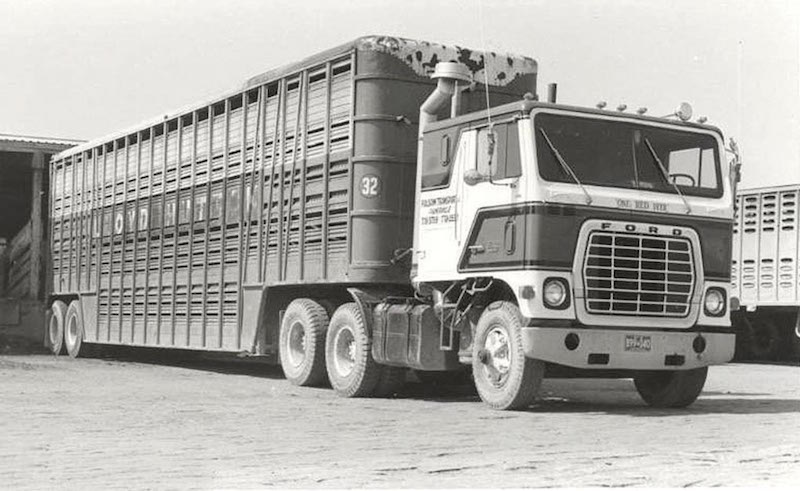
Food for Thought: Smart City Tools, Then and Now
Food technology — gizmos such as blockchain, sensors, taste algorithms, genomic tracking — is a hot topic these days, generously funded by venture capitalists. But food technology has been around for decades. Can openers, anyone?
No one would dispute that a GPS tracker is sexier than a simple can opener. But those early inventors deserve credit for laying the foundation for today’s innovations. After all, it took almost 50 years after the can was invented before someone made an opener for it. Our everyday can opener — the rotating serrated-wheel device — first appeared in 1870, and it’s still in everyone’s kitchen drawer, nearly 150 years later.
Food storage technology developed from clay amphorae and wooden barrels to polyethylene drums with lever-lock rings for transporting food commodities such as cooking oil. Today, wooden barrels appeal to artisan fermenters and brewers who embrace the flavor-enhancing properties of wood. Sacks and bags continue to transport our food from the grocery store to our house or from the coffee plantation in Kenya to our roaster in Brooklyn. Some are still made of cloth, paper and hemp, while others are big, woven-plastic buffle sacks that optimize space in container ships.
Weights and measures are the quants of food markets. Beginning as bowls and rocks in the Indus River Valley, weighing scales used balance mechanisms, such as this early 19th century balance scale, until the digital age arrived in the early 1980s. Not quite the graceful scales of the past, these digital scales are more sensitive and adapt to multiple units of measure.
Maintaining its utility throughout the ages is the meat hook, the hand tool for butchers and meat processors. The only difference between this 19th century hook and today’s version is the handle: one is wood and the other plastic. Some technology endures the test of time.
How to Make Do in Wartime
Rations. The word itself conjures up images of shortages, insufficiency and want. No fruit. Limited amounts of sugar and flour. Small bits of tough meat. As World War II interrupted agricultural production and food distribution in the United Kingdom, simple staples — nevermind specialty or exotic items — became scarce.
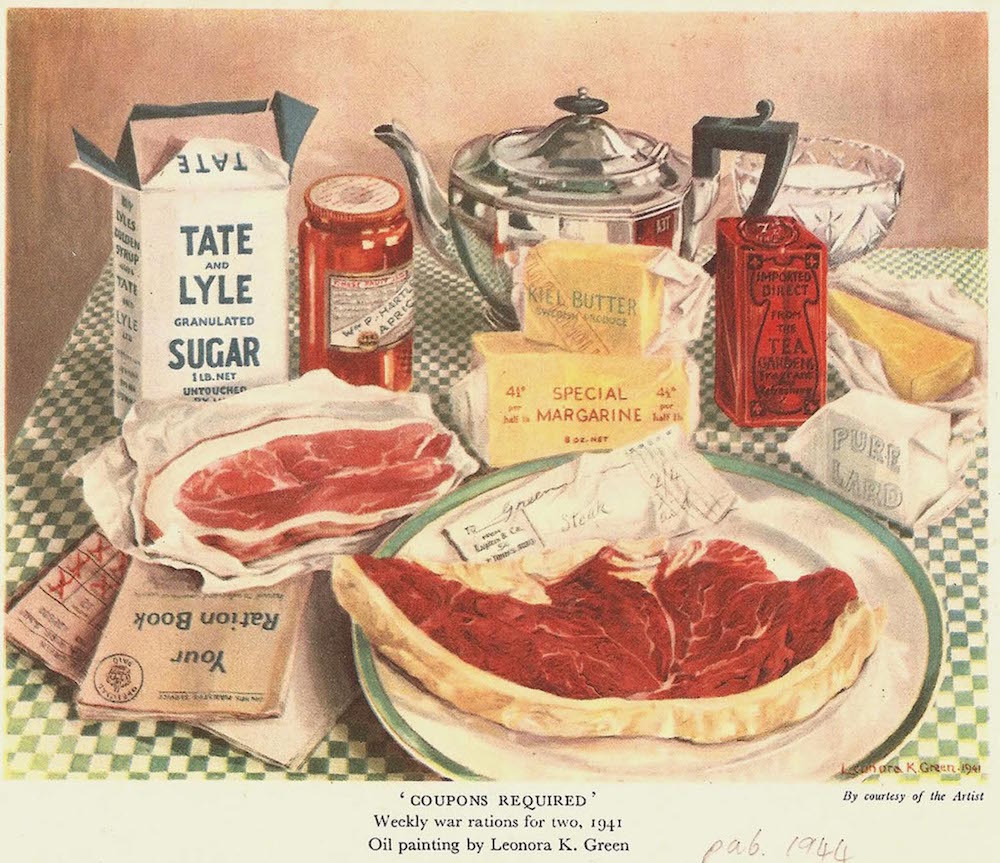
To keep a healthy population that could contribute to the war effort, the British government, like many other governments before it during tough times, instituted a system of controls that limited, but aimed to equalize, what people could buy — regardless of their socioeconomic status. Along with the rations, the Ministry of Food enlisted home economists to help families effectively manage their food budgets. These experts also offered ideas and recipes for making the most of what was available, both in terms of flavor and satisfaction, but also for national morale. Books and pamphlets from the era encouraged home cooks with reassuring language, inviting a patriotic perspective of the hardships.
While long lines were a daily reality at markets, and meats and treats were in short supply, everyone was entitled to the basics. Each citizen had his or her own ration book. Adults were apportioned a certain quantity of meats, fats, sugars, tea, cheese, eggs and milk (either liquid or powdered). Children were allotted their share and enjoyed the occasional orange or portion of whole milk for their growing bodies. Staying healthy was an important part of the war effort.
Other scarce items were distributed through a points system, which allowed consumers some choice and the ability to splurge on fruits, sweets or finer cuts of meat from time to time.
One of the biggest changes during the war for home cooks was the introduction of “National flour.” Before the war, England imported up to 70 percent of its grains (or cereals, as they were known), but the waterways around the island nation were dangerous and not easily passable. German U-boats regularly attacked ships bound for the U.K. in an effort to starve the Brits into submission.
In 1942, the Ministry of Food introduced National flour, a coarser grind that included 15 percent more whole grain wheat than the refined white flour available before the war. It also contained “diluent” grains — including barley, oats and rye — and powdered milk for additional calcium. The government’s goal was twofold: reduce import losses and improve the health of Britons, “even under the handicap of war.”
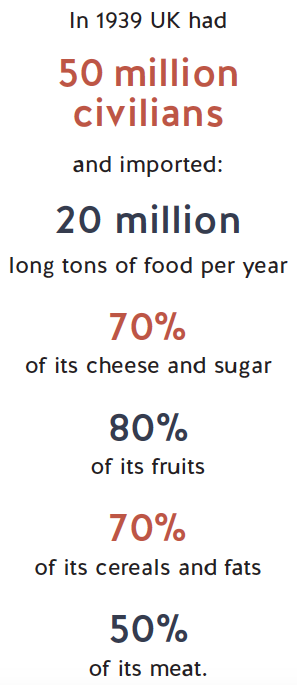
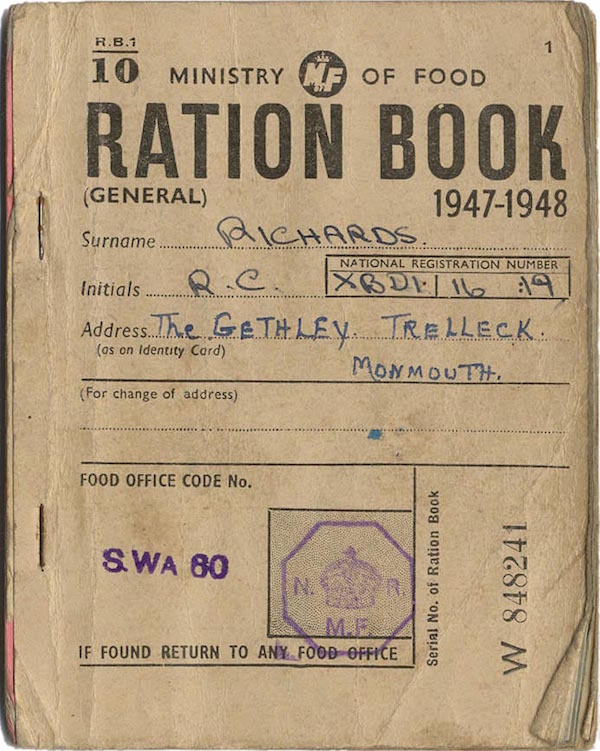


Food-related messaging from the Ministry of Food reminded consumers why they were sacrificing and encouraged good eating habits, despite the hardships.
For a population that loves its baked goods, National flour and the tough, grayish “National loaf” — the only bread available in bakeries — took some getting used to. The Ministry’s home economists published leaflets and newspaper columns with handy hints:
Cooking Hints for National Flour
National flour can be used just as well as white flour in cakes, puddings, pastry, for thickening soups and stews, but remember the following points: —
1. Use a little more liquid for mixing, i.e. mix to a softer consistency.
2. Bake, boil or steam a little longer.
3. Add a little more seasoning to savoury dishes.
4. Add more salt and water when making bread.
5. Use a little extra flour for thickening sauces.
6. Use a little less sugar for sweet dishes.
In fact, the Ministry more actively encouraged the use of an alternative and much more readily available ingredient for its population’s pastry needs: potatoes.
Song of Potato Pete
Potatoes new, potatoes old
Potato (in a salad) cold
Potatoes baked or mashed or fried
Potatoes whole, potato pied
Enjoy them all, including chips
Remembering spuds don’t come in ships!
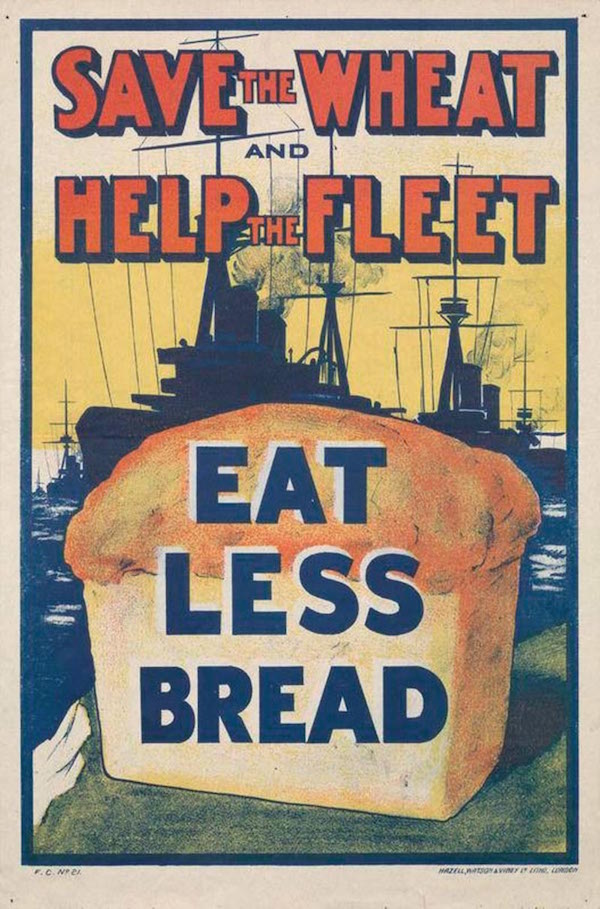
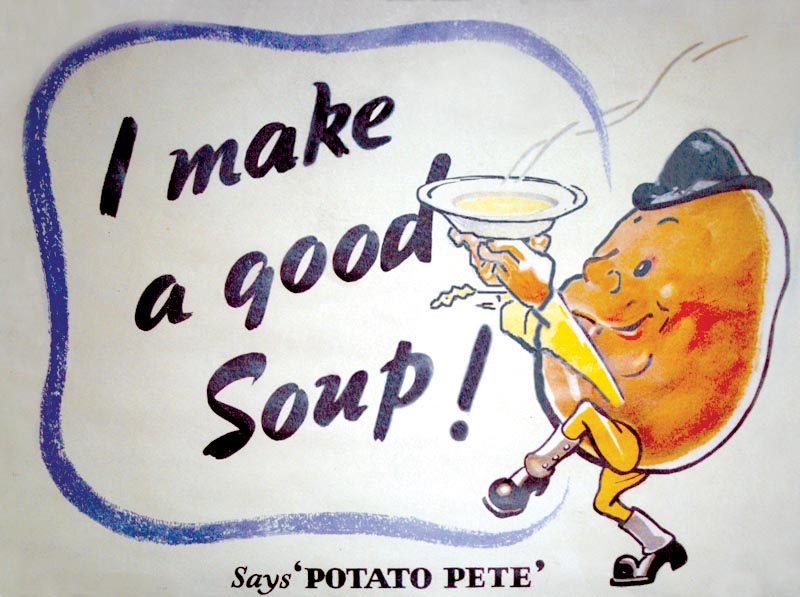
 English food bloggers have shared their experiences cooking with wartime rations. And watch a charming newsreel-style film about rations in Britain during WWII.
English food bloggers have shared their experiences cooking with wartime rations. And watch a charming newsreel-style film about rations in Britain during WWII.
The lowly potato was elevated to a key ingredient during the war years. It grew in abundance on the British Isles and was filling during lean years. “Potatoes help to protect you from illness,” says a leaflet from the Ministry of Food. “Potatoes give you warmth and energy. Potatoes are cheap and home-produced. So why stop at serving them once a day? Have them twice, or even three times — for breakfast, dinner and supper.”
P’s for Protection Potatoes afford;
O’s for the Ounces of Energy stored;
T’s for the Tasty, and Vitamins rich in;
A’s for the Art to be learnt in the Kitchen.
T’s for Transport we need not demand;
O’s for old England’s Own Food from the Land;
E’s for the Energy eaten by you;
S’s for the Spuds which will carry us through!
Potatoes were among many edible plants that could be found in British “Victory Gardens.” The government commandeered sports fields and golf courses for planting and encouraged people to use every bit of soil they had access to — from decorative gardens to small edge plots and even containers on apartment rooftops — to cultivate household vegetable and herb gardens. Leeks, turnips and swedes (rutabagas) were popular choices that grew well in the chilly British climate.
In addition to managing ingredients, home cooks also had to worry about conserving fuel. Using the oven for multiple items at once (the casserole AND the pudding) was crucial. Alternative methods for conserving fuel included starting a braise on the stove, then finishing in a cooling oven once the baked goods were done. Or using a hay box, a box with room for a cooking pot, lined with hay and covered; the insulation preserved the heat in the pot for several hours, until the stew or soup was done.
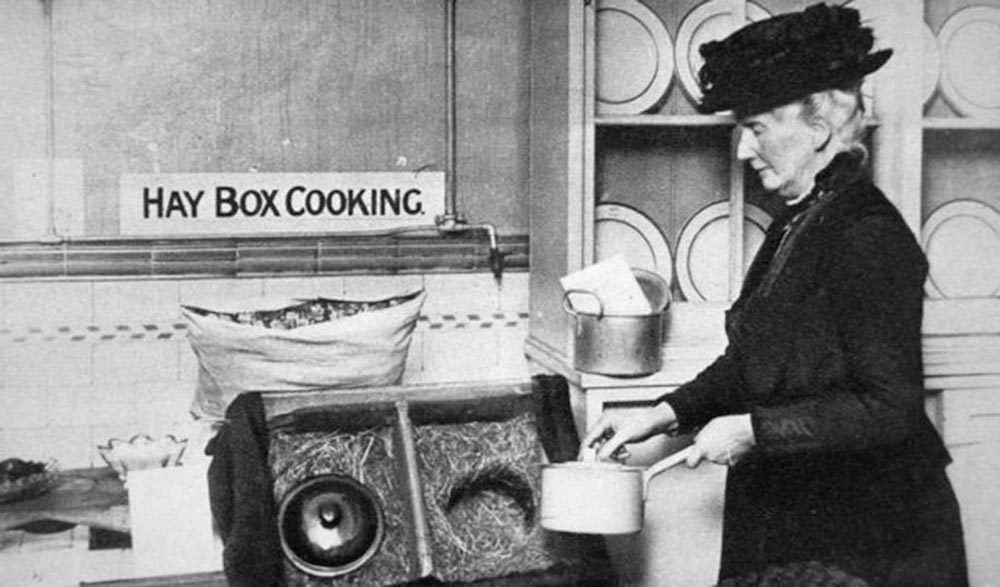
“More or less, this simple but surprisingly little-practiced rule is true in using an oven: try to fill every inch of space in it,” wrote M.F.K. Fisher in “How to Cook a Wolf,” her handbook of sorts for living happily during trying times. “Even if you do not want baked apples for supper, put a pan of them with whatever is baking at from 240 to 400 degrees. They will be all the better for going slowly, but as long as their skins do not scorch they can cook fast. They make a good meal in themselves, with cream if you have any, or milk heated with some cinnamon and nutmeg in it, and buttered toast and tea.”
No ingredient was wasted. The water used to boil vegetables was saved for soup base. Leafy stems from root vegetables were neither tossed nor composted but valued as a vegetable in their own right. The Ministry of Food emphasized the nutritional importance of green veggies and encouraged families to eat one raw vegetable per day.
Creative substitutions were common a way to adapt. “You can make many a good tricked dish, with a few mushrooms, some leftover rice, and a dash of wine, if you have one of those frightening, efficient cans of ‘rich brown meat gravy’ on hand,” Fisher writes, inspiring readers to use what they have to its best effect. “It is spurious, maybe. It is chicanery. But it is economical and useful psychologically, especially if you are three miles from a market and the siren blows just as you are pumping up your bike-tire.”

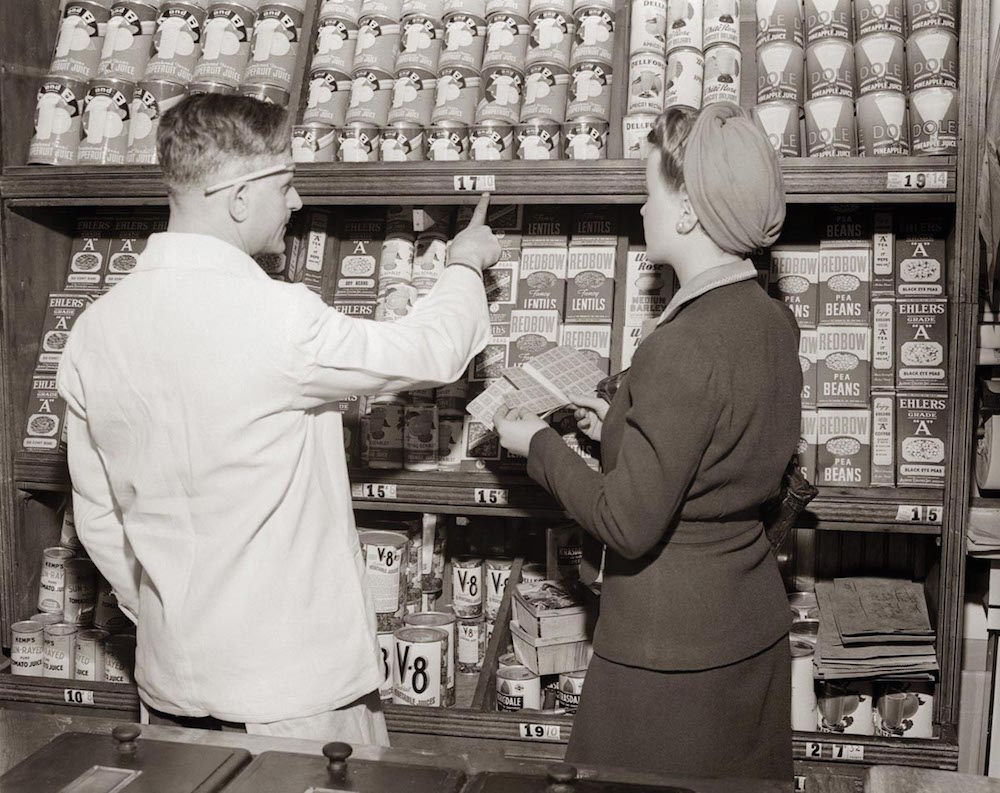
The British system of rations lasted well beyond the end of World War II, ending in 1954. But the effects of rationing were largely positive. “The rich got less to eat, which did them no harm and the poor, so far as the supply would allow, got a diet adequate for health, with free orange juice, cod liver oil, extra milk and other things for mothers and children,” wrote Lord Boyd Orr, post-war head of the United Nations Food and Agriculture Organization, in his memoirs.
The nutritional playing field had been leveled across the classes, and Brits had no choice but to eat their vegetables.
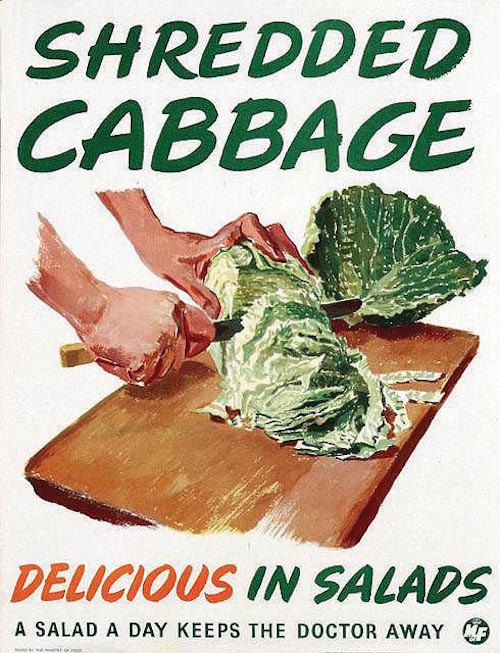
Seafood Traceability Nets New Benefits
Combatting “fish fraud” and ensuring sound fishing practices are two reasons net-to-plate tracking is on the rise. But high-tech tracing satisfies consumers’ curiosity, too.
Does it matter if your sashimi is not the fish it purports to be — or that your salmon was grown on a farm in Ireland, but labeled wild-caught from the Pacific?
When amplified globally, the answer is a resounding yes. In the last few years, DNA analysis of seafood samples from markets and restaurants has helped expose the prevalence of “fish fraud.” Many industry insiders assert that combating the problem hinges on one thing: end-to-end traceability.
A BOATLOAD OF RULES
Management of fisheries has been a long-standing practice. The Venetian Republic, for instance, enacted protective laws as early as 1173, taking the view that the Venetian lagoon and its resources were the critical underpinning of the Venetian economy. In the mid-20th century, global industrialization of fishing led to stock depletion in U.S. waters and ushered in the Magnuson-Stevens Fishery Conservation and Management Act (1972; revised 1996). This legislation created a complex quota and landings reporting system to manage and monitor the harvest.
Separately, health and safety laws for handling food products in processing, transport, and at point of sale leave their own paper trail. Bringing the records from the two ends of the supply chain together into an integrated system is more complex than it might seem, but new technology is helping to make this possible.


CERTIFY THY FISH
Much credit goes to non-governmental organizations (NGOs) for raising awareness about the state of the commercial seafood industry. In the 1990s, the Marine Stewardship Council (MSC) was formed to protect the world’s oceans by working directly with the seafood industry, encouraging best practices among all participants in a fishery. Companies that meet MSC criteria can carry the blue MSC ecolabel on their products and in branding. The MSC Chain of Custody Standard applies to all suppliers, processors and vendors handling MSC-certified seafood, and MSC performs periodic auditing to verify those standards are being followed.
Most major supermarket chains now require that the fish products they buy have an environmental certification or be associated with a Fishery Improvement Project (FIP). Yet problems persist. Continuing concerns over illegally harvested and mislabeled seafood, as well as human rights abuses in the seafood industry, led to the founding in 2002 of FishWise. The NGO now leads the charge for electronic, interoperable systems for end-to-end traceability that implicate all players in the commercial seafood supply chain. In 2014, President Obama issued an executive order to combat illegal unreported and unregulated (IUU) fishing and seafood fraud.
This brought about a new traceability program for imported fish and fish products especially vulnerable to IUU fishing and/or seafood fraud, with a compliance deadline of January 1, 2018. Additional legislation on the federal and state levels may follow, in part as a protective measure for one of the country’s oldest industries.

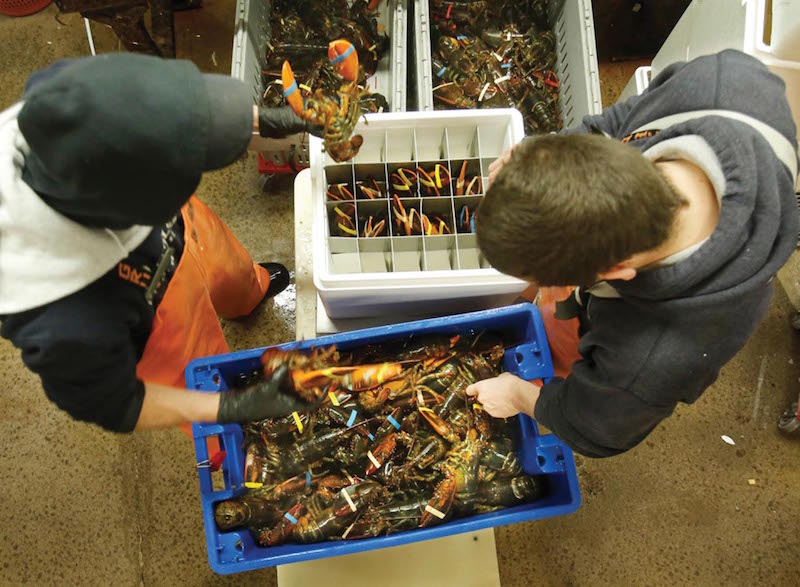
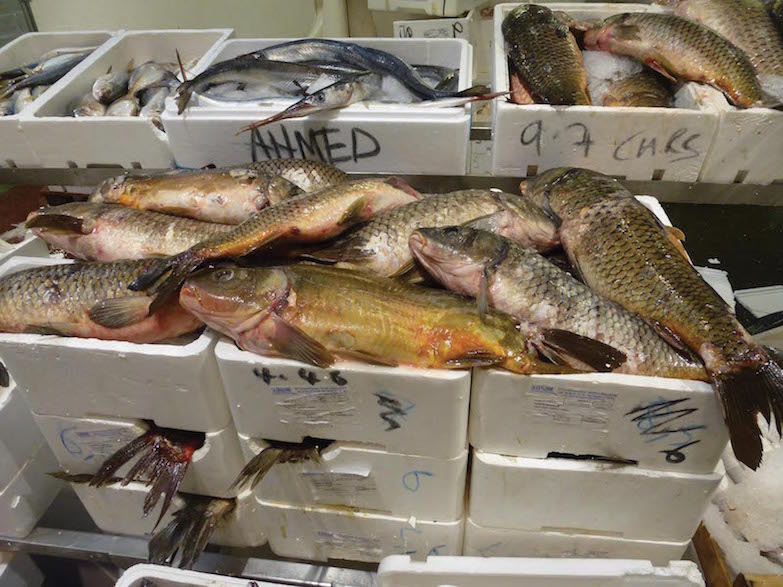
INNOVATION IS ON THE MENU
As the hub of the New England commercial seafood industry, Boston is a rich testing ground for innovation in seafood traceability and tracking across the supply chain. Seafood restaurants and retailers have been particularly adept at responding to consumers’ concerns and capitalizing on growing interest in food production. For example, menus at Island Creek Oyster Bar and Row 34 list not only the name and place of origin for each shellfish offering but also its producer. Giving previously undifferentiated products, such as oysters, a provenance is a first step in building brands and customer affinity.
Based on the idea that consumers care about the source of their fish as well as the livelihood of the New England fishermen who provide it, seafood company Red’s Best has developed a traceability program for the products it sources and sells. Labels include QR codes, readable with smartphone apps, linking customers to information about where and how the fish was caught and about the life of the fisherman who caught it. On the tracking front, Maine Coast Lobster, which ships live lobsters globally from Boston’s Logan Airport, places sensors that record time, temperature and humidity within its specially designed shipping boxes. If a problem is detected upon arrival, data can be uploaded via USB and correlated with logistics records to pinpoint the problem in the transport process.
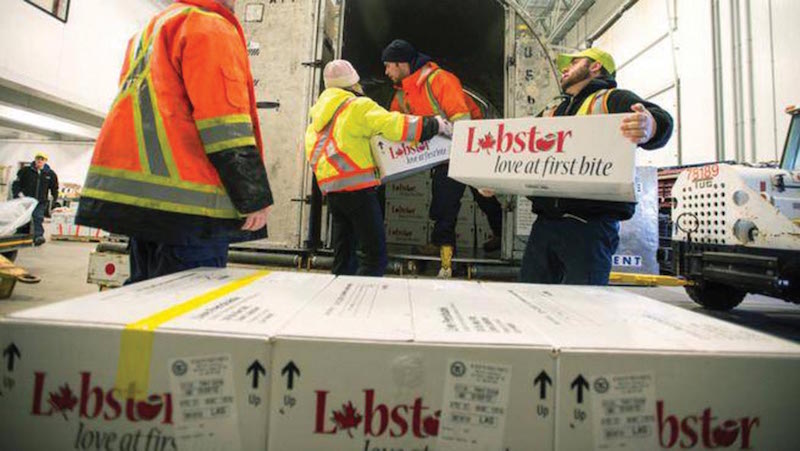

MOVING FORWARD WITH BACKTRACKER
Launching one of the most fully integrated solutions is BackTracker, the Boston-based startup with a data-driven seafood traceability system to eliminate operational errors and bad practices that can occur at any number of steps along the supply chain. Founder and CEO Michael Carroll is a former commercial fisherman who obtained a graduate degree in economics before becoming a fish buyer for a major supermarket chain and then working on fishery certification. He understands the commercial seafood industry, including its eccentricities, in a way that few people do. BackTracker accesses official government harvest records and uses them for an important secondary purpose: following the records through each participant in the supply chain — first receiver, processor, wholesaler and retailer — and verifying participant-provided output data at each step.
“If a landing record lists 10,000 pounds of haddock from a particular vessel on a particular day, and we know that haddock has a 36 percent yield when processed, we shouldn’t see more than 3,600 pounds of haddock tied to that landing from the processor,” Carroll explains.
As anyone who has watched an episode of “Wicked Tuna” knows, the fishing industry is a competitive business. While GPS technology makes it possible to collect data about where fish are being caught, for now traceability begins with what is reported at the dock.
In this context, unbiased third-party certification has its advantages. All data is encrypted and ownership remains with the parties who provide it. BackTracker issues unique tamperproof codes as records of verification for each individual package in a processed lot, and the app for managing the process is flexible. “Trade partners can determine collectively which information is shared downstream and which is kept confidential,” Carroll notes.
BackTracker’s pilot system is now underway in Boston with participants from each step in the supply chain, including first receiver Atlantic Coast Seafood, processor/wholesaler Ipswich Shellfish Group and supermarket chain Wegmans. The system also has support from the Massachusetts Division of Marine Fisheries’ Seafood Marketing Program. Focusing on New England haddock, redfish and pollock, the program will enable product differentiation and help reduce the amount of imported groundfish sold erroneously as “local,” in turn increasing ex-vessel values — price paid for the catch upon unloading — for fishermen.
Over time, end-to-end traceability should also help reveal how well quotas and other regulations are working. Before you know it, that photo you post on Instagram of your haddock sandwich will tell a story not only about what’s on your plate but also about the entire supply chain. Solutions like these are one way of ensuring that sustainably harvested fish, and the industry players who source them, are at the table.
Urban Agriculture: Can it Feed Our Cities?
From rooftop gardens and indoor vertical farms to community plots and edible landscapes, urban agriculture is on the rise. As more of the world’s population resides in cities, city farming is touted as a sustainable solution. But are there enough rooftops to make it work?
New Jersey has been known since the late 19th century as the Garden State. But today its 12th largest city, Camden, is anything but lush and green. It is the country’s poorest city — an astonishing 42 percent of the population lives below the poverty line — and one of the country’s most dangerous. A recent Rolling Stone profile of the city began: “The first thing you notice about Camden, New Jersey, is that pretty much everyone you talk to has just gotten his or her ass kicked.”
And yet.
A small food economy is blossoming in Camden. AeroFarms, an indoor agriculture firm, plans to break ground as early as this year on a 78,000-square-foot vertical farm that would grow 12 stories of red-leaf lettuce, kale, bok choy and more.
Meanwhile, more than 100 of the city’s thousands of vacant lots have been transformed into community gardens. In 2009, at the dawn of enthusiasm for urban farming and during the last available year data were collected, gardeners at 44 sites harvested almost 31,000 pounds of vegetables. Had it not been an unusually wet and cold summer, it might have been more.
It’s all very inspiring: Whizz-bang technology that offers healthier food and much-needed jobs. Communities taking charge of their food destiny in a place that the almighty market has neglected. (Camden, population 77,000, has just one supermarket within its city limits.) But it’s not only struggling cities that see the promise of urban farming.
Urban agriculture — which by definition includes indoor farms, rooftop and backyard gardens, community plots and edible landscapes — is often hailed as a solution to daunting global challenges. It addresses climate change by allowing food to be grown close to home, rather than hauled thousands of miles. It could affect obesity and chronic disease by making healthy options more available. And urban farming could help feed a quickly growing world population, because many of the predicted 9 billion people on the planet (by 2050) are increasingly headed to cities.
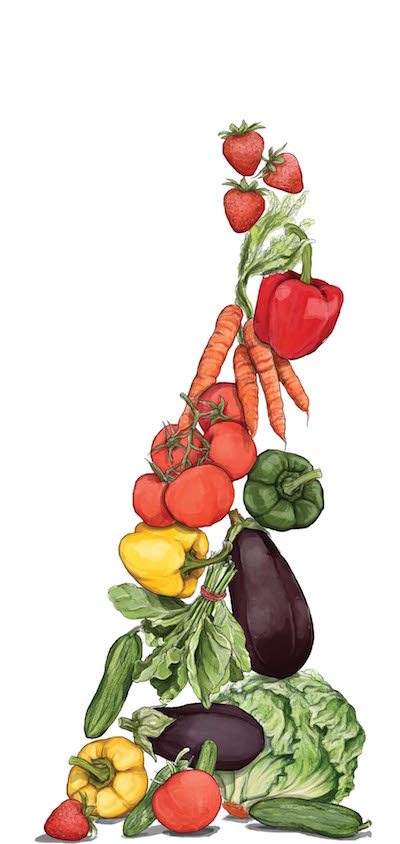
SUSTAINABLE SOLUTION?
But can urban farming sustainably feed cities? A close look under the agri-hood suggests that it’s a lot more complicated than advertised.
For starters, let’s examine the history. The Industrial Revolution quickly and dramatically severed ties between consumers and the farmers who grew their food. Efficient train networks transported food more rapidly, from farther away, and more people moved away from rural areas to cities for work in factories. Since then, there have been regular waves of enthusiasm for urban gardening in the West, motivated by social reformers, who made a moral connection between the land and healthy living, or by the innate human desire for self-sufficiency.
To wit: One of the Salvation Army’s first initiatives in late 19th-century London was “farm colonies” designed to help city folks feed themselves. Beginning in the 20th century, Israel’s early Zionists created thousands of small urban farms. But the only examples of urban farming feeding substantial numbers of people occur when there is little other choice.
In Israel, urban farms soon gave way to rural kibbutzim (collectives based around agriculture). The United States saw Americans plant more than 5 million household plots during World War I and 20 million in World War II. Those 1940s victory gardens produced 9 million pounds of produce each year — what amounted to 44 percent of the U.S. harvest. (Read more about how people cope with food shortages during wartime in our story about rations.) But when the war ended, citizens largely abandoned their gardens and returned to the convenience of shopping at the supermarket.
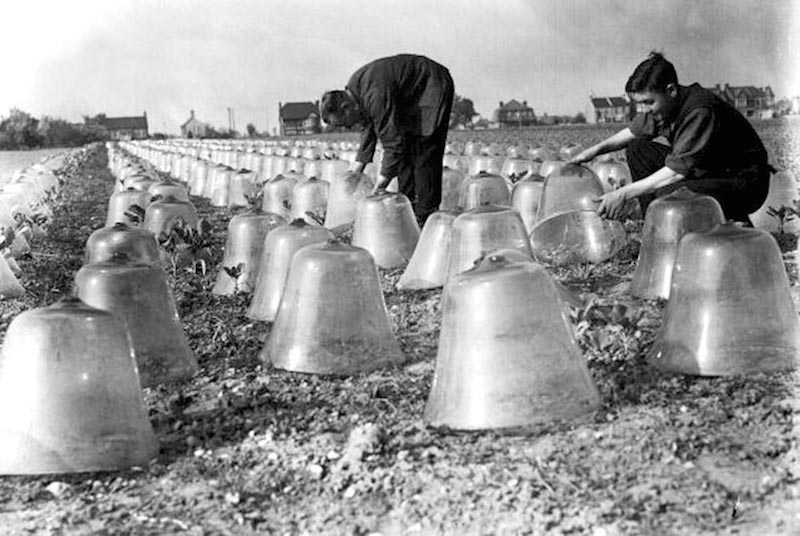
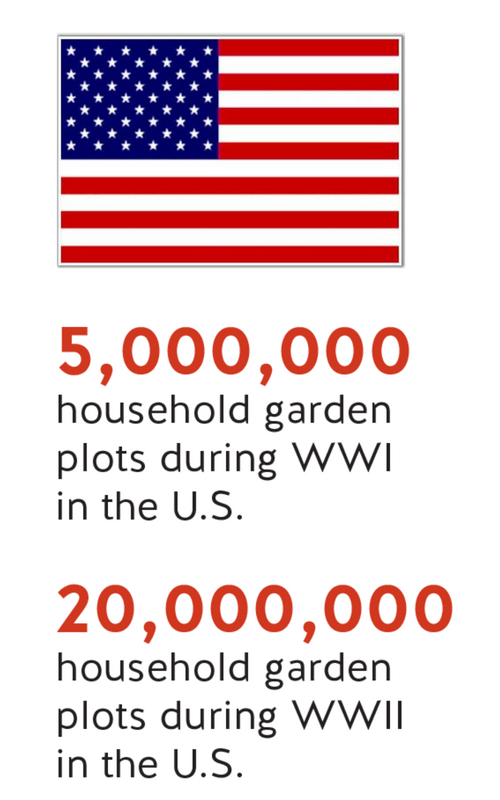
HIGH-TECH FARMING
Proponents of urban farming say this time could be different. Besides the global challenges of climate change and population, there is wide consumer demand for locally grown food. Moreover, technology that makes urban farming more productive and more sustainable could tip the balance. The technologies include lightweight beds that can be stacked, efficient LED lights and hydroponics and aeroponics, by which plants grow without soil and fed a calculated diet of nutrients by water circulating beneath them.
“By some estimates, we will need 50 percent more food by 2050,” says David Rosenberg, CEO of AeroFarms. “We need transformational changes. Vertical farming does more with less.”
A decade ago, not even one of these so-called vertical farms existed. Today, there are dozens of them — one in Singapore, one in a former bomb shelter in London and one in Japan, built by researchers to provide safe food after the devastating Fukushima earthquake in 2011. That farm, formerly a semiconductor factory, now produces 10,000 heads of lettuce per day.
AeroFarms operates nine vertical farms. Its largest, in Newark, 90 miles northeast of Camden, produces 2 million pounds of leafy greens each year. The 70,000-square-foot complex is a poster child for futuristic farming. Inside, so-called grow tables are stacked 12 levels high and enveloped by a glow of pink LED light. (Plants, it turns out, require little from the yellow part of the light spectrum, which requires greater amounts of power to produce.)
Rosenberg sees AeroFarms less as an agricultural producer than as a data-science company, delving into the intersection of plant biology and engineering with the goal of controlling every aspect of growing and maximizing efficiency.
“We take data on plants and understand what makes them grow,” he explains. “You can’t do it this way in the field. There are too many unknowns.”
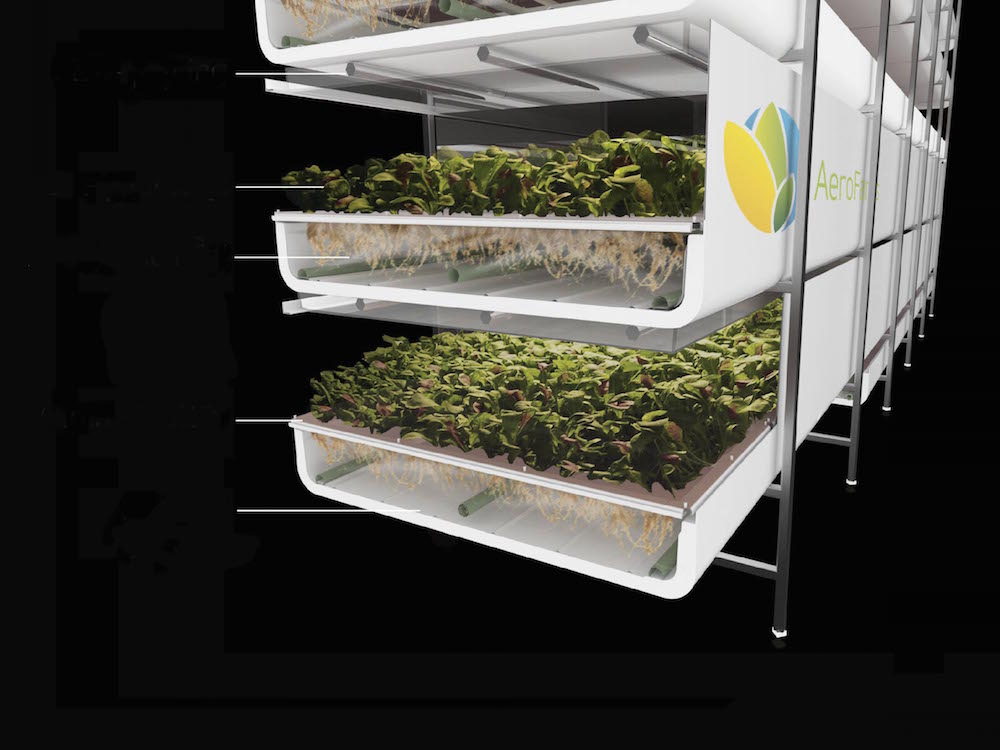
RESOURCE CONSERVATION: PROS AND CONS
The biggest boon of vertical growing may be water conservation. Drive through California’s Salinas Valley, where the vast majority of America’s salad greens are grown, and you’ll see hundreds of sprinklers shooting great arcs of water across the fields. Some of that is used by the plants, but much is lost to evaporation and runoff.
In contrast, hydroponic and aeroponic systems give the plants only the water they need, and it is recirculated through the system. On average, indoor farms and greenhouses use at least 70 percent less water than traditionally farmed lettuce in California.
There are other benefits, too. The produce doesn’t have to travel — unlike the lettuces that journey as far as 2,800 miles if they are shipped from coast to coast. This all but eliminates the greenhouse-gas emissions associated with transport, though those are only a fraction of the total associated with producing food. (Read more about greenhouse gases tied to food waste in our feature on page 18.) And because they are fresher, the greens last longer in consumers’ refrigerators, which means less lettuce thrown away because it’s gone bad before it could be eaten.
No wonder vertical farms are catnip to technology investors looking for the next big disruptor. According to AgFunder, in 2016 funders poured $126 million into indoor agriculture- related startups (including things like lighting and software). But critics say that the environmental benefits of indoor farms don’t add up.
For one, to grow even a fraction of the fruits and vegetables needed to feed cities would take vast amounts of space. According to one analysis, it would require a 150-foot-by-150-foot, 37-story building to provide the vegetables for a city of just 15,000. This would cost $250 million to build and $7 million in electricity to run annually.
Indoor farms also fail to take advantage of a free and renewable source of energy: the sun. “If you’re not taking advantage of the sunlight, then the process will inherently involve excess energy consumption and carbon emissions,” says Stan Cox, a researcher at the Land Institute in Salinas, Kansas.
Substituting electricity for sunlight is costly. Using current technology, the equation just about works out for leafy greens, which are 90 to 95 percent water and don’t require as much light to grow. But do the math on denser fruits and vegetables or other crops — carrots, potatoes or wheat — and the amount of power required to grow them soars. According to Cox, it takes about 1,200 kilowatt-hours of electricity for each kilogram of edible matter (excluding the water stored inside). Or to put it another way: You need the same amount of electricity to grow one kilogram of tomatoes as you do to run your home refrigerator for an entire year.
“The claim of indoor farming is that we can spare the land by getting rid of industrial farming,” Cox says. “But of course, this vision uses more industrial inputs than anything done on the landscape.”
AeroFarms’ Rosenberg counters that lighting technology is getting ever more efficient. And though he concedes that indoor farming may look industrial, it addresses major challenges including the depletion of arable land, water pollution and conservation: “We don’t use soil. We don’t use pesticides. We use a fraction of the water that field farms do. We have a much softer footprint.”

GREENHOUSE GROWING
An even softer footprint comes from other types of commercial urban and peri-urban farms that use greenhouses. Take BrightFarms, which operates three commercial greenhouses and sells directly to grocery stores in seven states and the District of Columbia.
BrightFarms uses hydroponics, which means that trays of greens grow atop vast ponds. But rather than place its farms in cities, where land is generally more limited (and much more expensive), it locates its greenhouses just outside of urban areas. With more space, it is not necessary to stack plants to turn a profit. The use of hydroponics also means that the farms can be, well, horizontal — and take advantage of (free) sunlight.
Today, the crops that make commercial sense for hydroponic farming are greens and tomatoes, says BrightFarms CEO Paul Lightfoot. Both crops travel long distances, unless you live on the West Coast. Both too are highly perishable and sell for a premium price. And, as anyone who has eaten a winter tomato knows, these crops benefit from being grown closer to home.
One day, Lightfoot hopes that BrightFarms will expand to other crops that meet the same criteria: strawberries, peppers and cucumbers. But there are limits to what he can produce. BrightFarms, he says, will never be able to compete on a crop like apples, which grow in many geographic areas, store well and travels easily. They will always be cheaper and more sustainably grown in the field.
Hydroponics
A method of growing plants without soil, using mineral nutrient solutions in a water solvent. Nutrients may be delivered a variety of ways, including fish waste, duck manure or a fertilizer containing key macronutrients.
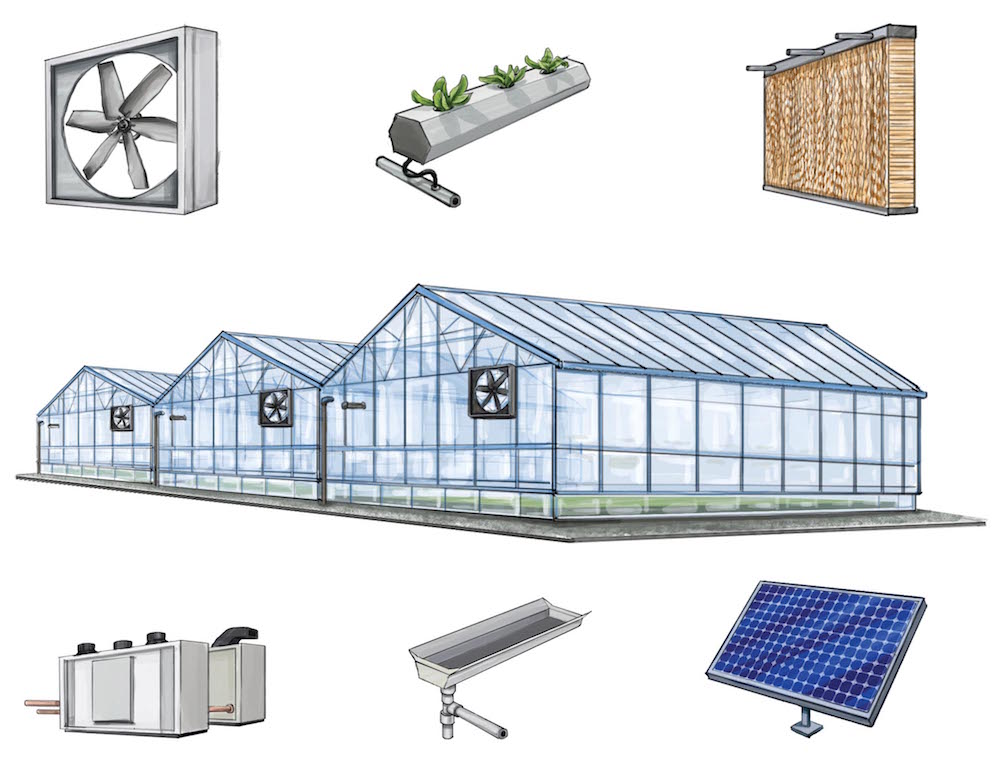
CLOSING THE GAP
Commercial farms, of course, do not have to produce everything. Could community, rooftop and backyard gardens make up the difference? According to a 2016 report from the Johns Hopkins Center for a Livable Future, the answer is no. While a significant proportion of fresh produce needs could theoretically be met in some places, it would only work in those locations if urban farms are widely implemented and focus on intensive forms of production such as rooftop gardens.
To feed Cleveland, for example, 80 percent of every vacant lot (of which there are many), 62 percent of industrial and commercial rooftops, and 9 percent of every occupied residential lot would have to be put into food production. Those are daunting numbers before you even consider practical constraints such as property values, infrastructure limitations and zoning regulations.
Urban agriculture’s limits do not make it a failure. Community, rooftop and backyard gardens make significant impacts in the lives of the people who tend them, and give poor communities like Camden access to fresh, free food.
Dominic Vitiello, a professor of city planning and urban studies at the University of Pennsylvania who has studied urban farming in cities including Camden, concludes that in the United States, perhaps urban farming’s greatest potential is to effect “inside-out” community revitalization. Urban farming offers opportunities for social enterprise and supplemental income for low-income families. It also helps to build and sustain vital social networks that go unmeasured by traditional economic-development research.
In other words, urban farming may not feed a city like Camden. But its gardens can help rejuvenate the city and make it a worthy representative of the Garden State.
Cutting Waste Across Cultures
The United Nations has proposed a goal to cut global food waste in half by 2030. Liz Goodwin, a senior fellow and director of food loss and waste at the World Resources Institute (WRI), has taken that mandate to heart. Goodwin, of all people, would know what that entails. During her tenure as CEO of the U.K.-based Waste and Resources Action Programme, U.K. food waste fell by 21 percent. Now she seeks to take lessons learned from that effort and apply them to other countries that have very different challenges with regard to food waste.
The specific opportunities to prevent food waste vary from place to place, Goodwin explains, for reasons that are cultural, economic and tied to infrastructure.
In China, the world’s most populous nation, good hospitality would suggest that as much food remains on the table at the end of the meal as was there at the beginning. Otherwise, it sends the message that the host hasn’t provided enough to eat. However, Goodwin notes that it’s heartening to see that the Chinese government has been encouraging people not to waste food at banquets and events. Many Muslim countries have similar edicts that are in direct conflict with the goals of preventing food waste. Meanwhile, many modern industrialized societies such as Switzerland and Singapore impose unnecessarily cautious food expiration dates, which results in the disposal of perfectly edible food.
By contrast, poor countries have less waste in the home than in wealthy nations, Goodwin says. Leftovers don’t go bad in the fridge when hunger is an issue. Food scraps are more likely to be fed to animals or composted. But waste isn’t a non-issue. In developing nations there are gaping holes in the supply chain infrastructure through which large amounts of food are lost.
“With slow transport and unrefrigerated storage conditions, the food just doesn’t get through to the end user in time,” Goodwin says. “And then there are gluts of food, such as massive numbers of mangos that ripen at the same time, and no infrastructure in place to process it all.”
In the developed world, the biggest source of food waste is in private residences. It’s where 70 percent of food waste happens in the U.K., and there are a range of causes, including getting portion sizes wrong, not using leftovers and letting food expire or go bad before using it.
On the other hand, food waste is less of a problem in commercial or institutional settings. “Organizations can control what goes on within their operations,” explains Goodwin, referring to the large farms, processors, distributors, grocery stores, institutional kitchens and restaurants where food is flowing. Not only are these big players easier to work with, they can make big deliveries of salvageable food that could be diverted from the waste stream — or of food waste that can’t be eaten but which can be digested anaerobically and converted to energy and fertilizer.
The world’s two most populous nations, India and China, have both first-world and developing world conditions. “China and India have a mixture of developed-world problems and developing-world problems. Their populations are big, and they are producing a lot of food, so supply chain issues are really important.”
With such differences from country to country, Goodwin explains, the first thing to do when evaluating a nation’s food waste profile is to look at where the food waste is happening. Is it in restaurants, the household or at various points in the supply chain?
“Start measuring,” she says. “Because that will help to identify where their biggest issues lie.”

LIZ GOODWIN, SENIOR FELLOW AND DIRECTOR OF FOOD LOSS AND WASTE AT THE WORLD RESOURCES INSTITUTE (WRI)
From 2007 to 2016 she was CEO of Waste and Resources Action Program. During her tenure, recycling rates in the U.K. increased from 9 percent to 43 percent, and U.K. food waste was reduced by 21 percent. At WRI, her goal is to work with people and organizations around the world to cut global food waste in half by 2030, in line with UN sustainable development goals.
The Hunt for Food Waste
Not going to eat those carrots? Don’t throw them away. Once food reaches a landfill, its potential is lost. But unwanted food, captured before it’s tossed, can transform into energy, building materials — or even desirable food. Meet the new generation of hunters and gatherers.
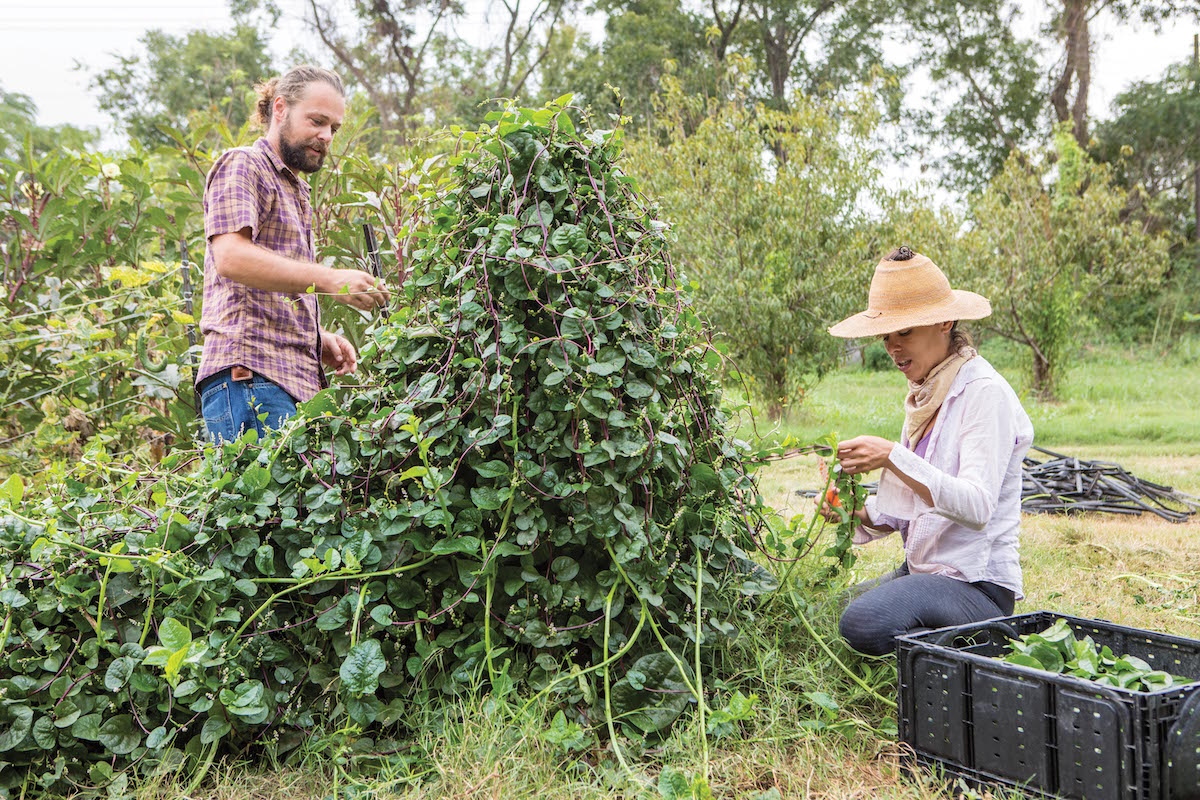
Jake Milliner and Belinda Bonnen tend a towering vine of fresh malabar spinach at Joe’s Organics in Austin, Texas. Joe’s collects food waste from area restaurants and, with their composting partners, creates rich soil for their crops of baby greens.
Wherever there is food, there is food waste. Like water leaking from an aqueduct, food waste will find the gaps in the supply chain between field and plate, a journey filled with opportunities for loss.
A heartbreaking amount of produce rots in the field, unharvested. Some is culled for size, shape or another cosmetic factor. Even more food is thrown away or lost during cleaning, boxing, processing and distribution. It rots slowly in retail stores or commercial kitchens and in your fridge. Food is also tossed during meal preparation, at home or in restaurants or other commercial or institutional kitchens.
And then, far too often, the meal itself — or much of it — is thrown away. In the end, a third of the food we produce goes uneaten. Data from a new report issued by the Natural Resources Defense Council (NRDC) indicate that Americans throw out more 400 pounds of food per person per year. Sadly, in the shadow of this massive overproduction and loss of food, 10 percent of humanity still doesn’t have enough to eat.
But it’s not just about feeding the world: The environmental consequences are significant. The amount of cropland needed to produce the food that ends up as waste is roughly equivalent to the acreage of China and requires a fourth of the country’s irrigation water. Feeding people is the largest single contributor of greenhouse gases to the atmosphere of any human pursuit, and roughly 10 percent of greenhouse gases that humans release are in service of food that will not be eaten. When this wasted food rots in a landfill or is burned in an incinerator, the process releases even more greenhouse gases.
The holes in the food supply chain through which food slips away represent more than hunger and pollution. It’s wasted investment and fruitless effort that could have been channeled into something more useful. Entire cities could be built, or rebuilt, with the effort that goes into the food we throw away.
But there’s another side of the coin. The scale of this waste, and the problems it causes, have created opportunities. Wasted food is essentially money that’s being left on the table, available to whomever is crafty enough to grab it and put it to use. It has potential value as energy, soil fertility and calories — all of which can add up to dollars that can be earned from harvesting food from the waste stream, or intercepting food before it gets tossed.

Executive producer Anthony Bourdain takes a deep dive into this issue in “Wasted! The Story of Food Waste.”
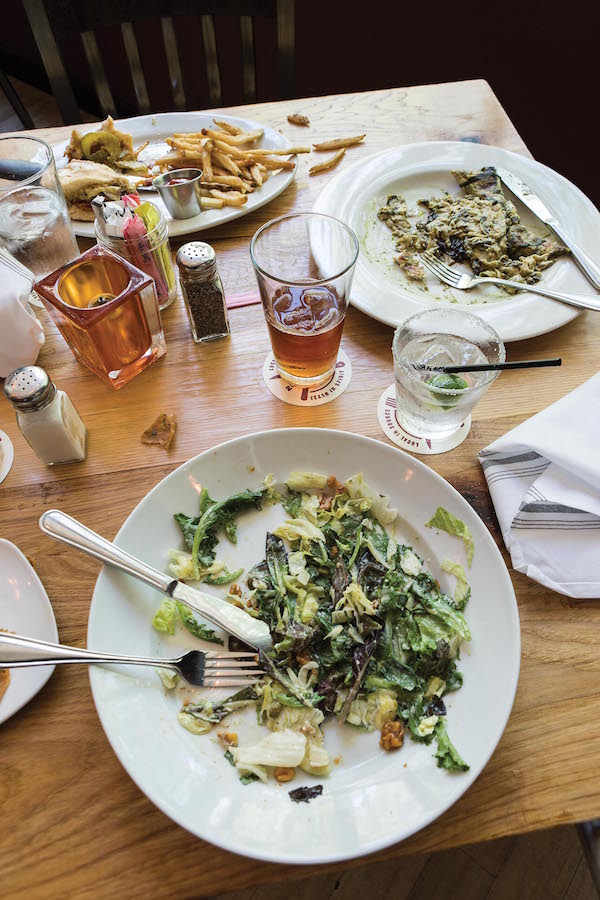
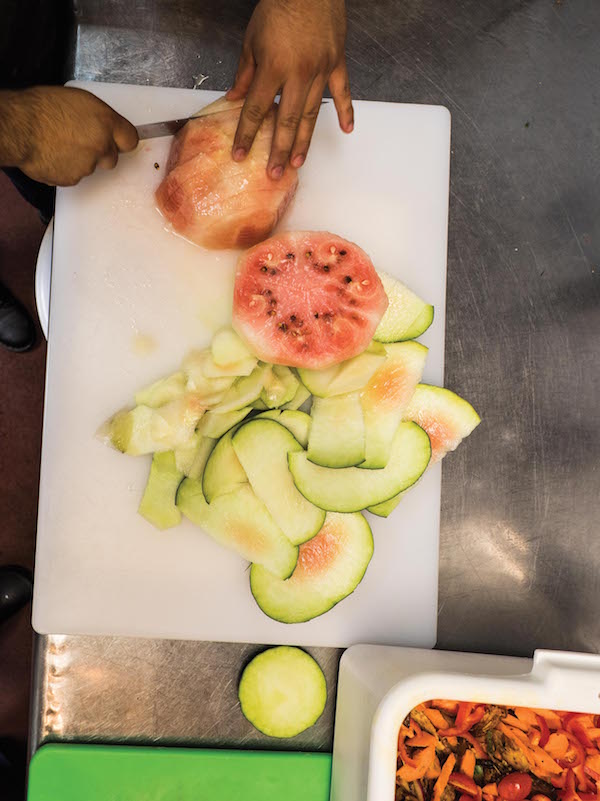

Above, from top: uneaten restaurant meals contribute to the enormous amount of edible food discarded daily; byproducts from food preparation, such as this watermelon rind, can be composted or even pickled rather than chucked; food waste is a cause of greenhouse gases.
THE NEW HUNTERS AND GATHERERS
The highest good to which a piece of wasted food could aspire (if wasted food had aspirations) is to be rerouted to a hungry human mouth before being discarded. The next-best thing would be for it to be eaten by something else, like a chicken or a pig, or — in the case of food that can’t be routed to organisms with recognizable mouths — a bacteria. Today, most food waste diverted from landfills or incineration is digested by anaerobic bacteria to produce natural gas and fertilizer. Food scraps left over from food processing and retail food preparation are suited for this, as is the majority of household waste. The challenge is getting food out of the waste stream and sending it to a better place than the dump.
That best-case scenario, in which food is rescued from the edge of waste and routed to other human mouths, has been deeply explored in Europe in recent years, while the United States is playing catch-up. The players, increasingly, are for-profit waste hunters that are bringing high-tech solutions to the task of reducing food waste.
Sometimes that initiative comes from the (would-be) food wasters themselves. Campbell Soup Company has been an early corporate leader in reducing its share.
“Food that meets our rigorous safety standards is donated to local food banks in and around our manufacturing plants and distribution networks,” says Thomas Hushen, a Campbell spokesman. “In most cases, we partner with Feeding America and their network of food banks to make donations.”
While some corporations have been early and eager to embrace measures to curb food waste, other companies want to jump on the bandwagon but don’t know where to start.
Left: Malabar spinach stalk — the stalk and ugly leaves often get wasted, but they’re perfect for green juices. Right: Sorting sweet potatoes at Johnson’s Backyard Garden.
To see what kinds of value-add products are being made from uneaten food — from floor tiles made from coconut shells to plastic-like pellets made from blood meal, a byproduct of the meat industry — check out our gallery.
The French corporation Phenix (a 2017 Food+City Challenge Prize finalist) offers support services to businesses interested in diverting their food waste away from landfills and incinerators. The company has a solid track record in Europe, where the culture of food-waste recovery is more evolved than in the U.S.
But Sarah Lenoble, who heads Phenix’s push to set up shop in the States, is that rare French person who looks at America and sees a land of opportunity. The biggest reason food-waste recovery isn’t as advanced in the U.S., she says, is that the food-waste hunters are just getting started. “Even though it is happening, it’s not happening in a very structured way,” Lenoble says. To a veteran organization like Phenix, this youthful discombobulation amounts to low-hanging fruit.
Phenix uses a market-based approach that capitalizes on the fact that unused food has value even if it isn’t sold. American supermarkets, for example, must pay a waste disposal company to get rid of expired food, a fee they could forego if the food were collected by a charity. Last year, according to the NRDC, companies spent $1.3 billion disposing of food scraps, thanks largely to transport and disposal fees. Meanwhile, a surprisingly robust tax credit is available to companies that donate food: the Federal Enhanced Tax Deduction for Food Donation. It allows retailers to recover the higher retail price of their donations, even though they paid the lower wholesale price. Another law, passed in early 2017 with bipartisan support, amends the Good Samaritan Act to offer stronger liability protections to those who donate food. With laws like these in place, and companies eager to exploit them, Lenoble is optimistic about Phenix’s planned rollout into the U.S. food recovery space.
She notes that the U.S. charity scene is much stronger than in Europe, in part because in European governments often handle issues that in the States are left to charities. Even though it’s out to make a profit, Phenix won’t be competing with the food banks, churches and ugly-produce resellers. Instead, they’ll be partnering with them, providing logistical and strategic support to help these charities become more effective in their food-recovery efforts. A rising tide will lift all boats, Lenoble believes, and she likes what she sees. “We believe the market here is going in the right direction.”
In addition to its work with charities, Campbell recently doubled down on its corporate introspection, implementing its Food Loss and Waste Reporting Standard. It’s an effort to develop a benchmark of lost and wasted food, and to identify hotspots and opportunities for reduction and diversion. Like any other hunter, a food-waste hunter needs to know where the opportunities are. “We believe measurement improves management,” Hushen says.

Sarah Lenoble
After completing her MBA, Sarah worked in finance in the private sector before switching to microfinance and finally social business. Originally from France, Sarah has also lived and worked in Argentina and Italy. She is now based in Washington D.C., where she is launching the U.S. subsidiary of PHENIX, a French waste diversion social startup.
THE PERFECT FLAVOR OF IMPERFECT PRODUCE
The U.S. is so new at food recovery that one of the movement’s veteran waste hunters isn’t yet 30 years old. Fresh out of college in 2011, Claire Cummings started as a fellow at Bon Appétit Management Company (BAMCO), which runs more than 650 eateries on college and corporate campuses. A year later she became the company’s first food-waste specialist. She went on to create Imperfectly Delicious Produce (IDP), a BAMCO program that pursues ways to recover produce that usually goes to waste (mostly from farms and distributors) and serve it in the company’s many dining rooms.
Since it launched in 2014, IDP has recovered more than 3 million pounds of produce and served it as, for example, broccoli stem soup or cauliflower fritters made from small heads. While the figure sounds impressive, she admits it’s just a drop in the bucket.
“It’s a huge chunk of food that would have been wasted and was instead utilized in our operations, through purchasing and cooking it,” Cummings says. “But that is still such a small sliver of what actually is going to waste.”
She says many problems remain, but she believes they are solvable. “We’ve gone hunting for a lot of different products on farms. I’ve visited hundreds of farms at this point, large and small. I’ve seen all different types of operations: orchards, processing facilities, fields of produce,” she says. “There is so much product that is going to waste that could be rescued through purchasing if there were better systems for tackling those missed opportunities at harvest.”
WASTE ENERGY VERSUS WASTED ENERGY
Food contains energy, which powers life, makes the world go round — and happens to be worth money. The energy resides in the bonds between the carbon, oxygen, nitrogen and hydrogen atoms that make up the food molecules. When we eat, that energy is released into our bodies, where it fuels our daily escapades. Fed to animals, the energy transfers to other forms of edible potential energy, such as meat, milk and eggs, or some form of kinetic energy, such as chasing balls or pulling a plow.

Claire Cummings
Student activist turned garbage guru, Claire Cummings is the first-ever waste programs manager for Bon Appétit Management Company, the food service pioneer that operates more than 650 cafés in 33 states for universities, corporations and museums. Claire is one of Food Tank’s 30 Women Under 30 Changing Food, she’s a recipient of Saveur’s “Activist” Good Taste Award and her work has been featured in Bloomberg News, Sunset Magazine and The New York Times.
 Keep up with the latest in food repurposing and follow Claire Cummings on Twitter @WasteAce.
Keep up with the latest in food repurposing and follow Claire Cummings on Twitter @WasteAce.
But most food that isn’t eaten by humans is discarded, where, depending on the local trash disposal situation, it either gets buried or burned. Incineration releases carbon dioxide and other pollutants. And food in a landfill will break down anaerobically and release methane, which is even worse (about 18 percent of U.S. methane emissions comes from food scraps in landfills).
The best-case scenario is far from the most common, but it could be. The energy in that wasted food can be extracted as methane in an anaerobic digestor and captured. The resulting energy can be used to generate green electricity or heat houses.
Anaerobic digester operations are popping up wherever there is enough available food waste to make them feasible. Sewage treatment plants are the ideal places to build these operations because co-digesting allows the food-waste recovery process to piggyback on the existing infrastructure of the water-recovery process, rather than requiring a new facility.
Construction began in June 2017 on the Wasatch Resource Recovery Project (WRRP), Utah’s first anaerobic digester facility. A partnership between South Davis Sewer District in North Salt Lake City and the private Alpro Energy and Water, the WRRP is going up adjoining the county sewage treatment plant. Morgan Bowerman, sustainability manager for WRRP, is pleased with the arrangement.
“The South Davis Sewer District has been operating the most efficient wastewater treatment in the whole state for years,” Bowerman says. “The fact that we have these guys on board to run our digesters is huge. The other major advantage is that here in the West we are in a massive, 17-year drought. When we co-locate, we can use their wastewater, which is a huge boon to us and so much better for the environment.”
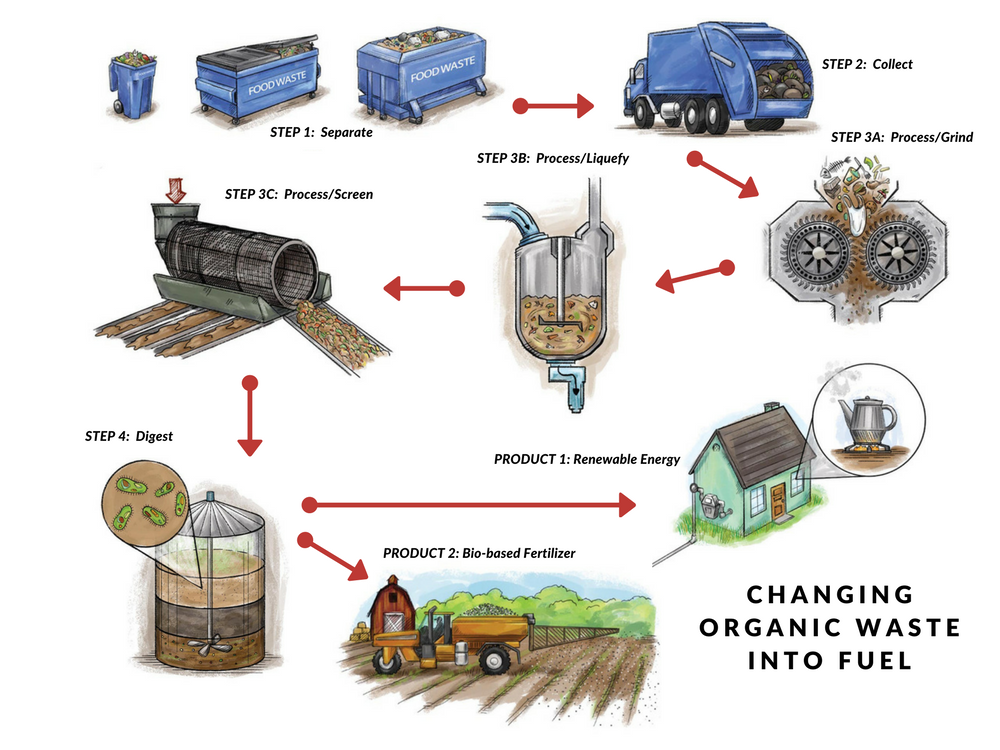
Step 1: Organic waste is separated into a designated container at a food business. Step 2: Waste is collected and delivered to Wasatch Resource Recovery facility. Step 3: Machines process the waste to remove contaminants or non-food. A. It goes into a grinder to be chopped into small pieces. B. Secondary (not potable) water is added to ground-up waste and mixed until it liquifies. C. The material passes through a screen where packaging or contaminants are washed free of remaining organic material, which is fed into the digester. Step 4: In the digester, waste is heated to aid growth of microbes, which break down organic matter without using oxygen. This produces biogas. Product 1: Biogas is captured and purified before being converted into biomethane (renewable natural gas), fed into nearby gas pipeline and sold as renewable “green” power. Product 2: The remaining product is a nutrient-rich, carbon-based fertilizer for crops.
Phase one of the project involves two 2.5-million-gallon digesters, to be operated, as mentioned, by the county sewer district. There will also be a “depackaging facility” to relieve expired edible goods of their containers. “It exponentially increases how much we can recycle. They can send it to us completely boxed and packaged, and we can do the depackaging and suddenly it’s viable,” Bowerman says.
They also have a F.O.G. (fats, oils and grease) receiving station and a depackaging station specifically for expired cans and bottles. “We can use the product inside to make energy and recycle the packaging.”
After the methane is recovered, what comes out is a nutrient-rich sludge, high in nitrogen, potassium, phosphate and organic matter — basically, fertilizer. Bowerman anticipates theirs will eventually be certified organic, once they determine its final form. Meanwhile, they’re also separating the ammonia and carbon gas from the methane for beneficial use. Wasatch plans to be operational in fall 2018.
Of the more than 1,000 sewage treatment plants in the U.S., about 216 are co-digesting food waste alongside sewage. That means 83 percent don’t yet have a food-waste digester, which amounts to a lot of money and energy being left on the table.
While pioneers like Wasatch are taking this plunge, the whole waste-to-energy industry is still coming of age. Groundbreaking advancements are frequent: Scientists at Cornell University have been playing with a process called hydrothermal liquefaction, which is a fancy way of saying “pressure-cook the food waste into oblivion.” It’s a process that recalls the way dinosaurs and their ecosystems were turned into oil under the ground. In the case of hydrothermal liquefaction, heat and pressure combine to turn food waste into an oily liquid that digests in days, rather than weeks, with more complete digestion and energy extraction.
Meanwhile, 97 percent of food waste is still getting away — for the moment anyway. But it’s only a matter of time before this low-hanging food waste will be plucked, because we can’t can afford not to.
“We wouldn’t take a barrel of oil and bury it,” Bowerman says. “And that is what we are doing with our food waste.”
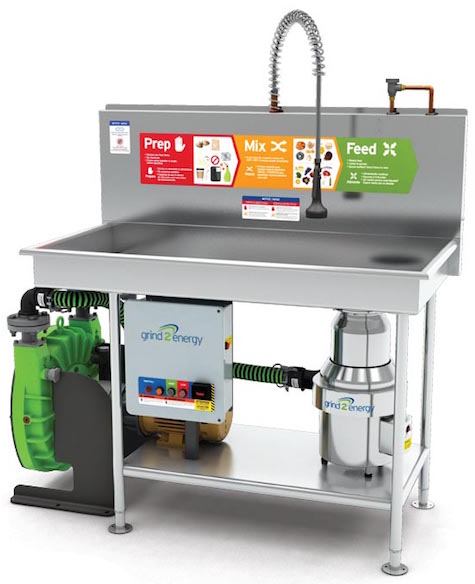
COUNTERTOP COMBUSTION
The largest garbage disposal company in the world, Emerson, wants into the food-waste energy business. Any food industry player of a certain size that deals with large amounts of raw food can install Emerson’s subunit called Grind2Energy in a food disposal area. It includes a stainless steel work area, sink and a very powerful garbage disposal. Plumbing connects it to a special holding tank for the slurry, which features a sensor that notifies Grind2Energy when it’s time to be emptied. The free service saves the client in waste transport, disposal fees and kitchen labor.
Edible Materials
Here’s some food for thought: The following products are derived from food system losses in agricultural and livestock production. These materials, currently used in buildings, apparel, consumer products and packaging, lead the way in replacing fossil-fuel derivatives and other strained natural resources with rapidly renewable food waste.

SORGHUM SURFACING The striking patterns of TorZo’s Tiikeri™ line come from post-harvest sorghum stalks. Acrylic resin combines with 50 percent agro-waste content to form a biocomposite material. Sorghum is a rapidly renewable crop grown worldwide, with many uses in food, alcoholic beverages, fodder, fuel and, of course, building materials. The panels are available in a variety of colors and are suitable for interior surfaces and furniture.

RICE HUSK CONCRETE Concrete is the most commonly used building material in the world, and it exerts enormous demand on natural resources. The production of Portland Cement, a critical ingredient in concrete, generates 5 percent of all CO₂ emissions. One agro-waste product that can be used as a partial substitute for cement is rice husk ash. Unburnt rice husk is also a promising aggregate in lightweight, insulative concrete.
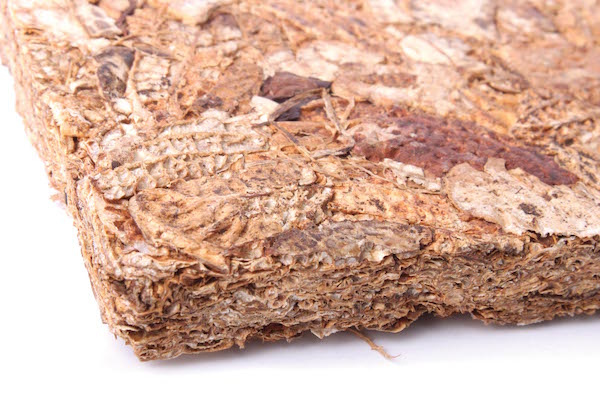
PEANUT SHELL BOARD Another shell-based material used in buildings is Peanut Shell Board from Kokoboard, an alternative particleboard that flaunts its origins. The Thailand-based manufacturer purchases unwanted shells from local farmers and presses them into use. They also produce boards from post-harvest rice and coconut agro-waste. The boards, which are suitable for interior surfaces and furniture, are free of formaldehyde.

BIO-TREATED WOOD Some agro-waste materials are harder to spot. Kebony has the rich appearance and durability of tropical hardwood, but it’s manufactured through a patented process that uses bio-based liquid derived from byproducts of the sugarcane industry. This nontoxic process permanently enhances the cell structure of sustainably grown softwoods, producing an attractive alternative to lumber from old-growth forests.

FISH SKIN LEATHER Atlantic Leather uses animal-based byproducts of the fishing industry to produce an exotic leather alternative. The Icelandic tannery utilizes the skins of four species — salmon, cod, wolffish and perch — and recently introduced MIMOSA, a line of vegetable-tanned salmon leather processed with Mimosa bark.

CHOCOLATE PAPER Don’t be deceived by the somewhat unsavory term agro-waste. James Cropper, maker of luxury papers, offers Cocoa, which replaces 10 percent virgin fiber with cocoa shell powder. The line identifies a unique and higher use for this abundant byproduct of the chocolate industry. It was developed through a packaging collaboration with Barry Callebaut, maker of fine chocolates.
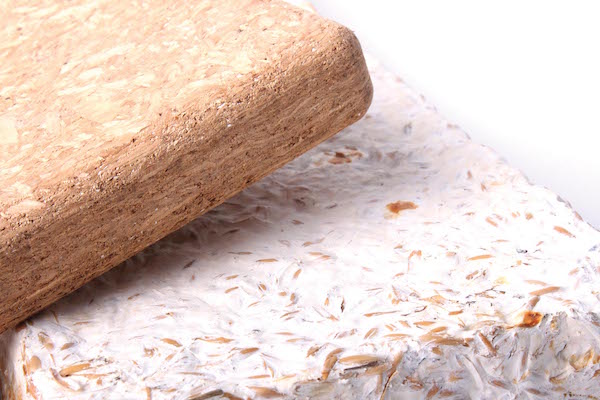
MUSHROOM MATERIALS Ecovative manufactures foam and wood substitutes from mushroom mycelium, which binds together agro-waste fibers such as flax, canola and hemp for a win-win. The material is molded or pressed into a variety of shapes and densities as packaging, acoustic and thermal insulation, and board material.

COCONUT SHELL TILES Indulge your fantasies of tropical escape with Coco Tiles from Kirei, made from coconut shells collected after harvest. The shells are an agricultural byproduct (agro-waste) otherwise subjected to open burning, a common practice that contributes to atmospheric pollution. Open burning is used in developing areas to quickly eliminate post-harvest waste and pests, and to prepare fields for planting. Converting coconut shells into building materials is a great example of transforming food-related waste into a higher-value use.

BLOODMEAL BIOPLASTIC Though you wouldn’t guess from its smooth, honey-colored appearance, Novatein from Aduro Biopolymers is made from blood meal, a byproduct of the meat industry. The bioplastic pellets have comparable capabilities to petroleum-based plastic and can be molded into a wide variety of products with different attributes, from pots and cutlery to softspun mats.

BARK CLOTH Harvested from the bark of the Mutuba fig tree, Bark Cloth is a non-woven textile with 600-year-old roots in Uganda. The trees are debarked annually and regenerate quickly, which qualifies the textile as a rapidly renewable material. Rapidly renewable content is defined by a short (less than 10-year) life or regeneration cycle. Bark cloth can be used for interior surfaces, furniture and apparel.
Heap on the Cranberry Sauce this Thanksgiving: The Bogs are Booming
In recent years, the fruit’s popularity has drawn more and more growers into the market, and the supply chain has become glutted. Don’t be surprised if you see cranberries showing up in unusual places at unusual times of year.
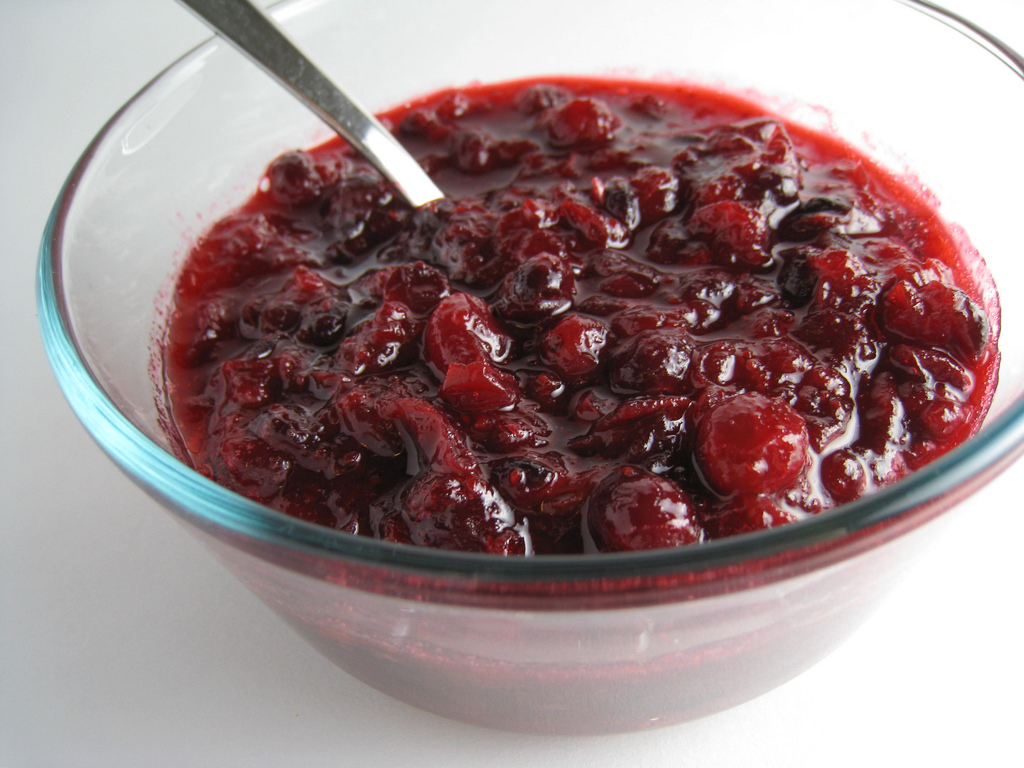
American growers have long been cultivating cranberries, primarily in Wisconsin, Massachusetts, New Jersey, Michigan, Oregon and Rhode Island, and in many parts of Canada. Until about 1930 the market was almost entirely geared toward the fresh fruit, but it’s now a year-round market driven primarily by preserved cranberries, like dried cranberries and canned cranberry sauce. Prices and demand grew steadily, even as improvements to cultivation practices increased supply.
But eventually the market became saturated. Prices peaked at $65 a barrel (or 15 cents a pound) in 1996, luring still more growers into the market before the inevitable crash in 2001, when cranberry prices dropped to $18 a barrel. In 2008, the USDA began purchasing surplus cranberries, primarily in the form of sauce, dried sweetened cranberries and cranberry juice concentrate (a byproduct of the other two), in order to support prices. The agency bought more cranberries in 2016, following a nearly $100 million purchase in 2015. The purchased cranberry products go to school lunches and other institutional kitchens, including food pantries. In 2014, nearly 68 million pounds were routed this way.
Wisconsin Rep. Ron Kind, D-La Crosse, represents the heart of cranberry country in a state that produces more than half the world’s crop. Kind has been outspoken about his opinion that the USDA purchases are vitally important to the industry at this sensitive time, but has also cautioned that the industry should not become too used to these purchases, because they will hopefully be phased out. “I keep warning the growers not to become too dependent on the USDA purchasing program,” Kind told Food + City in a phone interview.
While cutting the surplus supply is a tricky political proposition, growing the market, Kind says, is the best way out of the situation. And he sees increased international demand as the best chance of doing so. Currently, 25-30 percent of the crop is being sold overseas, and international demand is growing by 6 percent a year. Kind’s ambitions to grow the market are a big reason why he supported the Trans-Pacific Partnership Agreement (TPP) trade deal. Export tariffs will go to zero, he says, and Canada, the world’s second largest cranberry producer, will have a tougher time flooding the U.S. market with cranberries, as import tariffs like the ones Canada uses to keep out American cranberries will be banned. “This will give us greater ability to export to Canada.”
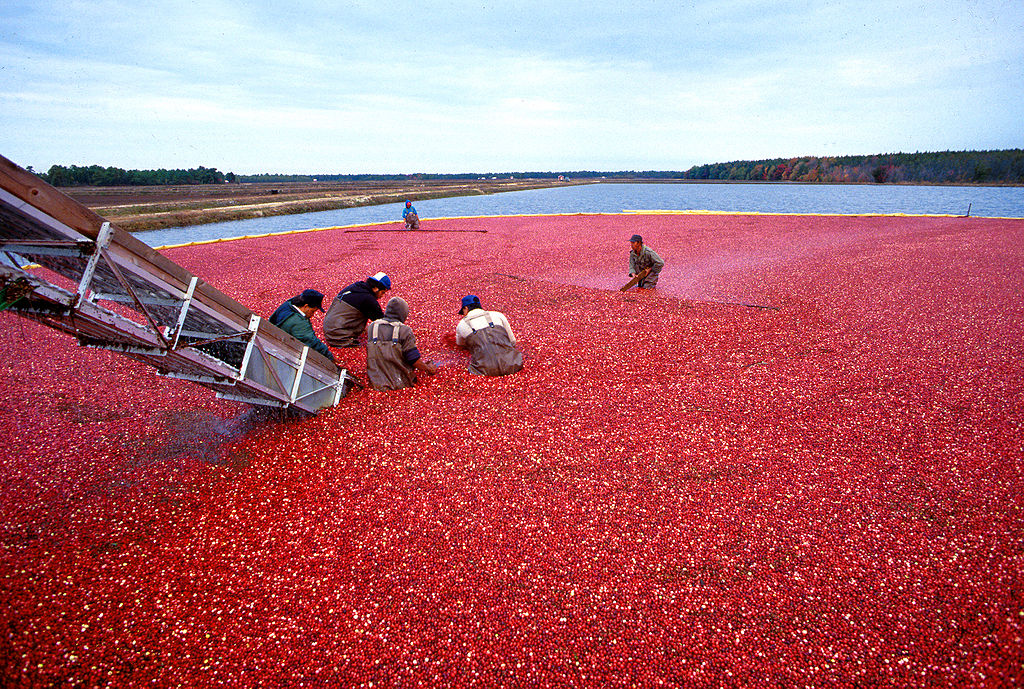
Western Europe, especially the United Kingdom and Germany, are the biggest customers. Mexico is a major user too, Kind says. Cranberries are also making their way into Asia, where markets are small but growing.
Kind is also a member of the House Cranberry Caucus, which helped secure $1.6 million in 2015 to be used in growing the cranberry market, including the funding of research into the health benefits of cranberries.
Tom Lochner, executive director of the Wisconsin State Cranberry Growers’ Association, agrees that there is a lot of potential in the health benefits of cranberry products. But taking advantage of this is problematic in two particular ways, Lochner tells Food + City. For one, the cranberry’s reputation as a treatment for urinary tract infections is not the kind of sexy benefit you want to hang your marketing campaign upon in perpetuity. Lochner is very excited about recent research on proanthocyanidins, which are believed to be responsible for the cranberry’s legendary UTI-fighting ability. Proanthocyanidins act by preventing the bacteria from adhering to tissue, thus preventing an infection from getting established.
“Antibiotic resistance is spreading. Cranberries may hold a partial answer to helping address that issue,” Lochner says. “When the proanthocyanidins are in there the bacteria can’t adhere, so it gets flushed out of the system.” He says there are potential opportunities for cranberries in pharmacological applications, like cranberry powder as a dietary supplement.
But despite the high levels of vitamin C, antioxidants, proanthocyanidins and other beneficial compounds, another health-related challenge that cranberries face is the fact that they are so tart that, for most palates, they must be sweetened in order to be edible. Meanwhile, the USDA Dietary Guidelines Advisory Committee will likely place caps on added sugars for the upcoming rounds of guidelines, which will be in effect for five years.
A prohibition against added sugars, or limits in how many added sugars a person should consume in a day, would send shockwaves down the cranberry supply chain — in particular the USDA purchasing program, which is bound by the dietary guidelines and would be limited in how many cranberry products it could purchase and legally feed to the public.
Lochner bristles at this possibility, which he calls “one of the largest issues we face in the marketplace.” The labeling of added sugars “has no basis in science,” he says. “Physiologically there is no difference between how sugars are digested.”
“Cranberry products are not empty calories,” he says.
But if the USDA does, in fact, put limits on added sugars, the cranberry industry will find other ways to move their cranberries. Juice blends, for example, where the other juices contribute their sweetness without being considered added sugars.
Whatever the final solution, cranberry farmers and their representatives will be working hard to ensure that it won’t come in the form of production cuts.
“You can’t just turn off the spigot, as it’s a perennial crop,” Lochner says. “Canada-grown fruit makes US efforts to limit production irrelevant, so supply management is off the table. Growing demand is what we’re trying to do.”
So, don’t be surprised to see cranberries showing up in unexpected places, in unusual times of the year. Cranberry popsicles, anyone?
Really, Really Smart Cities
At Food+City, we think a lot about the relationship between food and our cities. Now, through the artistry of Josh Cochran, we can look at how food might fit into future urban landscapes and what urban designers now call Smart Cities. We contacted three really, really smart people for their visions of what our food-wise city might look like in the future.
JOHN JUDGE
The president of the Appalachian Mountain Club brought his view of how plants, agriculture and the natural environment could mingle in a city. He envisioned new uses for telephone pole infrastructure as aeroponic poles, vertical gardens to be found every few feet. And he sees car-oriented technology reapplied to food, including parking lot–based planters powered by hydrogen fuel cell vehicles that plug in during working hours; and a just-in-time composting “uber” with sensors that indicate when the bin is full and trigger a self-driving composting barge to come pick it up.
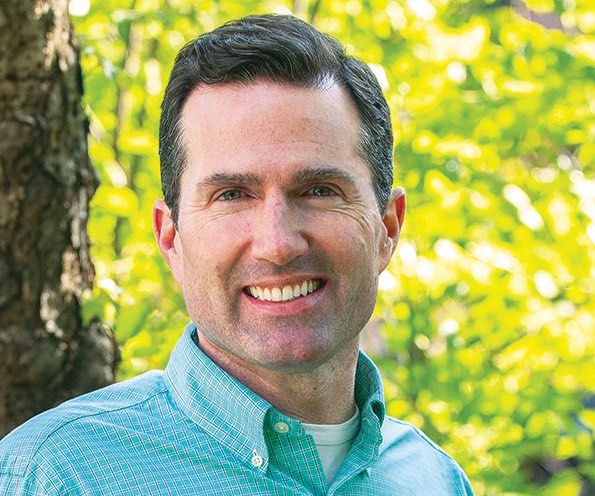
SONIA MASSARI
As director of the GustoLab Food Studies Program in Rome, Massari sees an end to restaurants as we know them but no lack of socializing over food. People will prepare food and eat on the go in their driverless cars; and solar-powered food trucks will grow their own ingredients in mobile gardens. City squares and green spaces — some on rooftops — will become open-air gyms and community gardens. And neighborhoods will be equipped with digital vending machines that sell fruit, vegetables, milk and other fresh products. In Massari’s future, every flower bed and traffic barrier will become agricultural land. Through an app, all citizens will be able to water plants and take care of these areas. Urban gardens and agricultural areas will be monitored using Information Communication Technologies (ICT) and digital devices. And perhaps most notably, food waste will disappear: All leftover food from supermarkets, kitchens, industries or urban agriculture will be gathered by food collection apps (which will direct food to people who need it) or it will be sold in supermarkets featuring soon-to-expire foods sold at a discount.

LAURIE ZAPALAC
An urban planner who works with cities as centers of innovation and food distribution, Zapalac sees kitchens as hubs of information that feed individual food supply chains. The details of our kitchen inventories will be available on our smart devices, so we avoid buying duplicate bottles of mustard — but also so that grocery delivery services can be truly automated. Along the way, recycling and compostable waste collection will be complementary services to grocery delivery: Containers will be reused rather than recycled (think the return of the milkman), and our food scraps will become the compost feeding the produce that will eventually become our next great meal. Thinking more broadly, in neighborhoods once recognized as food deserts, an expanding network of community foodscapes will combine concepts from the edible education movement with innovative forms of job training — building capacity by strengthening the soil and enhancing the beauty of once depleted communities. These places will also function as stages and urban “dining rooms,” providing venues where local culture and local identity can be shared and celebrated.

Food Entrepreneurs Find Continued Success
Whether newly hatched companies or enterprises needing a little help getting to the next level, competitors in the 2016 Food+City Challenge Prize are still going strong. We checked in with three of the Silver Prize winners to hear about their progress.
 Carolina Medina found herself in a paradoxical place after competing for the 2013 Hult Prize, a million-dollar seed-capital competition. Her team, which came together for the contest, finished in second place — but the winner took the entire purse. Undeterred, Carolina pressed forward with Agruppa, a company that leverages technology to empower mom-and-pop food vendors by providing produce at wholesale prices, eliminating middlemen. After a successful pilot in Kenya for the Hult Prize, Carolina and a partner brought Agruppa back to her home country of Colombia, and it continues to grow.
Carolina Medina found herself in a paradoxical place after competing for the 2013 Hult Prize, a million-dollar seed-capital competition. Her team, which came together for the contest, finished in second place — but the winner took the entire purse. Undeterred, Carolina pressed forward with Agruppa, a company that leverages technology to empower mom-and-pop food vendors by providing produce at wholesale prices, eliminating middlemen. After a successful pilot in Kenya for the Hult Prize, Carolina and a partner brought Agruppa back to her home country of Colombia, and it continues to grow. Carolina Medina
Agruppa
The basic issue was the cost — not the availability — of food in low-income neighborhoods. In other words, it wasn’t that the apples weren’t arriving, it’s that they were arriving at a very high cost after going through the hands of numerous middlemen, each of whom were taking their cut.
We knew we wanted to make a mobile-based solution where small shops could order directly and bypass the middlemen. Our system aggregates demand for fresh fruit and vegetables from small vendors, creating daily collective orders that add up to wholesale quantities. Vendors are economically empowered, and those living in low-income communities benefit from sustainable access to nutritious food at lower prices.
One of the biggest pivots we had here in Colombia came from the realization that Bogotá is a very large city, and distances are too long for mom-and-pop shops to come to our warehouse and pick up what they ordered the night before. We needed to become a heavy logistics company and incorporate daily deliveries to the shops—Monday through Saturday—into our model.
It was a great pivot because I realized we could be a lot more cost-efficient: It allowed us to increase the capacity of our warehouse rather than create multiple little warehouses all over the city where people would come and pick up their orders.
After bootstrapping with our current ordering channels — WhatsApp, SMS or phone calls — we’re ready to build and implement three more sophisticated channels for vendors to order their stock: a personalized app, an integrated voice recognition transactional system and a simple call center for those who are less tech-savvy and for customer service in general. This should also help cut down customer ordering time as well as optimize the logistics behind it all.
And breakeven is on the horizon! Hopefully, with 700 mom-and-pop shops — which we should have by mid- 2017 — we will become self-sustainable!
 Ashley Colpaart is a food system innovator whose business helps other food innovators. Inspired by other sharing e conomy businesses — e.g., Uber, Air BNB — The Food Corridor brings together commercial kitchens with excess capacity and nascent food businesses in need of kitchen space. It’s a win-win for all players, offering restaurants and school kitchens potential new revenue sources, and giving food producers a foot in the door to develop their products and grow their businesses. In June 2016 Ashley launched The Food Corridor’s platform in Colorado, taking on the first stage of building her market of commercial kitchens.
Ashley Colpaart is a food system innovator whose business helps other food innovators. Inspired by other sharing e conomy businesses — e.g., Uber, Air BNB — The Food Corridor brings together commercial kitchens with excess capacity and nascent food businesses in need of kitchen space. It’s a win-win for all players, offering restaurants and school kitchens potential new revenue sources, and giving food producers a foot in the door to develop their products and grow their businesses. In June 2016 Ashley launched The Food Corridor’s platform in Colorado, taking on the first stage of building her market of commercial kitchens. Ashley Colpaart
The Food Corridor
In 2015 I was reviewing applications for Community Food Project Grants to decide who would get funding. Many of the projects wanted to build infrastructure, like processing and distribution centers. But their business plans weren’t always very strong, and many lacked an asset mapping of what infrastructure already existed in their community. I was thinking, “How do you know you need to build this facility?”
During that trip, I used Air BnB and Uber for the first time, and it dawned on me that the sharing economy that exists in other sectors hasn’t been applied to the food system. Sharing is something we do with food all the time. We break bread together, people have been sharing kitchens for a long time, co-ops started in agriculture — so I thought, why not apply that same model to the food sector? I chose to do it with kitchens because that’s where a meal starts.
Our platform development process has been very customer-centric. We beta-tested our software with 12 shared-use kitchens nationally, watching them use the product and listening to them talk about their business models and what features were essential for them. Then we prioritized those features and built them. Something our Food Challenge Prize mentor said really stuck with me: “When you’re building a new product, you can build something and maybe people will want it. But if you listen closely to the problem your customer has and build a solution for it, that’s when you win.”
What’s cool about my idea is that it can be applied to any commercial kitchen asset — like refrigerated trucks, or backhauling produce, or freezer or refrigerator space. If a farmer has a bumper crop of tomatoes or there’s a hail storm coming that weekend and they want to harvest before they go to market in a few days but they don’t have a refrigerator, they could hop on The Food Corridor and find some commercial refrigerator space where they could store it for a few days. I see The Food Corridor becoming a pipeline of innovation for the food industry.
 Startup to acquisition is the ideal path for many new businesses. For Real Food Solutions, that milestone came just five months after winning a silver award at the 2016 Food+City Challenge Prize. The Boston-based company, co-founded by Neheet Trivedi, uses existing clinical research to create food-based remedies for everyday ailments, including nausea. In July 2016, they were acquired by Pink Stork Solutions, a company committed to delivering natural products to help alleviate some of the symptoms that come with pregnancy.
Startup to acquisition is the ideal path for many new businesses. For Real Food Solutions, that milestone came just five months after winning a silver award at the 2016 Food+City Challenge Prize. The Boston-based company, co-founded by Neheet Trivedi, uses existing clinical research to create food-based remedies for everyday ailments, including nausea. In July 2016, they were acquired by Pink Stork Solutions, a company committed to delivering natural products to help alleviate some of the symptoms that come with pregnancy. Neheet Trivedi
Real Food Solutions
The aha moment was seeing my sister have terrible nausea from morning sickness when she was pregnant. She was reluctant to take medication and wished for a food-based solution that would help with her nausea, be easy to eat and provide nutrition.
I knew I had to partner with somebody who has the skills and background to help build this. Through a mutual friend I met Dr. Rupa Mukherjee, a practicing gastroenterologist, who was very excited by the idea. She had a lot of patients to whom she was recommending food-based solutions, but there wasn’t a specific solution or product that she really liked. Our idea was to make products for aspects of health, starting with nausea. My role is “make it happen” — bring experts together, ask the right questions, find the manufacturer, find the customers. So I rely on people like Dr. Mukherjee to provide the input to create our products.
We started doing tests with our nutrition bar on cruise ships for people who get nausea from motion sickness. Demand was so high that we focused more of our marketing and sales efforts on that space and a little less on other forms of nausea. We haven’t let pregnant women go by any means, and they’re still a focus of the business. We just found our initial market through motion sickness. You focus on different markets based on the skills and tools you have. Business is constantly evolving.
Building a company from scratch is tough. You’re competing against incumbents and new companies, you’re competing for mind space, for Internet space. You must be thoughtful about how you’re differentiating, especially with a consumer product. We have an advantage in that people are looking for our products: They’re looking for morning sickness relief, motion sickness relief, nausea relief, so they often find us. But you must do everything you can to make it easy for them to find you — because we have a solution that we know will help them.
The goal with Real Food Solutions was to build a successful business, and there are many ways to do that. You can raise outside funds or remain private and grow a lifestyle-type business. We felt that the timing was right for us to partner with another company that had a great brand and a way to reach more customers than we could alone, and we’re excited to join the Pink Stork Solutions team.
On Our Loading Dock
Our nightstands are loaded with books to read and our laptops are packed with websites to explore and unpack some wisdom about the global food supply chain.
 Books
Books
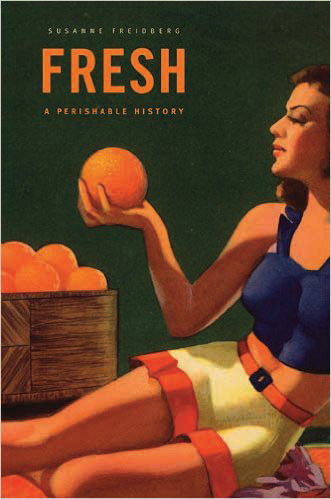
Fresh, A Perishable History
Suzanne Friedberg reveals the historical and cultural development of what “fresh” means. As early as the 1930s, consumers worried about eating too much processed food. For a fascinating look at how consumers’ thinking about fresh, frozen, canned and “shelf life” has evolved, this book lays it all out. How we feed cities will build on these histories.
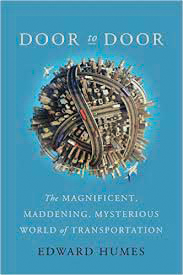
Door to Door, The Magnificent, Maddening, Mysterious World of Transportation
Edward Humes reveals surprising details about how stuff moves around the world. One highlight: You’ll get an inside look at the logistics of Domino’s Pizza, which has been in the food delivery business for decades. Blue Apron and Instacart, take note.
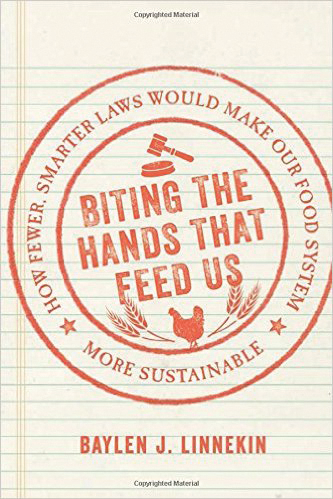
Biting the Hands that Feed Us: How Fewer, Smarter Laws Would Make Our Food System More Sustainable
Baylen J. Linnekin examines the unintended consequences of well-intentioned food regulations. For example, how grading standards and labeling requirements contribute to the food waste we’re trying to reduce. When was the last time you met a lawyer who argued for fewer regulations, and simpler ones at that?
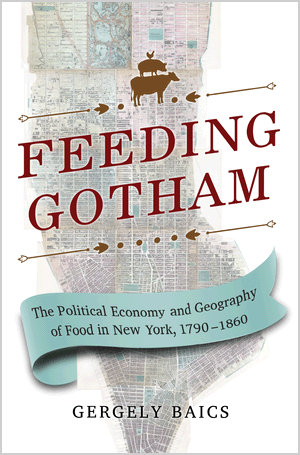
Feeding Gotham, The Political Economy and Geography of Food in New York, 1790 to 1860
Gergely Baics uses sophisticated maps to tell the history of New York’s food system over time, showing how market spaces took shape and how food producers such as bakers dispersed themselves over the landscape. It’s dense, but if you want to know why your grocery store is where it is today, study the maps and footnotes.
 Podcasts
Podcasts

Heritage Radio Network
This Brooklyn radio station makes podcasts that explain, celebrate and challenge our views of the food system. “How Great Cities Are Fed,” moderated by Karen Karp, includes a conversation with Food+City Director Robyn Metcalfe about food logistics and the supply chain. “What Doesn’t Kill You” offers views of food system experts, including Baylen Linnekin, who explores all the complications that occur when trying to feed the world.

Gravy
Host Tina Antolini explores southern immigrant food culture, including both new and old food traditions. The podcast digs into lesser-known corners of the region, challenges stereotypes, documents new dynamics and gives voice to the unsung folk who grow, cook and serve our daily meals.

Eat This Podcast
This podcast transcends the obvious to explore how the food we eat influences and is influenced by history, archaeology, trade, chemistry, economics, geography, evolution, religion and more.
 Films and Television
Films and Television

Tsukiji Wonderland
Soon after it was announced in 2014 that the cramped Tsukiji market would be moving to a larger site in Tokyo’s Toyosu neighborhood, filmmaker Naotaro Endo began shooting to commemorate this institution. Interviews with vendors plus commentary from food celebrities make this film a feast for sushi lovers everywhere.

Flowing Data: A Century of Ocean Shipping Animated
Ben Schmidt, an assistant professor of history at Northeastern University, created this seasonal, animated map of shipping paths to show how goods moved from 1750 to 1850 — long before the Panama or Suez canals opened. Imagine how those two shortcuts changed the way food moved around the world.
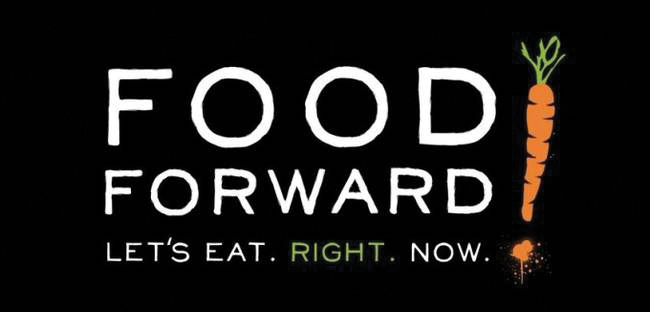
Food Forward (PBS)
This series appeals to our enthusiasm for visionaries and innovation within the food system. One episode suggests we might consider foraging in the woods for our food. Another visits Cornell’s Food and Brand Lab to hear from a food psychologist about how we make food choices.
 Websites
Websites
BLDGBLOG (“Building blog”)
Geoff Manaugh is a writer and futurist who connects technology and humans in a way that will get you thinking about the world around you, including food logistics. Grasping the urban built environment is essential to understanding how we feed cities.
Food for Thought: Labelology
Your fruit and vegetables come with a surprising amount of information about their history and origins. Each sticker has a code printed on it along with the grower’s name and logo.
These codes are called PLUs, or Price Lookup Numbers (why isn’t the acronym PLN, then?) so the store can find out the unit cost for each item. If a number consists of four digits, the item is conventionally grown; if the number consists of five digits and begins with an 8, the item is genetically modified. And if the five digits begin with a 9, you’re buying organic produce.
Some producers are going the extra step and adding QR codes that take you to a producer’s website where you can find all kinds of information, including the names of the producer’s pet sheep. In the future, be prepared for even more transparency — labels may disappear as scanners and digital “ink” become cost effective. Perhaps the store shelf will notice which fruit you put in your basket and send accompanying data to your cell phone. These paper stickers will be the old papyrus scroll for food storytelling.
(Did you know you can eat the labels? All the materials in the paper, ink and glue are food grade. C’mon, we dare you….)
Recipe Tracker: Tart in Ymbre Days
Cookbooks are more than collections of recipes. They may have a theme (Appetizers! Cookies! Tacos!) or showcase a particular cuisine (Thai, Italian, Parsi). Some cookbooks tell stories to contextualize their dishes or ingredients, offering the history of a meal or its place in a holiday tradition. Others provide detailed instructions about technique, inviting the reader to start with this recipe, then try other ingredients using the same method.
But cookbooks are also products of their time. Just compare the aspics, crown roasts and cheese balls found in Helen Corbitt’s 1957 classic with the sous vide chicken breasts and kale salads in a contemporary volume. Cookbooks reflect not only trends in food preparation and flavors but also the availability of ingredients in a certain era and region.
Take, for instance, “The Forme of Cury,” a collection of recipes recorded by a master cook working in the court of King Richard II. It’s one of the earliest known cookbooks and was probably made as a record of food served, rather than as a working cookbook. There are a handful of copies, all handwritten before the advent of printing centuries later.
“There’s no way really to tell if anyone ever used them, unless you look at the stains on them,” says Ken Albala, a Renaissance historian and food scholar at the University of the Pacific. “Chances are these were not brought into the kitchen, because usually cooks were not literate. But whoever wrote these down obviously was.”
Some of the ingredients used in 1390 will seem quite familiar: game (consumed more by nobles with estates), pork, chicken, butter, cheese, eggs, vegetables, spices. But the preparations differ from dishes we eat today. “The way they think of food, the colors they like, the flavors, the textures, the ingredients — it’s a completely different cuisine” than contemporary European fare, Albala says.
The origins of much medieval cuisine are in the Muslim Middle East, Albala explains. Those ingredients and techniques moved to India with Mughals and then to Spain and the rest of Europe. From there they traveled to Mexico with the conquistadors in the 1500s. “The moles of Mexico are the long-lost cousins of the curries in India,” Albala says.

Tart in Ymbre Days, as prepared by the author. It’s basically an onion frittata, dotted with raisins and delicious with a salad.
The generous use of spices in royal repasts was a display of wealth and status. Pepper and cinnamon traveled from India, while cloves and nutmeg originated in Indonesia and ginger came from China. Passing through the hands of Arab and Venetian merchants during their years-long journey, the exotic spices in use in the 14th century were exorbitantly expensive, accessible only to the wealthy.
While spices were sold in apothecaries, staples, such as milk, cheese, butter, grains and bread, were available in food markets, set-ups that resemble our modern farmer’s markets. “Food markets go back to ancient times,” Albala says. “In England, there are markets that started in the middle ages that are still there.” As with any type of market, the laws of supply and demand came into play. In the years following the plague — the period in which the Forme of Cury was written — the population was down, so wages were higher; thus, meat consumption also increased. As the population rebounded, wages fell, and the poor ate less meat.
Diets of the 14th century were influenced by more factors than just the availability of ingredients. Religious traditions and dietary rules informed daily menu planning. “Religion determined what you could eat seasonally and during fast days,” Albala says. “Lent, vigils of saints’ days — probably a third of the whole calendar is fasting.” The Tart in Ymbre Days recipe on this page is a kind of crustless quiche that contains onions, eggs, greens, raisins and “powder douce,” a common mixture of ginger, cinnamon and sugar (the original pumpkin spice!). Ymbre Days are quarterly sets of fasting days that mark the seasons of the Christian calendar. Because they fall outside of Lent, they were considered moderate fast days: meat was prohibited, but eggs were not.

Ken Albala, Renaissance historian and food scholar at the University of the Pacific. Check out his Food Rant.

Check out Ken Albala’s explorations of world cuisines, his cookbooks and his Great Courses on food and history.
Knowledge about fast days and how to put meals together would have been passed down orally, by peasant families and royal kitchen staffs, without the use of cookbooks. For one thing, most cooks weren’t literate. “We learn by looking and hearing and smelling, and not approximating through words,” Albala says. In fact, the whole notion of learning through cookbooks is a practice that may not last much longer, Albala believes.
“I think in the future we’ll have interactive videos, or some kind of instructional media where you can stop and ask questions, look closely and zoom in,” Albala says. “Perhaps something that will know what ingredients you have in the kitchen, know what kind of equipment you have, will adjust for your altitude or your allergies and could make working recipes for you. I think probably in our lifetime we’ll see cookbooks go extinct, or they’ll just be a rare, interesting artifact for people who like to collect them.”

Are you moving away from cookbooks to other kinds of instructional media? Which cookbook taught you the most? Tweet us @foodcityorg.
How a Little Startup Fixes a Big Food Chain Gap
In rural India, dairies may have only one or two cows and the power grid is spotty at best. The chance to improve the supply chain link from producers to distributors in these conditions offered some surprising lessons to an American startup anxious to solve the “milk challenge.”
The verdict was devastating:
“This will never work for us,” our customer said. It had taken three years to develop a solar refrigerator to solve rural India’s milk spoilage problem. But our prototype, which we unveiled in early 2011, was “too big, too expensive and difficult to install.” We were back to square one. I’m not from India, and no one on our early team had a connection to the country. Despite this — or perhaps because of it — we were captivated by the milk challenge in the world’s largest democracy. And the engineer in me thought I could fix it with the right technology. Turns out, I had a lot to learn.
We first heard about the milk problem in 2007. That summer my business partner Sam White and I were in India conducting a market survey for a solar turbine we developed that was designed to generate hot water and electricity for off-grid schools and clinics in rural India. We found ourselves in Bangalore on a Saturday morning with nothing to do. My partner picked up the phone and cold-called the managing director of Bangalore Dairy, one of India’s largest milk producers. A few hours later we had a meeting scheduled. We walked into his office to find him and his team of 14 engineers seated around a large conference table. They politely listened to our solar pitch, but their reaction was similar to what we had seen before: “It sounds interesting, but how does this solve our problem?”
In the case of Bangalore Dairy, their problem was milk spoilage, and our solar technology had nothing to do with milk. The meeting quickly turned into a reverse pitch where the dairy engineers were asking us for help. This is how I learned about India’s dairy supply chain and the milk challenge.
A RIVER OF MILK
India is a hot, largely vegetarian country that depends on milk for its calories and protein. Milk is used in curries and chai tea and is the product of the (literally) sacred cow. India is the largest producer and consumer of milk in the world. But production in this nation of 1.3 billion people is nothing like the factory farms of the United States.
In India milk is collected from small, individual scattered across the countryside. Each one produces 5 to 10 liters per day — compared to an average output of 6,000 liters in a typical U.S. dairy farm operation. The small amounts of milk produced by individual farmers in remote villages create a massive supply chain challenge for dairy processors who collect the milk, pasteurize it and turn it into finished dairy products sold in major urban areas like Mumbai, Delhi and Chennai. In a country like India, where nearly 50 percent of the employment is in agriculture, urban prosperity depends heavily on the health and vigor of the rural economy.

SACRED COWS
In India, cows are held in high esteem in Hinduism, the dominant religion in India. They represent food, fertilizer and economic value. Wandering through traffic, into homes — practically anywhere — cows are privileged members of society. No wonder Grama’s company got the attention of Indian dairy businesses. Keeping cow milk fresh could be sacred business.
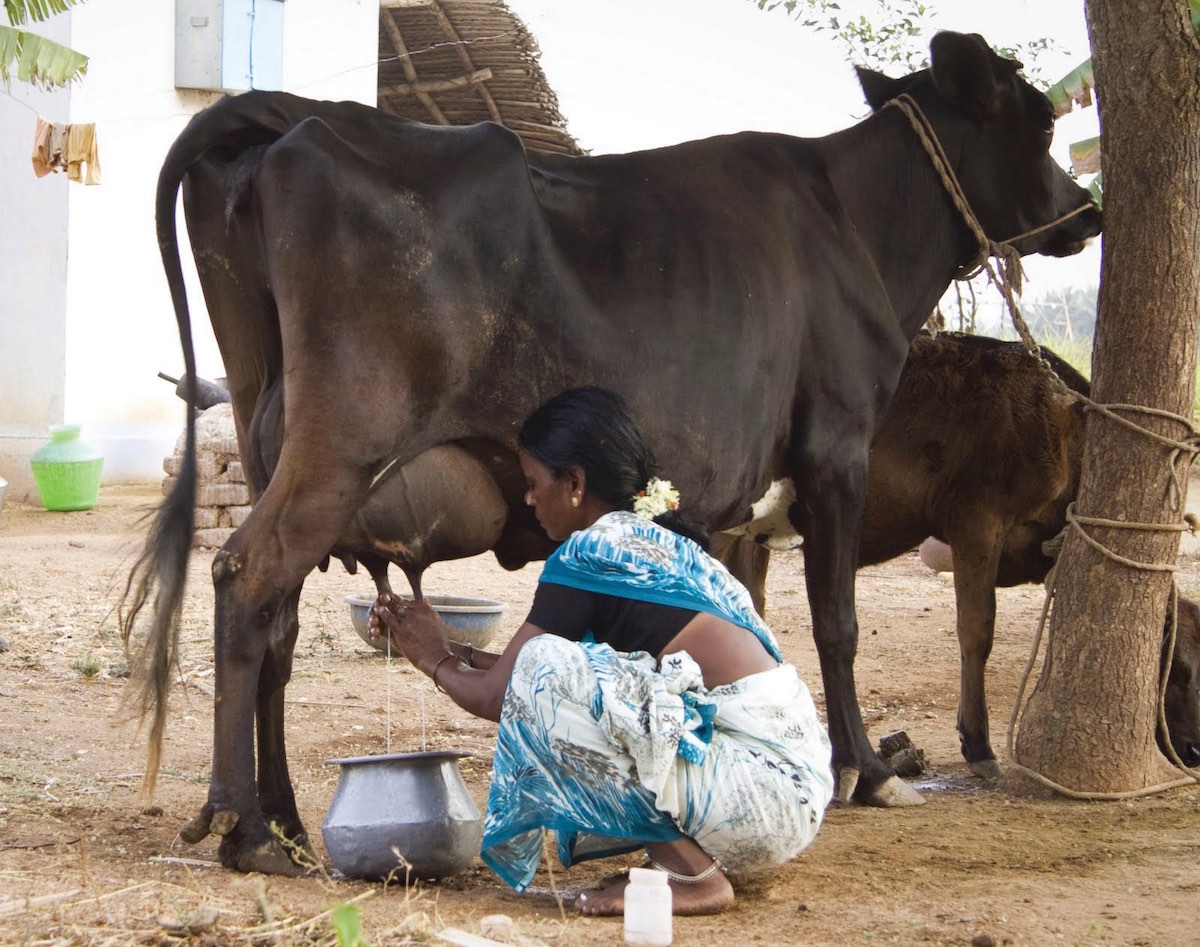
Dairy cows must be milked twice per day, but the milk often spoils before it reaches distributors because Indian roads can be hard to navigate. Grama sought to prolong the milk’s viability to improve the production process. Image by: Lance Casey
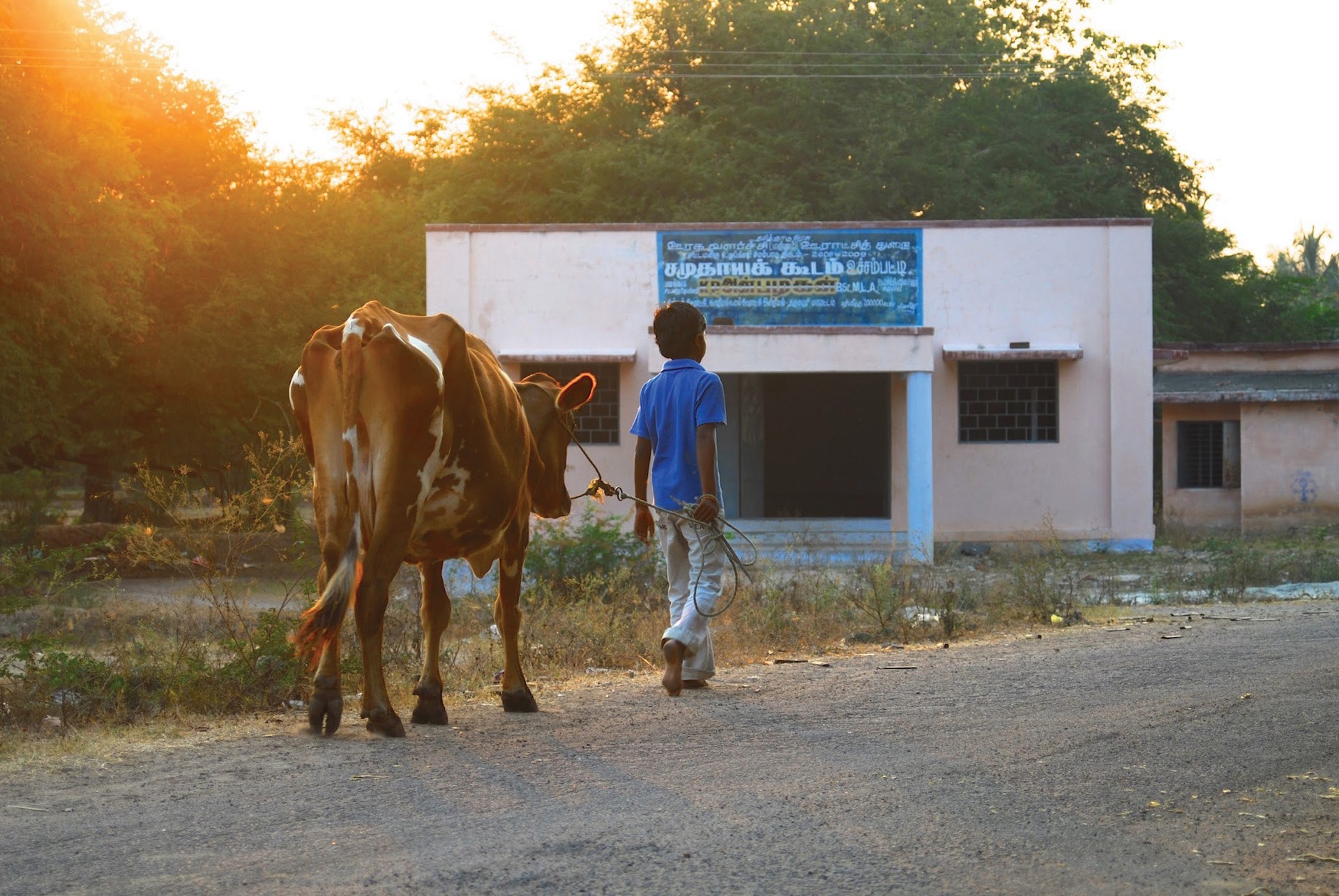
Indian dairies often have only one or two milk cows — tiny operations compared with U.S. dairies that have thousands of animals. Image by: Lance Casey
Milk is like a river that never stops. Raw milk must be aggregated, transported and processed quickly before it spoils. And it must be done twice a day — morning and evening to coincide with the milking schedule — 365 days per year. For farmers, milk is like liquid gold. Rural households depend on sales of milk for disposable income. Unlike other agricultural crops, milk is a daily harvest, and Indian farmers get paid a good amount for their milk. Up to 60 percent of the price of pasteurized milk sold in urban markets goes to these small dairy farmers.
Chilling milk to 4 degrees Celsius immediately after milking preserves its freshness, prevents spoilage and enables it to be transported once a day instead of twice. Refrigeration at the source could elegantly solve all the problems associated with this distributed production system in a single step. But neither industrial milk refrigeration equipment — widely used in most of the world — nor reliable electricity is generally available in rural India.
Thus, the never-ending schedule and lack of refrigeration means transportation costs are enormous, spoilage rates are high and milk quality is very low. What’s more, only those farmers who can be reached within a five- or six-hour ride can deliver milk to central processing facilities.
SOLAR SOLUTION
Enter our solar-powered solution. To address the underlying problem of energy access in villages, I designed a milk chiller powered by solar photovoltaic panels. In the mid-2000s solar technology was sexy — it was coming down in cost and gaining more acceptance. I was passionate about using a renewable, clean form of energy and was determined to make it work. When we mentioned solar to customers and investors, everyone got excited. After all, India is a very sunny place.
After some trial and error, we unveiled our prototype, ready to test it. Unfortunately, on that sunny day in South India in February 2011, my dream of using solar power crashed and burned. The prototype failed to impress our first customer, who had been so interested in our solar solution. He told us that our system was impractical and too expensive for Indian conditions. With that rejection ringing in our ears, we laid off our staff and paused to think about the next steps, if any. After more than three years of work, we were back to square one.
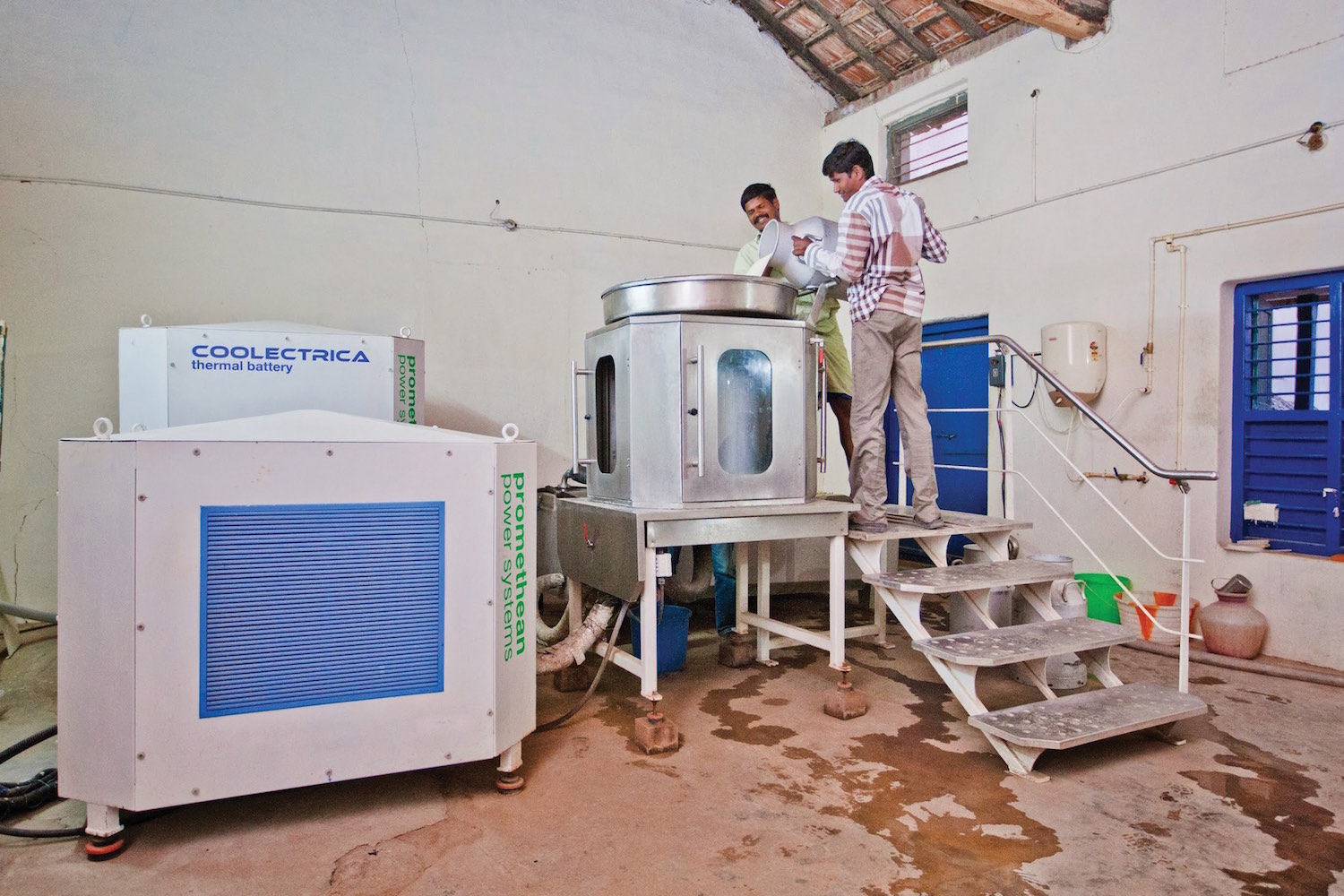
Grama’s solution was a thermal-battery-powered refrigerator that chilled raw milk, preserving it, at the collection point in villages where milk is sourced. The refrigerator’s thermal battery stored energy from the unreliable electric grid in the form of ice, which kept the milk cool until the dairy processors could come to collect it.
But the problem was too big to ignore. What’s more, the customer who rejected the solar system encouraged us continue the effort. Like us, he finally understood that solar was a pipe dream and was willing to continue working with us to find a better solution. The simultaneous rejection and encouragement was effective. With some retrospection, I realized that my passion and bias for solar technology took my focus away from the real problem that needed to be solved.
Most villages in India are already connected to the grid, but the grid is not available around the clock and not always when it’s most needed. This insight led me to a better solution: a battery. If I could store energy from the grid, I could use it during the times when the grid is off.
As it turns out, I had designed a battery for our solar system. I didn’t think much of it because it was just a necessary component to make solar technology work. But it was not just any electrical battery; it was a thermal battery designed specifically for refrigeration. It stores energy in the form of ice and is less expensive and lasts longer than an equivalent electrical battery. With just a few hours of grid power we could run a refrigeration compressor — like the one in your home refrigerator — and make ice. When the grid power is off, the ice chills the milk.
I quickly built a new prototype and tested it — it worked! The simple and inexpensive solution won the day. To solve a big problem in an emerging economy like India’s you often don’t need fancy technologies. You need simple, practical technologies because they’re more affordable and easier to maintain.
PRODUCTION CHALLENGES
Alas, solving the technology didn’t fix everything. Scaling the technology was a whole new challenge. I moved to Mumbai in 2012 to oversee the commercialization of our milk chiller. Progress was slow. A partnership with a manufacturer in Mumbai fell apart when we realized they were investing in another company that was working on products that would compete with ours. Good suppliers were difficult to find and product quality was inconsistent. We had to be vigilant about every single component that went into our system.
In addition to production challenges, we had trouble creating a market. Dairy processors in India, the potential buyers of our technology, are conservative and slow to change. Fortunately, our outsider status as an American company opened many doors. American-made or -designed products are generally viewed positively in India because they are considered to be higher quality. We got meetings with general managers of all the top dairies in India. Innovation in the dairy sector is not very common, and these executives were intrigued by our technology.
But converting initial sales meetings into actual orders was far more difficult than we expected. Adopting a new refrigeration product and changing a decades-old milk collection process was too daunting for most dairies. Only a few visionary leaders who understood the value of higher quality raw milk would adopt the technology. With much effort in the lab and long hours in the field, we delivered and installed 50 systems by the beginning of 2014.
Suddenly, everything came to a grinding halt. While our first customers were absorbing and evaluating the new system, other potential customers were waiting to see the outcome of these trials. Months went by without new orders. We started to wonder if we had missed the market.

Design for the Developing World
When doing business in India, Western business models do not always apply, says Prabhudev Konana, professor of supply chain management at The University of Texas at Austin.
“Most Western business models are based on massive economies of scale, but that doesn’t work in India,” Konana explains. “Production is fragmented. Distribution is extremely complicated.”
With thousands of tiny producers — e.g., dairy operations with one or two cows — and a rural road system that’s sometimes passable only by bicycle, India offers a business environment where simplicity and consistency reign supreme. Technology must work seamlessly, every single time; if it doesn’t, people won’t be willing to risk their tiny margins on it.
“How you design things for less educated, economically poor people is an art in itself,” Konana says.
MEETING MARKET DEMANDS
I spent many days in the field observing our systems, talking to our customers and trying to understand what was wrong. Sometimes customers would tell me directly what they didn’t like about our system. But most of the time, I had to observe and listen carefully to the things they didn’t say in order to understand the hidden needs and frustrations. The effort paid off. The design needed a few more tweaks to make the system easier to clean and operate and more energy efficient. After we made these changes, new orders started to come in within weeks.

Grama, at right, spent time learning from iterations that failed before finding the right solution. He sought feedback from his customers at every step in the journey.
Most notably, our very first customer — a charismatic and visionary industry leader who rejected our solar system and challenged me to find a better solution — began to place repeat orders. He became an valuable champion and the largest user of our technology. To date, he has installed more than 250 systems in South India. I owe him a lot of credit for our success: He was tough and friendly at the same time. Tough because he constantly pushed me to reduce costs and friendly because he was always available to lend a hand when I got stuck. I would spend hours with him drawing concepts and calculating economics of different configurations on a whiteboard in his office. I think he saw a genuine effort on my part, and with that I gained his respect, attention and eventually his business.
It has been a long and arduous journey, but I’ve learned so much. I’ve learned the value of being immersed in the market and the environment where our customers operate. I’ve learned that assumptions need to be frequently checked and adjusted to reality. And I’ve learned that while you might start with a technology looking for a problem to solve, success comes when you actually solve a customer’s problem.
Grama and White talk about their journey with Promethean Power Systems.
Rio’s Recipe for the Olympic Games
The usual weather in Rio de Janeiro during winter is somewhere between 71 F and 86 F. Around 9 a.m. in late July, the sun shines strong on the horizon. Rather than enjoying the warm winter weather last year, Romano Fontanive, the executive chef at Sol Ipanema Hotel, was exasperated.
That’s because two weeks before the Olympic Games began last August, he was dealing with a significant schedule change: having to purchase food for the restaurant at 7 a.m. instead of at midnight. The shift had more consequences than simple inconvenience. No air conditioning system can prevent what the heat, sun and long lines of traffic in Rio can do to a lettuce leaf at that time of day.
The chef had to stop buying food during the cooler temperatures of night because the Ceasa Market, the most important food market in the city, which provides 80 percent of everything consumed there, changed its working schedule during the Olympic Games from 12 a.m.–10 a.m. to 7 a.m.–5 p.m. Rio’s city government implemented restrictions for truck circulation during the 30-day event (including the Paralympics). With 800,000 tourists in the city, one of the government’s biggest concerns was to ensure fluid traffic for visitors. Unfortunately, the solution that eased road congestion created a nightmare for the supply chain of food and other goods. “I lose approximately 30 percent of the vegetables I buy every day,” Fontanive said last summer. “Life won’t be easy during the Games.”
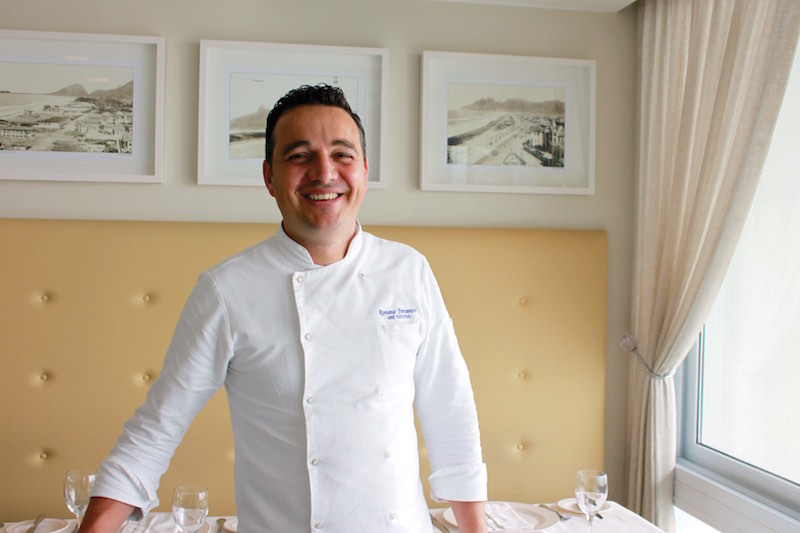
Chef Romano Fontanive, executive chef at the Sol Ipanema Hotel in Río, had to make major changes to his food delivery schedule due to transportation rules changes during the Games. Nevertheless, he was optimistic about the Olympics’ success. “We need good news in this country right now,” he said in July 2016.
HAULING IN THE DARK
Ceasa is controlled by the state of Rio de Janeiro and works like a giant farmers’ market: food producers rent stalls to show and sell their products in a 20,000-square-foot hangar. There are 800 companies and 2,000 producers registered. Every day, 3,200 trucks pass through Ceasa’s gates. But between July 19 and Sept. 9 (the lead-up to the Olympic Games through the opening of the Paralympics), moving around the city was harder than ever. The plan to reduce traffic for the Olympics forbade trucks from crossing specific areas at different times of day. In Ipanema, for instance, the prohibition was from 6 a.m. to 9 p.m. on weekdays. Many of the vehicles had to wait at the market’s parking lot until the nightly driving window opened when they could drive back to their farms or transport products ordered by customers in the downtown areas. The regulations affected not only Ceasa, but all food providers. Trucks were only able to move freely from midnight to 6 a.m., which means establishments had to keep their employees waiting during non-commercial hours to receive deliveries. The Supermarket Association of Rio said before the Games that the rules wouldn’t affect product offerings in terms of quantity, but it might affect their prices, since the companies could decide to pass the extra costs along to the customer. The Cargo Transport Federation of Rio estimated that 3,000 companies would be strongly impacted, with losses of around 20 percent.
To prepare for the disruptions, the Sol Ipanema Hotel — located at Ipanema Beach, one of Rio’s postcard views — began organizing for the Olympics in the spring of 2016. “Our occupancy rate is high all year, so it’s not hard to adjust our supply,” said Fontanive at the time. But what did change was the amount of perishable food they bought each day. “We are buying more seafood, fish and vegetables to replace what is spoiled during transport” — 20 percent more, Fontanive said. Despite the turbulence with the food supply chain, the chef hoped for the best.
Farther away from Ipanema, going up to Babilônia Hill, one of Rio’s slums, David Bispo seemed less concerned. Bispo is well known in the city after winning several food contests with recipes inspired by the favela’s cuisine, like a mix of seafood with beans. Since the favela was pacified by Rio’s police force in 2010, the Bar do David has become an exotic destination for tourists. Like the Sol Ipanema, Bar do David relies on Ceasa Market as its main food provider. But unlike Chef Fontanive, Bispo wasn’t worried about the food supply during the Olympics, explaining that one has to dance according to the music to make it work. “It’s the jeitinho brasileiro [the Brazilian way of life]: we make it last minute, but we make it work,” Bispo said in July, referring to both his bar and the city’s planning for the Olympics. He decided to wait and see how the first days of the games went before changing his menu or buying more supplies.

JEITINHO BRAZILEIRO
A typically Brazilian method of social navigation where a person may use emotional appeals, family ties, promises, rewards or money to obtain favors or to get an advantage. The expression also comes from the necessity associated with a lack of resources and help. “Jeitinho” comes from the expression dar um jeito, literally, “to find a way.” It implies the use of resources at hand, as well as personal connections and creativity.
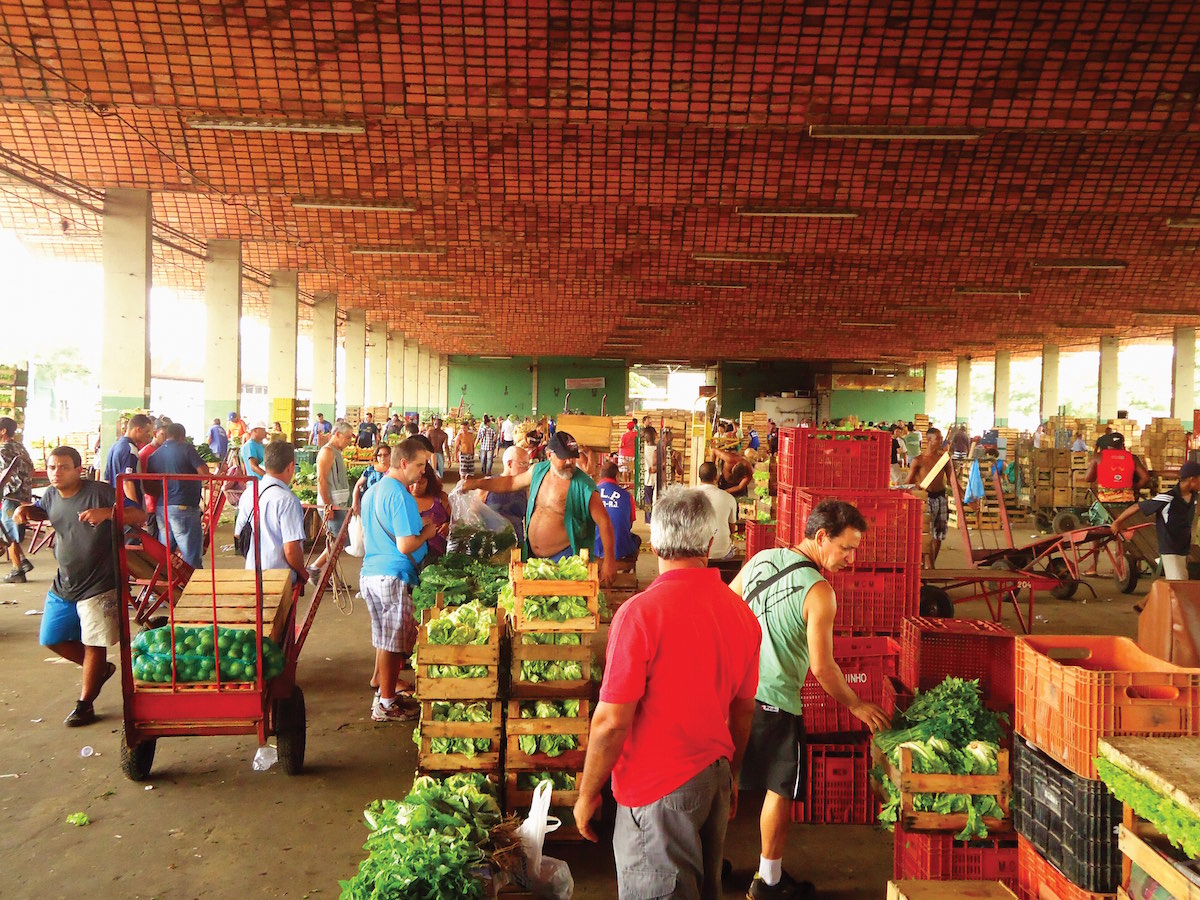
One of the largest food markets in all of Latin America, Ceasa covers 7.5 million square feet. Famous for its flower and plant markets, Ceasa serves citizens as well as restaurants and other businesses in Rio. Image by: Luis Barrios
FEEDING CHAMPIONS
Tourists weren’t the only visitors in Rio last summer. Some 11,000 competitors chasing medals descended on the city, and all of them had to be fed, too. Despite early concerns that the Olympic Village wouldn’t be ready for the thousands of athletes, coaches and trainers when the delegations arrived, the restaurants opened for business. In the Olympic Village, Sapore — a São Paulo-based catering firm that managed food in 12 stadiums during the 2014 Rio World Cup — ran five restaurants with a total combined area equivalent to three soccer fields. They served European, American, Asian and Brazilian specialties 24 hours a day, including pizza, salads, hamburgers, several kinds of pasta, Japanese food, cold sandwiches and some typical Brazilian food, like feijoada (a stew of beans with beef and pork) and coxinha (chopped chicken meat, covered in dough, molded into a shape resembling a chicken leg), with meals also prepared according to Jewish and Islamic specifications. More than 250 tons of food was served per day. That included 100,000 loaves of bread and 3,000 pizzas.
One of the requirements of the Brazilian Olympic Committee (COB, in the Portuguese initials) during the bidding for caterers was to use as much local food as possible, starting with food produced in Rio, followed by products from the rest of Brazil, then South America and finally internationally. Sapore didn’t have to go that far. All the ingredients in the Olympic Village were procured from Brazilian farms, except for a species of foliage typical of Korean cuisine that is not produced in large quantities in the country.
Ingredients arrived at Sapore’s kitchen all day. Twenty-five heavy-load sealed vehicles transporting food for the Olympic Village received permission to circulate on a different schedule than the one followed by other trucks in the city. “The truckers working with us have authorization to make the deliveries on time,” said Veridiana Corrêa, Sapore’s executive director for the Olympics, last summer. Before disembarking to the kitchen, however, products were taken to Sapore’s Food Quality Center in Duque de Caxias, a nearby city. A team of specialists checked the products according to rules set by Anvisa (Brazil’s authority on health surveillance) and the International Olympic Committee. The suppliers were instructed to send fruits, meat and vegetables already peeled, chopped and ready to cook as a way to reduce waste and facilitate work in the Olympic Village. There, another team was responsible for a final inspection of the ingredients.
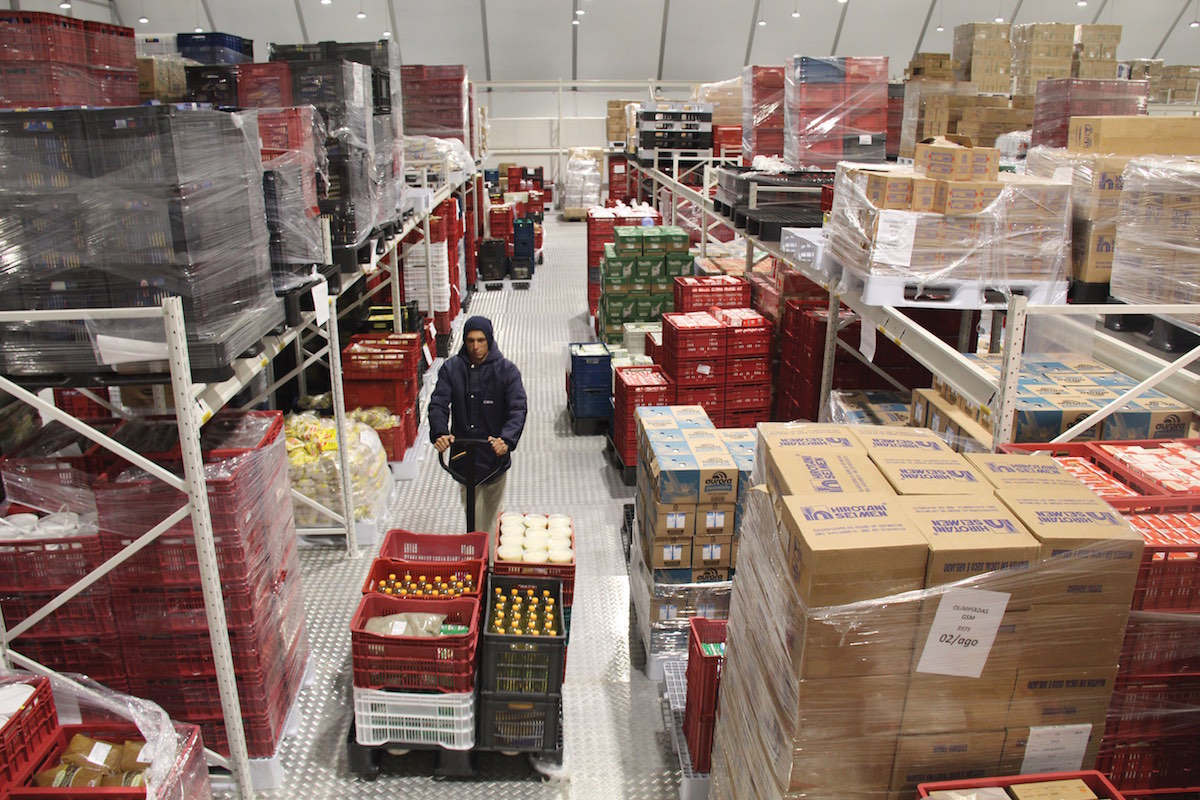
Sapore’s Food Quality Center in Duque de Caxias. Before being delivered in the Olympic Village, the food is inspected here.
Technology helped Sapore’s 2,000 employees working in the operation. Computers monitored the temperature of 345 ovens, refrigerators and freezers 24 hours a day. A cloud-based system used cameras in the dining halls to count how many people were in the restaurant and send the kitchen an estimate of the amount of food needed. A digital spreadsheet with previously collected data also helped the chefs calculate how much food should be bought and prepared, according to the number of athletes in the Olympic Village.
All food served was free to the athletes, who could choose from healthy meals, like light sandwiches and salads, or fast food items — a choice that proved vexing for delegations’ nutritionists during past games. (Some teams, like the Australians, brought suitcases with supplements to ensure their competitors keep their diets on track.) In fact, Corrêa said, during the first days of competition, athletes ate a lot more fast food than the company thought they would. But as more events got underway, “the demand for salads and vegetables began to increase as more and more of them started to compete,” Corrêa said. And once those competitions were over, many athletes tossed their strict training regimens. “We don’t have a number of how much fast food was consumed, but I can tell you this: The swimming teams, specially the American team, can eat burgers as I have never seen someone eat before,” Corrêa said.
“A TASTE OF THE GAMES”
The plan for feeding the athletes was published in a 37-page document called “A Taste of the Games.” When it was created in 2012, one of the COB’s biggest commitments was using organic ingredients in the Olympic Village and the rest of the buildings. The plan was to encourage the catering companies to participate in an organic food supply program, called Rio Sustainable Food, by making that a distinctive factor during the bidding. With enormous quantities of food served in the Olympic buildings, it made sense to use this as an opportunity to help organic farmers, who usually lack a formal education and money to invest in their business, and often suffer from the competition of bigger and non-organic farms. But in the end, only one of four caterers hired by the COB signed up to participate in the program. The impact was negligible: R$4,000 (about $1,200) during the Olympic and Paralympic Games.
Another vow was to minimize food waste. Approximately six tons of produce and other ingredients went uneaten every day in the Olympic Village. But their destination was not the trash. Each day during the Olympic and Paralympic Games, the excess was transported to Refettorio Gastromotiva, a soup kitchen created by the Italian chef Massimo Bottura (the best chef in the world, according to the 2016 World’s 50 Best Restaurants ranking) and social initiatives in Brazil. The items were ingredients that would have been wasted, such as vegetables considered out of the norm for sale in supermarkets: “We are talking about an ugly tomato, an imperfect zucchini, already mature mangos or flour to make bread,” Bottura explained to the BBC. Bottura and his army of volunteer chefs from all over the world served the extra food from the Olympic Village to the poor people of Rio (2.8 percent of the city’s population live on less than one dollar a day, according to the Brazilian Institute of Geography and Statistics). “This is not just a charity; it’s not just about feeding people,” Bottura said in a New York Times article last August. “This is about social inclusion, teaching people about food waste and giving hope to people who have lost all hope.”

Italian Chef Massimo Bottura created the Refettorio Gastromotiva, a large pop-up soup kitchen repurposed food from the Olympic Village into meals for Rio’s poor during the Games. Image by: Angelo Dal Bo
As for Chef Fontanive and David Bispo, they managed to withstand the major logistical hurdles. Bar do David was operating on full capacity during the Olympic Games and the Paralympics. “We had long lines of people at our door on the weekends,” Bispo says. He estimates that the number of clients was up 30 percent during the games. To manage the traffic snarls, he hired two helpers and avoided Ceasa Market altogether. “We decided to buy food in another farmer’s market, farther away,” Bispo says. “It was faster to cross town than to go to Ceasa.”
Fontanive took a different approach. After the first truck regulations were published in mid-July, Fontanive predicted chaos with deliveries. As part of his early planning, he decided to stock all non-perishable items used by the hotel’s restaurant, especially grains and beverages. “I had to reduce my dependence on the delivery trucks,” Fontanive explains. “We had to adapt. It was a very busy time for business, but the city didn’t plan well enough for the business owners.”
LIVING WITH THE LEGACY
“The Olympic Games bring more than the Olympic Games.” The quote, printed on a giant billboard in the middle of Rio de Janeiro in the lead-up to the Games, tried to remind cariocas (the term for Rio natives) why hosting the event would be good for the city. It will leave legacies, it claimed. According to Datafolha Institute, 60 percent of the population was against the Olympics in Rio, because they believed the resources of a country in crisis should be destined to deficient areas like the public health system and schools. During the opening ceremony, though, this pessimism was momentarily forgotten, as the country put on a simple but energetic performance to receive the 207 participating delegations.
But almost six months after the games ended, many of the touted “legacies” are not part of the population’s reality. Many construction projects weren’t finished, and certain plans, like Rio Sustainable Food, weren’t fulfilled. The houses and apartments in the Olympic Village still aren’t being used for social housing programs, as the government planned. Nobody, not even the leaders of those programs, is sure why. The promise of visibility for the city, in the expectation of attracting tourists and investments, also might be compromised with news reports of political corruption, financial crises and violence spreading all over Brazil. Police, firemen and many public employees have not been paid since June 2016, and the unemployment is 11 percent and rising. Even Rio’s other well-known splashy events are being scaled back: the 2016 New Year’s Eve party was the smallest in 10 years because of a budget shortfall.
As of December 2016, food-related expenses of the Olympics were still not quantified by Brazilian Olympic Committee, which is keeping a low profile as the city faces a major economic crisis. Overall, the games are projected to cost $12 billion, with 57 percent paid for by Brazil’s government and 43 percent by sponsors. There were some good outcomes: the 1.6 million tourists that came to the games spent R$424 (USD$125) a day, and international media coverage was largely positive.
“I was so proud of my city and my country,” says Fontanive. “We were facing a huge financial crisis, we still are, but we were able to create a beautiful event for everyone. But it is over and, now we have to deal with tough reality.”
INTERNATIONAL MEAT STANDARDS
For the athletes’ sake, failure was unacceptable in any of the 1.8 million meals provided in the Olympic Village, especially when it came to cooking meat. The main concern was the presence of substances like clenbuterol, used as treatment for breathing-related diseases in cattle. The drug has anabolic effects that can be identified by doping tests — and no athlete wants that. Brazil is one of the few countries that still authorize clenbuterol use in food-producing animals (the Food and Drug Administration banned it in the U.S. in 1991). But Sapore, the catering company chosen to provision the Olympic Village, ensured them the village would be free of the supplement. “All suppliers have certificates attesting a clenbuterol-free diet for the cattle,” said Veridiana Corrêa, Sapore’s executive director for the Olympics.
Tsukiji on the Verge of Change
During the chaotic early-morning auctions, some of the best seafood in the world passes through the crowded stalls, bound for restaurants in Tokyo and around the world. How will this beloved institution handle a controversial move to a new location?
Tokyo’s Tsukiji (SOO-kee-jee) Market is the largest wholesale fish and seafood market in the world. Nearly 2,000 tons of fish pass through the market daily. Everything from flounder, red snapper, mackerel and bonito to uni (sea urchin), conger eel and blue crab — more than 400 different varieties of fish and seafood — is found there. It’s a veritable edible fish aquarium, where one can see thousands of sea animals, living and dead, fresh and frozen, whole and sliced, stored in tanks, Styrofoam boxes and containers of all shapes and sizes. The whine of circular saws cutting through chunks of frozen tuna mutes the sound of machetes as they hit cutting boards, swung by apprentice wholesalers like samurai swords. Seafood and fish sit in boxes just above the ground, the floor wet from melting ice. This market has rows and rows of narrow aisles, a line of stalls that seems to never end.
Despite being regarded as an eternal institution, Tsukiji is on the verge of a controversial planned move. The old facilities, built in 1935 and squeezed between the Sumida River bank and Ginza shopping district, were scheduled to close in November 2016, when the market was to move to its new location two kilometers to the southeast in the less central area of Toyosu. But lingering doubts about the environmental quality of the new premises and ongoing soil tests prompted Tokyo’s new governor to push the schedule out to 2017. Since the government announced the move in 2010 — citing, among other reasons, the need for larger and more modern market facilities — nostalgia about the end of an era for a major institution in Toyko’s sushi culture turned the spotlight on Tsukiji Market and raised questions about what this local market means for Tokyo and the world.
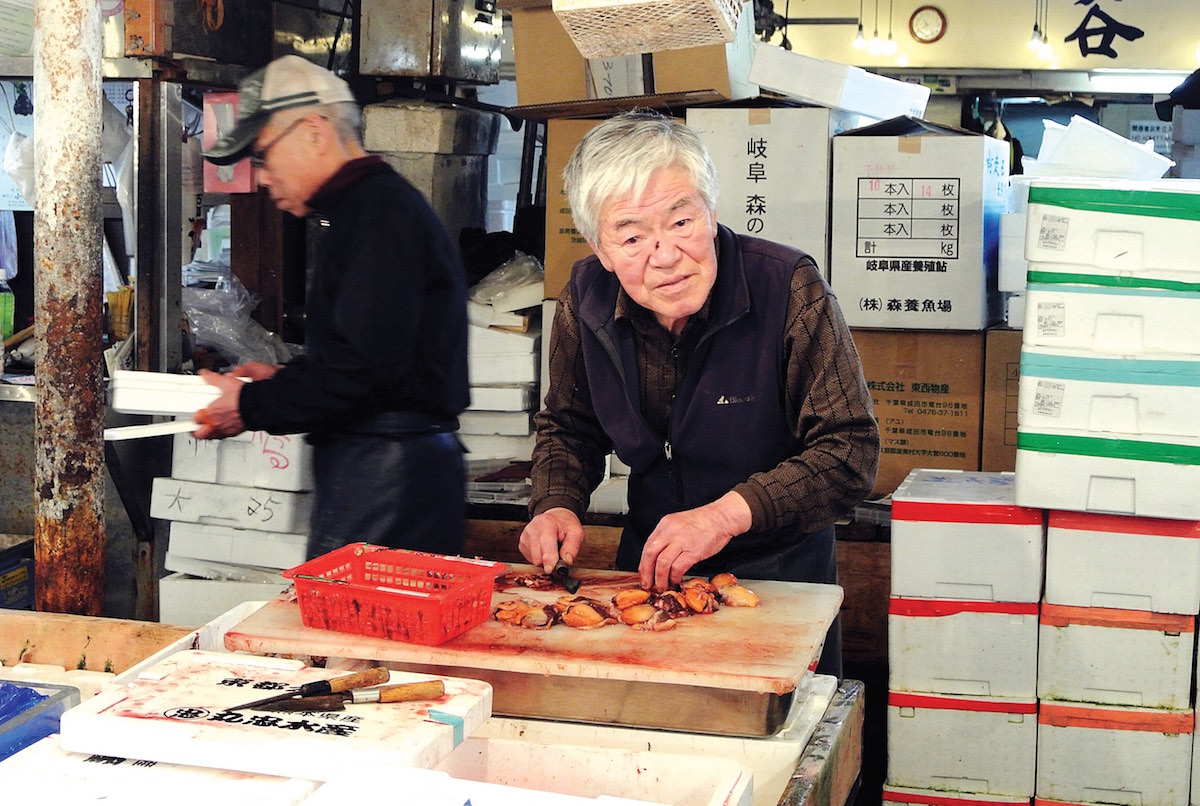
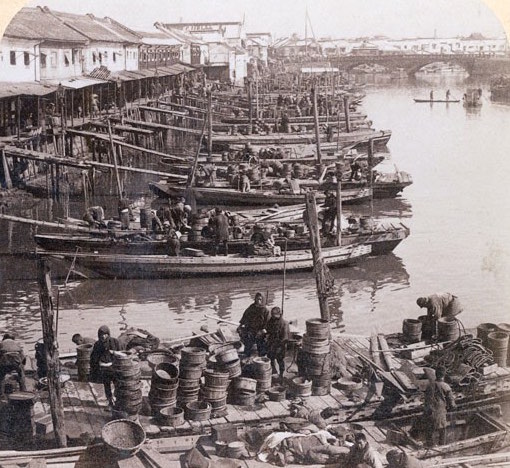
Nihonbashi Fish Market
Boats docked at the old fish market in Tokyo’s Nihonbashi district in the 1890s. The predecessor to today’s Tsukiji Market, Nihonbashi was located right next to the famous Nihonbashi Bridge, the point from which even today all distances to the capital are measured. For hundreds of years the smell of fish and the shouts of fishermen, brokers and peddlers penetrated the air. But the market was destroyed by the Great Kanto Earthquake in 1923. Tsukiji was completed in 1935 in nearby Ginza.
ANATOMY OF A MARKET
Tsukiji was built to be Tokyo’s central terminal wholesale market after previous wholesale markets were destroyed in the 1923 Great Kanto Earthquake. Tsukiji Market, however, claims a longer heritage as successor to the former Nihonbashi Fish Market, which dates back 400 years to the start of Edo-era Japan. Indeed, Tsukiji traders refer to the paved loading slots for buyers’ truck deliveries as “chaya” (teahouses), a vestige of the old Nihonbashi Market era when buyers waited in teahouses alongside the Edo Embankment for the proper tides to carry their out.
The physical market at Tsukiji is divided into the inner (jonai-shijo) market — mostly fish and produce wholesalers — and an outer market (jogai-shijo) of mostly retail shops running along the streets just outside the inner market facilities. The inner market — the part slated to move to Toyosu — is a gigantic structure with 20 major auction pits for the seven largely family-owned auction firms, 1,677 stalls for some 600 intermediate wholesalers and 250 loading slots for buyers’ delivery trucks. The outer market shops comprise some 500 additional businesses consisting of fresh and processed fish, seafood and produce stands, sushi restaurants, and Japanese kitchenware and cutlery shops; these enterprises will remain in a new building in the Tsukiji area following the inner market’s migration. Roughly 60,000 people work at the market, the vast majority of whom are planning to move when the time comes.
Few Tsukiji Market outsiders understand its inner workings better than Harvard anthropologist Theodore Bestor, whose book, “Tsukiji: The Fish Market at the Center of the World” (2004), remains one of the best windows into the market’s cultural and economic structures. Bestor describes the Tsukiji buildings as being laid out to follow a market logic of “bulking and breaking: to bring in products from all over and aggregate them (bulking) and then sell them [to multiple buyers] in usable portions (breaking).” Sea animals that converge at the market from all over the world are reassembled by auctioneers by type and quality and then distributed out again to restaurants, shops and supermarkets, freshly refashioned as commodities.
Market regulars, according to Bestor, refer to Tsukiji as “Tōkyō no daidokoro” or “Tokyo’s pantry.” As the principal supplier of fresh fish and seafood for Tokyo’s restaurateurs and supermarkets, Tsukiji follows a different rhythm from the rest of the city. Its workday starts at 5 p.m. with fish and seafood being shipped in from around the world during the evening. By 3 a.m. workers from auction houses have unpacked the shipments and laid out the seafood by variety, size, catch zone and quality. The famous tuna auction starts at 5:30 a.m., while hundreds of other specialty auctions run in parallel. The auctions are over by 7 a.m., and intermediate wholesalers take their orders away to sell to city buyers, restaurants and retailers throughout the morning.
By 11 a.m. most market vendors have tidied up their stalls, and by 1 p.m. Tsukiji Market pauses for a rest. Cleaning crews wash down the facilities and recycle the tons of Styrofoam used that day. Perhaps the most startling feature of Tsukiji is how little inventory remains at the end of each day. It’s a place that relies on a “low-tech, high-touch trade,” even today. That kind of selling efficiency relies on longstanding relationships between sellers and buyers, Bestor suggests. Vendors know how to clear their inventory and find buyers for everything, so the next day’s stock will be fresh.
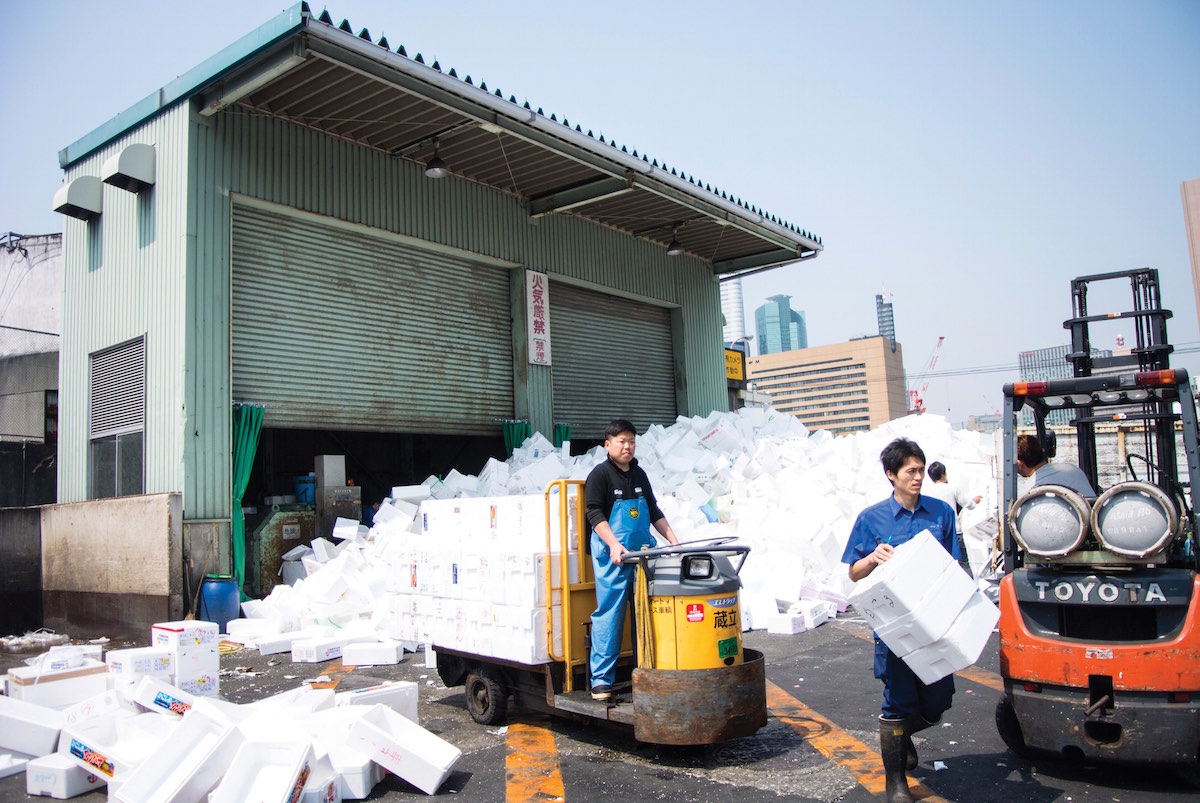
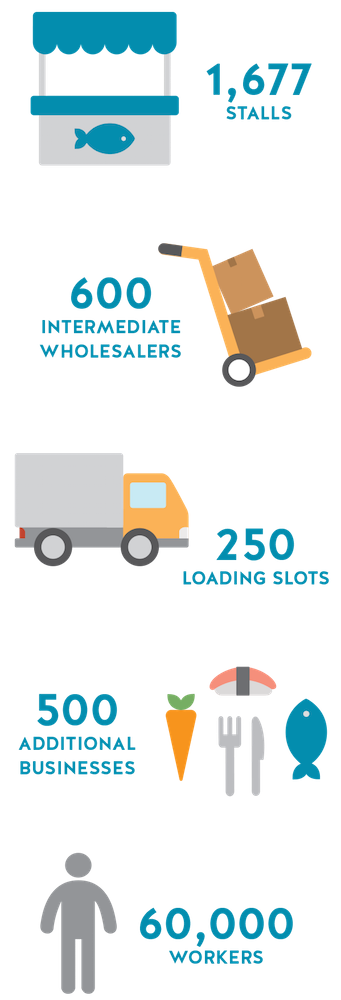
Tsukiji by the Numbers
Tsukiji Market is bustling with businesses and workers each day. While it was built to receive shipments from the port, the reality today is that most products arrive by truck.
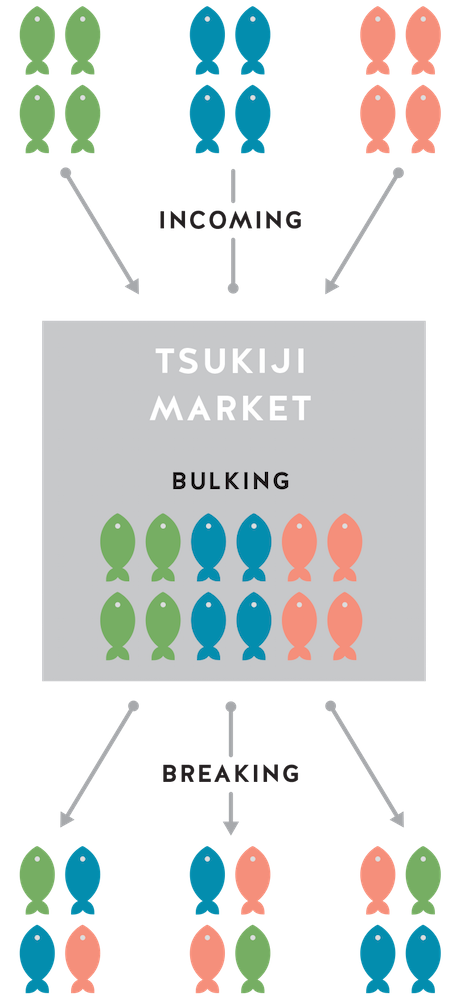
Bulking and Breaking
Tsukiji is laid out to accomplish a market logic of “bulking and breaking,” explains Tsukiji expert Theodore Bestor. Products are brought in from all over the world and aggregated (bulking), then sold to multiple buyers in usable portions (breaking).
QUIRKS AND WORKAROUNDS
Despite its operational competency, the physical market at Tsukiji is showing its age. As early as the 1990s, the Tokyo Metropolitan Government began discussions about renovating the market, plans that fell through because of the great expense of renovating existing facilities and because of the financial crisis at the time. Now 80 years old, the facilities are out of date and suffer from wear and tear. But the market’s deterioration is only one factor in the decision to relocate — Tokyo’s bid for the 2020 Olympic Games is another. In 2010, Shintaro Ishihara, then Tokyo’s governor, defended his government’s decision to move the market to a new location, exclaiming, “The market is so old that ceiling sections would collapse in a minor earthquake!”
Since the market’s opening in 1935, the fish trade industry has also undergone several dramatic changes that have affected how the market runs, including the rise of distant-water fishing in the 1950s, the shift from boats and railroads to trucking and airfreight, and the growth in frozen seafood trade and international fish trade since the 1970s.
As a result, workers have become accustomed to certain “hacks” required at Tsukiji. Vendors and auctioneers use bags of ice to keep fish and seafood cold in the non-climate controlled building, resulting in soggy, damp floors. In contrast, Toyosu will be a closed, refrigerated environment. The old market was built for shipments to arrive from the port, but since the 1960s most fish arrives by truck. This means that stevedores must bring incoming consignments in from the exit. Turret trucks race through narrow aisles, rushing purchased products from auction floor to vendor stall to buyers’ loading slots, creating a hair-raising flow of traffic inside the market.
These hacks and market workers’ persistent habits lend an endearing but mind-boggling charm to the old market: How can so much fish move through a market by such low-tech means? “You will still see fax machines being used at the market. So crazy!” says Yukari Sakamoto, a chef and sommelier who runs tours through Tsukiji and authored “Food Sake Tokyo” (2010). The low-tech quaintness contributes to the market’s mystique. Tsukiji in many ways flows from Tokyo’s shitamachi culture — a traditional, mercantile culture seen to be rougher and more authentic than the upper-class, modern yamamote culture. Tuna vendors wield machetes like samurai warriors, slicing tuna with precise, careful cuts reminiscent of martial arts choreographed patterns, or “kata.” Tsukiji has what Bestor calls “a kind of nostalgic shabbiness” that has made it popular with tourists for decades.
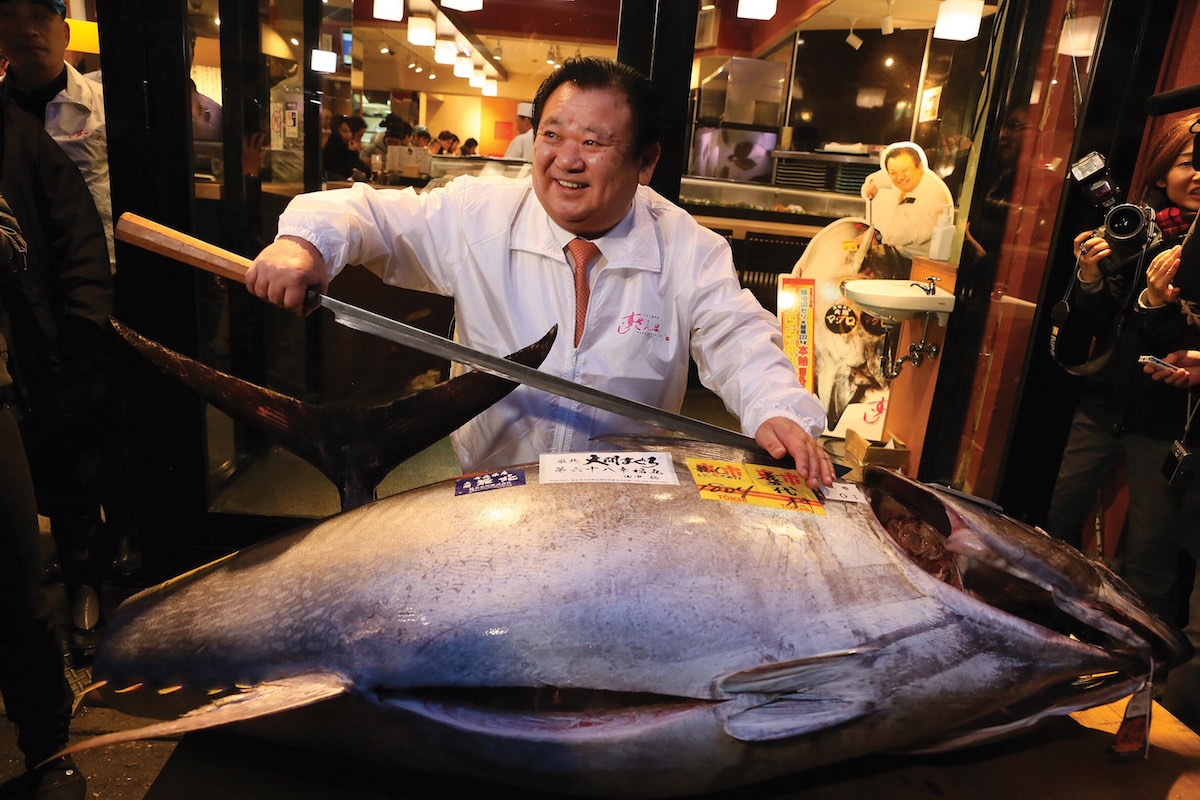
Kiyoshi Kimura, president of Kiyomura K.K, poses for photos with a 180.4 kilograms (397 pounds) fresh tuna after this year’s first auction at Tsukiji Market on January 5, 2015 in Tokyo, Japan. A fresh whole tuna weighing 180.4 kilograms (397 pounds), sold for 4.51 million yen (approximately $37,500) by Sushi Zanmai, a Tokyo-based sushi chain operator. Image: by Ken Ishii/Getty Images
Its quirky character belies the market’s increasingly global importance. Tsukiji is a worldwide hub for certain specialty products and high-end goods that will travel to the four corners of the earth. According to a Japan Times report, an estimated 42,000 buyers and 19,000 trucks pass through the market daily. Auctioneers’ decisions about how to categorize and grade fish set global standards. For instance, airfreighted Atlantic bluefin tuna has become the iconic trade at Tsukiji. The tuna auction is big business and sees sales of tuna in the hundreds of thousands of dollars. At the New Year auction (hatsumaguro) in early 2017, restaurant owner Kiyoshi Kimura paid more than \\74 million (about $650,000) for a 467-pound bluefin. The purchase — his sixth such auction win in six years — was largely a publicity stunt: The high price is well over actual market value. But it indicates the extravagance and visibility of the tuna auction worldwide.
Despite these showy sales, Bestor says the volume has been down for the past 15 to 20 years. “The deflation and stagnation of the Japanese economy since the early 1990s led to a tightening of consumers’ belts,” Bestor explains. Another factor is an increase in direct sales. “More important is the expansion of supermarket chains and chains of restaurants (including the kaitenzushi, or conveyor-belt sushi chains), which bypass the market and purchase at least some of their seafood directly from suppliers in Japanese fishing ports or international importers.”
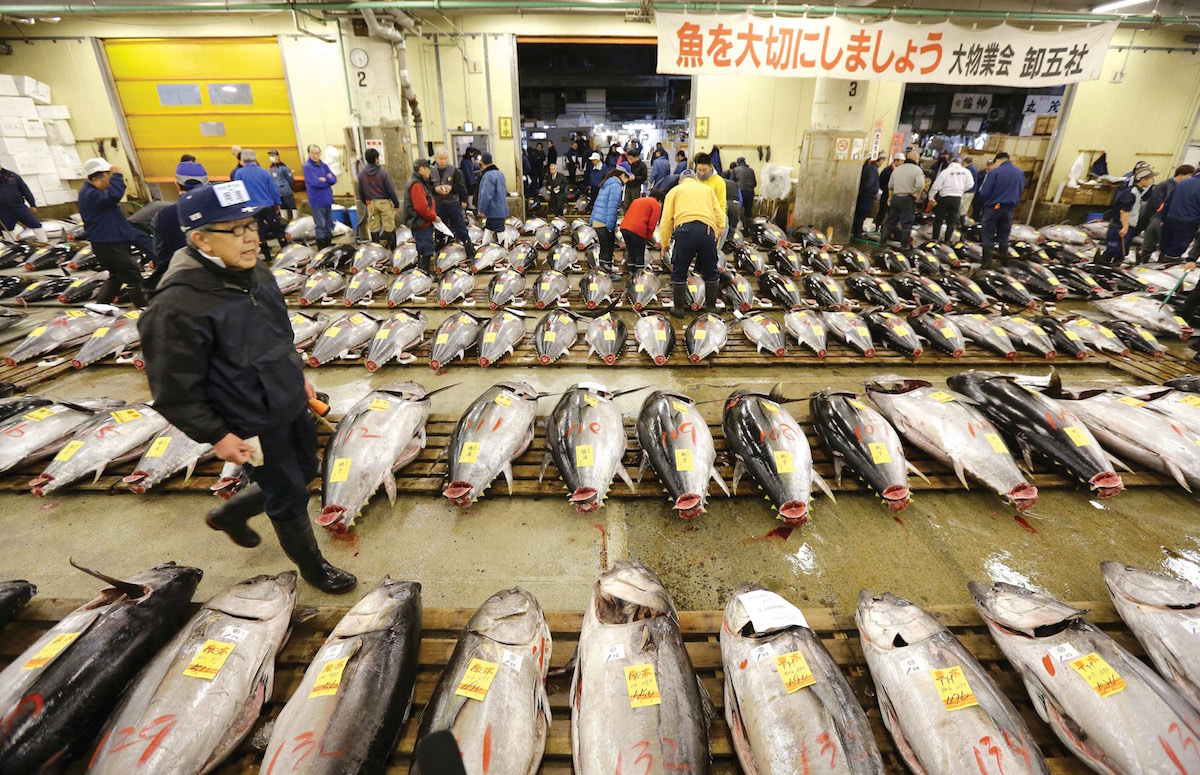
Buyers inspecting the day’s catch of fresh tuna before the auction begins.
KAITENZUSHI
A fast-food sushi restaurant in which plates of sushi travel through the restaurant on a rotating conveyor belt that runs by every table and counter seat. Customers select the sushi they want to eat as it passes by.
Mixed Blessings
Nevertheless, Tsukiji is as popular as ever with tourists — who may or may not feel welcome during their visits. In early 2016 the Tsukiji Market shortened the public visiting hours, opening at 10 a.m. instead of 9 a.m., because the increased foot traffic of tourists there to see the original market before its planned move was blocking the flow of narrow aisles between stalls. Warning signs at the entrance clarify that tourists could outstay their welcome if they get in the way of fast-moving workers, transport vehicles and businessmen.
In contrast, the new Toyosu site is decidedly poor for tourism. The three main buildings are divided by large streets that are hard for pedestrians to cross. Tourists may see the produce and seafood markets only by looking down from second-floor glass windows. While this allows more people to watch the tuna auction, the sense of being in the middle of the action has disappeared now that tourists can no longer walk right next to the fish. Toyosu is also disconnected from Tokyo’s centers of consumption and, unlike Tsukiji, has no local community history. There is also no metro station at Toyosu, only a monorail stop that is much less convenient from the city center.
For market insiders, the planned relocation of the inner market to Toyosu is a mixed blessing. Tsukiji Market has an area of just 23 hectares, while the new facilities at Toyosu encompass 40 hectares. This added space has allowed designers to build the facility to favor big-scale business, and to bring the market up to date on global food safety regulations. Toyosu is connected to highways that run directly to Haneda and Narita airports, which will improve airfreight business. And Toyosu will have multistory buildings with elevators to move seafood — though some worry about how this new logistical feature might impede or complicate the flow of goods around the market. Others have voiced concerns that passageways in the new market might be too narrow for turret trucks to pass through.
As the move’s original timeline has come and gone, some remain on the fence about whether to relocate with the market, according to Bestor. (Various reports have suggested that as many as one in six vendors are thinking about not relocating.) Many factors will ultimately shape their decisions, but Bestor says four stand out.
“If one’s shop was small scale, perhaps only occupying one or two stalls at Tsukiji, there’s less incentive to stay in business since Toyosu seems oriented toward larger-scale players,” Bestor explains. “Likewise, there’s less incentive to move if your shop catered to the walk-in trade of small-scale fishmongers and independent sushi chefs.” Bestor adds that the overhead required to move and set up a new shop is substantial and may be prohibitive for some vendors. And for some longtime Tsukiji denizens, “If you don’t have an heir looking to take over the business, then you may consider this to be a good time to think about retirement and cashing out your business by selling your trading license to another mid-level wholesaler.”
The move to the new Toyosu location has also been beset with scandal over whether relocation was rushed by officials too eager to repurpose Tsukiji’s central Tokyo real estate for the 2020 Olympics. The Toyosu wharf is built on landfill that was found to be contaminated by toxic effluent from former gasworks there. Despite assurances from the former government that the soil had been remediated and would not pose a risk to food sold there, recent independent tests contradicted this position.
In July 2016 Tokyo elected a new governor, Yurio Koike, in what can only be described as a protest vote against the previous governor’s mismanaged city projects, including those involving the construction of Olympic facilities. Her election reflects the feelings of negative public sentiment that have grown with these costly, rushed and top-down urban development policies. A few weeks after her election, Koike pushed the planned November timeline into 2017 so that doubts about soil contamination at Toyosu could be alleviated.
TURRET TRUCK
A turret truck is a battery-operated machine designed to operate in very narrow aisles.
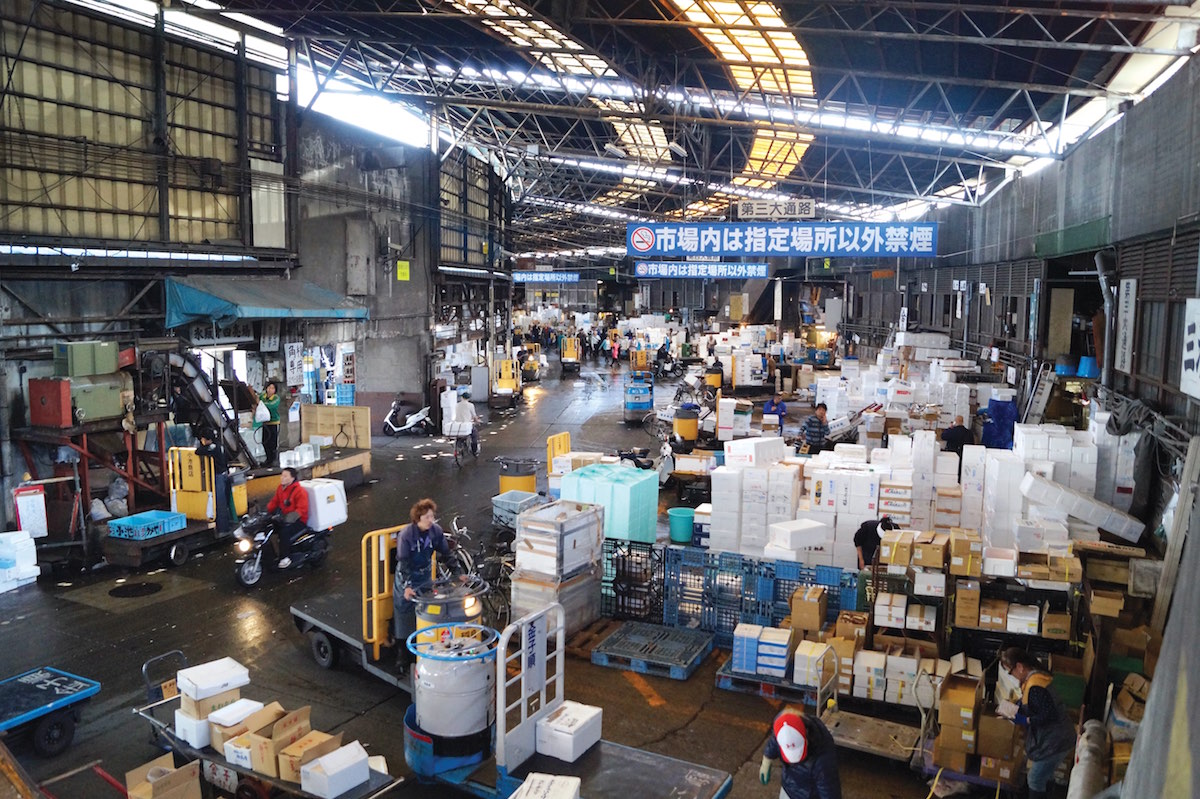
Hundreds of Styrofoam boxes filled with seafood pile up on pallets in the bustling Tsukiji Market.
CAUTIONARY TALES
If Tokyo wants a lesson on how not to handle the move, it could look to Paris’s widely deplored relocation of the Les Halles Market in the 1970s. Once called the “Belly of Paris” by Emile Zola, Paris’s historical central wholesale market was relocated to modern facilities in Rungis, a suburb. What remained in the old market area, the Forum des Halles, is considered by many to be an urban planning blight. The market’s elegant 19th-century pavilions, with their windows of wrought iron and glass, were torn down. In the old market’s place the city built a bland underground transport and shopping complex. It serves as a cautionary tale about rezoning a central economic and social institution without considering locals’ nostalgia and affection for it.
Other cities have fared better. In the 1970s London decided to move the wholesale market at Covent Garden out to the northeastern corner of the city. The Greater London Council’s initial plans for the central neighborhood involved large-scale development contracts with little concern for housing that reflected the socioeconomic diversity of its inhabitants or the small merchants that thrived on the edges of the old market. Locals successfully protested, forming the Covent Garden Community Association, and the city decided to instead renovate the Covent Garden area to foster small shops and cafes. Today it is a popular commercial area.
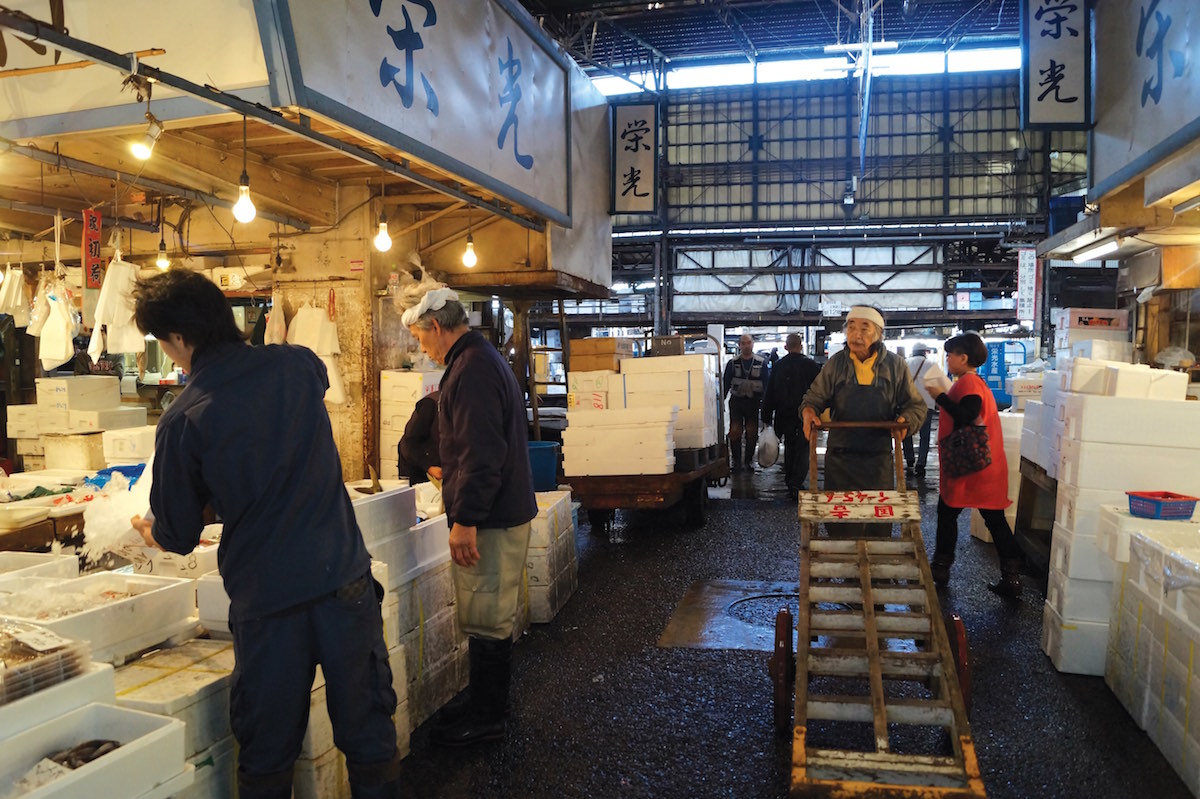
Sellers prepare bins of fish for the wholesalers, chefs and retail customers that frequent the market daily.
Barcelona, in the same period, closed its central Mercat del Born, opening its present-day wholesale market, Mercabarna. Plans to restore El Born as a large shopping center languished from lack of public support and private finance, until in 2002 extensive medieval ruins were discovered on the site. In 2013 El Born reopened as an archaeological museum used for cultural events, and it has since been a source of local Catalan pride in preserving local heritage.
The core market relationships that form the social infrastructure of Tsukiji will largely continue at Toyosu, whatever the fallout from the move. Tuna auctions will continue to set the standard for the world fish trade, and this will continue to be the biggest fish market in the world. Only time will tell what residues of life at the old Tsukiji market will linger in its more modern successor.
Feeding Remote Places: When the Last Food Mile is the Middle of Nowhere
Provisioning the dwellers of far-flung places puts all the elements of the food supply chain on display — from production and distribution to preparation and consumption. But how do they actually get it there?
When the unmanned SpaceX Falcon blew up en route to the International Space Station (ISS) in June 2015, 4,000 pounds of food were lost. It was the third consecutive attempt to bring food to the orbiting astronauts that failed. The astronauts — though not in imminent danger — were left hanging.
Although there have been some preliminary, and successful, attempts to grow salad greens in the space station, the astronauts on board remain dependent on rations from earth. Luckily for them, subsequent vessels reached the space station in time to spare them a lettuce diet.
The ISS epitomizes the cliche, “So close, yet so far.” Its orbit is only 249 miles above the earth, but those are some problematic miles to cross. One can imagine the astronauts hovering above the earth, recognizing familiar cities and gazing toward the spot where they know an In-n-Out Burger to be.
And while the ISS is remote, there are many places on earth that are even trickier to get to, with situations that require similarly complex logistics. When feeding the dwellers of far-flung places, all the elements of the food supply chain are on display, including production, distribution, preparation and consumption. How the resulting waste is managed is also a reflection of how far away from home one is. At a certain point, that waste become less of a burden and more of a necessity.
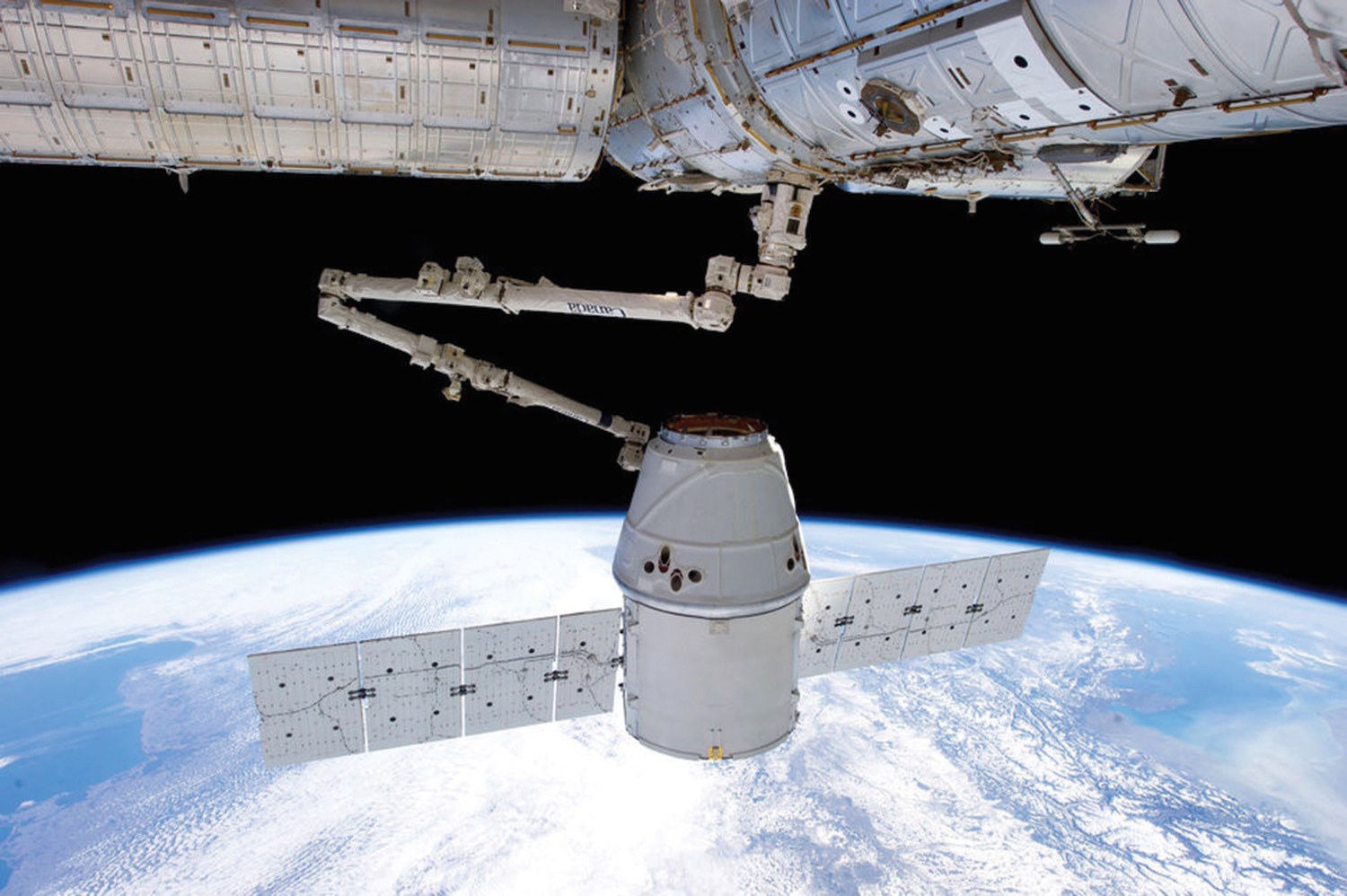

Floating City
The U.S. Navy’s 10 Nimitz class aircraft carriers are the largest ships in the world. Nearly a quarter mile in length, these vessels are like floating cities, with many of the amenities of home, including a variety of foods. Unlike oil-powered ships of similar size that need to refuel every three days, the nuclear-powered Nimitz ships can cruise at 55 mph for 20 years straight — about 10 million miles — on a single “tank” of nuclear fuel.
But while the ship’s engines aren’t in danger of going hungry, the 6,000 hard-working sailors on board will eat through 25 pallets worth of food a day — roughly what an average family eats in five years. The ship’s pantries can store more than 60 days’ worth of dried food and 30 days’ worth of frozen, but only approximately two weeks’ worth of fresh fruits and vegetables. Bringing these massive ships to port every 14 days during a seven- to nine-month deployment is neither convenient nor strategic. Instead, the carriers can remain in position thanks to a maneuver known as Replenishment at Sea.
The procedure has the look of an elaborate mating ritual between two ships. They move forward on parallel courses, about 150 feet apart. Sailors on the carrier fire rifles loaded with weighted slugs at the replenishment ship. The slugs trail thin lines to which progressively heavier cables are attached and pulled across the chasm, until cables large enough to be winched connect both forward-moving ships. Eventually, the cables are hooked up to hydraulic rigs and tensioned to several thousand pounds of pressure, and mini cable cars ferry pallets of food (and other goods) between the two ships.
To speed things up, helicopters ferry pallets directly to the carrier’s flight deck, where forklifts are waiting to bring them into the bowels of the ship’s warehouse-sized pantries. Other cables strung between the two ships function as zip lines across the chasm, on which more loads of food travel. As the supplies are loaded, fuel lines are also stretched across, because fighter jets have to eat, too.

For an in-depth look at life on an aircraft carrier, check out the PBS series “Carrier.”


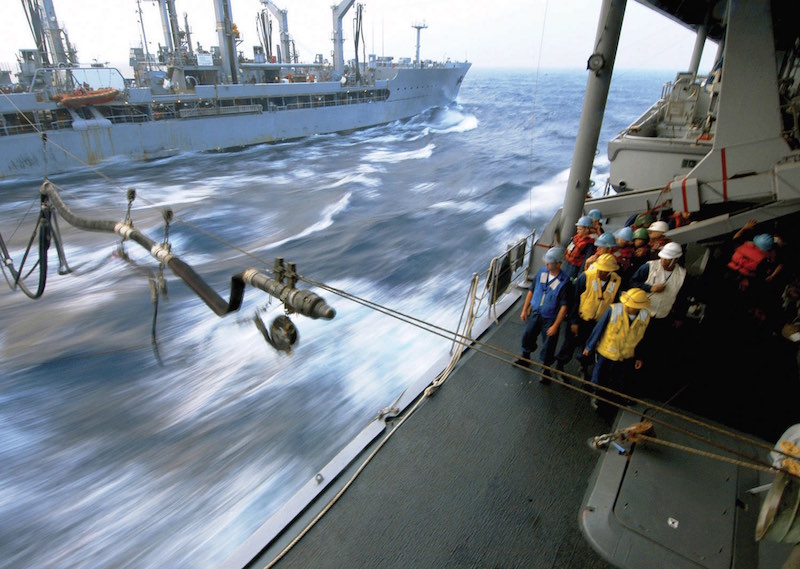
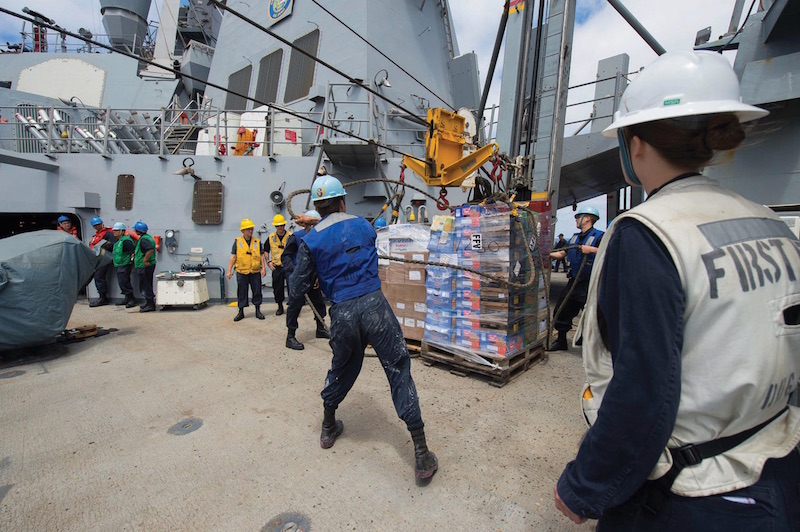

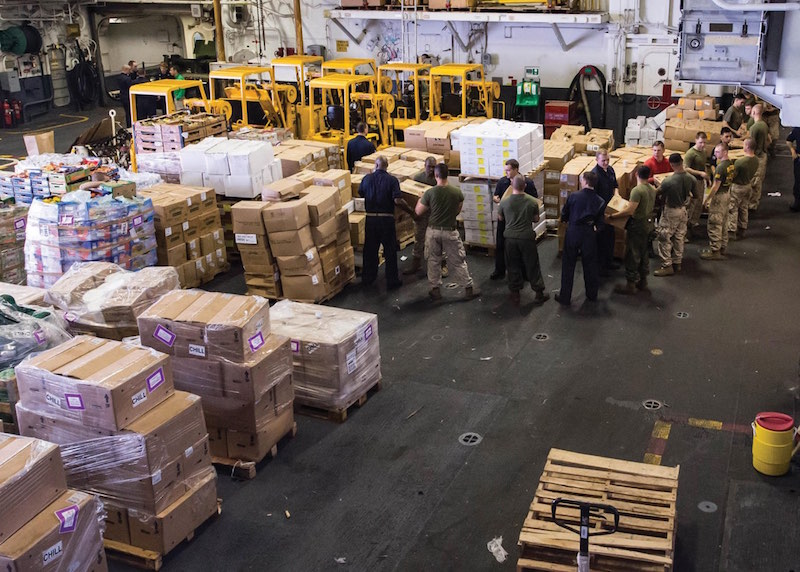
Meanwhile, waste from the floating city is offloaded to the replenishment vessel. Waste plastic, which has been compressed into discs, will be returned to port and disposed of according to local law. Paper products are burned in filtered incinerators. Food waste goes overboard, presumably to the delight of local fish. When far from shore, human waste feeds the fish too.
The basic configuration of cables binding two moving ships was designed by Lt. Chester Nimitz himself—for whom the world’s largest aircraft carriers are named—during World War I. Stationed 300 miles south of Greenland on the replenishment vessel USS Maumee, Nimitz tweaked and refined his system while refueling and replenishing 34 destroyers in difficult conditions during the spring of 1917. Now, as then, time is of the essence in this drill, as both ships are vulnerable to attack when they are intertwined. And accidents happen.
“Any time you put a 95,000-ton aircraft carrier next to a 50,000-ton replenishment vessel in heavy seas, tied together, sometimes King Neptune will reach up and knock things off the line and into the water,” says retired U.S. Navy Captain Dan Grieco. In Grieco’s 30-year career he’s seen only two items lost during replenishment, including an aircraft part, which they recovered after hastily suspending the replenishment and beginning a search operation.
While the replenishment operation itself is a well-oiled machine, its success depends on finding the time to conduct it. During operations Desert Shield and Desert Storm, Grieco says, they couldn’t replenish as often as they wanted, and it wasn’t good. “We were down to drinking boxed milk at times,” he says.
Further Afield
The difficulties involved in feeding an aircraft carrier full of sailors are rooted in the sheer quantities of food and in the windows of vulnerability that open when the food is handed off. But for those who overwinter on Antarctic bases, the challenge is reversed. The number of mouths are fewer, but the intervals between replenishments are considerably longer. And getting there, especially in winter, can be more dangerous than an off-planet jaunt to the space station. In fact, winter travel is so dangerous that even medical evacuations from Antarctica are extremely rare. Winter residents of Antarctica are generally stuck with what ails them until winter breaks. And the same goes for what nourishes them.
On the shifting surface of the Brunt Ice Shelf, on the coast of Antarctica, the British-run Halley VI research station was built on skis to stay atop the ice—something its five predecessors failed to accomplish. And while the Nimitz carriers wait two weeks between replenishments, and the ISS is paid a visit every 40 or so days, Halley IV gets only two visits per year, courtesy of the British icebreakers Shackleton and Ross.
The first visit of the summer season lands just before Christmas, when a seasonal crew of about 100 people arrives. The Antarctic summer doesn’t linger long, and before you know it a ship is back in February to take the snowbirds home. Those two visits constitute the only opportunities for replenishment that the base sees for an entire year. The crew of 11 that overwinters for nearly 10 months must make that food last until the following December atop the hungry ice.
The pantry at Halley VI is stocked with canned supplies and staples that must last through the winter for a crew of 11 to 16. Once the February shipment comes and goes, the pantry won’t be restocked until the following December.
The Christmas arrival delivers a summer stash of fresh veggies, but its main non-human cargo is a year’s supply of frozen and canned goods. The February delivery brings almost exclusively fresh veggies, explains John Eager, a former chef at the base who now does kitchen and meal planning from Halley’s administrative headquarters in the United Kingdom. The nature of the fresh vegetables tends to be along the lines of what you might find in a homesteader’s root cellar.
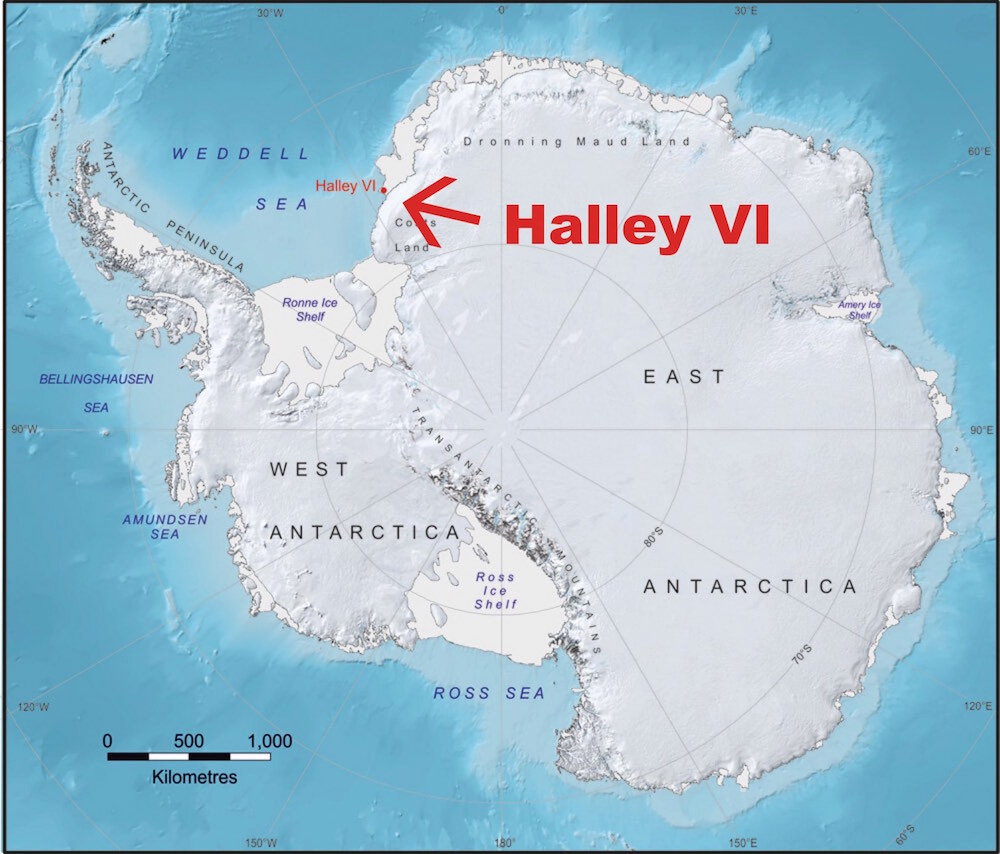
BUTTERNUT SQUASH AND FETA CHEESE TARTLETS
Take squash that’s just past fresh, roast and freeze it to make this fresh-tasting dish in the depths of the Antarctic winter. The tartlets make a great starter with reduced balsamic vinegar during the 105 days of darkness at Halley.
3 tbsp. olive oil
600 grams squash, peeled and diced
375 grams puff pastry
150 grams feta cheese
1 red chili, deseeded and finely chopped
2 tsp. thyme leaves
Salt and black pepper, freshly ground
2 baking trays, one lined with Teflon sheet
Set the oven to 400°F. Heat a baking tray with 1 tablespoon oil on it. Add the diced squash and roast for 30 minutes, stirring occasionally, until softened. Meanwhile, roll out the pastry and cut into 6 equal pieces. Put them on the Teflon-lined baking sheet. Mark a thin border around each one. Chill for 30 minutes.
Divide the cooked squash and place it on the pastry squares, inside the borders. Crumble cheese over top, then sprinkle with chili and thyme. Season and drizzle with the rest of the oil. Bake for 30 minutes, until golden and cooked through. Serve hot, with reduced balsamic vinegar dressing.
“We stick to hard, dense stuff that lasts a lot longer. Potatoes, carrots, onions, squash, turnips,” Eager says. “They store incredibly well, as the atmosphere is very dry. Eggs keep well, too. We can make them last six months by turning them over every week.”
Because it can take several weeks for the icebreakers to make their way to the station, anything more perishable might not even survive the journey to Antarctica, much less stick around through the winter. “Anything like salad is in a sorry state by the time it gets there,” Eager says.
Frozen foods, meanwhile, are in their element on the frozen continent. While the base itself endeavors to stay atop the ice, most of the frozen goods are buried about 10 feet down — which makes more sense than using electricity to power a freezer.
As veggies like squash approach their expiration dates, the cook will make them last longer by preparing finished dishes and freezing them. Many holiday meals are prepared and frozen months ahead of time.
Waste in Antarctica is carefully dealt with, in accordance to the Protocol for Environmental Protection to the Antarctic Treaty, signed in 1991. Solid waste is sent home for incineration, while sewage and greywater are treated on site so that minimal trace is left behind.
Waste may be a liability in Antarctica, with massive effort and expense invested in its disposal. But when you get further away than the end of the Earth, waste suddenly becomes too valuable to part with.
Waste as Fuel
Any journey beyond the moon would reach the limits of the earthly supply chain. It’s not that food couldn’t be brought along; it’s just that replenishments can’t be counted on. If you don’t come back soon you will run out of food — unless you produce your own.
NASA hopes to complete a two-year mission to Mars by the 2030s. SpaceX hopes to get there a decade sooner. The present, consequently, is a fertile time for research into how to feed astronauts aboard space ships and on different planets. Because a growing portion of space exploration is being conducted by private enterprises, much of the research is closely guarded as trade secrets. But the studies being done in the public sphere are enough to shed light on how the space-age food scene could look.
For long-haul journeys through space, and for colonizing Mars, the primary means of food transport will be in the form of information, including knowledge about how to grow plants in space and in alien environments. And no information is more valuable, and less replaceable, than the DNA of seeds. These genetic blueprints are the primary way humans could transport food to places that are too far away to be replenished or to bring sufficient supplies. In the case of the two-year journey to Mars, it may be possible to pack enough calories to keep the astronauts alive. But growing edible plants on board the spacecraft would likely be vital to survival for other reasons entirely.
As plants grow, they remove carbon dioxide from the air and replace it with oxygen. On the long flight to Mars, this action would purify the air on board. Meanwhile, the sequestration of that atmospheric carbon, in the form of plants, would take care of the astronauts’ waste.
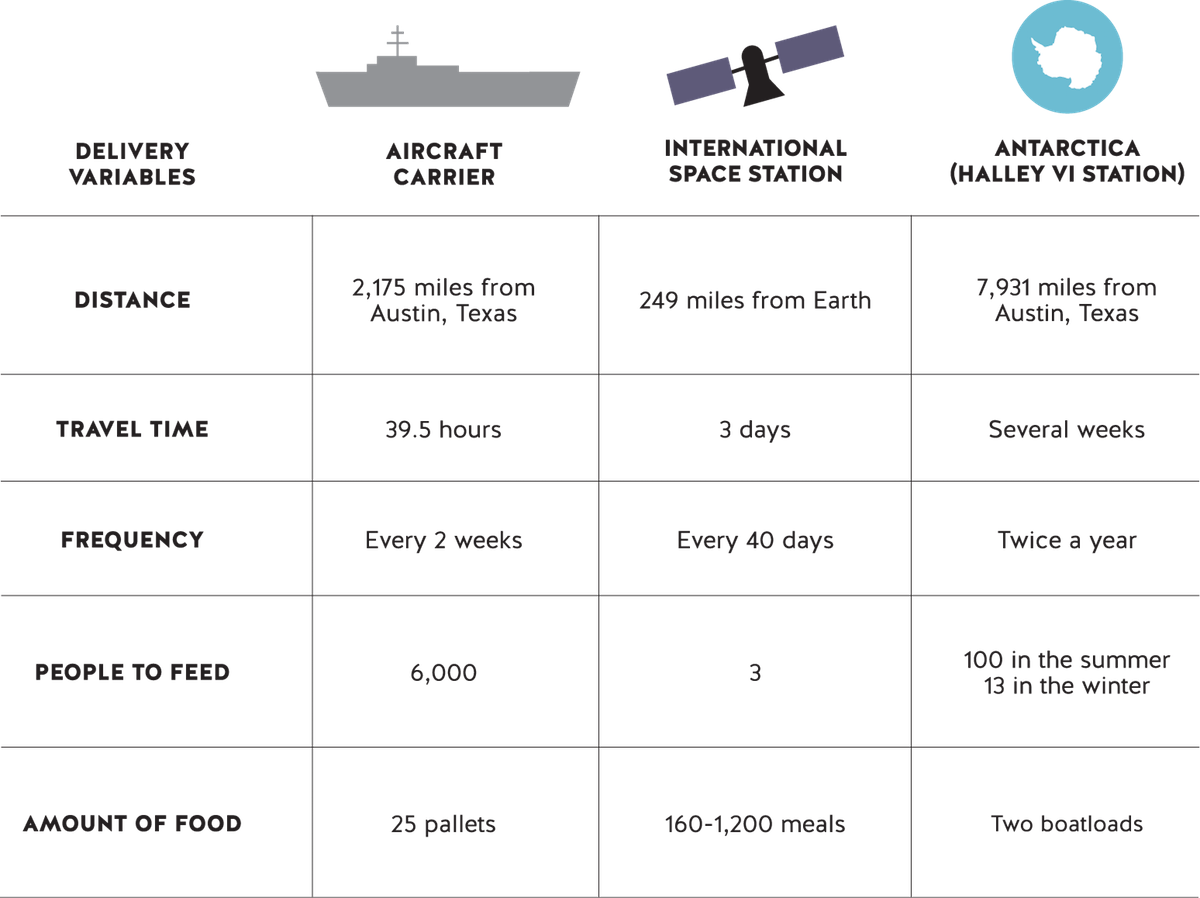
The interconnectedness of food, oxygen and waste disposal has led to a focus on closed-loop systems in research laboratories. In one study, rats are being kept alive with oxygen produced by algae. Depending on oxygen levels in the rats’ enclosure and the rats’ metabolic requirements, scientists can shine light on the the algae to trigger photosynthesis, the process by which plants consume carbon dioxide and produce oxygen. This is a simplified version of how astronauts and their food production systems could help regulate their shared atmosphere.
Any food grown in such a system could be considered a byproduct of the processes of waste management and atmospheric purification. The astronauts would have to do their part in the cycle by eating the food and excreting the waste products therefrom. As the astronauts would be eating much more than what they grow, thanks to the food they brought with them, the volume of their waste would likely exceed what they need for their little garden. But that extra poop would not be jettisoned. You don’t throw away gold.
While some researchers are studying the biospheres of space travel, others are looking into how food could be produced when and where the spaceship lands. Dutch scientists are attempting to grow crops like tomatoes, peas and wheat in red earth, dug from a Hawaiian volcano, thought to closely resemble Martian soil. According to Wieger Wamelink, an ecology researcher at Wageningen University, it took a little tweaking and some animal refuse, but plants eventually began growing quite well in the red dirt, which was purchased from NASA. On Mars, he explains, the plants will similarly have some extra help.
“The feces of the astronauts [produced] during the travel have to be stored and brought to Mars, where it can be used as fertilizer,” Wamelink explains.
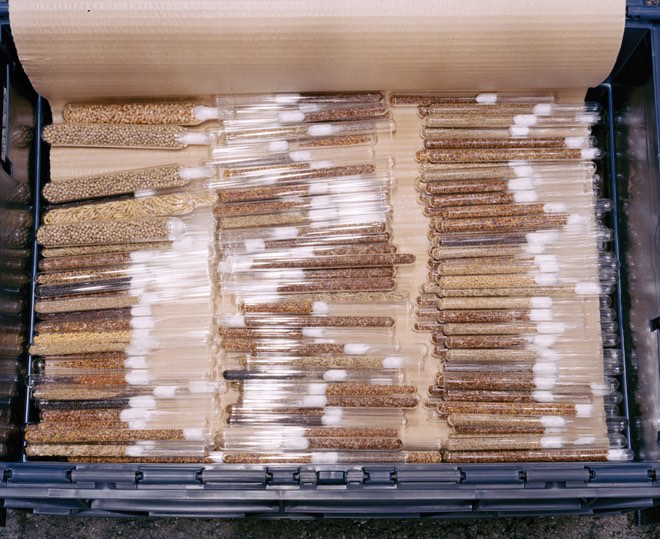
SEED DATA
The Svalbard Global Seed Vault in arctic Norway has been nicknamed the “Doomsday Vault” because its location and construction were designed to withstand a variety of manmade and natural disasters. North enough to withstand rising temperatures, high enough to avoid tsunamis and rising sea levels, remote enough to survive a nuclear war and deep enough in a mountain to withstand meteorites, bombs and tornadoes, Svalbard has as good a chance as any place on earth of surviving the big one.
While Svalbard is often referred to as a seed bank, it technically isn’t, as no regeneration of seed takes place on site. “We built a tunnel in a frozen mountain and put seeds in it,” explains Cary Fowler, executive director of the Global Crop Diversity Trust, which funded Svalbard’s construction and now covers its operating costs.
Humble remarks aside, Svalbard is no joke. The vault holds copies of seed collections from seed banks around the world, including ancient strains of wheat, lentil and chickpea from Aleppo’s imperiled seed collection. Every time a depositor seed bank regenerates any of its seed, they update Svalbard’s collection, which currently contains 860,000 varieties.
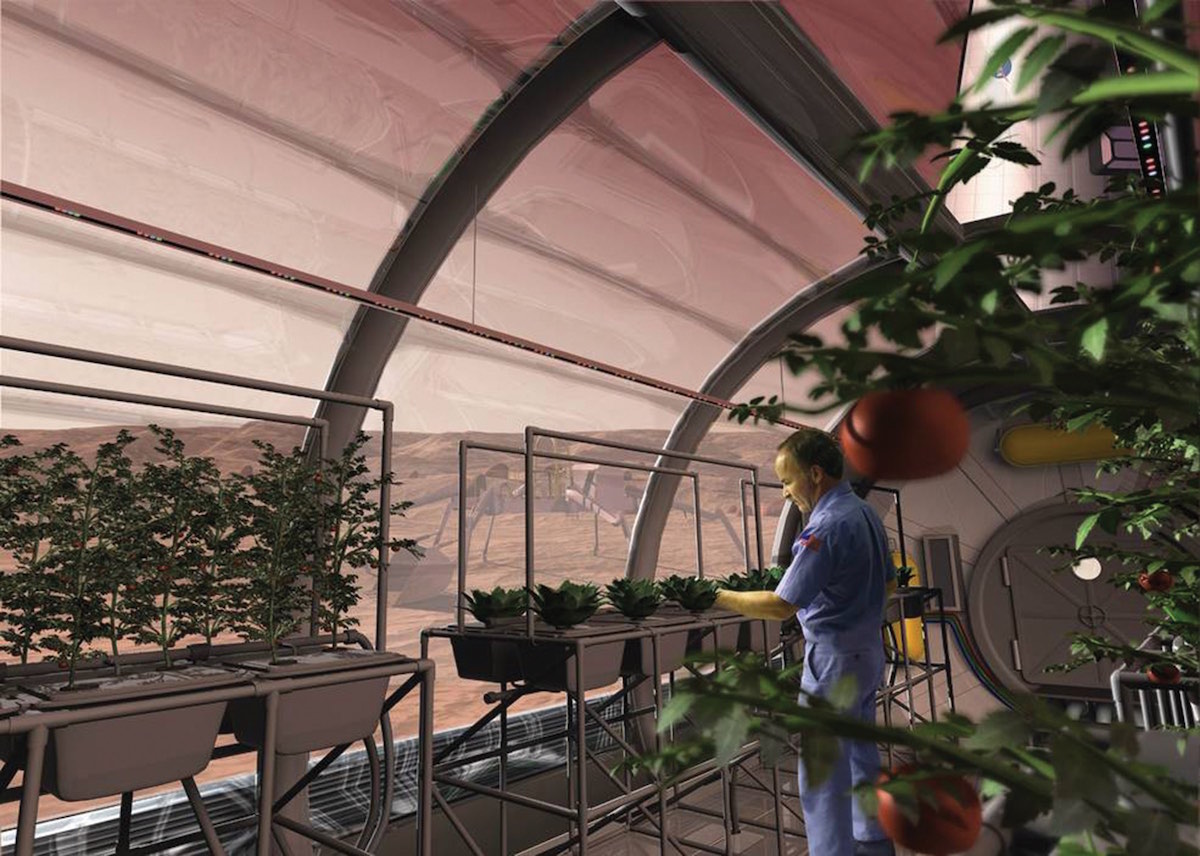
Sowing nitrogen-binding plants like clovers, lupine, green bean and pea is another vital step in the process, according to the Dutch scientists. “Together with nitrogen-fixing bacteria they can take nitrogen gas from the air and turn that into eventually nitrate, which the plants can use for growth,” says Wamelink.
Obviously, growing food in actual Martian soil could present a host of obstacles. The food would have to be grown in some kind of space greenhouse that would be pressurized to Earth’s atmospheric pressure. It would need to be heated, lit and protected from cosmic radiation, which damages plant DNA. Perhaps it could be partially buried, with electric lights at night, powered by solar panels. The first colonists to arrive on Mars will have no shortage of work to keep them busy, as they attempt to construct a real-life biosphere experiment—not in the red sands of Arizona, but on the red planet itself.
Despite the challenges of feeding people in remote places, humans continue to push the limits of their range. When the distance from home reaches the point where growing food is more practical than bringing it, the journey from “farm” to table resets. Space travelers millions of miles from home, counterintuitively, will be eating more locally than the person on Earth who shops at his or her local grocery store. And in the closed-loop systems where plants and humans thrive on each other’s waste, some basic facts underlying the Earth’s ecosystems become crystal clear, even as our home planet fades in the rearview mirror. Food and waste are different sides of the same coin, part of an endless cycle.

If you were embarking on a two-year trip to Mars, what foods would you be sure to take? Tweet us. #FeedingMars
The Early Years of Logistics
We increasingly want more information about our food. We want to see, at least once, the faces of those who bring food from fields to plates. The farther we’ve gotten from the farm, the more important transparency has become. To better understand a system that is largely invisible, we need an introduction to food logistics. History is a good place to begin.
Ever find yourself behind a double-parked truck? Most likely, it’s delivering food. Trucks covered with images of pizza or a cornucopia of vegetables make their way into the hearts of cities around the world daily, and we hardly take note — except when they block our way to work. But truckers aren’t the only ones who dispatch our daily food supply. Container ships, cargo planes, bicyclists, camels and trains all conjoin in one complex global supply chain.
Although the tracks of our food as it travels today are well hidden, the flow of the food supply chain has existed for millennia. Pack animals and olive-oil-bearing clay amphorae delivered food from source to consumption before the birth of Jesus. But logistics, the complex systems that optimize the flow of food, originated with Alexander the Great.

Read notes from Robyn’s book research.
FORAGE AS FUEL
The concept of logistics appeared far earlier than the word. The word first appeared in the late 19th century to mean the art of moving and maneuvering armies, including their supplies and food. The first logisticians — working long before the 1800s — had to consider the seasonality of fodder, food for transport animals, the lack of roads for wheeled transport and the scarcity of ports, storage facilities, depots and communication networks.
During the fourth century BC, the Greek king Alexander the Great assembled an empire that stretched from Asia to Africa. His success was largely due to his understanding of logistics, the strategic movement of men and weapons that factored in harvest calendars, geography and the need for single points of control.
Other military commanders improved on Alexander’s strategies for moving food and materiel. For them, having seamless logistics was a combat strategy. When Hannibal Barca, a Punic commander from Carthage, crossed the Alps in 218 BC, more than 30 elephants joined his army. The imminent snowfall would slow their progress and make it impossible to reach their enemies in Italy. The logistics of moving his army and the food to feed his troops was complicated enough. But the challenge of feeding the animals that transported the food proved impossible.
“The Elements of the Science of War” appeared in 1811, written by an engineer named Wilhelm Muller. He wrote about military campaigns going back to 1667, citing the importance of balancing troop movements with the need for “victuals” and forage.
While today we move food to cities on various forms of wheeled and non-wheeled transport networks, our networks run on fossil fuel, not forage. Early logisticians were faced with the vagaries of growing seasons, changeable weather and the limited availability of enough forage to keep their equine and elephantine transport on their feet and moving. While we struggle to keep food cold and extend shelf life, those early logisticians had much more to contend with. Like no roads.

On this amphora, you see Dionysus, the Greek god of the grape harvest and winemaking, drinking wine while satyrs make wine — an illustration of the journey from vine to cup.
Victuals
Food or provisions, typically as prepared for consumption.
EARLY HIGHWAYS
Roman roads are mentioned in nearly every tourist guidebook. The Romans developed complex procurement and distribution of food supplies, mostly because the republic and then the empire did not produce enough food locally to feed its growing urban populations. While the Assyrians and Greeks knew how to feed their soldiers, it wasn’t until the Romans developed a complex system of roads, taxation and administration that the idea of optimizing the movement of food took shape. Roman roads and bridges show us how they distributed food across the empire.
Centuries later, when Napoleon led his Grand Armée to conquer Russia in 1812, he drew upon Greek and Roman logistics to enable his troops to stay in the field longer, sustained by a ready supply of food while destroying the supplies of their enemies. But his march on Stalingrad wasn’t so successful. The Cossacks in his path resorted to destroying food supplies along the way. Napoleon’s rations and forage for his animals were soon depleted as the Russian winter closed in. In the end, Napoleon lost almost 400,000 troops. His defeat precipitated his fall from power and the unraveling of the Napoleonic Empire. Logistics proved to be his nemesis.
THE SCIENCE OF LOGISTICS
As the Industrial Revolution mechanized much of civilian society, Frederick Winslow Taylor introduced the concept of the scientific management of process manufacturing. He promoted practices that optimized the workflow while eliminating waste. These included standardizing parts and practices as well as carefully measuring and maximizing the use of time and labor. Taylorism, as his theory was called, led to further developments that looked at how to produce and move products from factory to consumer. Food production was one of many processes that became Taylorized.
The food supply chain differs from other supply chains in its requirement for careful temperature control. The development of ice manufacturing and refrigeration led to the development of what is now called the cold chain. Entrepreneurs such as Augustus Swift revolutionized the meat supply chain, utilizing refrigerated rail cars and vertically integrating all aspects of meat production.
Railroads began to move food across long distances beginning in the mid-19th century. Shipping containers, developed by Malcom McLean during the 1950s and 1960s, transformed how food moved on ships, trucks and railroads. The integration of these transport networks eventually became our international, intermodal food distribution network. When computers arrived during the early 1950s and 1960s, the idea of logical workflows got an extra push through the acceleration of data processing. The development of computer-based forecasting systems and materials requirements planning came next. It wasn’t until the 1980s, however, that supply chain management became a thing, leading to the emergence of supply chain departments and centers in academic institutions. And now, food logistics has its own professional organizations, conferences and publications.
Look for this historical narrative to go into hyperdrive as railroads, computers, tracking devices, drones and robots bring new speed, safety and personalization to our daily meal.
Process Manufacturing
The production of goods typically produced in bult quantities — as opposed to discrete and countable units — including chemicals, food and beverages, gasoline, paint and pharmaceuticals.
Food Movers: Beasts of Burden
In the United States, we are accustomed to thinking of draft animals as relics of the pre-combustion engine past or, at historic sites like Colonial Williamsburg, as nostalgic attractions.
But draft animals remain ubiquitous in other parts of the world as central participants in food economies, both as food products themselves and as power to move agricultural products from fields to markets.
In areas of the world where roads accommodate hooves better than wheels and the expertise to maintain and repair motorized vehicles is scarce, pack animals are the most economically efficient tool to move food products to the market to maximize profits for producers. Some draft animals are likely to be used as food once their ability to provide labor diminishes, thus filling in multiple links in the chain of food production, distribution and consumption.
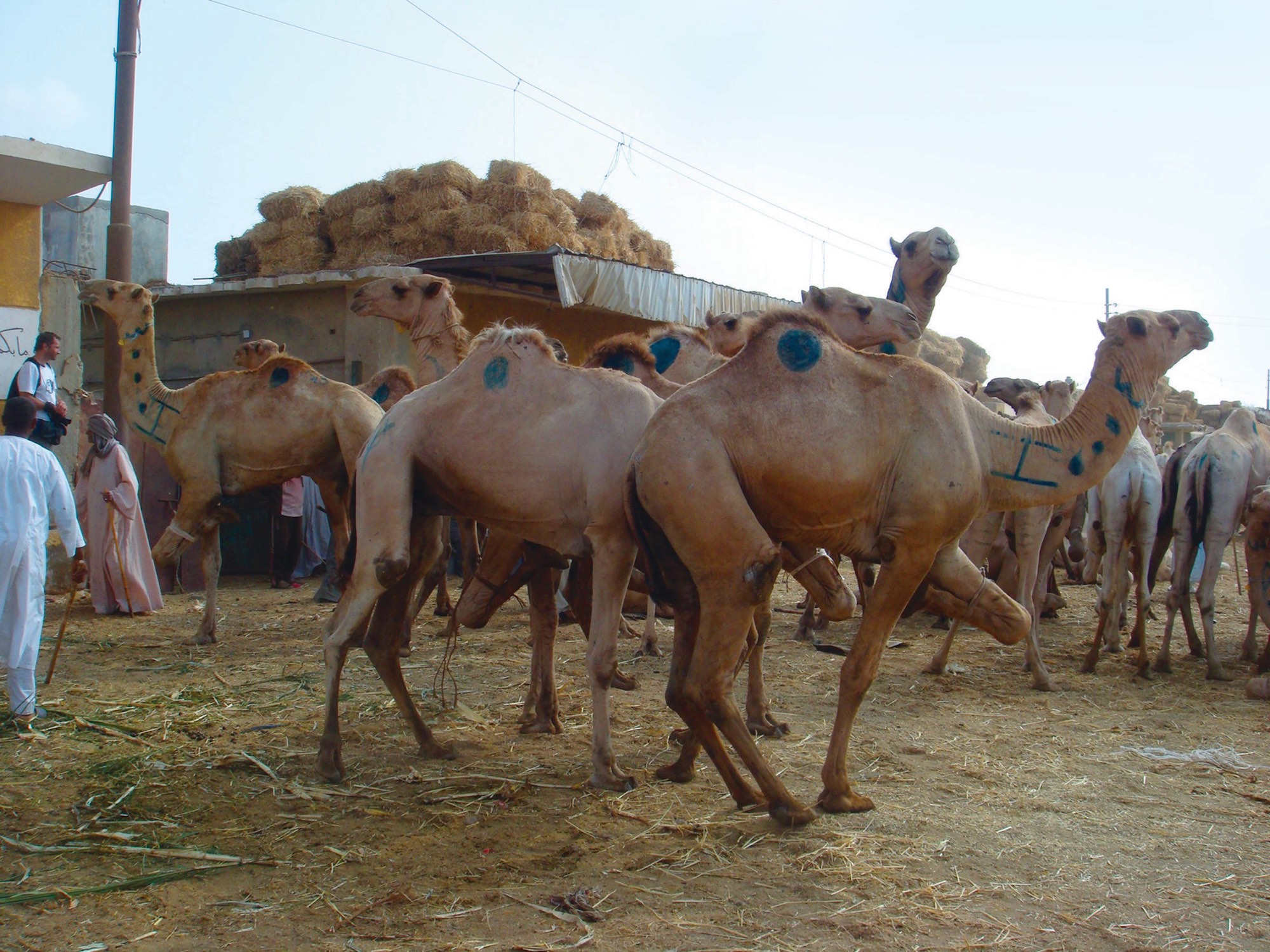
Camels at the Birqash Camel Market outside Cairo, Egypt. Camels arrive on foot from the Sudan, live meat on the hoof. Thousands of camels head to market to be auctioned. Colorful markings indicate important market information — a kind of bar code for dromedaries.
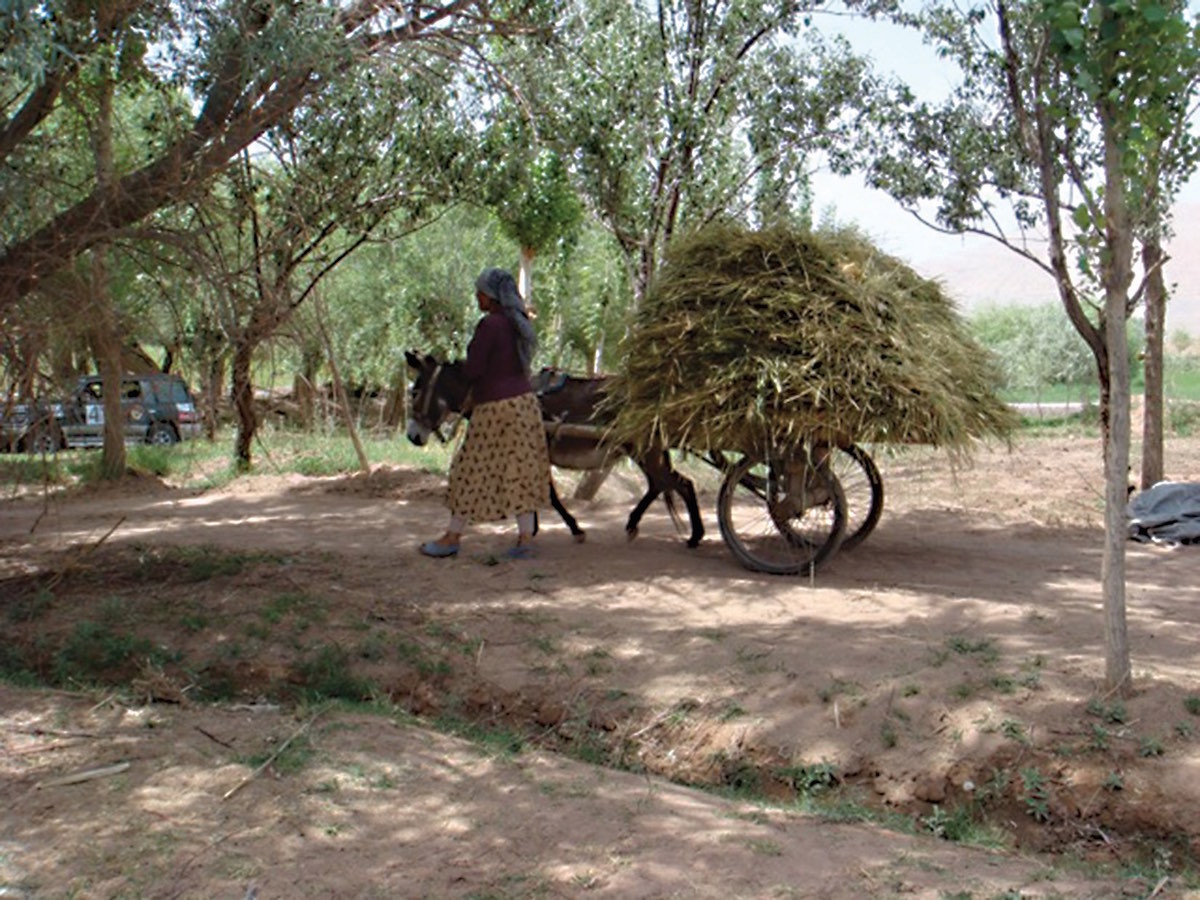
In China’s Gobi desert, carts pulled by donkeys carry every sort of food imaginable, from fresh meat to wheat and other grasses. Crops are harvested by hand reaping; this woman is hustling off the morning’s wheat in the cool shadows of an olive grove.
This trend is relatively recent in some parts of the world. Animal power was introduced into subsistence agricultural systems across sub-Saharan Africa in just the last 100 years and facilitated a transition to commercial agriculture. In West Africa, for example, a 2005 regional report by agricultural scientists encouraged farm owners to incorporate more livestock power, or “animal traction,” into their farming practices to offset growing wage costs for human farm labor.
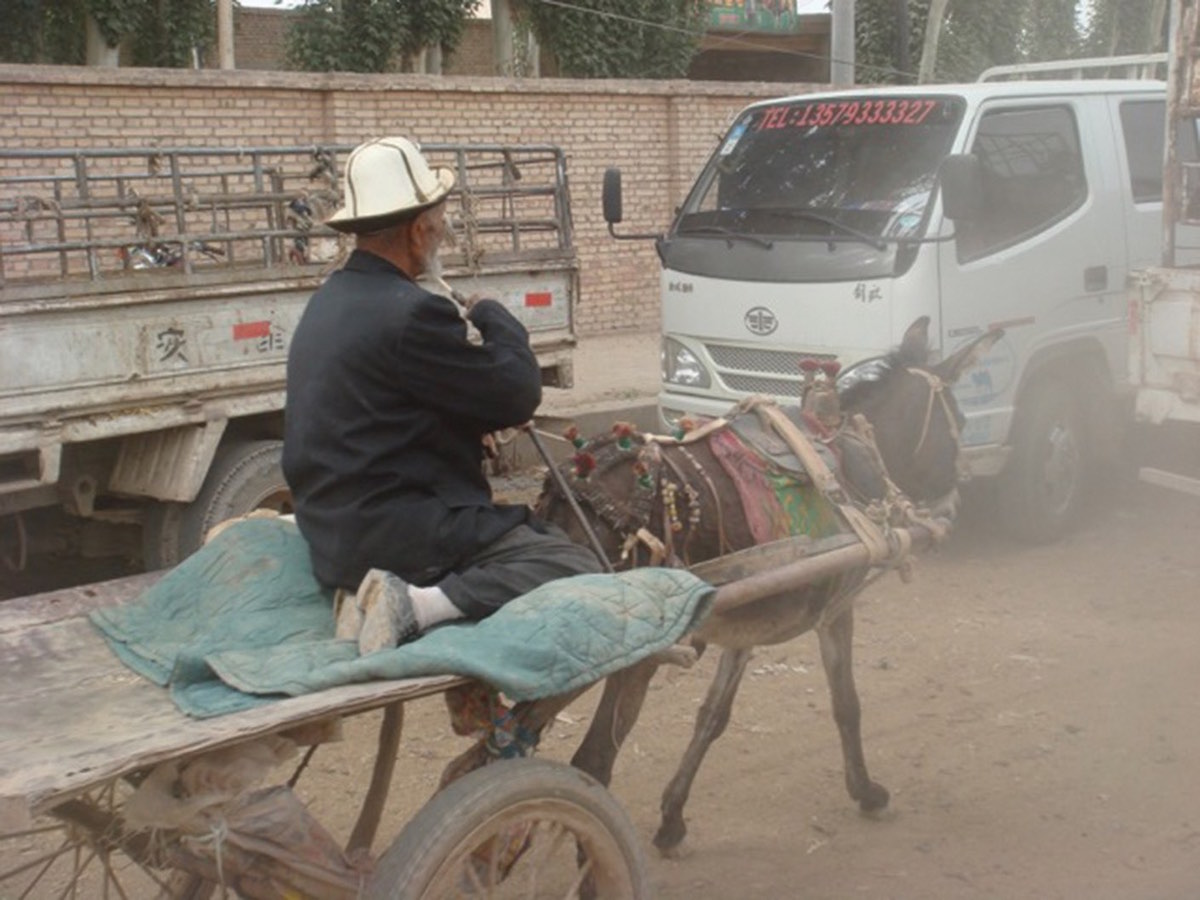
The livestock market outside Kashgar, China, sits on the ancient Silk Road. Donkeys and mules are bought and sold to transport other animals purchased for meat. The sure-footed animals can deliver food where no trucks or cars can pass.
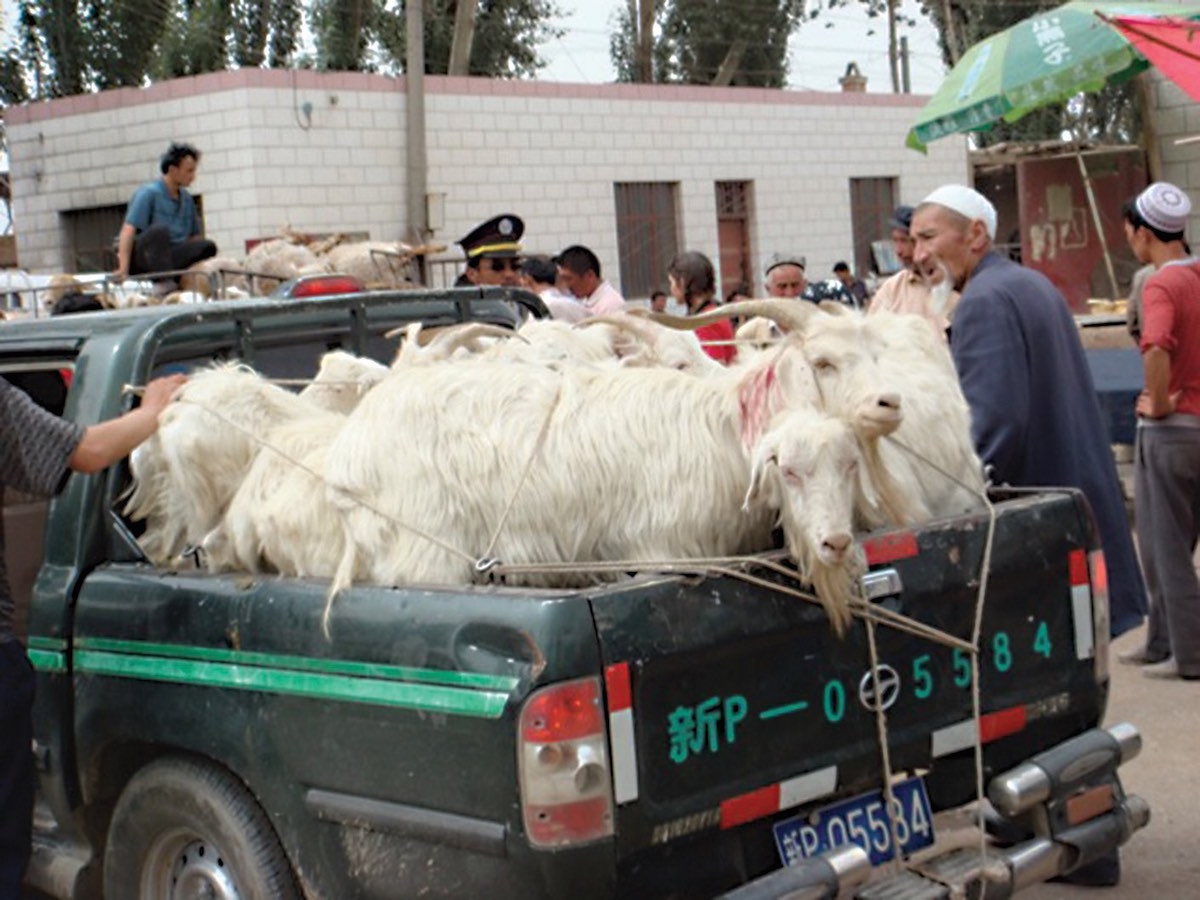
Gradually, gas-powered vehicles are replacing the donkeys, able to take dozens of animals at one time from the market to local slaughterhouses.
Some parts of the world that primarily use draft animals for food transport are the same places that record the oldest evidence of livestock domestication. The American Museum of Natural History reports that cattle and equids were domesticated for draft use between 6,000 and 8,000 years ago in what is now Central Asia, Pakistan and the Middle East. According to the Food and Agriculture Organization (FAO) of the United Nations, traditional draft livestock systems in these regions now exist in parallel with a growing turn to industrial farming in today’s globalized economy.
The transition to industrial farming in the early 20th century in the U.S. and Europe replaced animal traction with tractors. But today, in regions that continue to use animal labor, the same transition may merit further consideration due to the role fossil fuels play in climate change. While this shift in attitude may stall transition from animal to engine in some parts of the world, the transition from animal to machine labor could still happen, but the machines may run on different fuels.
Food Movers: Behind the Wheel
Annette Womack gets to work at 7 a.m. and clocks in at the Giant Food distribution center in Jessup, Maryland.
Thanks to her seniority with the company — she’s worked for Giant Food for 21 years — she’s got first pick of the daily delivery routes. She chooses a long round trip to Virginia, her home state, and heads out to check her rig.
Womack is one of the people behind the scenes of the nation’s food supply chain. Without her and all the folks driving those ubiquitous 18-wheelers moving food from farm to distribution center to store, grocery shelves would be depleted within a couple of days.
Womack is a petite blonde, with a snappy southern twang and a sweet-as-pie disposition. When she first started driving 30 years ago, her tractor (the cab part of a tractor-trailer truck) had to be specially fitted with blocks velcroed to the pedals to ensure her feet could reach them.
While the cabs are more accommodating now than when she first hit the road — thanks to reachable pedals, air conditioning and computers that track routes, drive times and inventory — some things have gotten worse: namely, traffic.
“There is no sweet spot anymore,” Womack says. “I get it in the morning, and then I get it in the afternoon. I do a whole lot of sitting. Patience is a virtue.” With all the traffic comes a lot of other frustrated drivers. But Womack looks for the good in those sharing her roads. “When one person out of 20 waves when you let them over, then that makes up for all the ones who just took the space” — i.e., cut her off — “without waiting to be invited.”
Read more about Annette and her “sister” drivers.
Womack is one of the top drivers in an industry where just 6 percent of drivers are women. She’s been driving for 30 years and was named Maryland Truck Driver of the Year in 2015, the first time a woman took home that award in the 80-year history of the Maryland Motor Truck Association.
Her unflinching commitment to safety is one of the things Womack is known for. At Giant Food, where the company makes about 1,100 deliveries per week and drivers cover more than 11 million miles per year, she trains new drivers in the art of navigating narrow urban streets in and around Washington, D.C., and Baltimore.
“It’s really overwhelming,” she admits. Low-hanging branches on tree-lined D.C. streets may offer shade to pedestrians, but they’re perilous for truckers. “We have to worry about what I call ‘can-opening’ the top of a trailer because the limbs are too low,” she says. “Sometimes people give standing ovations in cities because they’ll stand there and watch you maneuver your trailer into a hole with about two inches on each side. You just want to give yourself a pat on the back because you can’t believe you did it.”
To help new drivers, Womack took it upon herself to write a route book for all 169 Giant Food stores, complete with diagrams, maps and information about the most efficient ways to reach the stores and how to get into tight loading zones. “It took hundreds and hundreds of hours, pasting and cutting the old-school way, with toothpicks and glue and little bitty arrows,” she says. “But it’s just about published, and I’m so excited for the new folks to use it.”
As a transporter of food products, Womack is also vigilant about her cargo. When she’s driving a refrigerated trailer — aka, a “reefer” — she checks and double-checks the temperature settings, ensuring she has a well-functioning refrigerator and enough fuel to keep it cold for the duration of the trip.
“You need that temperature to be at 35 degrees, and you need that refrigerator to work properly,” she says. “If it doesn’t, you can lose $40,000 worth of merchandise,” a catastrophe Womack has never experienced in her 1.7-million-mile career.
The importance she places on safety extends to those with whom she shares the road. When driving in the rain and snow, she takes it extra slow. “If you take it for granted,” she says, “things happen.” More than once she has stopped to lend a hand. One time, a young couple driving a big U-Haul truck had pulled to the side of the road, the husband signaling for help because his brakes were on fire, a result of so much stopping in heavy traffic.
“I pulled up behind them and grabbed the fire extinguisher and put out the fire,” she recalls. “And then I got back in my truck and went on my way.” Giant Food recognized Womack for that act of service, just one in a long career with many such stories. “We can help people,” she says. “As drivers, we can do more.”
She knows the important role truckers play in ensuring that fresh foods and other goods are available to American shoppers when and where they want them. Womack and other drivers doing daily deliveries for Giant Food are “local” drivers, beginning and ending their shifts each day at their home domicile (the place where the trailers sleep at night). Other truckers are out on the road for days and weeks at a time, bringing things like produce from California to Giant’s Maryland distribution centers.
“They’re the meat and bones of getting whatever you want to your house,” she says. “If one day the big trucks stop rolling for two days, we’ll all be hurting.”
Eleven hours after it began, with a trip to Virginia and back completed, Womack heads home for the evening. Then it’s back tomorrow to hit the road again.
Food Movers: The Secret Evolution of the Pizza Box
No other paper product evokes such hunger. The warm feeling of a pizza box on your lap as you copilot the family car makes anticipation peak for most 10-year-olds.
The mere sight of one — or even better, a stack of boxes — hints at an impending celebration. It may be the only piece of cardboard that makes a mouth water. The pizza box is one of those everyday items that seems ever unchanged, a constant in food transportation. But its technology has quietly evolved while most of us have remained distracted by the pie protected within. Upon closer inspection, the pizza box reveals an unseen story of the sometimes conflicting relationship between a package and the food it contains.
Ordering Out Is In
Although pizza boxes didn’t become mainstream until a decade after World War II, early reports of the use of pizza boxes go back to the 1930s. Prior to that, flat paper bags served as the first transportation vessels for American pizzas, like the paper that wrapped around their Italian counterparts. Back in Italy, a pizza was much smaller than it is in most of the world today — about the size of a tortilla — because it was intended for consumption by a single person. It was a street food consumed by peasants and never needed much in the way of packaging. Pizza’s move to America in the early 20th century, brought by a huge influx in Italian immigrants, greatly expanded the food’s market and led to a need for larger packaging.
The postwar boom of the 1950s convinced many Americans to move from urban areas to the suburbs, where they learned to appreciate the growing convenience-food industry. Frozen TV dinners and Chinese takeout began as a novelty but soon became part of families’ weekly dinner routine. The shape and customizability of pizza made it a perfect addition to the mobile food trend. As pizzeria orders increased, so did the need to stack multiple pies. The solution required ditching the flat paper bag in favor of a more rigid container. Early examples began as modified bakery boxes but came into their own as paperboard pizza boxes. This material, still in use today, is made from compressed paper about as thick as cardstock.
While this design does a decent job of housing the pizza as it travels from point A to point B, it has some shortcomings. First, the printing on these boxes is rather simplistic and inaccurate. Printer rollers don’t get much cushioning from thin paperboard, so ink tends to smudge. Second, and functionally more important, the box’s walls tend to buckle and gap, even without a pizza inside. Just imagine what happens when the box is loaded with a hot, steaming pie. Add to that the lack of structural integrity inherent in thin paperboard: It doesn’t take much weight to collapse the lid, pushing it into direct contact with the pizza itself. (You’ve probably seen those tiny, white plastic “dollhouse tables” inside the box — that’s the Package Saver, invented by Long Islander Carmela Vitale in the mid-1980s. The box wasn’t good enough on its own; it needed some support to get the job done.)

THE PACKAGE SAVER
was invented and patented by Carmela Vitale, whose device has saved the molten toppings of countless pizzas since 1985.

The GreenBox
It might look like a standard corrugated pizza box, but the GreenBox is designed to break down for two secondary uses. The lid has a pair of crossed perforations that allow it to transform into four plates. When you’ve had your fill, the base folds over itself to create a low-profile take-out container for your leftovers.

Corrugation Nation
By the late 1960s, the American pizza industry shifted from urban Italian communities to the suburbs. That meant more pizza being made for more customers — and most of it was being delivered. But the paper industry was slow to respond to demands for a stronger container. It took a little company from Michigan called Dominos to convince their box supplier to develop a product made of corrugated paper.
In his autobiography, “Pizza Tiger,” Domino’s founder Tom Monaghan writes about developing a corrugated pizza container with a Detroit-based company called Triad. Corrugated paper is composed of a flat liner and a fluted medium. The latter is a wavy sheet of paper affixed to the flat liner with food-safe glue. Besides enhanced strength, corrugation also enhances insulation to keep the pizza hotter longer.
The Modern Box
The result is the box you know best — it’s thicker and stronger than its paperboard predecessor and always need the little plastic dollhouse table. As a bonus, images print more sharply on corrugated than on paperboard because the corrugation provides cushioning for the printing rolls.
Alas, the trouble with insulation is that it leads to soggy crust. The steam that keeps the pizza hot leads to its downfall. The sad truth is that most consumers have grown accustomed to this tradeoff — but that doesn’t stop inventors from trying to solve the problem. One novel approach enables the offending steam to escape. A corrugated paper company in India called Shree Krishna Packaging invented Ventit, a box with indirect ports that exhaust steam without losing heat. At trade shows, the company demonstrates its ingenious design by holding a lit incense stick inside the box. Viewers can see the smoke exit the box without the implementation of direct ports.
In a 2007 study, the Institute of Chemical Technology in Mumbai confirmed the company’s claims that their design keeps food contents hotter than standard boxes. Blind taste tests by pizzeria customers back up these laboratory claims. But despite expressed consumer preferences for a box that would deliver the best pizza — even for a few more cents per box — food distributors are wary of the extra cost.

Ventit’s Breathing Pizza Box
Pizza boxes have always fought a battle between retaining heat and evicting moisture. This innovation uses indirect venting through the flutes of corrugated board to allow steam to escape while retaining more heat than the common pizza box. It’s currently available only in India and Dubai, but more smart pizza companies are bound to catch on.
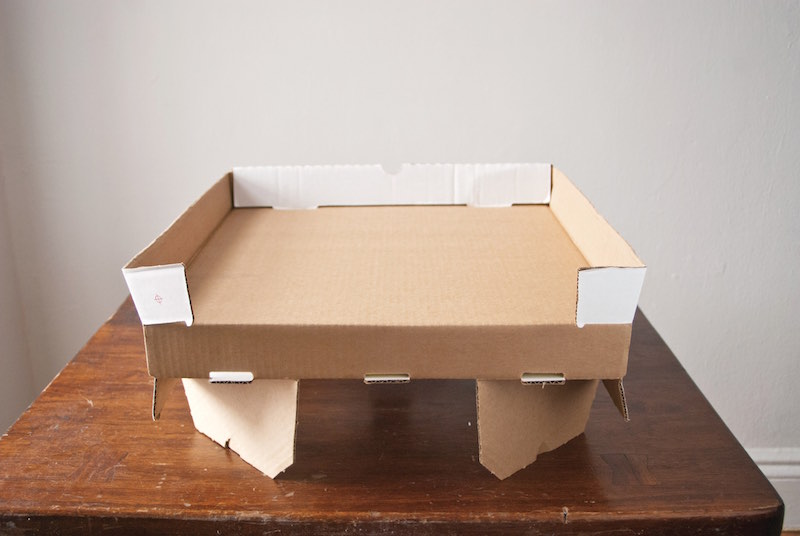
The Table Box
Leaving a pizza box on the kitchen table means losing valuable surface area — until now. The lid of the Table Box flips beneath the container and transforms the box base into a pedestal. With your pizza elevated six inches above the table, you have plenty of room for cups of pepper flakes, oregano and grated cheese.
B Flat
Old school pizzerias, particularly those in the northeastern U.S., tend to avoid change in fear of damaging their legacy. Corrugated pizza boxes are composed of a pair of flat paper liners sandwiching a wavy paper layer. The resulting peaks and valleys — or flutes — determine a box’s thickness and strength. Flutes are labeled with letters that correspond to the order in which they were brought to market and also happens to match their thickness in descending order.
“B flute” boxes are the most common in New York pizzerias, but newer “E flute” boxes are thinner and cost less to ship. They even print better than thicker “B flute” boxes because their flutes are closer together, providing a more even surface. Even with all these advantages, most pizzerias in the New York area are stuck on B.

Such is not the case in Italy, a place known for design that integrates art and technology. Although they’ve had pizza much longer than their American counterparts, the Italians have only recently adopted the practice of take-out and delivery. With a younger pizza box industry, Italian pizza box makers have newer equipment that enables more detailed printing. Their pizzas are also smaller and less hefty than their American cousins, alleviating the need for thick boxes.
This combination of thinner boxes and newer equipment has led to an explosion of beautiful artwork on pizza box lids in Italy. They look more like paintings than disposable food containers. It’s worth noting that these treasures reach the hand of the consumer after a purchase has been made, so the art comes as a surprise, rather than a tool for marketing.
Pizza boxes have long been a silent aspect of the pizza buying experience. We tend to overlook the box, relegating it to the dumpster as soon as the last slice disappears. All the while, innovators plug away at solutions to problems most of us don’t even realize exist. Only recently are consumers waking up to the fact that the vessel can be just as important at the food it holds.
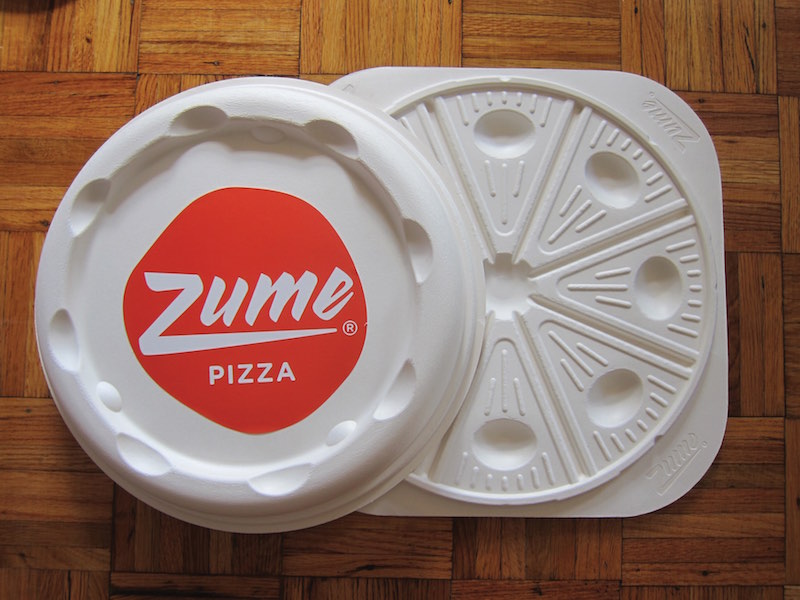
The Pizza Pod
Zume Pizza, a startup in Mountain View, Calif., has created the pizza box of the future. Their entire concept is futuristic, starting with the use of robots to make the pizza rather than temperamental humans. It only makes sense that they invented a pizza box to match. Dubbed the “Pizza Pod,” this odd container is made of compressed sugarcane fiber. It absorbs moisture, leaving the pizza dry and crispy. The shells are also completely biodegradable.

For more images from Scott Wiener’s collection of more than 1,300 pizza boxes, get his book, “Viva La Pizza.”

How the Bodega Gets the Banana
Like most New York City bodegas, Brooklyn’s 6th Ave. Deli is a practical place.
The narrow aisles in the bodega — the Big Apple term of endearment for the independently run corner stores that trade in a little of everything — are stocked with a dizzying display of the humdrum goods that shop owners know will sell: batteries, king-sized Butterfingers, garbage bags, potato chips, Powerball tickets and, sitting on the floor by the sandwich counter, a 40-pound case of bananas.
Counterman Eddie Gvd, who is originally from Yemen, often runs the register dressed in a tidy white apron. He will sell each of these ubiquitous yellow fruits for between 20 and 35 cents, lowering the price the closer their color deepens to fully brown. Since 6th Ave. Deli usually pays $20 to $25 per case, around 100 pieces of fruit, those bananas bring in just pennies of profit.
Gvd may be able to double the store’s money on candy bars, but he treats bananas like a super-market’s milk and eggs — as a loss leader, an item priced at or near cost in order to bring in buyers for the $1 bottles of Poland Spring that cost the bodega just 17 cents.
Plus for Gvd, selling freckled loosies on the counter for a quarter is just the way the bodega banana business works. The fellow who delivers the bananas to Gvd and a handful of bodega owners pays maybe $16 to $17 per case to a wholesaler, who bought them for a dollar or two less, and so on down the chain. “At least six to seven make a living off it,” says Gvd. “Everybody makes money.”
Gvd’s math isn’t that far off, considering the three-week journey each banana makes to his store. It is a produce paradox that while bananas might seem like an all-American fruit—ubiquitous and inexpensive, they beat out apples, oranges, grapes and strawberries in per capita consumption, according to the U.S. Department of Agriculture — they always come from somewhere else, like most New Yorkers.
It requires a host of middlemen — growers, exporters, cargo ship operators, importers, trucking companies, wholesale produce sellers and delivery drivers — to bring bananas up from the humid plantations that flourish in the equatorial zones of Central and South America. They travel by cargo ship, through the Panama Canal if they’re coming from parts of Columbia or Ecuador, then up the Atlantic Ocean to industrial harbors like the Port Newark–Elizabeth Marine Terminal in New Jersey, the largest commercial dock on the East Coast.
Then, after a stint in humble storage centers and ripening rooms hidden in the industrial edges of the Bronx, New Jersey or Long Island, the bananas take their final ride through the city. The majority of them will travel in an army of plain white box trucks with hand-stenciled names like D&J Tropical Produce or D&B Deli Man. They drive from store to store and double-park while their drivers hand over cases of quickly expiring fruit to bodega clerks like Gvd — beloved brands like Chiquita and Dole, but also bunches with lesser-known names and perhaps lower price tags, like El Manaba, Bonita, Bello, Royal Gold and a recent upstart called Selvatica.
Remarkably, no one throws a ticker tape parade to announce the arrival of these exotic fruits, and within 24 hours, most bananas change hands — sold for just three for a dollar, or 79 cents a pound — for the final time.
ARE BODEGAS AT RISK?
The first bodegas were small groceries opened by Puerto Ricans and Dominicans, hence the use of the Spanish term bodega, which refers to a small grocery. Today, according to Jack Sagen of Jetro Cash & Carry, a food-service supply store that caters to bodegas, the owners are now primarily Dominican, Mexican and Arab. Recently, a dramatic increase in rents has led to a decrease in bodegas in upper Manhattan, according to the New York City-based Bodega Association of the United States, but for now, they still play a necessary role in many other city neighborhoods where other food options remain scarce. They are still widely considered one of the most iconic components of New York City life.
THE BUSINESS OF BANANAS
That the banana is a truly a modern agricultural marvel — remarkably affordable, fast-ripening, found in pristine condition for sale every day, everywhere, all year long — is a logistics miracle that has largely gone unnoticed by most New Yorkers.
Few are more aware of this complicated yet largely invisible process than Joe Palumbo. For the past four decades, Palumbo has been peddling produce, the first two delivering to markets and bodegas, the second running Top Banana, a wholesaler in the South Bronx that sells Dole, Del Monte, Chiquita and Bonita bananas, as well as Selvatica plantains and dozens of other fruits and vegetables. He bought the business from the Strik family in 1995: “I was a customer,” he says. “I used to tease them that I’d buy it…then one day they called me and said they were ready.”
Top Banana — whose motto is still “Strik-ly the best” and whose old-fashioned logo features a gorilla chasing after a banana that just lost its top hat — is a ripener, a required stop for every banana before it arrives at a bodega, fruit stand or grocery store. What Palumbo purchased from the Striks wasn’t their delivery routes, distribution network or a banana brand — the family didn’t own any of those — but their warren of refrigeration rooms.
Bananas we buy in the United States are nearly all a resilient monocropped cultivar called the Cavendish. Multinational corporations grow this sturdy species on large plantations in tropical places like Guatemala, Costa Rica, Honduras, Nicaragua, Colombia and Ecuador. Even so, to get the bananas from there to here before they turn to mush, they must be picked bright green, bitter and hard. They are refrigerated during transport via shipping containers on cargo ships and then ripened only once they hit New York.
Though many varieties of bananas are cultivated for sale around the world — and many would argue that most are even better tasting than the Cavendish — the American export market is literally built around the breed because it withstands travel and, more importantly, is resistant to a disease that decimated the tastier Gros Michel cultivar in the 1950s.
Monoculture — where just one kind of plant is cultivated — makes the crop more susceptible to disease, but it also means the farming process is extremely efficient: Plants are the same height at harvest and they mature at the same rate, so fruits are all the same size when they’re separated into bunches and put into a box.
Under a seemingly endless canopy of Cavendish leaves, rubber-booted workers harvest the bunches by hand with machetes, removing enormous hanging stalks that each typically hold hundreds of bananas growing in semi-circular groups of 10 to 20 fruits. Together, they look like upside-down umbrellas. (The banana is actually a flowering plant, and its trunk is technically a stem. Botanically speaking, the banana fruit itself is one big berry.)
Growers like to refer to the groups as “hands” — the word banana is from an old Arabic term meaning “finger” — which are split up by plantation workers into what Americans fondly call bunches. Bunches are washed, tucked into a branded plastic bag perforated with holes to let in air and placed into a 40-pound cardboard case.
Fifty-four cases of bananas are loaded onto a pallet. Twenty pallets are forklifted into a refrigerated shipping container, and then those 40,000 pounds of bananas join hundreds more containers — loaded both with more bananas and some other exported goods — on a docked cargo ship readying for its journey to non-banana-growing countries.
All told, it takes just 18 to 21 days for those bananas to go from plantation to bodega, says Palumbo, a Brooklyn native who bears a faint resemblance to a young Rodney Dangerfield and shares his penchant for comedic delivery. That and his banana expertise have landed him recurring appearances on the “Produce Pete” segments on WNBC Channel 4 Television in New York, where he has talked about how to properly open a banana or use the inside of a banana peel to shine shoes.
THE BANANA’S TRIP FROM FARM TO BODEGA

One Con of Monoculture
Some who monitor the banana industry, and the recent outbreaks of a new strain of disease known as Race 4, worry that the Cavendish will soon join the Gros Michel in the annals of commercial extinction. Monoculture makes the crop more susceptible to pests or pathogens, which can easily be delivered via soil or on the clothes of a visitor. One suggested solution lies in polycropping of many banana breeds, an exciting thought for those seeking diverse banana flavors.
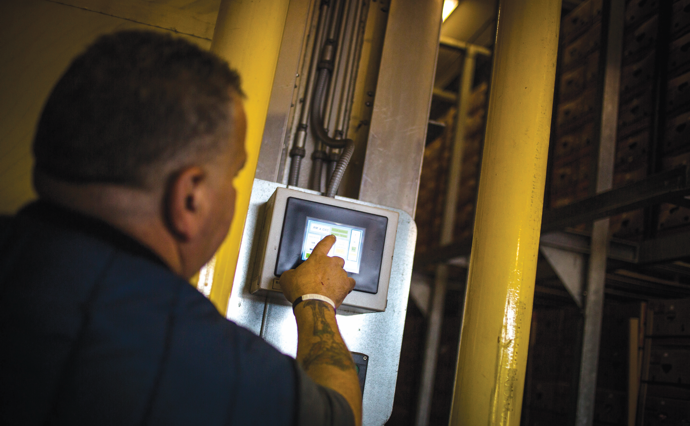

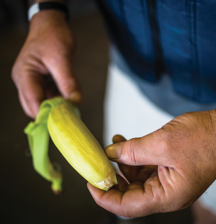
An employee checks the inside of a banana for ripeness.
WAKING THE CHILDREN
A century ago, says Palumbo, bananas were brought in on the stalk and stored in “banana cellars.” Refrigeration revolutionized the business, as did the invention of the pallet and forklift. Until about 30 years ago, most ripening systems were refrigerated rooms with fans to circulate air around the bananas.
“Bananas are like children,” says Palumbo. “They have to be put to bed, and they have to be woken up.”
Waking the banana has become more technologically advanced over time, though temperature still provides the basic alarm clock. Today’s newest systems — Top Banana built four in the past few years, in addition to maintaining 12 older models — feature computer-controlled, multi-story, pressurized ripening rooms with built-in airflow. Each room can hold two-and-a-half containers worth of bananas at a time.
Not only is the ripening process more consistent — and designed to ripen tens of thousands of bananas in about a week — it is now possible to remotely track humidity, delivery of ethylene gas and airflow through the boxes. Like the bags, the boxes are punctuated with holes to aid the process. The crew even knows the temperature of the fruits themselves, thanks to pulp thermometers that are plunged into the flesh. “I can even see it on my phone if I have to,” says Dan Imwalle, who has worked for Top Banana for eight years.
Even so, the skill and experience of a professional ripener like Imwalle is important, notes Palumbo. “No load is the same,” he says of the refrigerated shipping containers that arrive at his loading bays directly from the ports. Each shipment has bananas at different stages of ripening, and his employees can quickly determine how quickly they are ripening and what the sales forecasts are from day to day. They’ll sort the containers based on how quickly or slowly they need to get the bananas where they need to go.
“Each morning I spend 20 minutes touching, feeling, looking,” says Imwalle. He usually wears custom Top Banana RefrigiWear jackets to keep him warm inside the ripening rooms, which typically hover somewhere between 56 and 67 degrees, depending on the season.
Like most ripeners, Imwalle thinks about a banana in roughly seven stages, which are helpfully listed on a color-coded guide put out by each brand. Though the color for each stage differs slightly for each brand of banana — a fact that both amuses and frustrates Palumbo — the ripeners get them at one (very green) and sell them to markets or distributors somewhere between three and five (when they have some green, but also some yellow). American customers usually eat bananas between a four and a seven, when they are sweeter, have more nutrients and are just beginning to freckle.
In New York City — where Africans, Jamaicans, Indians and others eat off-the-boat green bananas, and banana bread takes care of the brown ones — it’s fair to say that every color is desired by someone. Groceries and big markets buy bananas on the greener side, because they know boxes will sit around their basements and bunches will sit around in their customers’ kitchens. Bodegas usually buy bananas on the turn from green to yellow, because their customers will eat them right away. The overall goal for a ripener or wholesaler? Not to have too many or too few of the colors at any given time.

MUSA
One of two or three genera in the family Musaceae; it includes bananas and plantains. Around 70 species of Musa are known, with a broad variety of uses.
Beyond 4011
Most Americans typically eat only one type of musa — the botanical genus of bananas, including plantains. The commercially sold varieties are all hybridized, cultivated members — but around the world the fruit is cultivated and sold in many flavors and forms, some now centuries old. There is a chunky banana cultivar called Latundan that has a tart-apple flavor, and red-skinned bananas with pink flesh. For those lucky enough to live in banana-growing regions, you can also still find the original wild musa, some creamy and sweet, some largely inedible thanks to their tiny size and large seeds.
THE BEATING HEART OF THE NYC FOOD SYSTEM
Palumbo has plenty of colleagues in the ripening business, many of them with more ripening rooms. They include EXP Group, a New Jersey company that imports Latin American produce including many bodega-bound bananas; J. Esposito & Sons, a 60-year-old company from Brooklyn whose third generation of owners just built new ripening rooms on Long Island; Yell-O-Gold, located just outside of Boston; and Banana Distributors of New York, just around the corner from Top Banana. Each ripener also gets its bananas from various ports in the Northeast. Many of Top Banana’s brands come through the port in Wilmington, Delaware, for example, while J. Esposito & Sons gets its bananas at one of the few working ports in Brooklyn, ripens them in Long Island, then trucks them back to the city.
What makes Top Banana unique is that it is the only ripener in Hunts Point Produce Market, the city’s 48-year-old, 113-acre cooperatively owned commercial distribution center in the South Bronx. Surrounded by yards of battered, barbed-wire-topped fencing, the produce market is like a city unto itself, albeit one that looks like an Eastern European post-war public housing project. Cars have to pay $5 to a security guard at a flank of tollbooths to enter, unless the driver has a pass. The complex consists of four long, low-slung, rectangular buildings that are essentially a series of refrigerators and truck bays. The market has its own private rail yard and, from the wee hours of the morning until midday seven days a week, a vast parking lot bustling with fast-moving tractor trailers.
The produce market, as well as smaller dedicated markets for seafood and meat, make up New York City’s 329-acre Hunts Point Food Distribution Center, the beating heart of the city’s food system. The produce market’s website says it generates $2.4 billion annual in sales with 10,000 employees from 55 countries and 49 states. That’s why Banana Distributors of New York is just around the corner on Drake Street, along with companies like Arugula King, Mr. Hand Truck, Jetro Cash & Carry and also Big Farm Wholesale, which is one of many smaller produce resellers who will buy bananas from a ripener and re-sell them for maybe $14 a case, up or down a few dollars depending on how much quickly browning fruit they are sitting on.
BANANA RIPENESS CHART
Bananas are ranked in stages of ripeness from from 1 (very green) to 7 (with many brown spots). Distributors and bodegas buy them between 3 and 5 and most American consumers eat them between 4 and 7 when they are sweeter and have more nutrients.

From Sea to Table: The Logistics of Sushi
These days serious locavores can enjoy an array of restaurants serving up regionally grown ingredients. But if you’ve got a hankering for sushi, not even proximity to an ocean will ensure that you’ll be dining on local fish. So how does all that fish get to us in time to safely eat raw?
Only a few decades ago sushi was considered an exotic cuisine, with many Americans afraid to try raw fish. Fast forward to 2016: Sushi restaurants are the norm across the country — even in most landlocked areas — and it’s not uncommon to see prepackaged sushi in the cold grocery cases, if not a dedicated chef on site making it to order.
The increase in interest has driven a rise in demand for getting fresh seafood from the sea to plate as quickly as possible. Fish, like humans, travels fastest by airplane if going a great distance. Throughout the country vendors like International Marine Products Inc., have hubs in coastal and landlocked cities, which provide those areas with daily shipments of fresh fish within hours of being caught and flash-frozen, or ship them to other places.
Now that vendors receive fish via airfreight and deliver them right to restaurants, gone are the days that restaurant staff must retrieve fish from the airport. Kaz Edwards, Chef de Cuisine at Uchi in Houston (a sister restaurant to Austin’s Uchi and Uchiko), recalls his biweekly trips to the airport years ago where he would pick up fish from the shipping area and have to deal with all the red tape associated with international shipping.
“If they hold it for any reason, it’s done. It’s over. You basically have to waste that whole box,” he says.
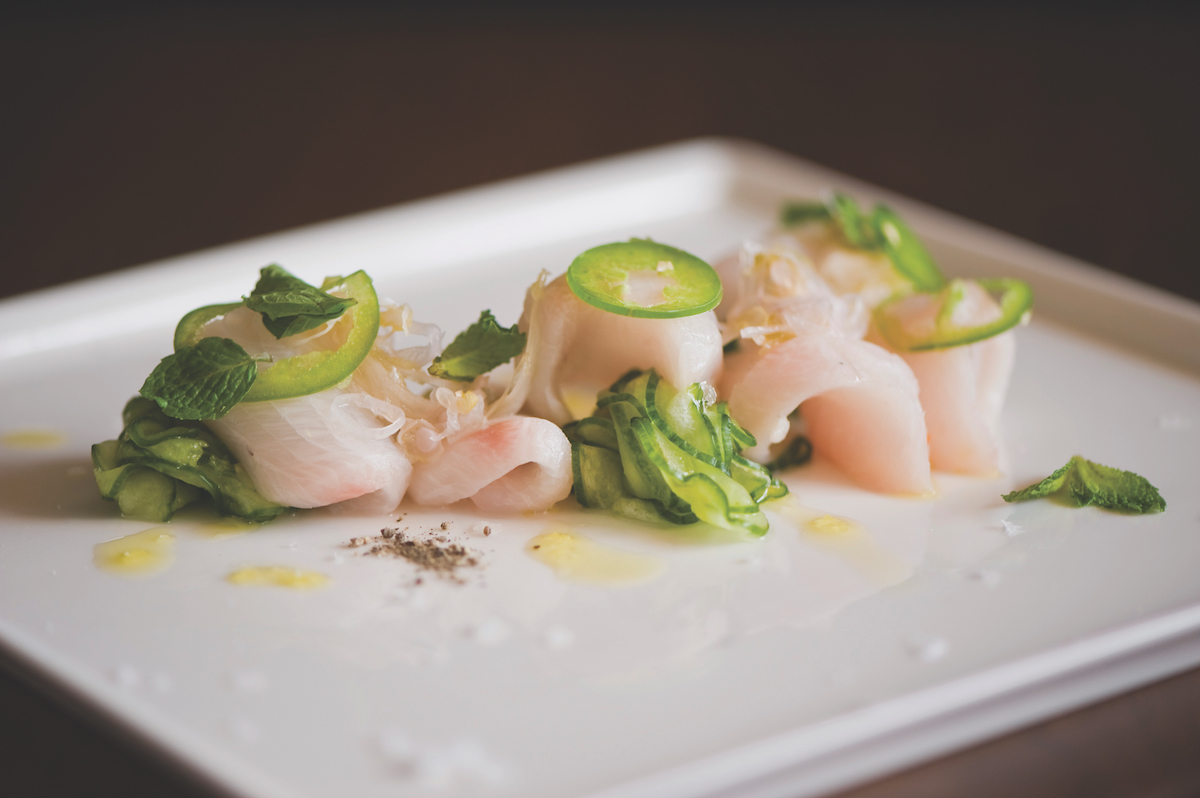
Cobia crudo at Uchi. Image by Rebecca Fondren.
Now the vendors take the hit when sushi fish is delayed, rather than the restaurants.
When fish travels by plane, the two most important details are time and how it is packaged. That gap between ocean and plate should be as small as possible, and, while there are some variances, less than 24 hours is the goal.
For sushi, extra care must be taken in how the fish is packed. The weight of regular ice results in bruising and degradation of the flesh, while dry ice is too extreme to keep fish at a consistent temperature. Edwards says that slicing through ice-packed fish causes it to break apart and gives it a shredded appearance, so whole fish carefully arranged with insulated ice packs is standard.
When it comes to fresh seafood, how it’s packaged for travel is just one piece of the puzzle. Read how a coalition of conservationists and seafood industry folks is working to give consumers a complete backstory of their catch of the day.
Sushi-grade is a term that indicates a higher quality and is the reassurance many consumers look for when ingesting raw seafood. Sushi-grade can also be used to describe the way a fish is killed and bleeds out — and the traditional iki jime practice is used on the U.S. east and west coasts but not in the Gulf of Mexico.
The FDA addresses all facets of seafood handling in the Hazard Analysis Critical Control Point (HACCP) Fish and Fishery Products Hazards and Controls Guidance report, but the reality is that there is no grading system to determine whether fish can be consumed raw. So one must assume a certain level of risk when eating sushi — there are no guarantees.
But the reputation of a restaurant hinges on the quality of their food, and most sushi chefs go to great lengths to ensure the freshest of fish for their customers.
Uchi’s policy is to remove items from the menu if the fish isn’t up to their standards, rather than try to procure it elsewhere at the last minute. The integrity of fish and how it is packaged is always important, but Edwards says that for sushi in particular it’s a key factor in determining whether or not it makes it onto the plate at all.
“It’s just the reality of what we do,” Edwards says.
Oroshi hocho tuna knife at the Tsukiji fishmarket. Image by Chris 73 via Creative Commons. Click image to enlarge.
The Third Wave for Food
Steve Case’s new book, The Third Wave, describes how a “third” wave of Internet innovation will dramatically change innovation in the coming decades.
According to Case, the first wave occurred between 1985 and 1999 when the Internet became almost ubiquitous. During the second wave, beginning in 2000 and ending in 2015, apps appeared, adding ecommerce and Internet entrepreneurs a platform for startups. Now, the rise of the third wave, as Case sees it, is the era of the Internet of Things when the Internet will bring connectivity to solve problems in widely disparate industrial sectors.
If Case is right, entrepreneurs interested in the food industry should look for opportunities to leverage connectivity in ways that will increase food output, optimize logistics, bring transparency, and improve our methods for ensuring the safety of our food supply. Look to developers of agricultural technology for a glimpse of what the third wave will offer: Driverless tractors that are smart and precise enough to better manage water resources, personalize growing in micro-acreage lots, and adjust to all the variables inherent in a changing climate. The cost of technology-driven devices will plummet, big data will make devices smarter, and we will figure out how to solve problems that are not that sexy, but that are fundamentally in need of improvement. Like the elimination of traffic and food recalls. If you think that we’re seeing the disruption of the food supply system now, look again. The crest of the third wave is hard to imagine from where you are today.
Disruption, Case says, will come from unexpected places, not necessarily from the labs at Google or Apple but instead from John Deere, Carghill, Mars, Walmart, and Costco. These companies are investing in innovation, aware that their industry is being disrupted and fearful of not wanting to miss out on the developments occurring in other industries that may or may not appear related to their businesses. Case says, “Corporate executives are too shortsighted to understand how technology that is disrupting a different industry might be adapted to do the same to their own.” Seems like an invitation to the traditional food industry players to look far and wide for new ideas and an enlightened understanding of their customers.
Case can take the view of collaboration too far. He fails to question the government’s increasing reach into our food system. The laws and regulations that limit innovation and creativity within the food system, such as some requirements outlined in the new Food and Safety Modernization Act, need to be reviewed with greater concern for flexibility and affordability for smaller producers and processors. With the coming wave of connectivity between things, government regulations may inhibit connectivity in ways that could keep food costs down and enable healthier food to go to more people. Case feels we should embrace the federal government’s role, accepting its expanding role as inevitable. Government regulation won’t go away, and there are circumstances when it’s a welcome barrier to food fraud. But shouldn’t we proceed with greater caution if we want our new food system to transform in unimaginable ways?
On Our Loading Dock: Recommendations from Food+City
What brain-tickling books, podcasts, movies or YouTube channels are you enjoying right now? Tweet us @foodcityorg and we’ll include some of the responses in our next issue.
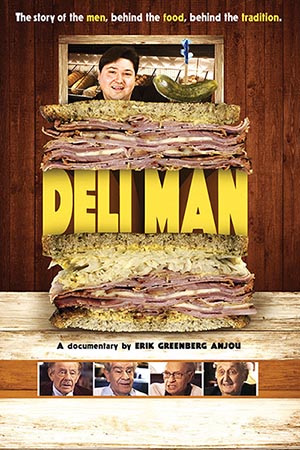
 DELI MAN
DELI MAN
This 2014 documentary by Eric Greenberg Anjou looks at the cultural forces that made the Jewish deli what it was in its heyday and how the remaining 150 delicatessens in the U.S. are trying to keep a uniquely American tradition alive.

 American Experience: Panama Canal
American Experience: Panama Canal
There’s no better way to comprehend the scale and importance of the construction of the Panama Canal than seeing some of the footage featured in this documentary. You can stream it for free online at pbs.org.
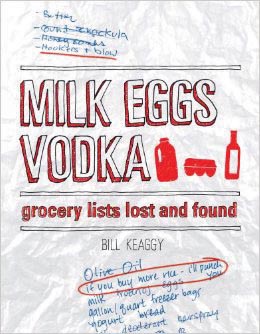
Milk Eggs Vodka
On keaggy.com, Bill Keaggy has been showing off his quirky collector’s habits since the early days of the Internet. Shoes shaped like rocks. Chairs that look sad. In the 2000s, he collected found grocery lists and turned them into a book that gives great insight into American buying (and note-taking) habits.
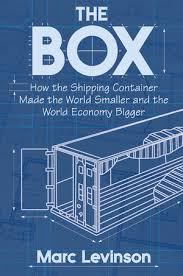
The Box
Think containers are boring? Let Marc Levinson persuade you otherwise. In his book, now in a second edition, he paints vivid scenes of the enormity, ubiquity, simplicity and technology of containerization. Through his eyes, it’s easy to see how the shipping container has shaped the world.

 Clover
Clover
Clover founder (and MIT engineer) Ayr Muir has found a way to make fast food sustainable. This chain of restaurants and food trucks in the Boston area has more than a dozen locations, uses seasonal produce that is 30 to 60 percent organic and doesn’t have a single freezer. Their menu of sandwiches and sides is based on what’s available seasonally, but they can still serve customers in an average of three and a half minutes.
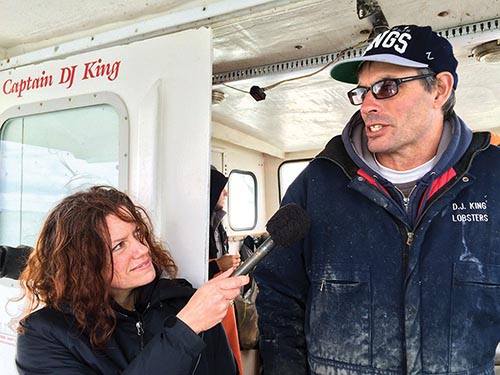

 GASTROPOD; 99 PERCENT INVISIBLE
GASTROPOD; 99 PERCENT INVISIBLE
Two excellent podcasts that touch on food in very different ways. Gastropod from Cynthia Graber (pictured, left) and Nicola Twilley focuses on food through the lens of history and science. Roman Mars (right) ventures into packaging and transportation in his design and architecture podcast, 99 Percent Invisible.

 The Container Guide
The Container Guide
This wacky idea from Food+City contributor Craig Cannon and friend Tim Hwang — a waterproof field guide to shipping containers — started as a Kickstarter campaign that drew more than $20,000 in pre-orders. The book helps you track ships and their containers in ports across America so you can add them to your life list, just like birders.
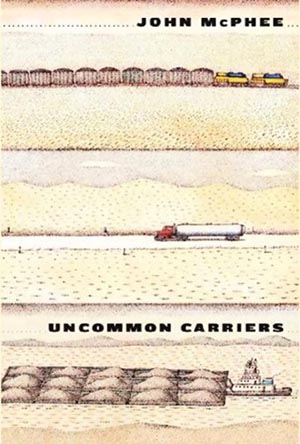
 Uncommon Carriers
Uncommon Carriers
John McPhee is known for going into the field to explain our world. Using his experience riding along with train engineers and barge pilots, he gives readers a close-up look at how these people move our stuff across the country.
Recipe: Tracking the Ingredients for Charlotte Russe in 1891
Fifty years after Austin was founded, a group of women at the Cumberland Presbyterian Church gathered recipes from the women in the community and published the city’s first cookbook.
The Austin History Center has one of three known copies of “Our Home Cookbook,” published in 1891. Editors Medora Thornton and Lucy Lanier Davis gathered more than 300 recipes from 87 women in the capital city. In 2015, the Austin History Center republished a facsimile copy called Austin’s First Cookbook, with accompanying historical essays about the original book, the women who owned it and the women who contributed the recipes. We asked Mike Miller, who led the research effort behind the book, to help us dissect one of the recipes for Charlotte Russe to learn more about how food moved in Texas in the 1890s.

Charlotte Russe
This is one of six Charlotte Russe recipes in the book. Who was Charlotte Russe? Common lore has it that French chef Marie-Antione Carême (1784–1833) created the dish, named after Princess Charlotte, the only daughter of George IV. The word “russe” is French for “Russian,” and though Carême came to know the popular princess while working for King George, she died in childbirth while he was working for the Russian Czar Alexander I, and he created this dish in her honor. Most recipes include the molded ladyfingers and custard or Bavarian Cream, such as this recipe, but a simpler version of sponge cake, whipped cream and a maraschino cherry is sometimes also called a Charlotte Russe.
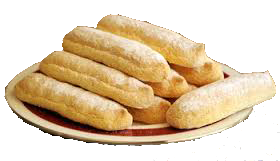
Sponge cake
Egg-heavy cakes were ubiquitous in this era. There are nine sponge cake recipes in this cookbook, including two different handwritten versions from the owner of the book. “Sponge” has long referred to the appearance of a cake lightened with whisked egg whites instead of yeast, and the batter is sometimes baked into elongated cakes called ladyfingers. Many claim sponges as a foundation of French cuisine, but Gervase Markham refers to sponge cake in her 1618 cookbook, The English Huswife, Containing the inward and outward Vertues Which ought to be in a Complete Woman.

Mrs. Littlefield
Alice Tiller Littlefield was the wife of George Littlefield, a Confederate officer who went on to become a banker. After the war, the Littlefields were one of the richest families in Austin, and although Alice Littlefield submitted 13 recipes to the book, including this one and another for Charlotte Russe, she didn’t do much cooking. According to her letters, she hired many cooks and didn’t keep them long. These recipes were likely theirs, though we don’t know the cooks’ names or backgrounds.
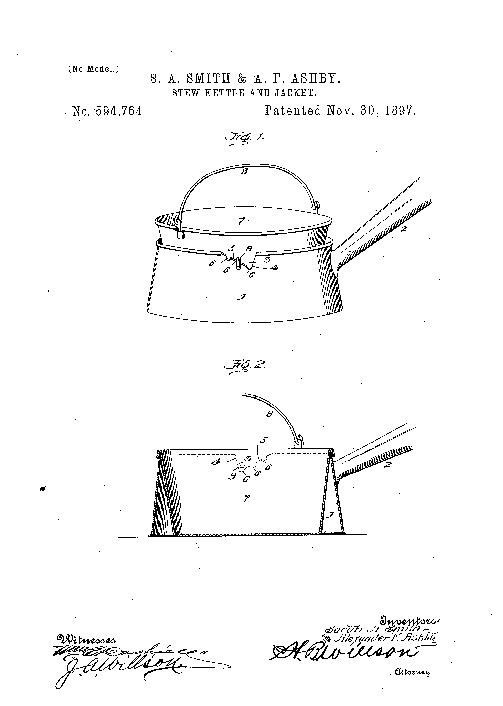
Farina kettle
Double boilers such as the farina kettle were used to heat milk, cream or other liquids without scorching them. “Farina” refers to the cereal grains that cooked so well using this utensil. This patent is from 1897, several years after the publication of this recipe, but farina kettles and other kitchen gadgets gained popularity after the industrial manufacturing boom that followed the Civil War. Then, railroads could move freely from north to south, and capital was again available for manufacturing.
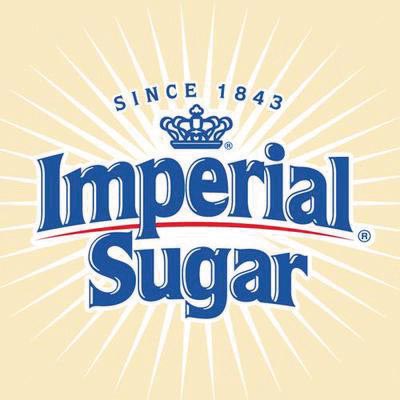
Sugar
The Texas sugar industry took off after the first refinery opened near Houston in 1879 on a plantation that had been growing sugarcane since 1843, according to food writer M.M. Pack. Eventually, that company became Imperial Sugar Company, which built a town called Sugar Land so its employees could have housing, schools and even retail outlets and medical care.

Cox’s gelatine
Cox was one of three well-known gelatin brands at the time. Before production was standardized, women had to make their own gelatin from animal bones, mostly horse and sometimes cattle. Gelatin from the New York-based Cox Gelatine Company [sic] was originally made in Scotland. The arrival of the railroad in Austin in 1871, and refrigerated rail cars about ten years later, made it much easier for Austinites to expand their ingredients list beyond what could be produced locally.
Food Movers: The Pallet Puzzle
One hundred years ago, on any dock, you could find longshoremen with sore muscles and calloused hands. Many of them would have spent days unloading each parcel by hand from the hull of a ship. Think “On the Waterfront,” but in color.
With the introduction of the pallet in the early 20th century, and with its wider use after World War II, what would have taken hours or even days with break bulk shipping — where each item is individually unloaded by hand — took a fraction of the time, allowing more goods to be moved more efficiently.
Pallets are platforms, moveable beds of sorts, for just about anything you’d want to ship. Key to their design is the ability of a forklift to pick up the pallet and whatever is sleeping on top of it and put it onto a train, truck, ship or airplane, or move it around a warehouse.
Today, more than 450 million pallets are manufactured each year. In the United States, 2 billion pallets pulse through the channels of the national supply chain — just like platelets through the human bloodstream — carrying vital cargo, often with little recognition of the role they play globally.
Pallets are so integral to the supply chain that they are subject to scrutiny in labs such as one at Virginia Tech, where researchers use stress machines and extreme conditions to test durability.
John Clarke spent 11 years at the Pallet Lab and now serves on its advisory board. He is also technical director at Nelson Company — a manufacturer and supplier of pallets. When it comes to materials, Clarke explains that while some industries favor plastic, steel or cardboard pallets, wooden pallets still dominate.
Ninety to 95 percent of U.S. pallets are made of wood, but even though wood offers affordability and reliability, the porous material risks bringing more than just cargo to its destination. Mold, bacteria and pests can quickly contaminate an already perilous food supply chain. To protect cargo, wood pallets must be sterilized by being heated to 133 degrees Fahrenheit.
“There aren’t many things as old as the pallet that are still made out of the same material as they were originally,” Clarke remarks. “That’s because wood is a very balanced material.” It’s stiff yet strong, cheap yet durable.
Although the 48-by-40-inch pallet is known as the “grocery pallet” for its common use in the food industry and beyond, there is no universal pallet size. Even grocery pallet dimensions are standardized only in the United States. Of the billions of pallets used in the world, there are thousands of sizes, materials and designs.
Some companies don’t own pallets at all. They rent them, creating “pools” of pallets. PECO and CHEP are two major pallet rental companies that appeared on the U.S. shipping logistics scene in the 1990s. As retail chains like Walmart and Costco gained more clout, they began mandating that products from manufacturers arrive on pallets instead of by clamp truck or in smaller loads. PECO and CHEP offered rental pallet services that would save manufacturers that had never used pallets the expense of buying, repairing and retrieving their own pallets.
Although it makes sense for some companies to own their own pallets and use them multiple times, Clarke says that many pallets are never returned to their owners. “You might have a custom pallet, but because of the weight and fuel costs, it’s just not economical to have it returned for ten dollars when you could replace it for five.”
As soon as a company finds a pallet strategy that works, changes in fuel or lumber costs can force another shift in the pallet puzzle.
In high-volume supply chains, all of this fuss over design, calculation and recalculation at the margin matters — especially for time-sensitive, perishable commodities like food. In 2010, Costco decided it would only accept block pallets, with forklift openings on all four sides instead of only two, in the case of skids. This eliminated the need to rotate the pallets if the side without openings was facing the forklift. If Costco unloads millions of pallets a year and saves just two seconds per pallet not having to rotate it, they will have saved hundreds of hours per year.
Pallets remain useful even after their days in the transportation system end. They might pile up outside a grocery store or end up at a special recycling or mulch grinding facility. Thanks to Pinterest, they might get upcycled into a photo frame or coffee table. Useful again, but this time, in full view.
PALLET JACK
another name for a hand-driven forklift that moves pallets; not unlike a dolly.
Food Movers: Chasing Maine Lobsters
It is 4:30 this morning, not a streak of light on the horizon in the eastern sky as the first full-throated growls of marine diesels come to life and begin their ghostly procession out into the inky pre-dawn blackness. Their halogen lights cast an eerie loom over their shimmering wakes.
After a long winter, the waters off the Maine coast have warmed to the point that lobsters have begun to crawl toward shore seeking protective shelters. There, they split their shells apart and struggle out of their protective armor, growing to a larger size in the process. Once their new shells have hardened within a few weeks, they are ravenously hungry. Millions of them scavenge along the bottoms of Maine’s intricate geography of bays, reaches, coves and creeks, waving their antennae to pick up scents that lead them to food, which lobstermen are only too happy to provide.
In 2014, Maine lobstermen harvested more than 124 million pounds of lobster worth close to half a billion dollars from Maine’s 5,000 miles of saltwater coastline. It takes the hands of thousands of workers on ships and shores to keep that supply chain moving.
Aboard the lobster boats departing the harbor, a lobsterman’s helper, called a sternman, is busy spearing salted herring from bait totes and stuffing this reeking repast into knitted bait bags. The captain rounds up, heads into the tide and comes alongside the first of the 200 to 300 lobster buoys he will visit today, all painted with his special colors. The captain gaffs the line with a boat hook and takes a wrap or two around the shivs of his hydraulic hauler, which catches the line and spins it into a pile at his feet.
Once the trap comes up over the rail, the sternman takes over. He or she — and there are many sternwomen and an increasing number of female captains — opens the top of the trap and pulls out lobsters and sundry other marine creatures that have crawled or wriggled into the wire enclosure looking for a free meal. The other creatures will go back overboard along with juvenile lobsters that have not reached the minimum or maximum size range that lobstermen are allowed to harvest. The sternman also checks for any eggs carried on a female lobster tail. Egg-bearing females, too, go back into the deep to release their eggs into swirling currents to keep the cycle of life — and Maine’s prodigious lobster economy — going.
Once back at the dock, the day’s catch is swung onto scales and sorted into crates, soon to be loaded into trucks en route to tens of thousands of restaurants, cruise ships and lobster shacks. Clearly, one of America’s few successfully managed fisheries is providing benefits to fishermen and foodies alike.
Food Movers: Paper or Plastic?
There was a time in our country’s history when farm-to-table wasn’t a trend, it was a necessity — especially when it came to dairy consumption.
If a family wanted milk, that milk came straight from the family’s cow and had to be consumed or turned into butter or cheese on milking day. Otherwise, it would spoil.
As farms and cities got bigger and fewer people kept their own cows, delivering fresh dairy became the milkman’s job. But the new process was far from perfect: Hand-delivered bottles were heavy and needed to be returned and sterilized, and without refrigeration, milk would still go bad within a day. Another problem: Glass jugs break.
Legend holds that the inventor of the paper milk carton we know today dropped a glass jug one morning, sending milk and glass everywhere. In his frustration, John Van Wormer patented a paper milk carton that could be shipped flat and assembled as needed at the dairy. (Until this point, dairies used G.W. Maxwell’s earlier paper milk carton, which did not fold flat.)
Van Wormer’s early Pure-Pak milk cartons, patented in 1915, were made of paperboard and sealed with wax, which prevented the milk from saturating the paperboard. The gable-top closure helped maintain freshness during transport while eliminating the need for a cap. And unlike glass bottles, milk cartons were lightweight and disposable: They could travel farther and didn’t need to come back.
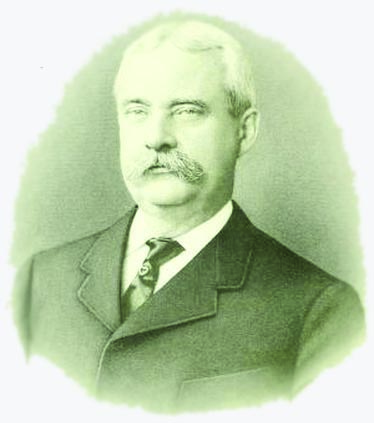
JOHN R. VAN WORMER
Although G.W. Maxwell gets credit for creating the gable-topped milk carton, toy factory owner John Van Wormer invented a carton that could fold flat, a revolutionary efficiency in the milk chain.

Patent drawing for milk container that could fold flat, invented by John R. Van Wormer.
While people had a hard time letting go of their beloved glass bottles, the coated carton slowly gained popularity, and as that transition began taking hold, so did refrigeration. By the late 1940s, electric refrigerators were in most American homes, small family-owned dairies were consolidating and the milkman was securing his Rockwellian role in the lives of American families and neighborhoods that soon became nostalgia.
While neither was necessarily dependent on the other, the milk carton, owes some of its success to advances in cold chain technology — a series of refrigerated tanks, trucks (“reefers”) — and storage units that ensure dairy and other perishables like meat and produce make it from the farm to the grocery store without spoiling.
Today, the value of cold chain markets that support perishable food distribution globally is estimated at around $250 billion. And while many countries lag in their cold chain facility development, the United States annually moves some three billion gallons of chilled milk through a cold chain so efficient that customers can buy refrigerated milk at nearly every gas station and corner store in the country.
As other countries expand their own cold chains, the U.S. cold chain industry stands to profit from rapid growth. According to the Global Cold Chain Alliance, refrigerated warehouse capacity around the world increased by 20 percent from 2012 to 2014, and three of the top five refrigerated warehouse operators are U.S. companies. But most of that milk is no longer being moved in Van Wormer’s carton: The milk carton may have solved the problem of breaking glass, but plastic jugs have overcome some shortcomings of cartons: They are less likely to leak and easier to re-seal.
According to Glen Harrington, director of manufacturing for the Borden Dairy Company, milk manufacturers were beginning to make their own gallon and half-gallon plastic jugs by the 1970s. When produced on a large scale, Harrington says, it’s more cost effective for dairy companies to make cartons in-house than it is to buy them.
Paperboard milk and cream cartons are still in use, but these days, they’re lined with polyethylene, a plastic used for food-safe packaging. In many countries outside the U.S., milk is sold unrefrigerated in shelf-stable cartons, like the ones used stateside for soups and broths. The milk is usually pasteurized at a higher temperature to extend shelf life. The downsides to this type of shelf-stable milk, according to Harrington, are that it typically costs more and doesn’t taste as good.
“We’ve got a good system,” says Harrington. “Why would we spend more to make it taste worse if we could just move it around fresh?”

PLASTIC MILK JUG
The design of plastic milk bottles evolved quickly in the mid-1960s, when the handled jug as we now know it was invented. The design not only saved dairies money, it encouraged customers to buy a gallon of milk at a time, a large amount compared to the smaller quantities sold outside the U.S.
The City that Feeds Mexico
The traffic jam to enter the world’s largest food market begins around 3 a.m. Trucks of all sizes stream in, heavy with oranges from Veracruz or chiles from Chihuahua, manned by drowsy drivers who left their hometowns the day before to make the trip.
Imported cargo arrives via shorter daily runs from the neighboring international airport, and still other lorries cross several countries via the Pan-American Highway to sell their goods at Mexico City’s Central de Abasto.

Open 365 days a year, this mega-market welcomes over 350,000 visitors daily. It formally employs 70,000 people and informally many more, including over 12,000 cartilleros — delivery men with dollies — each day. The market handles more than 30,000 tons of food daily, representing approximately 80 percent of all the food consumed in the metropolitan area and about 30 percent of the food consumed in the country.
 Feeding a city of 21 million inhabitants is no easy task, which is why this market has its own zip code, an independent governing body and even its own 700-man police force, which comes in handy considering more than $9 billion changes hands annually, mostly in cash. This makes Central de Abasto one of the largest economic centers of operations in the country, second only to the Mexican Stock Exchange.
Feeding a city of 21 million inhabitants is no easy task, which is why this market has its own zip code, an independent governing body and even its own 700-man police force, which comes in handy considering more than $9 billion changes hands annually, mostly in cash. This makes Central de Abasto one of the largest economic centers of operations in the country, second only to the Mexican Stock Exchange.
Designed by architect Abraham Zabludovsky, Central opened its doors in 1982 in Ixtapalapa, southeast of the city center. The project grew from necessity: The former wholesale market, La Merced, had overwhelmed the centro histórico with traffic and lacked the necessary infrastructure to deal with the growing demands of the city. Of the market’s eight major sectors, Central’s fruit and vegetable area is the largest. Forty interwoven aisles stretch 140 acres, with 64 interior loading docks. All in all, that’s the length of 105 football fields, each piled high with produce. Most aisles sell mayoreo, wholesale quantities of 5 kilos or more, but several aisles provide menudeo, smaller quantities for the general public.
Hangar-style sections outside boast even cheaper prices. The subasta (auction) area, closed to the general public, hosts the first step in the chain of sale as middlemen negotiate prices for full trucks of produce directly with providers. Giant arched metal roofs top the open-air flower and vegetable area, where growers sell a variety of fresh goods to other vendors or directly to the public in a morning frenzy. Both areas are picked clean of merchandise by 8 a.m.










The flow of goods throughout the market and to the points of distribution beyond its walls relies on the 12,000 cartilleros who rush through the corridors daily. Anyone with an ID and $1.20 can rent a dolly, but efficient and reliable cartilleros build a client base and make more money than beginners. It’s tough work, hauling up to half a ton of food in a single trip, navigating the jam-packed aisles during the busiest hours of 4 a.m. to 6 a.m. The elevated bridges connecting the corridor of bodegas to the hallways that lead to the outside parking lots provide a special challenge. Workers run quickly to gain momentum for the steep summit. They pause on top for a rest, then begin an equally difficult descent, with no brakes and a heavy load. A coded language of whistles fills the air and helps the cartilleros communicate with each other. “I’m on your left!” sounds different than “Move over, I’m coming through!”




